DEPARTMENT of PEDIATRICS
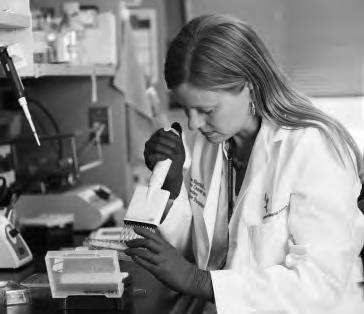


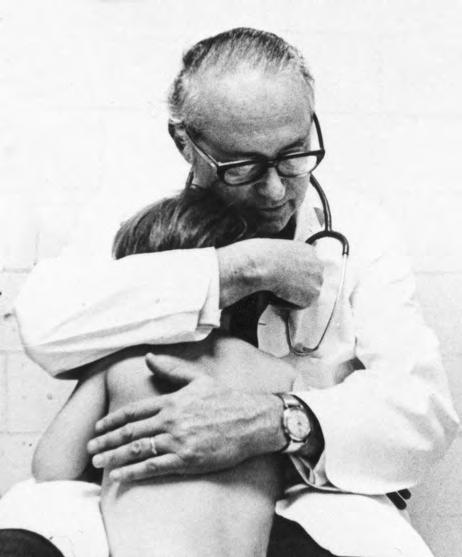
A HISTORY 1930 ~ 2018
UNIVERSITY OF COLORADO
Carla Carwile, Writer and Co-Editor
Roberta Siegel, MSW, Co-Editor and Project Manager
DEPARTMENT of PEDIATRICS A HISTORY 1930 ~ 2018
Department of Pediatrics
University of Colorado School of Medicine
A History: 1930–2018
The mission of Department of Pediatrics at the University of Colorado School of Medicine and Children’s Hospital Colorado is to improve the health of children through the provision of high-quality, coordinated programs of research, patient care, education, and advocacy.
Copyright © 2022, University of Colorado School of Medicine, Department of Pediatrics, 13123 East 16th Avenue, Aurora, CO 80045, (720) 777–5822
ON THE COVER
The Four Pillars (L-R)
• Research: Alisa Lee-Sherick, MD, Hematology/Oncology and Bone Marrow Transplantation
• Clinical: L. Joseph Butterfield, MD, and patient
• Education: Infectious Disease fellow Sarah Parker, MD, and medical student meet with faculty member Mary Glodé, MD
• Advocacy: C. Henry Kempe, MD, and patient
Cover photo credits: Tia Brayman, Children’s Hospital Colorado, Department of Pediatrics archives
Published by The Department of Pediatrics, University of Colorado School of Medicine, with support from Children’s Hospital Colorado. All rights reserved. No part of this publication may be reproduced or transmitted in any form or by any means, electronic or mechanical, without permission in writing from the publisher, except by a reviewer or author who wishes to quote brief passages or note a citation for inclusion in a printed or online publication or broadcast.
Design by EnZed Design, Denver, Colorado
Printed by Frederic Printing, Aurora, Colorado
Text is composed in ITC Franklin Gothic and Adobe Caslon Pro typeface families.
Printed on recycled paper
Crafted in the United States of America
First edition
“If you focus on what’s best for the children, no issue is insurmountable.”
RICHARD D. KRUGMAN, MD

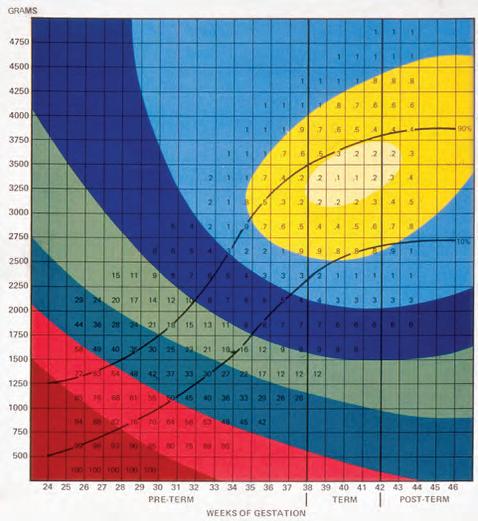

THE DEPARTMENT CHAIRS 7 Letter from the Chairs 7 Franklin Gengenbach, MD 8 Harry Gordon, MD 10 Robert Alway, MD 12 C. Henry Kempe, MD 14 Frederick Battaglia, MD 18 M. Douglas Jones, Jr., MD 22 Stephen Daniels, MD, PhD 26 Interim Chairs 30 Leadership 2018 32 PARTNERSHIPS 53 The Affiliation 54 Children’s Hospital Colorado 56 Denver Health 58 Fitzsimons Army Medical Center 60 National Jewish Health 62 Barbara Davis Center for Childhood Diabetes 63 A N EVOLVING CAMPUS 64 The 9th Avenue Campus 64 Today’s Campus 66 Children’s Hospital Colorado 68 TIMELINE 33 1930–1949 34 1950–1959 36 1960–1965 38 1966–1969 40 1970–1979 42 1980–1989 44 1990–1999 46 2000–2009 48 2010–2018 50 The Pediatrician/Patient Connection 52 4 DEPARTMENT OF PEDIATRICS

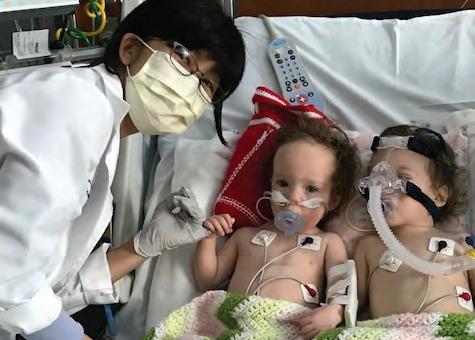
Education 147 From Student to Specialist 148 Clinical Faculty 151 Chief Residents 153 The Visionary Dr. Silver 155 Academic and Faculty Affairs 157 Journal Archives 160 Pediatrics and The Community, Harry Gordon, MD 160 Pediatrics and The State of Colorado, John Lichty, MD 168 TRIBUTES 171 Career Teaching Scholars 172 Endowed Chairs 174 Profiles 176 Full-time Faculty 176 Community Faculty 199 NEAR HORIZONS 203 A Children’s Hospital Colorado Perspective Acknowledgements 209 Sources & Resources 211 Index 213 THE FOUR PILLARS 69 Enterovirus D68: A Four Pillars Case Study 70 Clinical Service 73 Adolescent Medicine 74 Allergy and Immunology 76 Cardiology 78 Child Health Associate/Physician Assistant 80 Child Neurology 81 Critical Care Medicine 84 Developmental Biology 87 Developmental Pediatrics 88 Emergency Medicine 89 Endocrinology 91 Gastroenterology, Hepatology and Nutrition 93 General Academic Pediatrics 96 Genetics and Metabolism 97 Hematology, Oncology and Bone Marrow Transplantation 100 Infectious Diseases and Epidemiology 102 Neonatology 105 Nephrology 108 Nutrition 110 Pediatric Hospital Medicine 112 Pediatric Pulmonary and Sleep Medicine 114 Rheumatology 116 The Sie Center 118 Clinical Innovation 119 Measuring Growth 120 Advocacy 121 Colorado’s AAP Leadership 122 Legislative Milestones 125 The Kempe Center 126 Child Well-Being 127 Washington Take-Away 127 Cannabis 128 Immunizations 129 Helping Babies Breathe 130 Global Health 132 Research 133 Bench, Bedside and Beyond 134 Resistance to Research 139 Elevation 140 Nitric Oxide Therapy 142 ACCORDS 144 Informatics 145 Most-Cited Pediatric Research 146 5 DEPARTMENT OF PEDIATRICS TABLE of CONTENTS
When one surveys all the great unmet needs of children and adolescents in our country, one could well despair. But I do not! I see in this room an enormous number of devoted individuals who have made lifelong intellectual and emotional commitments to the service of children. All of us are united in wanting to give each child the very best start in life; our educational programs reflect this wish, as do our research efforts—all designed to benefit children the world over.
“But global concerns can overwhelm and immobilize the best of us. It is just not possible to worry about all the needs of all the children all the time. There lies frustration and total inaction, as well. For each of us, there must be only one patient at a time, and, generally, only one major research theme at a time. Thus, one keeps one’s sanity and does the very best possible job. At the same time, all of us who are devoting our professional lives to the cause of children must engage our minds and our hearts on their behalf, each one of us, and wherever we can: By the quality of our work, by being the child’s advocate in our towns and in our states, and by influencing national policy to our best ability.
“Do so with passion! Don’t worry about being labeled a do-gooder: Just do good! Only thus will our children receive their due share of all we have to give. I wish you Godspeed.”
C. HENRY KEMPE, MD
~ 1978 ~
“
FROM THE CHAIRS
Dear Faculty and Friends,
It is no coincidence that the University of Colorado Department of Pediatrics was established the same year—1930— as the American Academy of Pediatrics (AAP). While pediatrics had been recognized as a specialty the century prior, significant advances in physical and social medicine had increased awareness that children’s health needs were not only different from those of adults, but demanded new levels of innovation. Creating a care structure and system to address both effectively would require heightened collaboration, clinical service, advocacy, research, and education.
Here in Colorado, the commitment to pediatric specialization was already well evidenced. Franklin Gengenbach, MD, recognized as the first physician in the Centennial State to practice pediatric medicine exclusively, joined the University of Colorado Clinical Faculty in 1911, coming to what he termed “the far West” from Pennsylvania. When this department became a separate entity nearly two decades later, Gengenbach took the helm as its first chair. In 1943, he would be elected president of the AAP, becoming the first of five University of Colorado Department of Pediatrics members to hold the post, a distinction no other state shares at this time.
The beauty and spirit of the still-pioneering Rocky Mountain West has brought extraordinary talent and opportunity to our department over the past 88 years. Past and present faculty, residents, researchers, and executive leaders interviewed for this history have spoken of the unanticipated freedom they have felt in pursuing their work and of a degree of collaboration surpassing early expectations. National and international recognition underscores the significance of their contributions, and regional improvements in children’s health bring that proof home every day.
As chairs whose collective tenure totals half the span of the Department’s existence, we are honored to introduce this retrospective. May it serve as a tribute to those who have and continue to push health frontiers in the interest of children everywhere.
With warm regards,
M. Douglas Jones, Jr., MD Frederick Battaglia, MD Chair, 2006–Present Chair, 1990–2005 Chair, 1974–1988


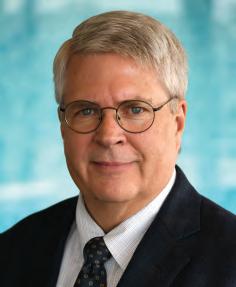 Stephen Daniels, MD, PhD
Stephen Daniels, MD, PhD
7 DEPARTMENT OF PEDIATRICS CHAIRS
Franklin Gengenbach, MD
Chair of the Department of Pediatrics
1930–1946
Slightly more than 1,700 miles separate Philadelphia and Denver. When Franklin Gengenbach, MD, made the journey here to begin practice in 1901, however, he was entering new territory professionally as well as geographically.

Writing Gengenbach’s obituary in 1955, William Wiley Jones, MD, reflected: “Shortly after he came to Denver, ‘the far West,’ he (Gengenbach) was the first physician to announce that he would specialize in ‘a new specialty,’ pediatrics—a term hardly known in Denver at that time—and the first pediatrician then between Omaha and the West Coast.
“From then to now, his influence in the Colorado pediatric world has been great, indeed. Denver now has some 58 pediatricians, all somewhat influenced by his high qualities as a practitioner, his teaching, and his example. Frank was gentle, kind, considerate, and very generous to all of his young colleagues and competitors, many of whom he trained in his own office.”
Gengenbach joined the University of Colorado Clinical Faculty in 1911, serving as a professor while continuing his busy private practice. Along with pediatric pioneer John Amesse, MD, he was a vital force in care development at The Children’s Hospital, where his white hair earned him the nickname “The Silver Fox.” An eager collaborator, he worked closely
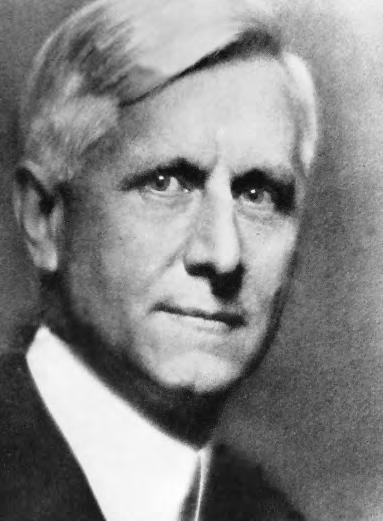
Gengenbach’s collegial style became legendary. While serving as Secretary of the American Medical Association’s Pediatric Section, he won a dinner wager by standing and introducing every section member by his full name.
Medical School University of Pennsylvania
School of Medicine, 1899
Internship Saint Christopher’s Hospital for Children, 1900
International Study Vienna, Austria; Berlin, Germany
Gengenbach became a national advocate for public health, as well as a champion for pediatrics. His strong stance on the need for quality oversight of prescription medications became part of Senate records in 1930.
8 DEPARTMENT OF PEDIATRICS CHAIRS
From the Gengenbach era: An ambulance transporting patients to University Hospital Robert Shikes Collection, University of Colorado Health Sciences Library
with Alfred Washburn’s Child Research Council in landmark longitudinal studies of child growth and development.
When the Department of Pediatrics was established in 1930, Gengenbach accepted the chairmanship. He would guide the department from its first days, through the financial struggles of the Great Depression and the physician shortages of World War II. He retired from the University of Colorado in 1946 as an Emeritus Professor of Pediatrics.

INFANT MORTALITY
In 1930, when the Department of Pediatrics was established, Colorado’s infant mortality rate was 91 deaths per 1,000 live births. In 2017, it was 6 per 1,000.
A Colleague Remembers Dr. Gengenbach
From an interview with Seymour Wheelock, MD, Pioneer in Adolescent Medicine, February 2007
“Dr. Gengenbach was the first pediatrician in town who would not see anybody over 12 years of age. He was not a scientific pediatrician, but there were not that many of them. He was an empiricist, like everybody else. They were guys that were interested in feeding children. They had very few things to work with, as you well know. He was a very affable, very compassionate, very caring guy, and he pushed what he was doing and it succeeded.”
–Seymour Wheelock, MD, First Director of Adolescent Medicine at The Children’s Hospital
91 DEATHS DEATHS
1930 6
One of the first physicians in the nation to be board certified in Pediatrics, Gengenbach was active in local, regional, and national board leadership throughout his career. He was on the first board of directors of the American Board of Pediatrics (ABP) and an ABP
Seymour Wheelock, MD
Dr. Wheelock’s relationship with The Children’s Hospital was not only that of a physician. He first visited the hospital as an infant in 1918 to be treated for colic. He returned at age 5 to have his tonsils removed. A graduate of Northwestern University School of Medicine, he returned to Denver and The Children’s Hospital in the late 1950s and helped establish the first inpatient facility for adolescents west of Chicago. Dr. Wheelock died in Taos in 2013.
examiner for many years. He also served on the advisory board at The Children’s Hospital, was Chief of Service at Colorado General Hospital, and a consultant at Denver General and National Jewish Hospitals.
“Of all intellectual friendships, none are so beautiful as those which subsist between old and ripe men and their younger brethren in science, art, or medicine. It is by these private friendships, even more than by public performances, that the tradition of sound thinking and great doing is perpetuated from age to age. Such was Frank Gengenbach.”
–William Wiley Jones, MD
9 DEPARTMENT OF PEDIATRICS CHAIRS
Gengenbach was a member of the American Pediatric Society, the old Central States Pediatric Society and the American Academy of Pediatrics (AAP). He served as President of the AAP from 1943–1944. 2017
Medical School Cornell University, 1929
Internship Pathology at Montefiore Hospital, New York, 1929; Pediatrics at New Haven Hospital, Connecticut, 1930
Residency Pediatrics at New Haven Hospital and New York Hospital, 1931
As a wise 13-year-old, New York native Harry Gordon knew decisively he wanted to be a pediatrician. Many years after, he would chuckle, “I discovered much later that most people didn’t settle upon their career goals so early.”
That early calling, however, would result in Gordon’s giving more than 42 years of care and contribution to the field of medicine and playing a pioneering role in the subspecialty of Perinatology. His interests and collaborative nature would lead him to strengthen all four of this Department of Pediatrics’ pillars—clinical care, advocacy, research, and education.
Gordon’s interest in research was sparked in 1930 as he interned at Montefiore Hospital in The Bronx. Decades later, Gordon recalled David Marine, MD, Montefiore’s director for laboratories advising him to seek out “what the resources are and what the problems are, and just study those.”
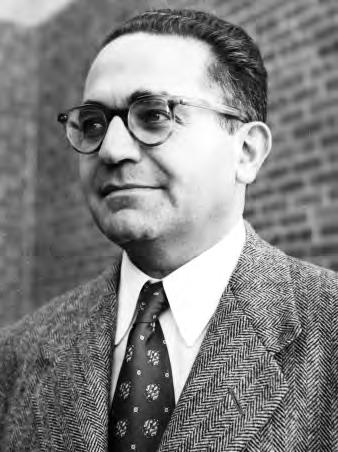
He would find that juncture of resources and problems at Cornell University, where he completed his residency and joined the faculty. Working closely with S. Z. Levine, MD, and other colleagues, Gordon launched what would become a seminal study into the feeding of pre-term babies. The group’s paper, “The metabolic basis for the individualized feeding of infants, premature and full-term,” was published by the Journal of Pediatrics in 1944. Their work would earn them the first American Academy of Pediatrics Borden Award for Nutritional Research.
While at Cornell, Gordon served as a senior specialist in maternal and child health with the U.S. Department of Labor’s Children’s Bureau. He joined the Army Medical Corps during World War II, rising to the rank of lieutenant colonel.
“Harry Gordon was that rare physician who combined the best qualities of scientist, teacher, healer, and humanitarian.”
–Dominick P. Purpura, Dean Albert Einstein College of Medicine
With the war over, Gordon looked for a new horizon. He found it in the Rockies with the invitation to join colleagues whose work he greatly respected, namely Ward Darley Jr., MD, dean of the School of Medicine; Franklin Gengenbach, MD, chair of the Department of Pediatrics; E. Stewart Taylor, chair of the Department of Obstetrics/Gynecology; and Florence Sabin, MD, who had returned to her native Colorado following retirement to help further the state’s medical services. In 1947, Gordon became a professor at the University of Colorado School of Medicine and the first full-time chair of the Department of Pediatrics.
Harry Gordon, MD
Chair of the Department of Pediatrics
1947–1952
10 DEPARTMENT OF PEDIATRICS CHAIRS
Darley shared with Gordon his vision for the School of Medicine’s becoming a leading research and teaching resource in service to the larger community—a most innovative perspective at the time. However, achieving it would require top talent. Gordon’s recruitment success would earn him the nickname “The Beacon.” Key figures included Heinz Herrmann, MD, director of the Laboratory of Chemical Embryology; Yale’s James Flett, MD, as chief of Pediatrics at Denver General Hospital; John Lichty, MD, associate professor of Pediatrics and pediatric consultant to the Colorado State Department of Health; and Lula Lubchenco, MD, with whom Gordon would collaborate to help establish the nation’s first perinatal teaching unit.
Stanley Cohen, PhD, co-awarded the Nobel Prize in Physiology or Medicine in 1986, cited Gordon in receiving the award: “I believe it was my ability to stomach-tube earthworms that convinced Dr. Harry Gordon to offer me my first job in the Pediatrics and Biochemistry Departments of the University of Colorado, where I was involved in metabolic studies of premature infants.”
Gordon would collaborate to help establish the nation’s first perinatal center. This collective energy sparked a strengthening of intern and residency programs, as well as research. These combined efforts realized Darley’s innovative vision for the School of Medicine to become a leading research and teaching resource in service to the larger community.
This collective energy sparked a strengthening of intern and residence programs, as well as research. Assisting Gordon in these efforts were full-time faculty Winona Campbell, MD, and LaMeta Dahl, MD, as well as numerous private pediatricians.
In 1952, Gordon returned to the East Coast, joining the staff of Johns Hopkins University and serving as pediatrician-in-chief at Sinai Hospital of Baltimore. A decade later, he moved to Albert Einstein College of Medicine, serving as dean from 1967 to 1970. He was a founding director of the Rose F. Kennedy Center at Einstein and led the organization until his retirement in 1972.
“I believe it was my ability to stomach-tube earthworms that convinced Dr. Harry Gordon to offer me my first job in the Pediatrics and Biochemistry Departments of the University of Colorado, where I was involved in metabolic studies of premature infants.”
–Stanley Cohen, PhD, Nobel Prize in Physiology or Medicine, 1986
The American Academy of Pediatrics’ Borden Award for Nutritional Research was one of many honors Gordon received during his career. He was also recognized by the American Pediatric Society for his service as president and by the National Association for Retarded Children for his career-long contributions to those with developmental disabilities. In 1985, the Harry H. Gordon School of the New York League for Early Learning was named in his honor. In 1987, the Harry H. Gordon, MD, Neonatal Intensive Care Unit was dedicated at the Bronx Municipal Hospital Center.

11 DEPARTMENT OF PEDIATRICS CHAIRS
Robert Alway, MD Chair of the Department of Pediatrics 1953–1955

World War II and the post-war boom changed Colorado dramatically, nearly doubling the Front Range population over two decades. War-fueled medical advances surged with new knowledge impacting imaging, infection control, blood usage, wound management, and more. This convergence—plus the growing demands of pediatric care, education, and research—would create a challenging tenure for chair Robert Alway.
Harry Gordon’s decision to return East in 1952 created a significant void for the University of Colorado Department of Pediatrics. John A. Lichty, MD, an esteemed cardiologist and faculty leader, agreed to serve as interim chair until a permanent chair was named. Despite Lichty’s capable service, physician historians Robert Shikes, MD, and Henry Claman, MD, call the transitional period a time of “some instability in the pediatric leadership.”
Medical School University of Minnesota
School of Medicine, 1940
Internship Jersey City Medical Center, 1939–40
Residency and Fellowship University of Minnesota, 1940–43
The usual challenges facing the Department, its faculty, and practice sites in the early 1950s were made infinitely more difficult by dual constraints: Finances and staffing. Statements made on behalf of the University’s Colorado General Hospital and The Children’s Hospital reflect the depth of the twin concerns.
Francis Manlove, MD, administrator of Colorado General Hospital and Psychopathic Hospital, wrote in 1953: “Colorado General has become the State’s emergency ward. It gets not only the sick and accident victims, but also the most serious polio cases, the bad burns, complicated infant cases, elderly people who require extensive cancer, brain, heart or fracture
treatment… The caseload and cost of care has soared, but the legal and moral responsibility is great; it must continue to render good care for those eligible.”
DeMoss Taliaferro, administrator of The Children’s Hospital, addressed the national nursing shortage in a Rocky Mountain News feature in 1951: “We are appealing to all registered nurses to apply for positions here. We don’t care if they’ve been retired for years. As long as they can work, if only part time, we’d appreciate the assistance.”
This was the environment Robert Alway, MD, entered when he accepted the position of departmental chair in 1952. Alway came to Colorado from California, where he was associate professor of Pediatrics at Stanford University. A graduate of the University of Minnesota School of Medicine, he had interned at Jersey City Medical Center prior to serving both his residency and fellowship at the University of Minnesota.
12 DEPARTMENT OF PEDIATRICS CHAIRS
It was Alway’s integrity in the face of peer and financial pressure that Lula Lubchenco, MD, cited in 1997 when interviewed by the American Academy of Pediatrics’ oral history project. She recalled a proposed multicenter study of the relationship between oxygen concentration levels and retrolental fibroplasia leading to blindness. The new research effort would build on a study coauthored by Lubchenco and Harry Gordon, MD, that appeared in the Bulletin of the Johns Hopkins Hospital in 1954 and on subsequent findings pointing to the detrimental effects of sustained usage, which would occur to some babies in a controlled study.
“So when the time came to join or not join this multicenter thing,” she stated, “there were several of us who said no. We were called unscientific, biased… you know, things that you would say about a person who would not want to test this. But we felt like there was enough reason not to test it.”
Lubchenco continued, “Bob Alway could see that going into this study—I’m interpreting from the past how he must have felt—that going into this multicenter study really meant new positions, it meant new money, it meant a lot to the department, which was struggling with funds anyway. He knew how I felt. It was almost on the eve of our joining this that I thought, ‘I can’t do it…I’ve seen what these babies look like, I followed them, and this is not something my conscience will let me do.’
Prior to the development of effective antibiotics, tuberculosis care was limited to postural positions, clean air, rest and sunlight, as this early 1940s photo of The Children’s Hospital TB sundeck reflects. Many pharmaceutical compounds were tested to combat the disease, but most proved too toxic for patients. The introduction of streptomycin—an antibiotic synthesized from a soil organism—in 1943 changed the course of care. At the forefront of the search for safe pediatric options, Chair Robert Alway served on the American Academy of Pediatrics’ Committee of the Section on Diseases of the Chest and authored several articles published in the journal Pediatrics.
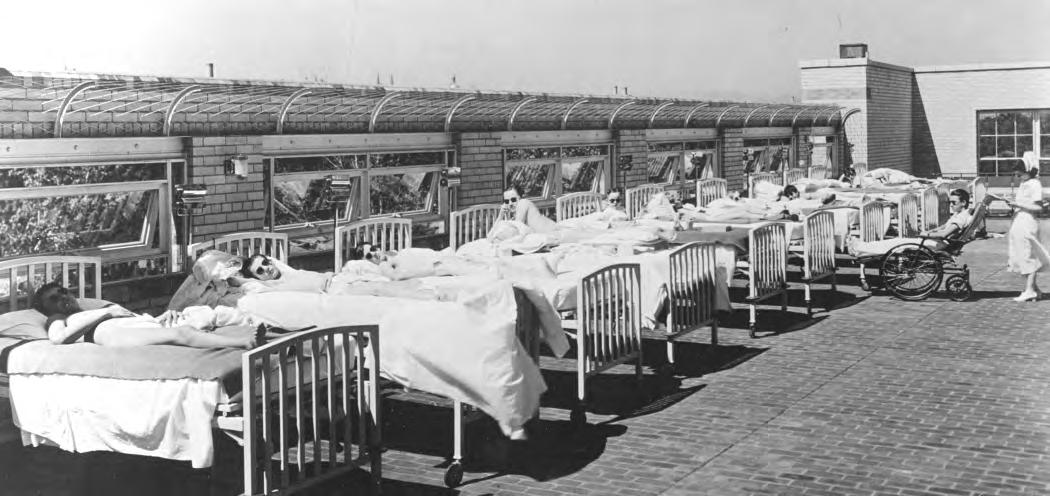
“So I went in, prepared to present all this to (Alway) … I was very anxious…and he said, ‘We don’t need to talk about this.’ ” Alway had spoken with his colleague Clement Smith, MD, at Boston Children’s and made the decision. “So we lost all this money and all this sort of stuff.”
Alway resigned the chairmanship in 1955 to return to Stanford University as a professor of Pediatrics. He became acting dean in 1957 and was confirmed as dean in 1958. He would be credited with ushering in a new era of achievement and contribution for Stanford Medical School, as well as the school’s relocation from San Francisco to a new complex in Palo Alto.
13 DEPARTMENT OF PEDIATRICS CHAIRS
Undergraduate University of California, 1942
Medical School University of California School of Medicine, 1945
Internship University of California School of Medicine/San Francisco, 1945–1946
Fellowship Children’s Hospital/San Francisco, 1946
Military U.S. Army Virology Research Program
(Dr. Joseph Smadel), 1946–1948
Residency Yale University School of Medicine, 1948–1949
C. Henry Kempe, MD, was only 34 when chosen to lead the University of Colorado School of Medicine Department of Pediatrics—the youngest chair ever to hold the position. His tenure would span one of the Department’s most intense and inspired eras of growth. Those who knew Kempe best drew a direct line between his experiences as a youth in pre-World War II Germany and the strategic thinking evident throughout his pediatric leadership.
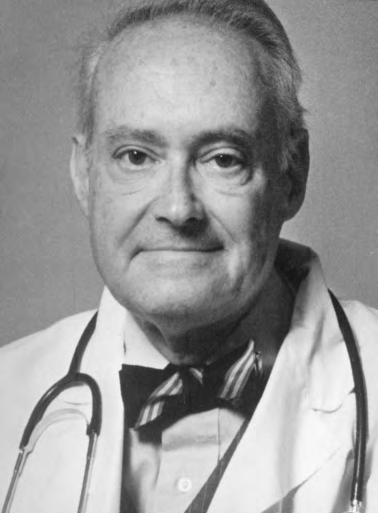
Karl Heinz Kempe was born in spring 1922 in Breslau, Germany—the city renamed Wrocław, Poland, as Europe was remapped following World War II. To Richard and Mary Kempe, the fact that their first son—whom they called Heinz—arrived on Passover and following two miscarriages was cause for great celebration. His older sister Paula would later say the adulation never ended, but that his childhood manner gave little clue to his later achievements. Interviewed by Annie Kempe for the biography A Good Knight for Children: C. Henry Kempe’s Quest to Protect the Abused Child, she remarked, “It’s surprising to see what he accomplished in his lifetime. Who would have expected so much from an average student. It just goes to show that you can never tell how children will turn out.”
Along with many other Jewish families, the Kempes made plans to leave Germany in the mid-1930s as tensions grew and thoughts turned to survival. Mary and Richard were fortunate to acquire out-of-country sponsorship documentation from friends who had relocated to Bolivia. Paula trained as a domestic servant to gain sponsorship from a wealthy family in England.
Heinz, age 15, convinced his parents he should remain in Germany, awaiting transport to Israel with his Jewish Youth Group. When he did not pass the health screening and his beloved mentor Dr. Landsberger was arrested by Nazi soldiers, the teen entered a local orphanage. From there, he was
Kempe’s first visit to the pediatric ward of Colorado General Hospital became a game changer when he encountered—and removed— the NO VISITORS ALLOWED sign. His daughter and biographer Annie Kempe writes, “One of the more senior nurses, shocked by this breach of rules, even by the new department chair, immediately said, “You can’t do that.” Henry quietly replied, “I just did.” The one-hour daily parental visitation was immediately changed to 24 hours a day, seven days a week. Kempe later noted, “Many of the nurses felt at the time that parents were ‘a pain’ and in the way.” The new rules led to an en masse resignation by head nurses. “That was my ‘welcome,’” he recalled, “they all quit.”
C. Henry Kempe, MD Chair of the Department of Pediatrics 1956–1973
14 DEPARTMENT OF PEDIATRICS CHAIRS
relocated to England on the Kindertransport, then on to the United States at age 17. Within three years, the young man now legally named C. Henry Kempe had learned to speak English, had received his Bachelor of Arts degree from the University of California at Berkeley, and was accepted into the University of California Medical School at San Francisco (UCSF).
Henry’s medical school connection with attending physician Edward Shaw, MD, sparked his lifelong interest in human virology. Polio had reached epidemic proportions, with more than 20,000 cases nationally, and Shaw—who later chaired the Department of Pediatrics at UCSF—was an expert in the disease. He enlisted Kempe in the University’s polio research efforts. Henry subsequently became part of the U.S. Army Virology Research Program with smallpox expert Joseph Smadel, MD, before beginning his residency at Yale University School of Medicine.

Kempe’s later contributions to the eradication of smallpox would earn him international regard.
It was Harry Gordon, MD—prior chair of the University of Colorado School of Medicine Department of Pediatrics and also a smallpox researcher—who encouraged Henry to come to Colorado. While acknowledging others considered the post “an academic graveyard for professors of Pediatrics,” he found the prospect challenging.
Kempe was twice nominated for the Nobel Prize—first for his contribution to the eradication of smallpox, and again for his identification of the battered-child syndrome. While the two areas of investigation seemed disparate to some, his peers saw a correlation. Brandt F. Steele, MD, one of Kempe’s coauthors for the seminal 1962 publication on child abuse and neglect, shared with an international gathering in 1987:
“Smallpox depended on the direct transmission of the virus from person to person, without any intervening host or reservoir of disease. It could be eliminated only by eliminating this person-to-person transmission. We see the possibility of an analogous situation in child abuse. It, too, is transmitted from person to person, from caregiver to child, through the experience of being neglected or abused in early life. The child learns in his early development the maladaptive patterns of parent-child interactions that form the basis for the repetition of various kinds of abuse. In order to prevent child abuse, we must deal with the person-to-person transmission.”
15 DEPARTMENT OF PEDIATRICS CHAIRS
U.S. Advisory Commission on Immunization, 1972
Amer and Kempe enjoyed a close personal and professional relationship throughout the latter’s tenure as chair. Marilyn Amer recalled “5:30 a.m. phone calls from Henry” being the norm as Kempe sought input and insights from his community-based pediatrician friend. Colleagues credit their candid conversations and shared commitment to education, clinical care, and advocacy as a major force in bridging the “gown/town” differences among pediatricians in private practice, at The Children’s Hospital, and the University.
In the 17 years he chaired the Department, Kempe was responsible for: Recruiting numerous physicians whose work would change the course of health care. Key hires included pediatrician and endocrinologist Henry Silver, MD, Kempe’s colleague from Yale, who joined the faculty in 1957. Silver created the Child Health Associate/Physician Assistant program and, with Loretta Ford, EdD, RN, the first Pediatric Nurse Practitioner Program. Scottish native Donough O’Brien, MD, FRCP, also a 1957 Department of Pediatrics arrival, established the Pediatric Microchemistry Laboratory. Connecting Colorado’s private pediatric community with the Department of Pediatrics faculty. Visiting the office of every Denver private pediatrician in Denver was a priority, and insights gained guided his chairmanship. During his tenure, Max Ginsburg, MD, became the first community pediatrician to be named a full clinical professor at the University of Colorado School of Medicine (1964).
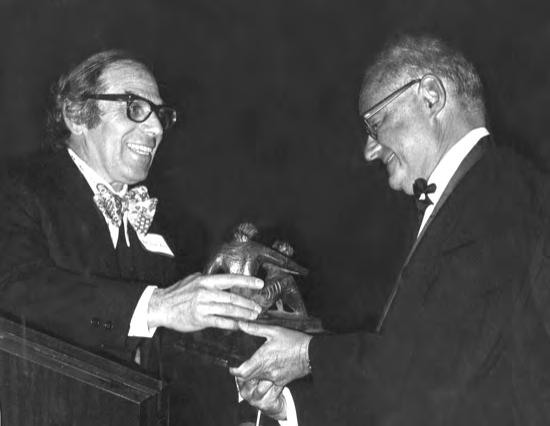
Bringing the reality of child abuse to the forefront of pediatric care. In 1962, he and Brandt Steele, MD, published the groundbreaking paper “The Battered Child Syndrome” in the Journal of the American Medical Association. Despite immense pushback from many in the medical community, he would persist in championing child protective action for the remainder of his life. The Kempe Center for the Prevention and Treatment of Child Abuse and Neglect, established in 1972, continues that work today.
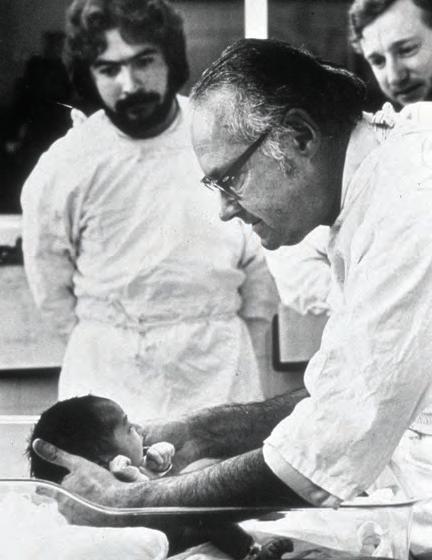 Jules Amer, MD, (left) and C. Henry Kempe, MD, (right) at the naming of the C. Henry Kempe Center for Investigative Pediatrics (later the Children’s Hospital Colorado Research Institute).
Jules Amer, MD, (left) and C. Henry Kempe, MD, (right) at the naming of the C. Henry Kempe Center for Investigative Pediatrics (later the Children’s Hospital Colorado Research Institute).
16 DEPARTMENT OF PEDIATRICS CHAIRS
Hawaii, a favorite travel destination for the Kempes, later became their retirement home. Kempe died in 1984 at the age of 61 in Hanauma Bay, having returned from a swim where he observed a rare fish he had sought for years. Close friends and family remarked on the sighting as a fitting closure for the life of a man forever on a quest.
Photo courtesy of the Kempe Family. All rights reserved.
Ruth Svibergson Kempe, MD
Hand in hand, the Kempe family has made strides for child protection
C. Henry Kempe, MD, and Ruth Kempe, MD, met during their residencies at Yale University, where, family legacy has it, they held hands while making rounds. After the couple’s relocation to Denver, she joined the University of Colorado School of Medicine Departments of Pediatrics and Psychiatry. When Colorado General Hospital formed its first child-protection team in 1958, Ruth was among the first team members.
The Kempes coauthored several books and shared in the creation of the National Center for the Prevention and Treatment of Child Abuse and Neglect, now the Kempe Center. Richard Krugman, MD, a protégé of C. Henry Kempe and past director of the Kempe Center, remembers her “as easygoing as Henry was energetic and driving. She had an extraordinary understanding of how best to treat abusive parents and the children. She listened and listened and listened.” Don Bross, PhD, JD, director of education and legal counsel for the Kempe Center, adds that she worked with hundreds of families. “She was quiet and soft-spoken and developed trust with the parents.”
The Kempes were parents to five daughters—Karin Kempe, MD, Annie Kempe, Miriam Seewald, Allison Kempe, MD, MPH, and Jennifer Kempe-Bierman, MD. The Kempe home was the setting for countless Department of Pediatrics social gatherings, with Ruth’s warm welcome a constant. Krugman recaps, “She nurtured generations of pediatric residents.”
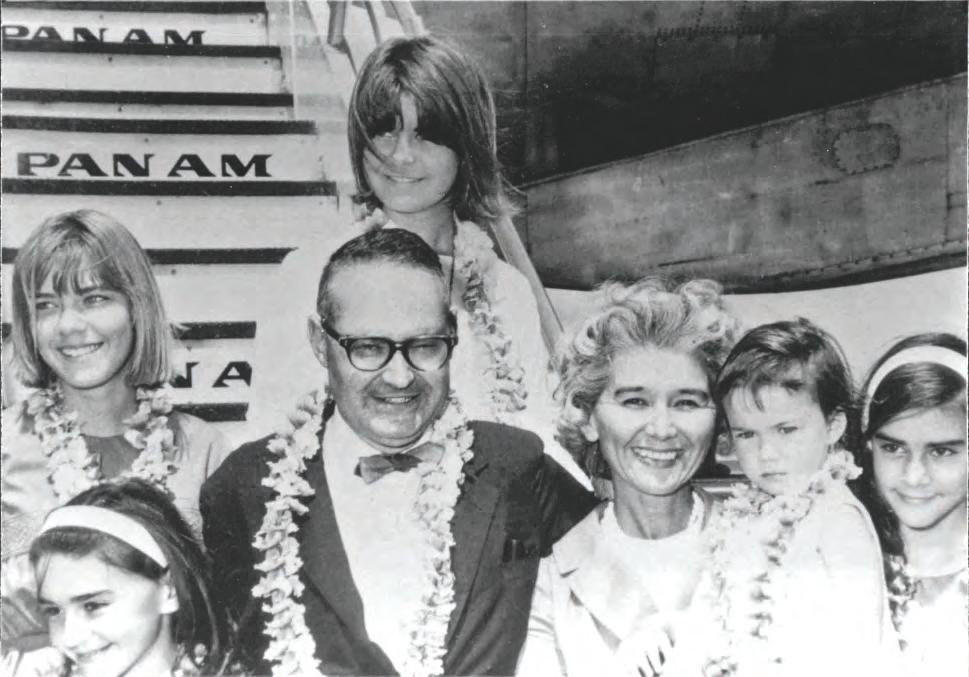
17 DEPARTMENT OF PEDIATRICS CHAIRS
Frederick Battaglia, MD
Chair of the Department of Pediatrics 1974–1988
In the early 1960s, pediatrician Frederick Battaglia, MD, was invited by obstetricians
E. Stewart Taylor, MD, and Paul Bruns, MD, to visit the University of Colorado School of Medicine (UCSOM). The call would prove both a pivotal point in Battaglia’s esteemed career and an extraordinary early example of interspecialty collaboration.
The timing was perfect. Taylor, chair of the Department of Obstetrics, and Bruns, professor and pioneer in perinatal medicine, had just garnered a large National Institutes of Health grant for studies of prematurity. Battaglia was at the forefront of fetal physiology research, having focused on it through three fellowships and published 16 studies by the end of his residency. His expertise would prove invaluable in establishing the lab and launching initial experiments.
“…in the East, everyone was saying, ‘You’re dead to academics if you go west.’ I took time off and went up to talk with Harry Gordon, who was then at Einstein, and Harry said to me, ‘Fred, when I was chair of pediatrics (1947–1952), Stewart Taylor and I shared an office.’ He said, ‘Whatever this man tells you, you can believe him.’ And he said, ‘It’s crazy to think that if you move west, your academic career is finished.’ ”
Undergraduate Cornell University, 1950–1953
Medical School Yale University, 1953–1957
Internship Johns Hopkins University, 1957–1959
Residency Johns Hopkins University, 1960–1962
Fellowships Public Health Service, University of Cambridge, England (Sir Philip Randle), 1958–1959; Macy Fellowship, Yale University (Dr. Donald Barron), 1959–1960; Public Health Service, Laboratory of Perinatal Physiology, San Juan, Puerto Rico, 1962–1964
After several two-week work-journeys west to support the Colorado team, Battaglia was asked to join the UCSOM faculty in 1965. He shared the details of the decision four decades years later when interviewed for the American Academy of Pediatrics
Oral History Project:
“So Stewart Taylor talked to Henry Kempe and said ‘We want to bring Fred out, and he wants an appointment in pediatrics,’ and that’s how I got to meet Henry. But the position was funded through obstetrics. I had a primary appointment academically in pediatrics, but the funding was in obstetrics. He (Taylor) was a very farsighted chairman.
Landmark Contributions
Gordon’s advice proved sound and Battaglia’s contributions surged. When data from acute fetal physiological studies appeared misleading, he championed innovative research using a model for studying fetal sheep undisturbed over long periods of time. He and Lula Lubchenco, MD, coauthored a landmark paper (1967) on the fundamental relationship of birth weight and gestational age to neonatal morbidity and mortality. By 1970, he had joined forces with Edgar Makowski, MD, (OB/GYN) and Giacomo Meschia, MD, (Physiology) to create the Division of Perinatal Medicine. The findings he and his colleagues made served as the basis for normal and intrauterine growth-restricted studies in humans.

18 DEPARTMENT OF PEDIATRICS CHAIRS
ON ROLE MODELS
From Dr. Battaglia’s American Academy of Pediatrics Oral History interview (2005)
“Harry Gordon was a role model to me. I always felt that Dr. Gordon was bigger than neonatology. He had such a broad vision of pediatrics and was so scholarly in how he had that vision… He was definitely way ahead of the time. And Don Barron, with whom I trained, and Phil Randle. Both played important roles in my life.
“Then there were people who were colleagues who taught me a great deal, André Hellegers and Giacomo Meschia, in different ways. André set up the Kennedy Institute of Ethics at Georgetown [University] and brought in an incredible array of scholars in every kind of discipline involving religion and ethics and humanities. He just was a very, very clear thinker in that field, and I don’t think OB/GYN has had anyone like him since.
“And, of course, Giacomo. You can’t work closely for 40 years with someone without learning an awful lot.” –Frederick
C. Battaglia, MD
When C. Henry Kempe, MD, resigned in 1974, Battaglia was named chair of the Department of Pediatrics. He remained at the helm until 1988, leading the Department through some of its most challenging times. Asked later which actions he deemed particularly important, he identified the Department’s restructuring for greater autonomy by subspecialty divisions. The Department then was serving four metropolitan Denver hospitals—The Children’s Hospital, Denver General, National Jewish, and University of Colorado Hospital. Battaglia recapped, “We needed a new organizational structure, a much tighter structure, to deal with the greater complexity.”
With vice chairs Mary Ann Guggenheim, MD, and Richard Krugman, MD, (later dean of the School of Medicine), Battaglia instituted distinct subspecialty sections, each with its designated chief and designated chiefs for the major affiliated hospitals: Arnold Silverman, MD, at Denver General Hospital; James Shira, MD, at The Children’s Hospital; and Richard Johnston, Jr., MD, at National Jewish Hospital. This helped ensure all hospitals had a voice in medical education.
 Lula Lubchenco, MD, and Battaglia coauthored a landmark paper (1967) on the fundamental relationship of birth weight and gestational age to neonatal morbidity and mortality.
Lula Lubchenco, MD, and Battaglia coauthored a landmark paper (1967) on the fundamental relationship of birth weight and gestational age to neonatal morbidity and mortality.
19 DEPARTMENT OF PEDIATRICS CHAIRS
Other significant achievements during his chairmanship included:
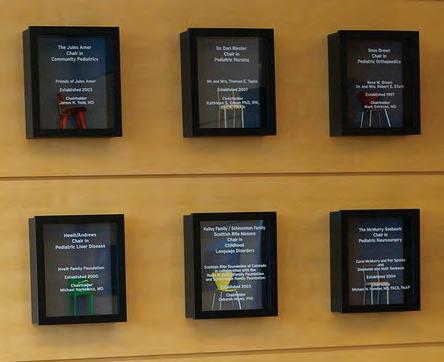
Increased NIH funding
Implementation of the first faculty practice plan

Enhancement of pediatric subspecialties
Creation of the gastroenterology section
Development of one of the nation’s first pediatric critical care sections
Construction of the Perinatal Research Facility on what would become the Fitzsimons campus
Strengthening of ties with the JFK Child Development Center, the Barbara Davis Center for Childhood Diabetes, and National Jewish Hospital
Development of a three-track General Pediatric residency program—primary care, research, and traditional study—that merited one of the few grants for residency training
It was during his latter months as chair of the Department of Pediatrics that a formal affiliation document between the University of Colorado Health Sciences Center and The Children’s Hospital was first drafted.

Battaglia was also a force nationally and internationally, as he:
Served as president of all the pediatric academic societies
Helped establish the Perinatal Research Society, which connected senior and beginning investigators from basic science, obstetrics, and pediatrics to foster a multidisciplinary approach to perinatal medicine
Guided creation of the Pediatric Scientist Development Program while serving as president of the Association of Medical School Pediatric Department Chairs
Served as editor and/or reviewer on more than 17 journals
Trained physicians who have achieved success in academic pediatrics and obstetrics. A 2004 accounting showed he had mentored three deans of schools of medicine, nine chairs of departments of pediatrics, two chairs of departments of obstetrics and gynecology, more than two dozen full professors, and several others serving in academic institutions.
As a Colorado colleague noted in one of Battaglia’s many award presentations: “Fred is one of the few individuals who has changed more than what we think. He has changed how we think, and how we teach.”
20 DEPARTMENT OF PEDIATRICS CHAIRS
The Frederick C. Battaglia Endowed Chair in Neonatology

In his acceptance remarks for The Frederick C. Battaglia Endowed Chair in Neonatology, Paul Rozance, MD, noted:
“Everywhere I go, I hear how highly regarded the Perinatal Research Center is. This is the place where observations in placental and fetal physiology have been made and translated into therapies for neonatal pulmonary diseases, strategies for managing pregnancies complicated by placental insufficiency and intrauterine growth retardation, and approaches to providing nutrition for the premature babies. Discoveries made at the Perinatal Research Center have changed the way babies are cared for all around the world.
“It is worth repeating that this environment, the Perinatal Research Center, was started by Drs. (Frederick) Battaglia and (Giacomo) Meschia. With the continued vision and leadership in our Division, the Perinatal Research Center is the envy of perinatal biologists everywhere.
In recognition of Battaglia’s many contributions, the Children’s Hospital Colorado Foundation established The Frederick C. Battaglia Endowed Chair in Neonatology in 2015. Pictured above, (L-R) Randall Wilkening, MD, Paul Rozance, MD, and Frederick Battaglia, MD. Rozance, who completed his fellowship in Neonatal-Perinatal Medicine at the University of Colorado School of Medicine in 2004, was named the first recipient.
“This endowment will allow us to keep the Perinatal Research Center at the cutting edge of our field. Exploring different disease models, developing and applying innovative technological advances, and establishing new collaborations are all vital to our continued success. It is hard to get grant money to begin these endeavors, especially the truly innovative ones. Having this endowed chair for research will allow us the freedom to pursue these strategies and others that will be required for taking on and solving the most important problems in perinatal medicine.”
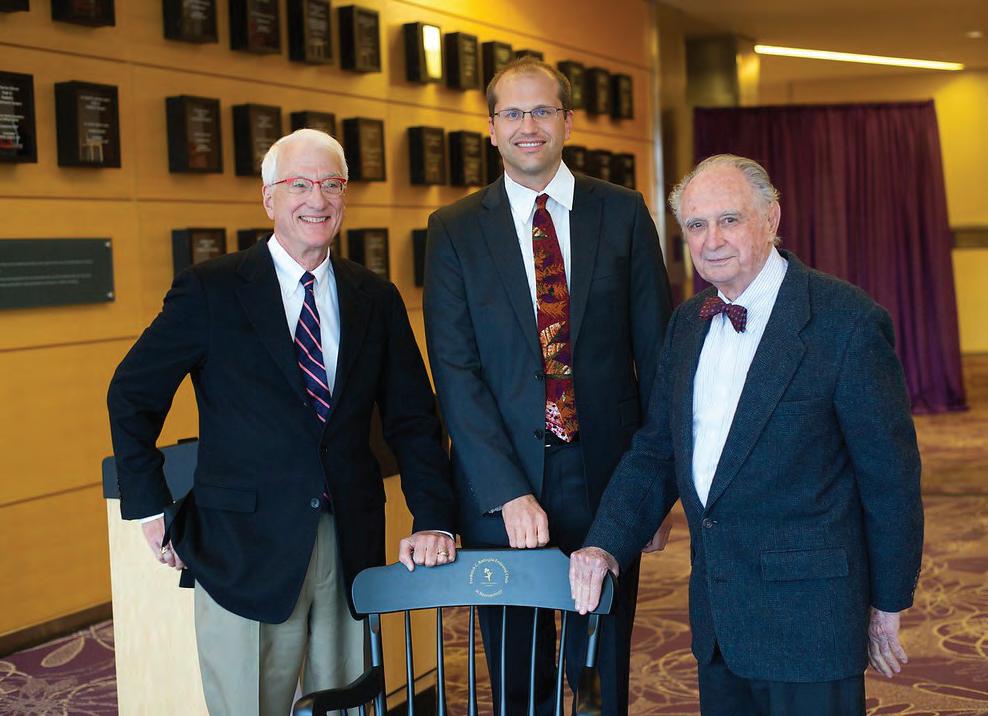
21 DEPARTMENT OF PEDIATRICS CHAIRS
On the evening of July 1, 1969, residents Doug Jones, MD, and Dick Krugman, MD, relaxed briefly in the call room at The Children’s Hospital. Day 1 of the first combined University of Colorado/The Children’s Hospital residency was drawing to a close. The two young physicians discussed possible program changes, now that the formal affiliation of the two organizations seemed imminent.
Krugman would later reflect, “We never anticipated that it would take 21 years, that I would be involved in making it happen, and that he would be the one to make it work. Our long-range vision as residents was to make it until 6 p.m. the next night, when we got off call.”
M. Douglas Jones, Jr., MD Chair of the Department of Pediatrics 1990–2005

Undergraduate Rice University, Houston, Texas, 1964
Medical School University of Texas, Southwestern Medical Center at Dallas, Southwestern Medical School, 1968
Internship University of Colorado, 1968
Residency University of Colorado, 1969–1970
Chief Resident, 1970–1971
Fellowship University of Colorado, 1975
Collegiality has been a Departmental strength from the start, and it clearly would play a role two-plus decades later as the Department of Pediatrics entered a new era. After multiple steps forward and back, talks between the University and Children’s had resumed in 1987, and a close vote by the Children’s board of directors had cleared the way for full affiliation in 1989. Frederick Battaglia, MD, Chair of the Department of Pediatrics, had relinquished his post in 1988, recognizing the need for fresh leadership to optimize joint operational success. Gerald Merenstein, MD, had bridged the two-year transition admirably as interim, but securing a permanent Chair was essential for the shared future to begin.
The search committee’s priority was for an exceptional scientist. Among the three candidates receiving final consideration was Jones, who had completed his
neonatal fellowship with Battaglia in 1975. Battaglia had chosen him as one of the full-time faculty members paid by the University and based at Children’s, where he worked alongside L. Joseph Butterfield, MD, in the Newborn Center. He left Colorado for Maryland in 1977, recruited by the Johns Hopkins University School of Medicine. There, he became director of the Neonatal Intensive Care Unit while actively continuing to study fetal and newborn cerebral blood flow and metabolism.
“I think the recruitment of Doug was absolutely critical to the success of this program, both to Children’s and to the University.”
–Frederick Battaglia, MD
In early 1990, Merenstein traveled to Baltimore with Bernard Nelson, MD, chancellor of the University of Colorado Health Sciences Center, and Frances “Salty” Welborn, Children’s board chair, to convince Jones to return to Denver. He agreed. In October 1990, he became the sixth chair of the Department of Pediatrics. As fate, friendship and search committee strategy would have it, Krugman was soon to be appointed acting dean and then dean.
22 DEPARTMENT OF PEDIATRICS CHAIRS
A Portrait of Persistence
While the shot was spontaneous, this image captured by Vince Fulginiti, MD, reflects the spirit of the many shirt-sleeves sessions that forged the formal affiliation between the University of Colorado Health Sciences Center and The Children’s Hospital. Decades of debate and considerable drama preceded the extremely close vote by Children’s board of directors in 1989 that allowed the agreement to move forward.
Even after plans were in place for an integrated service, decisions by some reluctant to release control of their respective areas threatened to derail the
arrangement. “The early years of the affiliation were fragile,” Doug Jones, MD, notes. “We faced a year of crisis in 1994, well into the affiliation.” At issue: A push to reestablish a pediatric intensive care unit at Colorado General Hospital in support of pediatric organ transplantation. Fortunately, the promise of a shared vision for children’s health—and sheer persistence—prevailed.
Present for this affiliation committee meeting were (L-R) Jones, Wally White, MD, Peter Durante, MD, Fulginiti, the facilitator, John Strain, MD, Dennis Matthews, MD, Dick Krugman, MD, Lua Blankenship, and David Clarke, MD.

Differences & Diplomacy
The Department awaiting Jones was housed in four separate and culturally distinct settings: the University, Children’s, Denver Health, and National Jewish Medical and Research Center. While there was mutual respect for the work peers were doing at their sister institutions, there was also concern regarding the balanced progression of the Department’s four missions—clinical care, advocacy, research, and education. The new chair’s solution was to assist all stakeholders in sharing work that superseded institutional boundaries.
While not without its memorable moments of disagreement, the affiliation-in-action gained traction and credibility. Jones’ colleagues remarked repeatedly on the success of his “shuttle diplomacy.” Efforts in all four mission areas were furthered and expanded. Key evidence can be found in the Department’s growth during Jones’ tenure: Between 1990 and 2005, it became the largest clinical revenue generator of all the School of Medicine departments. Research revenues grew from $8 million to $48 million and clinical revenues from $7 million to more than $24 million. Concurrently, the Department of Pediatrics and Children’s became a regular in U.S. News & World Report’s envied “Top Children’s Hospitals” Honor Roll.
23 DEPARTMENT OF PEDIATRICS CHAIRS
In addition to his role in implementing the affiliation and the courageous decision to move The Children’s Hospital from downtown Denver to the nascent Fitzsimons campus, faculty have cited the following decisions by Jones as key to the Department’s achievements:
Consolidation of pediatric clinical services into a single site
Growth of multidisciplinary clinical services
A tripling of the number of pediatric faculty
The creation of vice chair positions for Education, Research, Clinical Practice, Academic Affairs, Clinical Research, Ambulatory Medicine, and Inpatient Medicine
Outreach initiatives to community physicians to support the clinical faculty
Advancement of innovative teaching programs, including the award-winning Learning Through Interactive Video Education (LIVE) project adopted by multiple other medical schools
In October 2006, Jones’ distinguished career was honored with a festschrift symposium titled “The Future of Pediatrics.” Among the guest speakers were his national colleagues
Paul H. Wise, MD, MPH, Stanford; Edward L. Schor, MD, New York; Paul D. Miles, MD, Chapel Hill; and Thomas F. Boat, MD, Cincinnati.
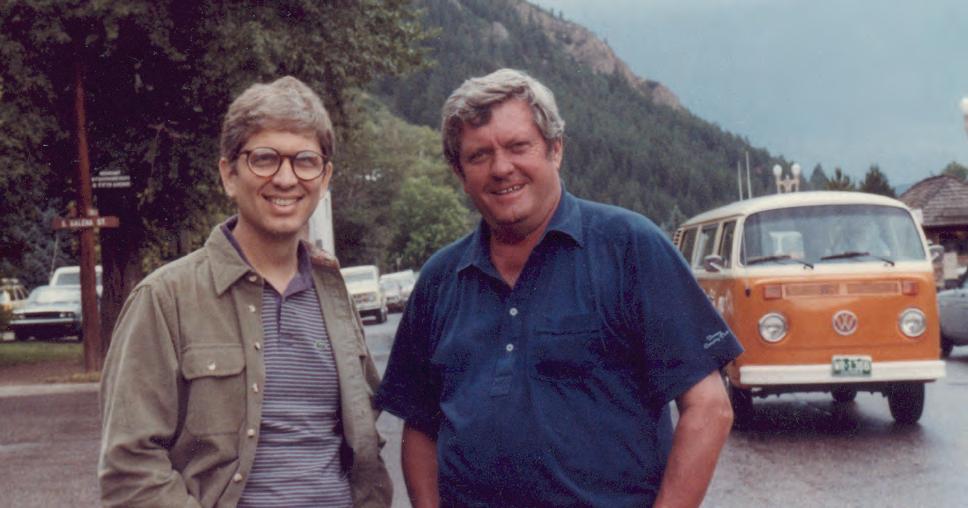
Proceedings can be found at: www.jpeds.com/ article/S0022-3476(07)00778-0/fulltext
In 1997, Jones was the recipient of the department’s first endowed chair—the L. Joseph Butterfield Chair in Pediatrics. He had chaired both the Accreditation Council for Graduate Medical Education Residency Review Committee for Pediatrics and the American Board of Pediatrics’ (ABP) board of directors. He was instrumental, as well, in developing the American Academy of Pediatrics’ Future of Pediatric Education II Task Force and led the ABP’s Residency Review and Redesign in Pediatrics Project. In recognition of his contributions, Jones received the 2008 Joseph W. St. Geme Jr. Leadership Award from the Federation of Pediatric Organizations, representing the leadership of the seven major pediatric academic and professional organizations.
Ronald Sokol, MD, Section of Pediatric Gastroenterology, Hepatology and Nutrition, summarizes Jones’ contributions well: “Doug has been a nurturing and guiding influence to hundreds of students, residents, fellows, and young physicians during his illustrious career, with many former trainees attaining national leadership positions. He brought the visibility and quality of research and education of the Department of Pediatrics to new heights, achieving top-five status in NIH funding of medical school pediatric departments. Importantly, Doug fostered a critical collaboration between The Children’s Hospital and the University of Colorado that has become a national model for developing partnerships between independent children’s hospitals and academic health centers for the betterment of all.”
Doug Jones was one of many residents and fellows benefiting from L. Joseph Butterfield, MD’s conferences in Aspen during the 1970s. Decades later, Jones was awarded the department’s first endowed chair, the L. Joseph Butterfield Chair in Pediatrics.
24 DEPARTMENT OF PEDIATRICS CHAIRS
Jones’ contribution to the Department, Children’s Hospital Colorado and Denver Health continues. Here, he consults with neonatologist Daniel M. Hall, MD, in the Children’s Neonatal Intensive Care Unit.

REVENUE GROWTH
During Jones’ 15-year tenure as Chair, the Department of Pediatrics realized extraordinary growth in both research and clinical revenues.
From the Chairman’s Letter, Department of Pediatrics, Departmental Report 2003–2004
“I will be stepping down at the end of August 2005 after almost 15 years as Chair of the Department and Pediatrician-in-Chief at The Children’s Hospital. Several long-standing Section Heads have announced that they intend to step down or retire. Others will likely step down in the next few years. The Department will see more administrative turnover than in many years. As always, new leadership will find challenges and opportunities.
“What will not change, and has not in the 37 years of my association with the Department, nor in the prior 22 years of its history as a full-time academic Department, is our commitment to excellent clinical service in the context of excellent teaching and research. Our commitment to community physicians and their patients will not change, nor will our commitment to advocacy at the state and federal levels for issues important to child health.
“Much of the next several years of my own career will be spent on a national project to re-evaluate general pediatric residency training, with as few preconceptions as possible. We will be considering everything from the duration of training to curriculum to techniques of teaching and learning, to the certification process. In the end, we hope to have a blueprint for training the pediatricians that children will need over the next
20 or more years. It may be a little different from current training. It may be substantially different. We will not know until we go through a thoughtful process of learning and study. With such high hopes, the project will take at least four years. The rest of my time will be spent in clinical care and teaching.
“Leaders are often given more credit than they earn. The fact is that the culture and traditions of academic organizations as successful as ours are powerful and resilient. They are the major determinants of who the leaders will be and how they will behave. The culture is far more likely to guide the leader than the leader is to guide the culture. It has been my great privilege to serve as Chair of this Department. It will be fun to watch it continue to evolve, as it stays the same in all the important ways. Best Regards,
M. Douglas Jones, Jr., MD Professor and Chair, Department of Pediatrics University of Colorado School of Medicine Pediatrician-in-Chief
L. Joseph Butterfield Chair in Pediatrics
The
Children’s
Hospital
RESEARCH 1990 1990 2005 2005 MILLION MILLION CLINICAL $48 $24+
“What will not change…”
$8 MILLION $7 MILLION 25 DEPARTMENT OF PEDIATRICS CHAIRS
Stephen Daniels, MD, PhD Chair of the Department of Pediatrics 2006–Current
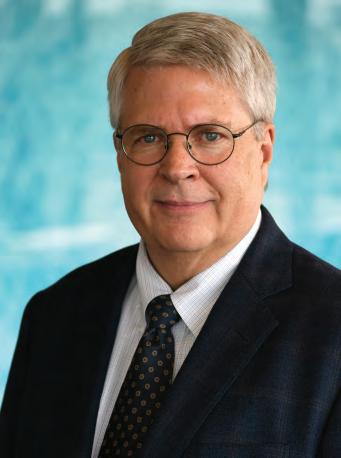
Multiple factors fueled Stephen Daniels, MD’s interest in chairing the Department of Pediatrics at the University of Colorado School of Medicine. His collaboration with colleagues here while serving at the University of Cincinnati College of Medicine had deepened his respect for this School of Medicine, the Department of Pediatrics and Children’s Hospital Colorado. “But I also wondered,” he recalls, “given what I’d seen in Cincinnati, if there was an opportunity for this outstanding place to become even better and more integrated. Could we grow rapidly and well across all four missions?”
The answer was—and continues to be—yes, for both the Department of Pediatrics and Children’s Hospital Colorado. Work across all four pillars—clinical care, advocacy, research, and education—is progressing rapidly with the expansion of established programs and the launch of new ones. But, Daniels readily admits, while there are parallels with his Cincinnati experience, the pediatric environment in Denver is unique.
Undergraduate, BS University of Rochester, 1969–1973
Medical School, MD University of Chicago, 1973–1977
Public Health, MPH Harvard University, T.H. Chan
School of Public Health, Boston, 1978–1979
Residency Pediatrics, Children’s Hospital Medical Center, Cincinnati, 1977–1981
Fellowship Pediatric Cardiology, Children’s Hospital Medical Center, Cincinnati, 1981–1984
Epidemiology, PhD University of North Carolina
School of Public Health, 1989
“That said, if you’ve seen one academic medical center, you’ve seen one. What I encountered here was very different in terms of the relationship between the medical school and hospital. Also, the University practice plan focuses on the entire campus, not just Pediatrics. I quickly realized that the combined job of being Pediatrician-in-Chief at Children’s Hospital and Chair of the Department of Pediatrics meant working
in the interstitium of all these organizations, pulling them together. It was emphasizing the concept that the better we could knit things together, the more successful we would be.
“There was also a certain amount of distrust, given the history between the two organizations,” he continues. “Prior to the affiliation in 1990, virtually all academics lived at the University, and Children’s was more of a community hospital. I view the affiliation as the watershed moment that fused these two great institutions. The whole that was created was greater than the sum of the parts. The goal was to be one of the top pediatric academic medical centers. I think Doug (Jones) gets a lot of credit. He took that scenario and advanced things dramatically as Chair. That was the platform I saw going in: all the elements needed for ongoing success were in place.”
“As we look ahead to this health care system of the future—where we’re likely to be focusing on populations—it allows us to think as a unit about how we will do that. We are a bit like a wheel with the hospital as the hub and our programs as spokes extending out into the community and the region.” –Stephen Daniels, MD, PhD
26 DEPARTMENT OF PEDIATRICS CHAIRS
Daniels launched Resident Research Day in 2009 to celebrate the research accomplishments of residents and their faculty mentors. The annual event includes an invited speaker and oral presentations of resident research projects. The invited speaker is a past or present faculty member (or trainee) in the Department of Pediatrics, has a successful research career, and is a strong mentor. Pictured at the 2018 Resident Research Day are (L-R): Jonathan Schulz, MD, Julie Venci, MD, Julia Hudnut-Beumler, MD, Stephen Daniels, MD, PhD, Ellen Cody, MD, Brad Dixon, MD, Whitley Hulse, MD, and Marsha Anderson, MD.
In 2016, Daniels served as Visiting Professor for the Rashkind Lecture at Children’s Hospital of Philadelphia. It was the 20th anniversary of the symposium established by William J. Rashkind, MD, internationally regarded pediatric cardiologist and developer of the balloon atrial septostomy or “Rashkind procedure.”

Daniels cites five decisions that helped further and solidify unification:
Consolidation of the Department’s dual administrative positions. “Instead of having separate administrators for the School of Medicine and Children’s Hospital, we combined them.”
Gail Cohen was chosen for the post; followed in 2018 by Michael Jonen.
Creation of business manager positions for all Sections. “This gave the Section Heads a right-hand person to focus on the business of running a complex section. If we were to pursue development, they would need lots of help.”
Adoption of a more business-like approach to the Children’s Hospital-Department of Pediatrics partnership. “The existing situation was complex, but it was about to get more so as each area grew and new programs were developed.”
Expand and support an outstanding group of Vice Chairs. Those in these positions ensure that each of the missions is working well across all the Sections.
Development of a Strategic Talent Acquisition and Retention Committee. “This group reviews proposals for new faculty hires and new programs. It allows us to merge departmental and hospital action plans.”

27 DEPARTMENT OF PEDIATRICS CHAIRS
FACULTY GROWTH
When Daniels began his chairmanship in 2006, the Department of Pediatrics faculty totaled about 250 members. By 2018, that number had grown to more than 800. He notes, “We also moved from the idea that all faculty had to be a triple threat—education, research and clinical—to thinking of it in a more organic way. It was really the department or section as a whole that needed to accomplish the work, with each member contributing with their own combination of activities but not having to do it all.”
New Campus, New Canvas
Just 18 months into his chairmanship, Daniels helped lead the relocation of The Children’s Hospital from its Downing Street location in midtown Denver to the new Fitzsimons site at I-225 and East Colfax Ave. The 1.79 million square-foot, 300-bed Children’s Hospital is adjacent to the University of Colorado Hospital and the University of Colorado School of Medicine.
“The old hospital was a really great place,” he notes, “but we now have the advantage of a fantastic new facility designed around the integration of missions. Our strategic planning process continued as we were moving, with research and education receiving greater emphasis. This also led to expansion of the Children’s Hospital Research Institute and the hiring of a Chief Research Officer for the hospital.”
Strategy remains the keyword as Daniels looks to the future. “I think we’ve entered the next phase, where the growth trajectory will not be as rapid.
We’re much closer now to being the right size for the Denver metro and Colorado areas. However, we now turn our attention to Colorado Springs, Fort Collins, and the Rocky Mountain region. For some programs, there will be a national landscape. This will challenge us to create a system of child health care.
“There is no question that our health care system will change. No one knows precisely how, but it will certainly include assessing who will be cared for in a hospital, who in an outpatient setting and who at home. Do we ultimately move to a system that focuses on populations and gets more involved in getting outside these walls? What kinds of community partnerships will need to be developed? Is the healthcare system of the future one where we’re more involved with schools and other partners?
“What should determine those decisions is still the same. How do you get the best health outcomes for children?”
In 2006, the Department of Pediatrics had $26 million in National Institutes of Health (NIH) funding. By 2018, that had grown to $54 million. In that same 13-year period, the inpatient market share for Children’s Hospital Colorado grew from 43% to 69%, with clinical revenues for the Department increasing from $30 million to $130 million. The Department of Pediatrics had ranked first in clinical revenue generation in the CU School of Medicine for 25 years.
“This is all a work in progress. But, compared to where things were 10 years ago, the Department not only feels much bigger, but more integrated. I hear a lot less of the we/they kind of discussion…it seems more like things are about us, our real partnership with Children’s Hospital Colorado. I see that as a really positive thing. That’s part of the culture—the concept that everything we do, we do together. It’s that partnership that really allows us to be as good as we are and have opportunities for improvement and growth.”
–Stephen Daniels, MD, PhD
IN 2018
250+ 800+ IN 2006
FACULTY MEMBERS
28 DEPARTMENT OF PEDIATRICS CHAIRS
Daniels’ focused interest in pediatric cardiovascular health is reflected in his chairing the American Heart Association’s Council on Cardiovascular Disease in the Young, the American Academy of Pediatrics’ Nutrition Committee, and the National Heart, Lung and Blood Institute’s Expert Panel on Cardiovascular Risk Reduction in Children.
AWARDS & HONORS
American Heart Association Established Investigator Award (1989–1994)
Pfizer Visiting Professor in Cardiovascular Disease (2004)
Saban Research Institute Distinguished Lecturer, Children’s Hospital Los Angeles (2005)
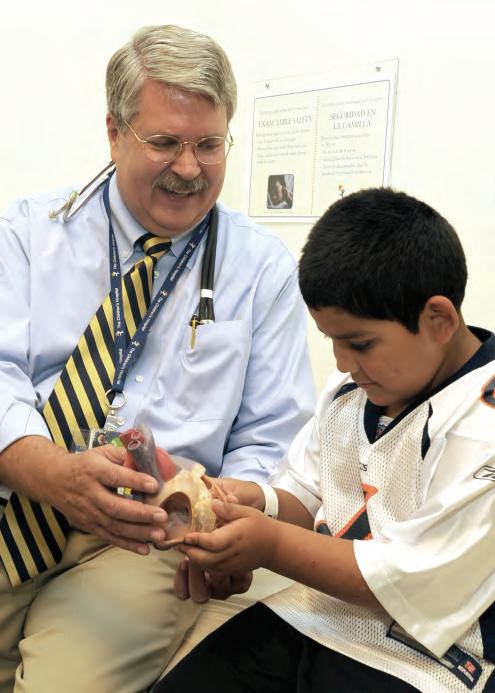
Casden Memorial Lecture, Oregon Health and Sciences University (2005)
Moll Memorial Lecture, University of Washington, Seattle (2008)
John Keith Memorial Lecture, Canadian Cardiovascular Society (2008)
Stanley Wright Memorial Lecture, Western Society for Pediatric Research and Western Society for Clinical Investigation (2009)
Edna G. Kynett Memorial Lecture, Jefferson Medical College (2010)
Chairman’s Award, American Heart Association (2011)
Distinguished Achievement Award, American Heart Association Council on Cardiovascular Disease in the Young (2012)
Fyler Lecture and Visiting Professor, Boston Children’s Hospital (2014)
Gold Heart Award, American Heart Association (2015)
Rashkind Lecture and Visiting Professor, Children’s Hospital of Philadelphia (2016)
Alexander S. Nadas Distinguished Lecture, American Heart Association (2017)
Chair, Council on Cardiovascular Disease in the Young, American Heart Association (2004–2006)
Chair, Nutrition Committee, American Academy of Pediatrics (2013–2017)
Chair Expert Panel on Cardiovascular Risk
Reduction in Children, National Heart, Lung and Blood Institute (2006–2011)
Chair, National Heart, Lung and Blood Institute
Study Section for R34 Applications (2017–2018)
Associate Editor, Journal of Pediatrics (1995–present)
President, Association of Medical School Pediatric Department Chairs (2012–2015)
Member, American Pediatric Society Council (2017–2022)
29 DEPARTMENT OF PEDIATRICS CHAIRS
INTERIM CHAIRS
Transition times between Chairs of the Department of Pediatrics have been periods of calm, tumult, dissension, and redirection. The Department salutes the five men who have steadied its course during these leadership changes.
Gerald Fisher, MD
Interim Chair, 1946–1947
Gerald “Bob” Fisher, MD, served as acting chair of the Department of Pediatrics following the departure of Franklin Gengenbach, MD, and prior to the arrival of Harry Gordon, MD. Like Gengenbach, Fisher served part time, continuing his private practice in Denver. Along with resource and readjustment challenges faced nationwide following World War II, these years saw a surge of polio throughout Colorado, critically taxing providers. Fisher received his medical degree from Johns Hopkins School of Medicine and served his residency at The Children’s Hospital in Denver. He practiced in Albuquerque, then relocated to Colorado Springs, where his family notes he was the only pediatrician between the New Mexico/Colorado state line and Denver. Fisher retired in Denver. He died in 1984.

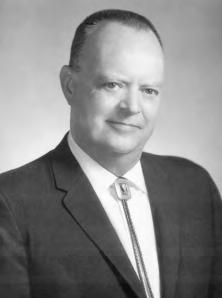 John Lichty, MD
John Lichty, MD
Interim Chair, 1952–1953
A native of Pittsburgh, John Lichty, MD, was a graduate of Princeton University, the University of Rochester Medical School, and the University of Pittsburgh Graduate School of Public Health. During World War II, he was commissioned as a Lieutenant Commander in the U. S. Navy Reserve where he conducted research in bacteriological warfare. As acting chair, Lichty helped steady the Department during two years of financial and organizational challenge. Long a member of the University of Colorado School of Medicine faculty, he was highly active in regional and national medical societies. Lichty served as associate director of the Colorado Department of Health from 1963 until 1968, when he retired. He died in 1982.
“There is nothing more difficult to take in hand, more perilous to conduct, or more uncertain in its success, than to take the lead in the introduction of a new order of things.”
– Niccolò Machiavelli
30 DEPARTMENT OF PEDIATRICS CHAIRS
John “Jack” Githens, MD, capably guided the department through two leadership transitions—the first when chair Robert Alway, MD, returned to Stanford and the second upon the retirement of C. Henry Kempe, MD. The former was during a difficult time for the department, given financial and staffing concerns. The latter followed one of its most ambitious and energized periods of growth. A graduate of Swarthmore College and Temple University School of Medicine, Githens served as an officer in the U. S. Navy prior to completing his pediatric hematology training at Children’s Hospital of Philadelphia. His service to the University of Colorado Department of Pediatrics would encompass the chief residency in 1950 through tenured faculty until his retirement in 1987. Among his most prized achievements was the founding and direction of the Colorado Sickle Cell Treatment and Research Center. He died in 2014.
Gerald “Jerry” Merenstein, MD, bridged the chairmanships of Frederick Battaglia, MD, and M. Douglas Jones, Jr., MD. The transition came at a critical time in the Department of Pediatrics’ history, as the University of Colorado Health Sciences Center and The Children’s Hospital were in the process of formal affiliation. A pioneer in neonatology, Merenstein served as a professor of pediatrics and medical director of the Child Health Associate/Physician Assistant Program, and as a senior associate dean for education. Prior to joining the University, he was a colonel in the U.S. Army based at Fitzsimons Army Medical Center. The author of more than 150 articles, chapters and books, he chaired the American Academy of Pediatrics’ Committee on Fetus and Newborn and Section on Perinatal Pediatrics Executive Committee. He died in 2007.

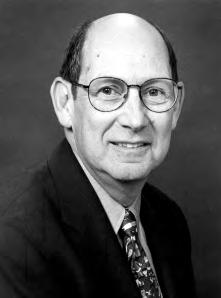
Randall “Randy” Wilkening, MD, became acting chair as plans were evolving for The Children’s Hospital’s relocation to the Fitzsimons campus. Although the physical distance was a direct eight miles, the move was monumental—both symbolically and logistically. As a faculty member who had served his internship, residency and fellowship with the Department, his perspective of both organization and operations proved a valuable asset. Wilkening has been recognized repeatedly as one of the Top Doctors in America. He currently serves as Section Head of Neonatology and vice chair for Clinical Finance for the Department of Pediatrics. He also chairs the Clinical Practice Committee and is associate vice chair for Research Affairs, Perinatal Research.
 John Githens, MD Interim Chair, 1955–1956, 1973–1974
Gerald Merenstein, MD, FAAP Interim Chair, 1988–1990
Randall Wilkening, MD Interim Chair, 2005–2006
John Githens, MD Interim Chair, 1955–1956, 1973–1974
Gerald Merenstein, MD, FAAP Interim Chair, 1988–1990
Randall Wilkening, MD Interim Chair, 2005–2006
31 DEPARTMENT OF PEDIATRICS CHAIRS
Department of Pediatrics Leadership 2018
CHAIR
Stephen Daniels, MD, PhD
Chair, Department of Pediatrics
Pediatrician-in-Chief, Children’s Hospital Colorado
VICE CHAIRS
Mark Abzug, MD
Vice Chair
Academic Affairs
Paul Fennessey, PhD
Vice Chair
Research
Timothy Givens, MD
Vice Chair
Clinical Operations
David Keller, MD
Vice Chair
Clinical Strategy & Transformation
Nancy Krebs, MD
Associate Vice Chair
Academic Affairs
Steven Poole, MD
Vice Chair
Ambulatory and Community Affairs
Andrew Sirotnak, MD
Vice Chair
Faculty Affairs
Ronald Sokol, MD
Vice Chair
Clinical and Translational Research
Randall Wilkening, MD
Vice Chair
Clinical Finance
Shale Wong, MD
Vice Chair
Advocacy
Lindsey Lane, BM BCh
Vice Chair Education
SECTION HEADS
ADOLESCENT MEDICINE
David Kaplan, MD, MPH
Section Head
ALLERGY AND IMMUNOLOGY
Dan Atkins, MD
Section Head
David Fleischer, MD
Associate Section Head
BARBARA DAVIS CENTER FOR CHILDHOOD DIABETES
Marian Rewers, MD, PhD
Section Head
CARDIOLOGY
D. Dunbar Ivy, MD
Section Head
CHA/PA PROGRAM
Jonathan Bowser, MS, CHA/PA-C
Section Head
CHILD ABUSE AND NEGLECT (KEMPE CENTER)
Desmond Runyon, MD, DrPH
Section Head
CHILD NEUROLOGY
Amy Brooks-Kayal, MD
Section Head
CRITICAL CARE MEDICINE
Kurt Stenmark, MD
Section Head
DEVELOPMENTAL BIOLOGY
Bruce Appel, MD
Section Head (Interim)
DEVELOPMENTAL PEDIATRICS
Sandra Friedman, MD, MPH
Section Head
EMERGENCY MEDICINE
Rakesh Mistry, MD
Section Head (Interim)
ENDOCRINOLOGY
Philip Zeitler, MD, PhD
Section Head
GASTROENTEROLOGY, HEPATOLOGY AND NUTRITION
Ronald Sokol, MD
Section Head
GENERAL ACADEMIC PEDIATRICS
Christopher Stille, MD, MPH
Section Head
GENETICS AND METABOLISM
Shawn McCandless, MD, PhD
Section Head
HEMATOLOGY, ONCOLOGY AND BONE MARROW TRANSPLANTATION
Lia Gore, MD
Section Head
INFECTIOUS DISEASES AND EPIDEMIOLOGY
Elizabeth McFarland, MD
Section Head
INFORMATICS AND DATA SCIENCE
Michael Kahn, MD, PhD
Section Head
NEONATOLOGY
Randall Wilkening, MD
Section Head
NEPHROLOGY
Jens Goebel, MD
Section Head
NUTRITION
Nancy Krebs, MD
Section Head
PEDIATRIC HOSPITAL MEDICINE
Jennifer Reese, MD
Section Head
PEDIATRIC PULMONARY AND SLEEP MEDICINE
Robin Deterding, MD
Section Head
RHEUMATOLOGY
Robert Fuhlbrigge, MD, PhD
Section Head
32 DEPARTMENT OF PEDIATRICS CHAIRS
TIMELINE
The achievements and advances depicted in this timeline reflect the enduring partnerships the Department of Pediatrics has enjoyed with Children’s Hospital Colorado, Denver Health, National Jewish Health and the former Fitzsimons Army Medical Center. These partners’ stories can be found on the following websites: n childrenscolorado.org
n denverhealth.org
n nationaljewish.org
n archive.org/details/fitzsimonsarmyme00auro
CONTENTS 1930–1949 34 1950–1959 36 1960–1965 38 1966–1969 40 1970–1979 42 1980–1989 44 1990–1999 46 2000–2009 48 2010–2018 50 The Pediatrician/Patient Connection 52
33 DEPARTMENT OF PEDIATRICS TIMELINE
1930
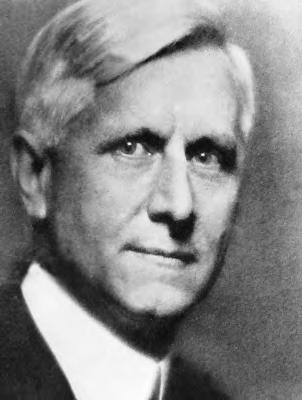

The University of Colorado School of Medicine establishes the Department of Pediatrics. Franklin Gengenbach, MD, serves as chair of the Department while continuing his private pediatric practice.
MORE ON PAGE 8
1939
Regional outreach begins, as physicians on staff at The Children’s Hospital travel to Wyoming for a series of talks on the care of premature babies.
MORE ON PAGE 105
1941
The World War II effort forges stronger care partnerships in Colorado. Department residents support The Children’s Hospital staff, given the physician shortage. The main hospital facility at Fitzsimons Army Medical Center is completed to provide care for military families.
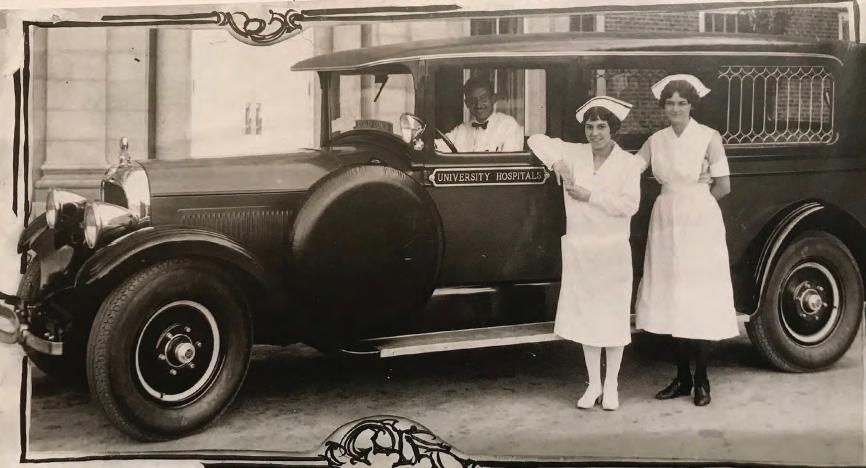
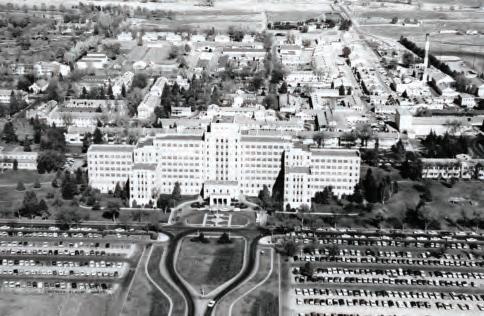
1943

Franklin Gengenbach is elected president of the American Academy of Pediatrics.
MORE ON PAGE 122
Fitzsimons Army Medical Center main building, c. 1941
Dr. Franklin Gengenbach
ROBERT SHIKES COLLECTION
SCHOLAR 34 DEPARTMENT OF PEDIATRICS TIMELINE
University Hospital ambulance, circa 1930s
MOUNTAIN
1930–1949
1944
Colorado families gain a powerful health advocate when Florence Sabin, MD, retires from Rockefeller Institute of Medical Research and returns to Colorado. A School of Medicine faculty member, her vision and voice revolutionize the state’s public health system and greatly expand the role of Department partner Denver Health. Sabin would also serve on The Children’s Hospital board of directors.
MORE ON PAGE 56
1947
The Premature Infant Teaching Unit opens with Lula Lubchenco, MD, named pediatrician for the Premature Project.
MORE ON PAGE 105
1947
Harry Gordon, MD, is named first full-time Department chair.
MORE ON PAGE 10
1949
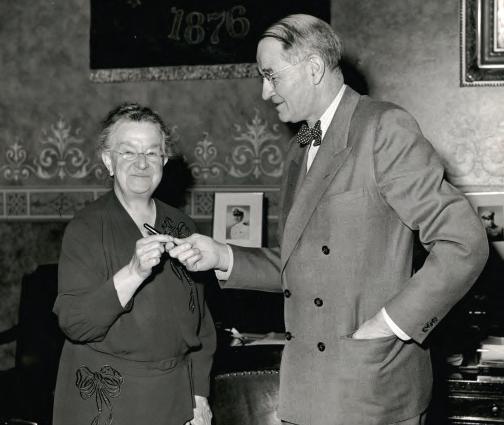
The United States records its last natural smallpox outbreak.
When the World Health Assembly declares the disease eradicated in 1980, Vincent Fulginiti, MD, (left) and C. Henry Kempe, MD, are among those recognized.
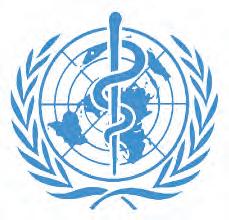



MORE ON PAGE 102
1946

Pediatric oncology is advanced in the region as The Children’s Hospital treats its first patient with lymphatic leukemia.
MORE ON PAGE 100
Dr. Florence Sabin and Colorado Governor Lee Knous
Dr. Lula Lubchenco
NATIONAL INSTITUTES OF HEALTH 35 DEPARTMENT OF PEDIATRICS TIMELINE
Dr. Harry Gordon
1950–1959
1953
A regional milestone in pediatric care occurs as John Grow, MD, performs the first open-heart surgery at The Children’s Hospital.

MORE ON PAGE 78
1955

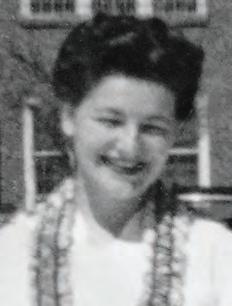
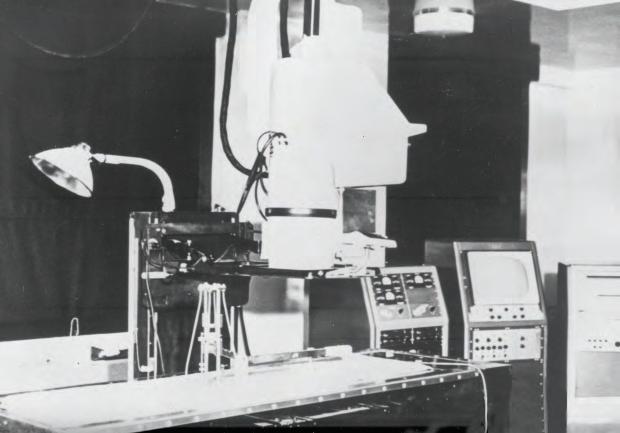
MORE ON PAGE 12
MORE ON PAGE 14
1956
The School of Medicine opens the Children’s Diagnostic Center to provide psychiatric services to institutions throughout Colorado. Bonnie Camp, PhD, serves as the first psychologist.
MORE ON PAGE 88
Cath Lab, c. 1953
Robert Alway, MD, is named Department chair.
1956
C. Henry Kempe, MD, accepts Department chairmanship.
Dr. Robert Alway
Dr. C. Henry Kempe
36 DEPARTMENT OF PEDIATRICS TIMELINE
Dr. Bonnie Camp
1957
One of the nation’s first adolescent clinics is established under the leadership of Ida Nakashima, MD.
MORE ON PAGE 74
1957
John Lichty, MD, and colleagues publish the seminal “Studies of babies born at high altitudes: Relation of altitude to birth weight.”
MORE ON PAGE 140
1959
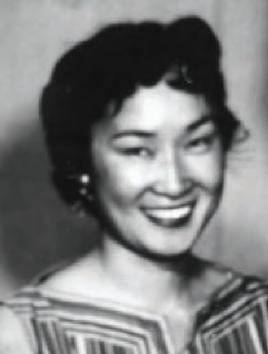
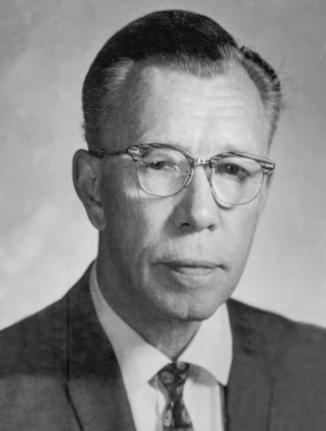
With Theodore Puck, PhD, and Joe Hin Tijo, PhD, in the Department of Biophysics, Arthur Robinson, MD, discovers that the Y-chromosome is sex-determining in humans.
MORE ON PAGE 97
 Dr. Ida Nakashima
Dr. Ida Nakashima
37 DEPARTMENT OF PEDIATRICS TIMELINE
Dr. John Lichty
1960–1965
1962
C. Henry Kempe, MD, and colleagues introduce the world to “The Battered Child Syndrome.”
MORE ON PAGE 126
1963
Lula Lubchenco, MD, Charlotte Hansman, MD, Edith Boyd, MD, and Marion Dressler, MD, publish “Intrauterine growth as estimated from liveborn birthweight data at 24 to 42 weeks of gestation.”
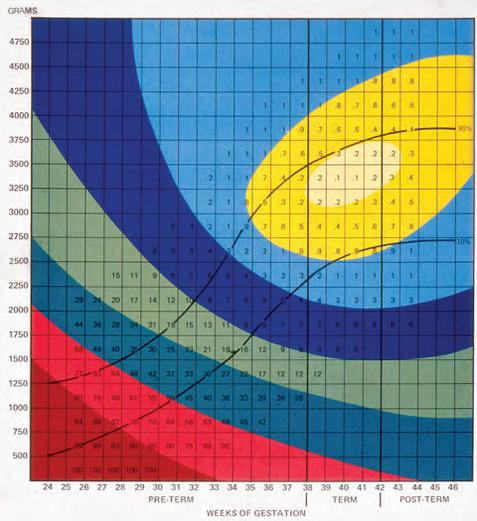
MORE ON PAGE 105
1963
Thomas Starzl, MD, attempts the world’s first pediatric liver transplant.

MORE ON PAGE 93
1964
Arthur Robinson, MD, and Theodore Puck, PhD, describe a method for identifying the X chromosome in human fetuses at birth.
MORE ON PAGE 97
 The Lulagram
The Lulagram
38 DEPARTMENT OF PEDIATRICS TIMELINE
Dr. C. Henry Kempe
1965
National Institutes of Health-funded Pediatric General Clinical Research Center is established under the direction of Donough O’Brien, MD, FRCP.
MORE ON PAGE 134
1965
L. Joseph Butterfield, MD, launches The Newborn Center at The Children’s Hospital.
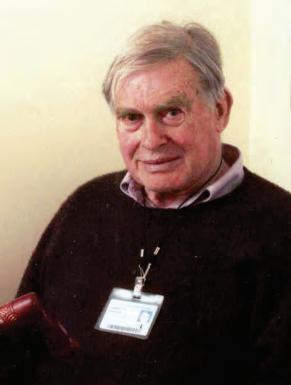

MORE ON PAGE 105
1965
Henry Silver, MD, collaborates with Loretta Ford, EdD, RN, in the College of Nursing to create a pediatric nurse practitioner program, the first nurse practitioner program in the United States.
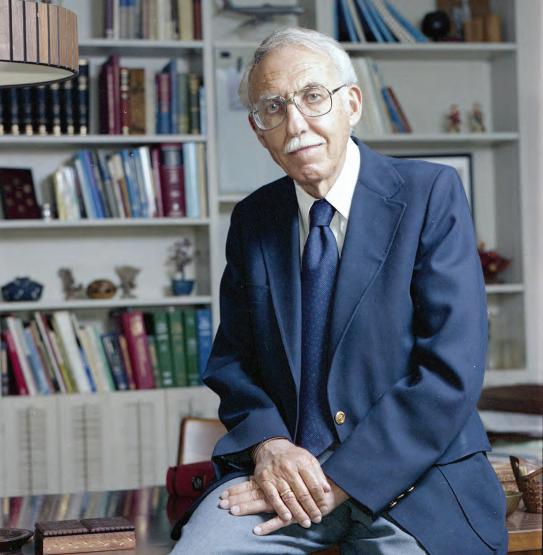
MORE ON PAGE 155
1965
William Hathaway, MD, John Githens, MD, Will Blackburn, MD, Vincent Fulginiti, MD, and C. Henry Kempe, MD, describe the first case of graft-versus-host disease in humans.
MORE ON PAGE 102
Dr. Donough O’Brien
Dr. Henry Silver
Dr. L. Joseph Butterfield
39 DEPARTMENT OF PEDIATRICS TIMELINE
1966–1969


1967
William K. Frankenburg, MD, and Josiah Dobbs, PhD, publish the Denver Developmental Screening Test, the first developmental screening tool for use during well-child care visits.
MORE ON PAGE 88
1968
JFK Child Development Center (now JFK Partners) is established by C. Henry Kempe, MD, and Donough O’Brien, MD, FRCP, of the Department of Pediatrics, and John Conger, PhD, of the Department of Psychiatry.
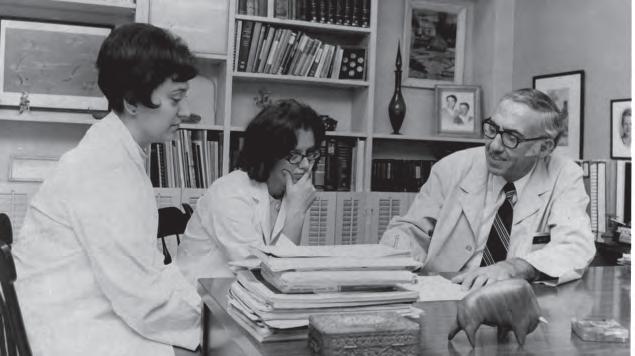


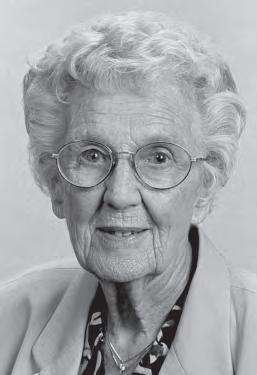

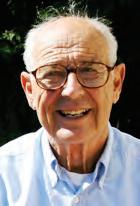
MORE ON PAGE 88
1967
Frederick Battaglia, MD, and Lula Lubchenco, MD, publish “A practical classification of newborn infants by weight and gestational age.”







MORE ON PAGE 105


1968
Henry Silver, MD, founds the Child Health Associate Program, one of the first Physician Assistant (PA) programs in the United States and the only one to focus solely on the care of children.
MORE ON PAGE 80

1
of
N A
Celebrating 50 Years
service to Colorado, the Rocky Mountain Region, and the nation
Dr. Henry Silver and students
Dr. Frederick Battaglia Dr. Lula Lubchenco
40 DEPARTMENT OF PEDIATRICS TIMELINE
Dr. William Frankenberg
1968
Gerhard Nellhaus, MD, publishes “Head circumference from birth to 18 years—practical composite international and interactional graphs.”
MORE ON PAGE 148
1969
The separate School of Medicine and Children’s Hospital pediatric residency programs begin a process that results in a single, shared program in 1972.
MORE ON PAGE 81
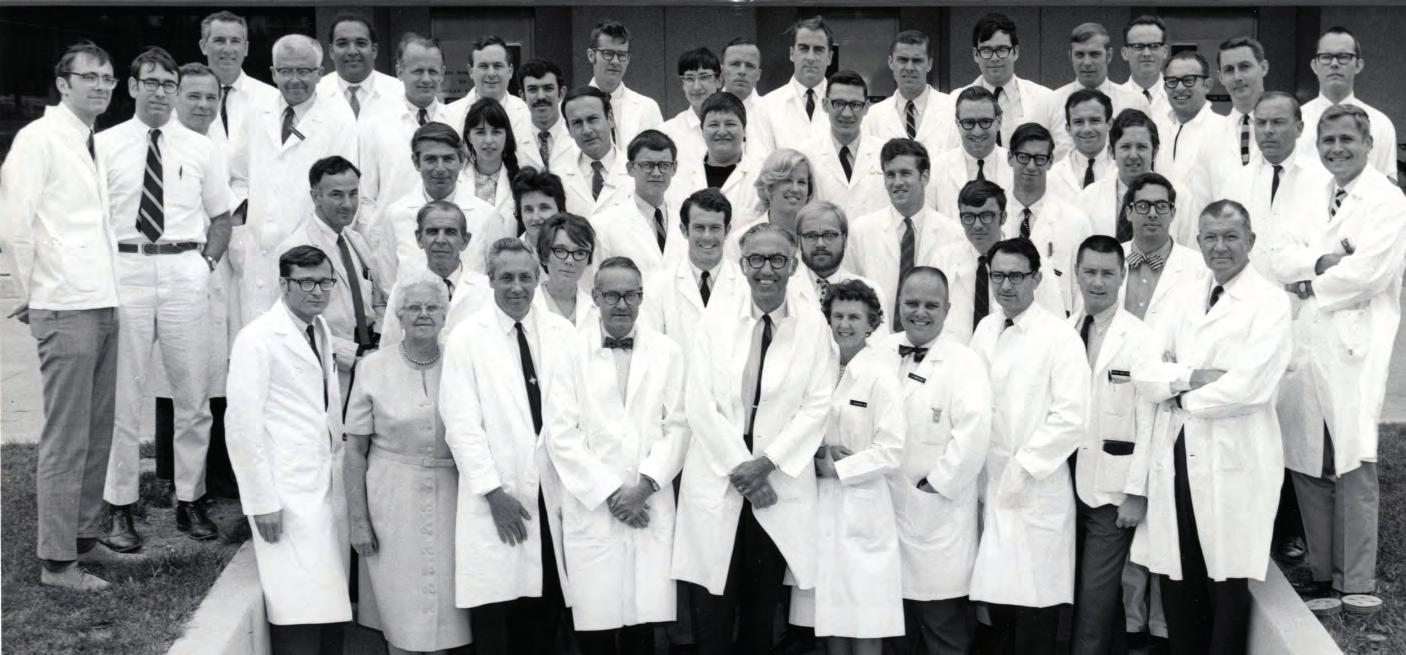
41 DEPARTMENT OF PEDIATRICS TIMELINE
Pediatrics faculty and residents, 1969
1970–1979
1971
Arnold Silverman, MD, Claude Roy, MD, and Frank Cozzetto, MD, author the first textbook on pediatric gastroenterology.

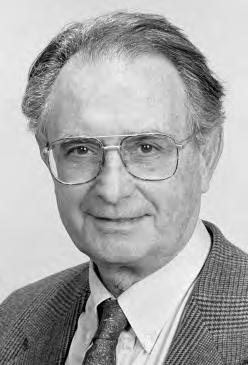
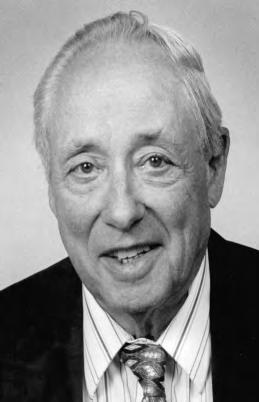
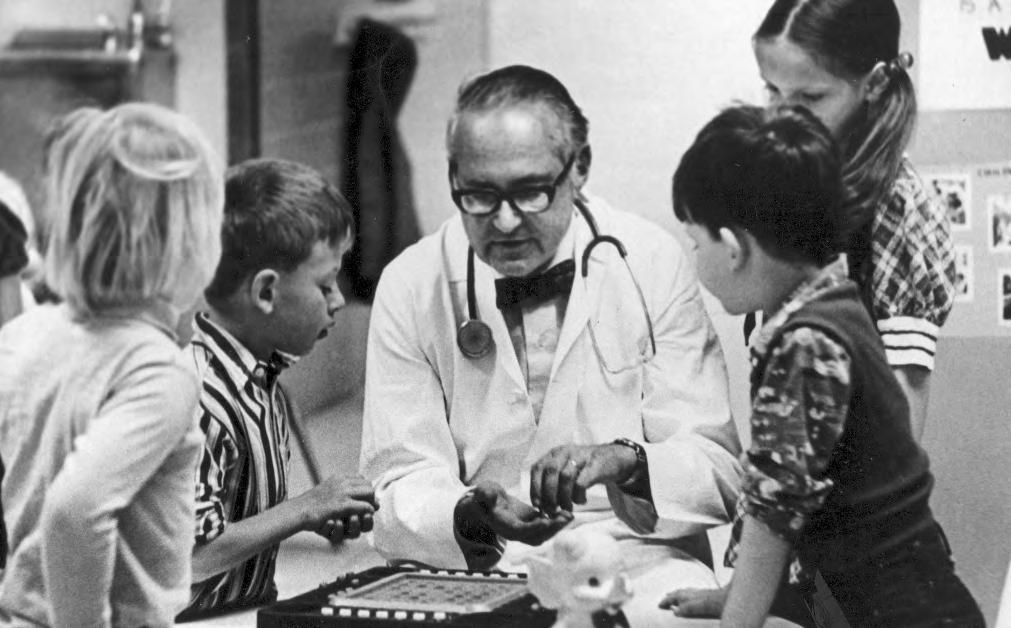
MORE ON PAGE 93
1972
The National Center for the Prevention and Treatment of Child Abuse and Neglect opens under the leadership of C. Henry Kempe, MD. It is the nation’s first child abuse identification, prevention, and treatment program.
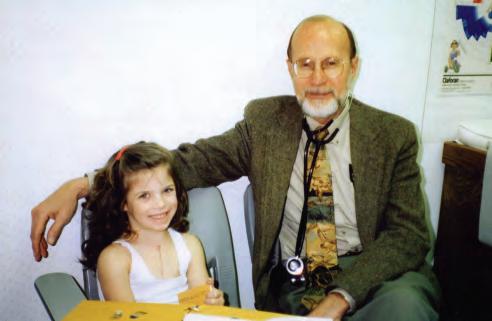
MORE ON PAGE 126
1972
Robert Wolfe, MD, initiates the first regional Pediatric Cardiology outreach program. Clinics held in 10 sites across three Intermountain West states provide more than 100 visits annually.
MORE ON PAGE 78
1974
John Githens, MD—for the second time— serves as interim chair. Frederick Battaglia, MD, is named Department chair.
MORE ON PAGE 30 AND 18
197O s
K. Michael Hambidge, MD, ScD, demonstrates the importance of zinc deficiency in infants and children.
MORE ON PAGE 110
Dr. John Githens Dr. Frederick Battaglia
Dr. C. Henry Kempe
Patient Tara Pilch and Dr. Robert Wolfe
42 DEPARTMENT OF PEDIATRICS TIMELINE
1975
Barry Rumack, MD, publishes the Rumack-Matthew nomogram for assessing the likelihood of liver damage from acetaminophen overdose. His work led to the 1981 publication demonstrating that N-acetylcysteine is as an effective treatment for acetaminophen overdose. The nomogram is used worldwide.


MORE ON PAGE 89
1976
The first cases of Kawasaki Disease are recorded in the continental United States.
MORE ON PAGE 102
1978
James Todd, MD, and colleagues identify Toxic Shock Syndrome.
MORE ON PAGE 102
1975
Stephen Goodman, MD, PhD describes Glutaric Aciduria Type I.
MORE ON PAGE 97
1975

Robert Grover, MD, in the Department of Medicine establishes the “Adaptation to Hypoxia Program,” which fosters the careers of a generation of pediatrics investigators, including Kurt Stenmark, MD, and Steven Abman, MD.

MORE ON PAGE 140
1978
The Barbara Davis Center for Childhood Diabetes is established to advance Type 1 diabetes research, prevention, and patient care.
MORE ON PAGE 63
Dr. Barry Rumack
Dr. James Todd
43 DEPARTMENT OF PEDIATRICS TIMELINE
Dr. Stephen Goodman
1980–1989
1980
James Todd, MD, leads the C. Henry Kempe Center for Investigative Pediatrics to provide support and facilities for pediatric faculty members at The Children’s Hospital.

MORE ON PAGE 134
1982
Frank Accurso, MD, Keith Hammond, MD, Steven Abman, MD, Ronald Sokol, MD, Mary Reardon, MD, and Ernest Cotton, MD, initiate the nation’s first statewide newborn screening program for cystic fibrosis.
MORE ON PAGE 114
1982
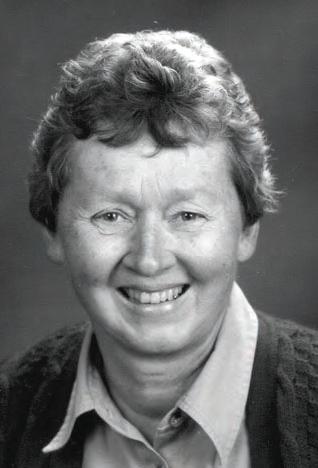
Community pediatrician and clinical faculty member James Strain, MD, is elected president of the American Academy of Pediatrics.

MORE ON PAGE 122
1982–1985
Ronald Sokol, MD, and Mary Anne Guggenheim, MD, demonstrate the importance of Vitamin E in human nutrition.
MORE ON PAGE 93
1984
Randi Hagerman, MD, and Pamela McBogg, MD, publish The Fragile X Syndrome: Diagnosis, Treatment and Research, the first book on the subject.

MORE ON PAGE 88
1984
As president of The Association of Medical School Pediatric Department Chairs, Inc., Frederick Battaglia, MD, guides the founding of the Pediatric Scientist Development Program.
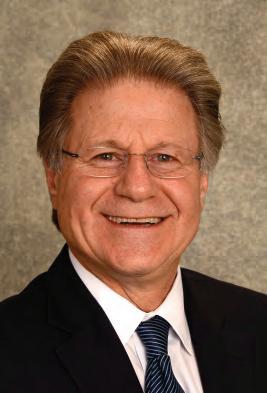
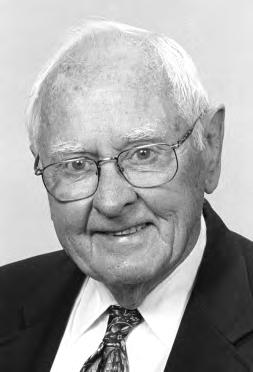
MORE ON PAGE 18
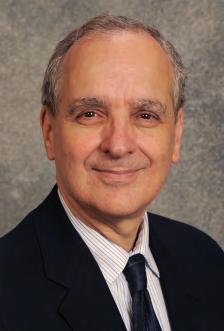 Dr. Ronald Sokol
Dr. James Strain
Dr. Mary Anne Guggenheim
Dr. Ronald Sokol
Dr. James Strain
Dr. Mary Anne Guggenheim
44 DEPARTMENT OF PEDIATRICS TIMELINE
Dr. Frank Accurso
1988
Steven Poole, MD, and Barton Schmitt, MD, launch the nation’s first pediatric after-hours telephone triage and advice program.
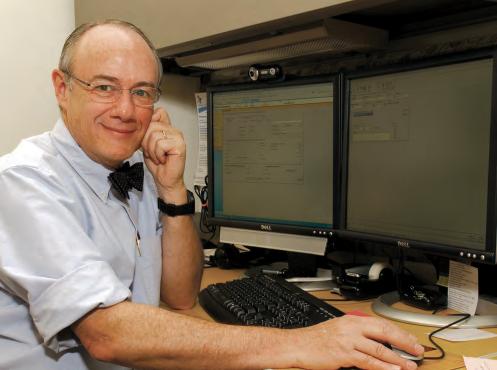
MORE ON PAGE 119
1986
Mary Glodé, MD, and Jane Burns, MD, join international coauthors in publishing “The treatment of Kawasaki syndrome with intravenous gamma globulin,” the first study demonstrating the therapy’s safety and efficacy in reducing Kawasaki-related coronary-artery abnormalities.
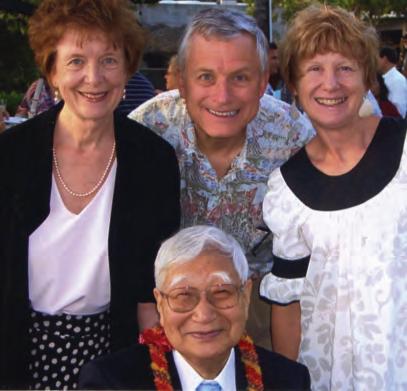
MORE ON PAGE 102
1986
James Strain, MD, becomes the only physician to serve the American Academy of Pediatrics as both president and executive director.


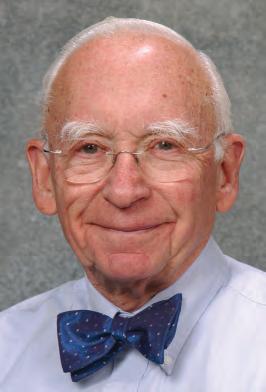
MORE ON PAGE 122
1987
David Kaplan, MD, MPH, founds Denver’s first School-Based Health Center at Abraham Lincoln High School, one of the first such clinics in the country.
MORE ON PAGE 74
1989
Gerald Merenstein, MD, is appointed interim Department chair.

MORE ON PAGE 30
1989
The University of Colorado Health Sciences Center and The Children’s Hospital sign a Letter of Intent to enter into an affiliation.
1988
Donald Schiff, MD, community pediatrician and clinical faculty member, is elected president of the American Academy of Pediatrics.
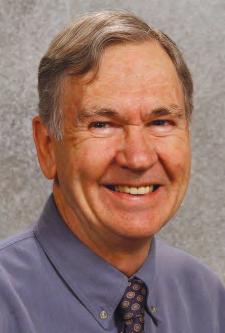
MORE ON PAGE 122
MORE ON PAGE 54
Dr. Steven Poole
Dr. Donald Schiff
Dr. Gerald Merenstein
Dr. David Kaplan
Dr. Barton Schmitt
45 DEPARTMENT OF PEDIATRICS TIMELINE
Drs. Mary Glodé, Jim Todd and Jane Burns with Dr. Tomisaku Kawasaki.
®
1990–1999
1990
The titles of Chair of the Department of Pediatrics in the School of Medicine and Pediatrician-in-Chief of The Children’s Hospital are combined. M. Douglas Jones, Jr., MD, is the first to hold the dual position.
MORE ON PAGE 22
1990
As Director of Health Policy and the State Medically Indigent Programs for the University of Colorado, Stephen Berman, MD, creates a state-funded Colorado Child Health Plan, greatly expanding insurance coverage for Colorado children.
MORE ON PAGE 125
1992
John Kinsella, MD, Steven Neish, MD, Elizabeth Shaffer, MD, and Steven Abman, MD, demonstrate the efficacy of inhaled nitric oxide therapy in sick newborns with pulmonary hypertension.
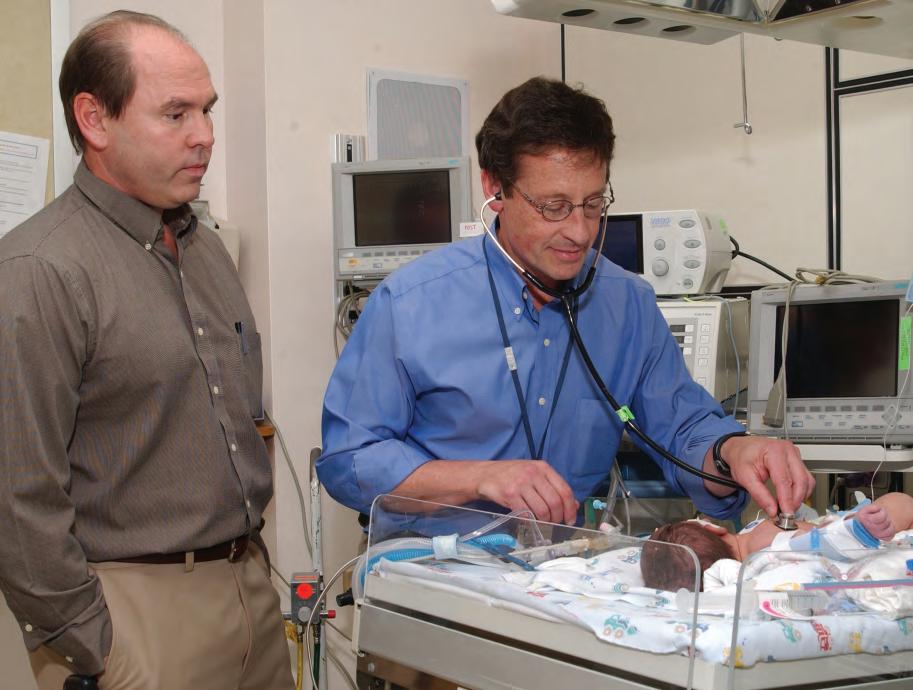
MORE ON PAGE 142
1993
K. Michael Hambidge, MD, ScD, establishes the nation’s first Section of Pediatric Nutrition.

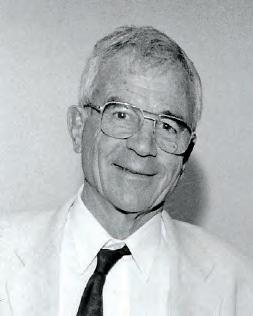
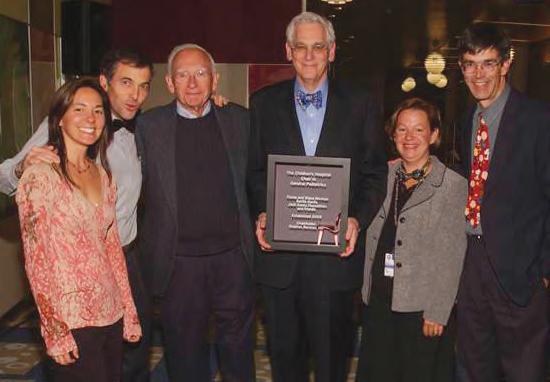
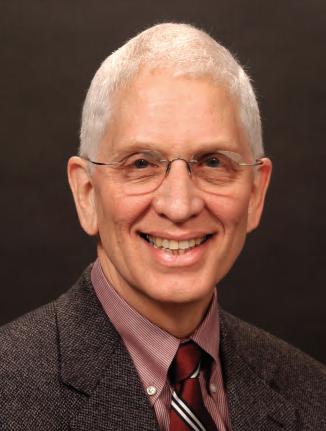
MORE ON PAGE 110
1994
Steven Poole, MD, and colleagues create the nation’s first regional pediatric locum tenens program to support pediatricians in the Rocky Mountain region.
MORE ON PAGE 151
L-R: Drs. Shale Wong, Matthew Daley, Donald Schiff, Stephen Berman, Maya Bunik, and Robert Brayden Dr. M. Douglas Jones, Jr.
46 DEPARTMENT OF PEDIATRICS TIMELINE
Drs. John Kinsella and Steven Abman
1995
Tania Khan, MD, Jeffrey Wagener, MD, Frank Accurso, MD, David Riches, MD, and others identify very early airway inflammation in infants with cystic fibrosis.
MORE ON PAGE 114
1995
The Board of Regents of the University of Colorado and the Board of Directors of The Children’s Hospital approve a formal affiliation agreement.
MORE ON PAGE 54
1995
Harley Rotbart, MD, develops polymerase chain reaction (PCR) for diagnosing enteroviral infections, opening the door for many other PCR-based tests.
MORE ON PAGE 102
1999
Fitzsimons Army Medical Center is decommissioned, paving the way for the creation of the new Fitzsimons Medical Campus.


MORE ON PAGE 60
1999
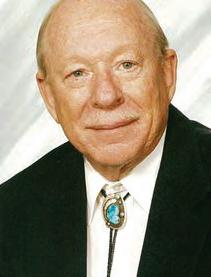
Community pediatrician and clinical faculty member Donald Cook, MD, is elected president of the American Academy of Pediatrics.
MORE ON PAGE 122
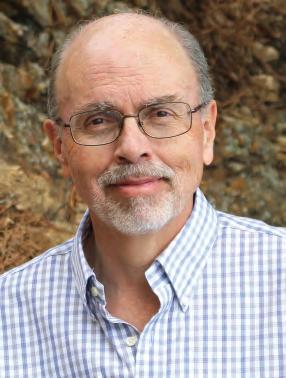 Architect’s rendering of the new Fitzsimons Medical Campus
Dr. Harley Rotbart
Architect’s rendering of the new Fitzsimons Medical Campus
Dr. Harley Rotbart
47 DEPARTMENT OF PEDIATRICS TIMELINE
Dr. Donald Cook
2000–2009
2000
Stephen Berman, MD, is elected president of the American Academy of Pediatrics.
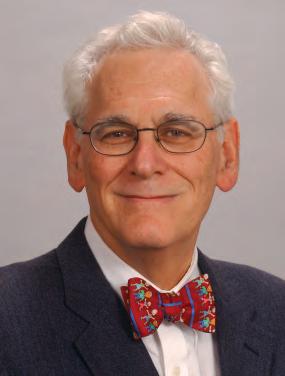
MORE ON PAGE 134
2003
The Children’s Hospital opens the first experimental therapeutics program in the Rocky Mountain region to conduct phase I clinical trials for children with cancer. Lia Gore, MD, serves as director of the team effort.

MORE ON PAGE 100
2003
Nancy Krebs, MD, and others publish the seminal study “Prevention of pediatric overweight and obesity” as part of the American Academy of Pediatrics Committee on Nutrition.
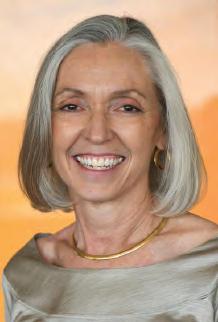

MORE ON PAGE 110
2002
Kurt Stenmark, MD, and Maria Frid, PhD, are the first to identify that pulmonary artery endothelial cells can become smooth muscle cells, advancing understanding of pediatric pulmonary hypertension.
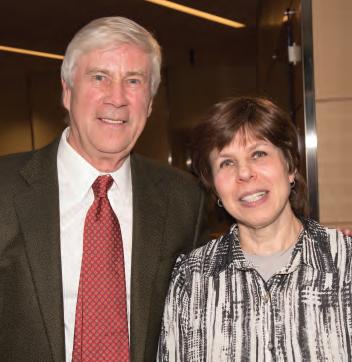
MORE ON PAGE 84
2004
Stenmark and Frid are the first to identify the appearance and contribution of progenitor cells to pulmonary vascular remodeling. MORE ON PAGE 122
2005
2004
Cara Mack, MD, establishes the immunologic basis for liver injury in biliary atresia.
MORE ON PAGE 93
Myron Levin, MD, Adriana Weinberg, MD, Anthony Hayward, MD, PhD, and associates publish results confirming the efficacy of varicella virus vaccine in shingles prevention, leading to its licensure. As of 2017, immunization prevents an estimated 100,000 cases annually of severe herpes zoster.
MORE ON PAGE 102
Dr. Lia Gore
Dr. Nancy Krebs
Dr. Cara Mack
Drs. Kurt Stenmark and Maria Frid
48 DEPARTMENT OF PEDIATRICS TIMELINE
Dr. Stephen Berman
2006
Stephen Daniels, MD, PhD, is named Chair of the Department of Pediatrics in the School of Medicine and Pediatrician-in-Chief at The Children’s Hospital.

MORE ON PAGE 26
2006
Steven Poole, MD, and the Section of Community Pediatrics launch the nonprofit Colorado Children’s Healthcare Access Program which opens the doors of 150 Colorado private pediatric practices to children receiving Medicaid.
MORE ON PAGE 125
2007
Marilyn Manco-Johnson, MD, and associates publish research demonstrating the efficacy of prophylactic Factor VIII in improving quality of life for boys with severe hemophilia.
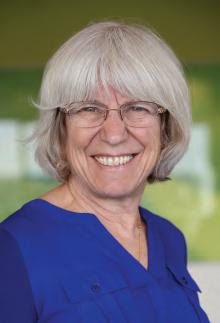
MORE ON PAGE 100
2007
The Children’s Hospital becomes the first freestanding pediatric facility in the nation to adopt a fully integrated electronic health record system.

MORE ON PAGE 119
2007
The Children’s Hospital opens on Fitzsimons Medical Campus, later renamed Anschutz Medical Campus.
MORE ON PAGE 66
2007
James Todd, MD, Steven Poole, MD, and Steven Federico, MD, provide leadership in drafting the Medical Home Bill passed by the Colorado General Assembly, unique in requiring that every child on public health insurance must receive primary care with defined medical home services.
MORE ON PAGE 125
2008
The launch of the Linda Crnic Institute for Down Syndrome—the first basic, translational and clinical research center for people with Down syndrome—leads to the 2010 opening of the Anna and John J. Sie Center.
MORE ON PAGE 118
 Dr. Stephen Daniels
The Atrium at Children’s Hospital Colorado
Dr. Stephen Daniels
The Atrium at Children’s Hospital Colorado
49 DEPARTMENT OF PEDIATRICS TIMELINE
Dr. Marilyn Manco-Johnson
2010–2018
2010
Frank Accurso, MD, and colleagues publish “Effect of VX-770 in persons with cystic fibrosis and the G551D-CFTR mutation,” the first large-scale clinical trial of a drug that can improve lung function in patients with cystic fibrosis.
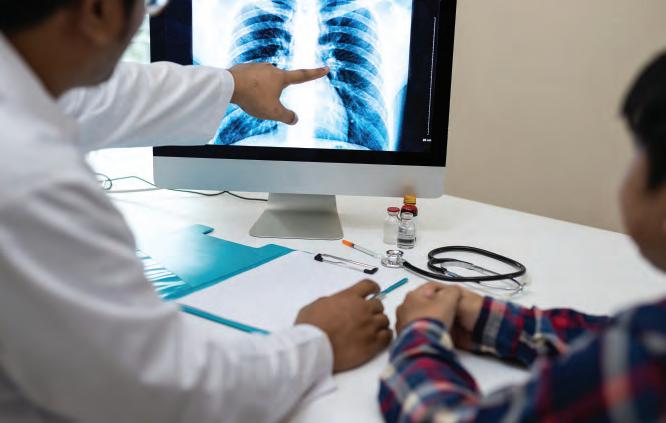
MORE ON PAGE 114
2011
The Center for Global Health in the Colorado School of Public Health is established with the leadership of Stephen Berman, MD, and Edwin Asturias, MD.
MORE ON PAGE 132
2015
Joel Friedlander, DO, Robin Deterding, MD, Emily DeBoer, MD, Jeremy Prager, MD, and David Fleischer, MD, establish the nation’s first pediatric clinical program for unsedated transnasal esophagoscopy.

MORE ON PAGE 93
PATIENT BENEFITS
The benefits of unsedated transnasal esophagoscopy to patients are significant—the procedure reduces time, risk, and cost.
1 2 1/3
HOUR HOURS COST
1 hour is the average time from admit to discharge compared to 4 hours with sedated endoscopy
2 hours without eating instead of 10 hours with general anesthesia
One third the cost of sedated endoscopy
50 DEPARTMENT OF PEDIATRICS TIMELINE
Joel Friedlander, DO, (right) and Clinton T. Smith, BSN, RN, CPN, perform an unsedated outpatient TNE (transnasal esophagoscopy) procedure at Children’s Hospital Colorado.
2015
Children’s Hospital Colorado became the first children’s hospital to be awarded the American Hospital Association Quest for Quality Prize.

MORE ON PAGE 119
2018
Co-investigators Kevin Messacar, MD, and Samuel Dominguez, MD, PhD, Section of Infectious Disease, and Kenneth Tyler, MD, Department of Neurology, lead the University of Colorado physician research team confirming linkage between enterovirus D68 and acute flaccid myelitis.
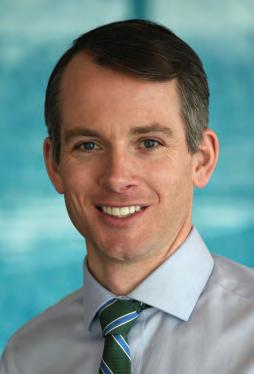

MORE ON PAGE 70
“Our current position of excellence rests on the outstanding accomplishments of those who preceded us. This platform, including our partnership with Children’s Hospital Colorado, is our springboard to a future filled with critical scientific discoveries, important advances in clinical care, training the pediatric leaders of the future, and advocacy for the health and well-being of all children.”
–Stephen Daniels, MD, PhD Chair, Department of Pediatrics, 2018
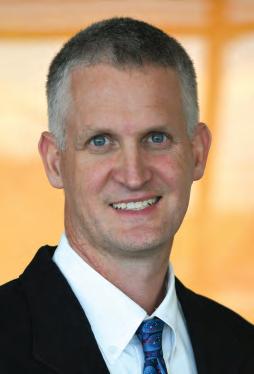 Dr. Kevin Messacar Dr. Sam Dominguez
Dr. Kevin Messacar Dr. Sam Dominguez
51 DEPARTMENT OF PEDIATRICS TIMELINE
CELEBRATING THE PEDIATRICIAN/PATIENT CONNECTION



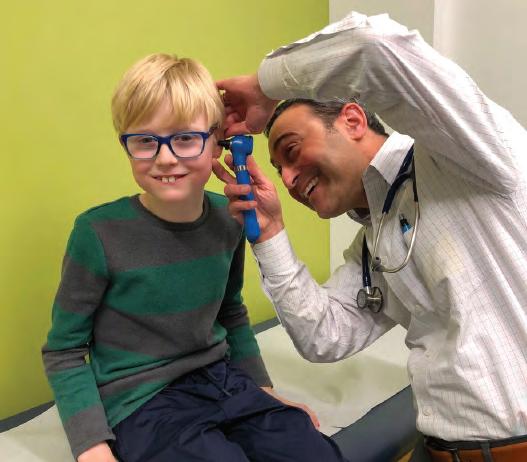

“The dividend in pediatrics is the kids. They’re spontaneous, expressive, and basically happier and more honest than adults.”
–Jules Amer, MD
Noah Makovsky, MD, Stapleton Pediatrics, and patient
Carol Okada, MD, Denver Health, and patients
Lula Lubchenco, MD, and patient
Robin Deterding, MD, and patient
PARTNERSHIPS
Through its diverse partnerships, the Department of Pediatrics is able to expand medical education opportunities for students, residents, and fellows significantly. Each practice environment offers a distinct training experience, connects trainees with patients in new ways, and contributes to a higher level of competence and compassion. The Department acknowledges the following care partners with gratitude.
CONTENTS The Affiliation 54 Children’s Hospital Colorado 56 Denver Health 58 Fitzsimons Army Medical Center 60 National Jewish Health 62 Barbara Davis Center for Childhood Diabetes 63
53 DEPARTMENT OF PEDIATRICS PARTNERSHIPS
THE AFFILIATION Looking
Back
For more than 50 years, the prospect that the University of Colorado School of Medicine Department of Pediatrics and The Children’s Hospital might align staff and services was a topic of discussion, debate, disagreement and—at several points—near decision. It proved an elusive goal during C. Henry Kempe, MD’s chairmanship, with a promising outcome slipping away in the 1970s. It was not until the late 1980s, when the Department was under the chairmanship of Frederick Battaglia, MD, that the roots of the current agreement took hold. A Letter of Intent between The Children’s Hospital and The University of Colorado Health Sciences Center (UCHSC) was entered in 1989. It would be another seven years before a formal affiliation agreement was complete.
According to M. Douglas Jones, Jr., MD, the chairman chosen to operationalize the affiliation, much of the credit for the success lies in the vision and tenacity of Frances “Salty” Welborn, then chair of The Children’s Hospital Board of Directors, and UCHSC Chancellor Bernard “Bernie” Nelson, MD. The two leaders saw the affiliation as the best course to elevate the health of the region’s children, the training of new physicians and the work of their respective institutions. The pivotal decision was recorded in Jones’ Chairman’s Letter for the Department of Pediatrics’ biennial report for 1995–1996.
Dear Friends of Pediatrics,
CHAIRMAN’S LETTER 1995–1996
A landmark event occurred at The Children’s Hospital Board of Directors meeting on July 25, 1996. Another took place on August 8, 1996, at the University of Colorado Board of Regents meeting. On those dates, the Children’s Board and the CU Board of Regents approved in principle an agreement defining an affiliation between The Children’s Hospital and the University of Colorado Health Sciences Center. The final document represented the work of a committee co-chaired by Lua R. Blankenship, Jr., president and CEO of The Children’s Hospital, and Vincent A. Fulginiti, MD, chancellor of the Health Sciences Center. Other members were David R. Clarke, MD, surgeon-in-chief, Peter Durante, MD, PPARR (Psychiatry, Pathology, Anesthesiology, Radiology, Rehabilitation Medicine)-in-chief, Alden Harken MD, chairman of the Department of Surgery, School of Medicine, Richard D. Krugman, MD, dean of the School of Medicine, Dennis Matthews, MD, representing non-full-time faculty Children’s-based physicians, John Strain, MD, president of the medical staff, Wallace White, MD, president-elect of the medical staff and myself. David Hunter, a consultant, acted as facilitator.
The document proceeded through draft after draft as a result of dialogue with a Children’s Board Affiliation Task Force chaired by Michael Kurtz, the Medical Board of the Children’s Medicine Staff and the School of Medicine Executive Committee and Faculty Senate, as well as a number of individuals. The final document reaffirms the best in each organization. The Children’s Hospital is an open-staffed, community-based hospital. Over time, the leadership of Children’s-based medical staff departments will be provided by full-time School of Medicine faculty who are responsible to the School of Medicine to provide academic leadership, and to Children’s and the community to provide leadership that assures the highest quality clinical service. The Agreement specifies that, except for preexisting arrangements and jointly agreed to exceptions, pediatric care provided by School of Medicine full-time faculty will be located at Children’s. Ultimate responsibility for clinical care lies with the Children’s Board of Directors and, for academic programs with the Board of Regents. At the same time, the agreement acknowledges that the two responsibilities are not strictly separable and that a spirit of cooperation will need to prevail. The document provides that any disputes will be referred to a representative Affiliation Committee with a composition similar to that of the Committee that drafted the document.
This agreement brings together one of the country’s best children’s hospitals with one of its best pediatric departments and pediatric subspecialty groups. It is in part an index of how both institutions have changed in the past 25 years. But in largest part, it bears testimony to visionary leadership at both institutions and to a willingness to concentrate on what two excellent organizations have in common rather than on the differences. The result is unquestionably a benefit to children.
M. Douglas Jones, Jr., MD, Chair, 1990–2005
54 DEPARTMENT OF PEDIATRICS PARTNERSHIPS
The importance of the affiliation to the School of Medicine’s child health programs was obvious. Vital but less visible were the importance of increased clinical revenue to the School’s financial position and the impact of a $1 million gift from The Children’s Hospital to its research programs. Each played a role in enabling the move to Fitzsimons a decade later.

COMMUNITY PHYSICIAN SUPPORT PROVED A DRIVING FORCE
Department of Pediatrics’ clinical faculty member Michael Kurtz, MD, chaired the Children’s Board Affiliation Task Force during the lengthy and often challenging dialog resulting in the 1996 agreement.


Community pediatricians had urged the move several years prior, with 110 signing a memo to The Children’s Hospital Board of Directors commending the alliance.
When action stalled due to practice model concerns, the Committee of Six stepped forward. In a 1990 letter to Steering Committee Members, they wrote:
Again, our message, is it is time to compromise—BOTH sides. There are outstanding people at both institutions and we expect leaders to merge from TCH and the University. The final product should not resemble TCH or The University but be a new product using the best aspects of each. Leadership roles should not be restricted to those with academic credentials, but should take service heavily into consideration. Everyone needs to be open-minded. We can all learn from each other. Most of us trained in a university setting. We know that an academically oriented hospital has a lot to offer our patients. We also know there are aspects of this type of facility that many of our patients would not like and that is why it is important to preserve the qualities for which TCH is noted. Therefore, the private practice model should not only be allowed to continue, but should be encouraged.
Our committee would be happy to assist in any way if asked. Our only motive is a quality institution where we can hospitalize our patients and obtain consultations as needed. We know that the affiliation process is difficult for everyone. We need to stop thinking in terms of “us” and “them” and realize that it is “we” that need to work together and move forward.
Sincerely,
Gordon Blakeman, MD Sandra Stenmark, MD
David Kessel, MD Nick Tschetter, MD
Michael Kurtz, MD Wallace White, MD
Frances “Salty” Welborn (left), chair of The Children’s Hospital Board of Directors in 1989
Chancellor Bernard Nelson, MD Michael Kurtz, MD
55 DEPARTMENT OF PEDIATRICS PARTNERSHIPS
STEERING COMMITTEE LETTER 1990, EXCERPT
PARTNERSHIPS
CHILDREN’S HOSPITAL COLORADO


Today’s Children’s Hospital Colorado traces its roots to 1897 when Minnie C. T. Love, MD, a physician who had earned her medical degree at Howard University in Boston, led the establishment of the Babies Summer Hospital in Denver’s City Park. Tents provided shelter, medical staff numbered six, nurses were volunteers, and Colorado’s sunshine and fresh air were the key components in the hospital’s formulary.
The volunteers providing handson care envisioned a permanent facility and, in 1908, officially incorporated their organization as The Children’s Hospital. The mission: “to care for sick, injured and crippled children from birth to 16 years of age, irrespective of sex, creed, color, nationality or place of birth.” They began renovating a residence at 2221 Downing Street in Denver into a 30bed hospital in 1909 and admitted the first patients in 1910.
By 1917, demand for care had driven a successful fundraising effort making possible a new, larger structure at the intersection of Downing Street and 19th Avenue. Fastforward nine decades, and Children’s Hospital—now a quaternary care pediatric center influencing child health internationally through clinical care, research, education, and advocacy—moved once more, this time to the stateoftheart Fitzsimons Medical Campus in Aurora. In 2011, it formally became Children’s Hospital Colorado, the flagship of a pediatric healthcare system with more than 10,000 professionals serving patients from a sevenstate region. An extensive look at care in place and in planning can be found in Near Horizons on page 203.
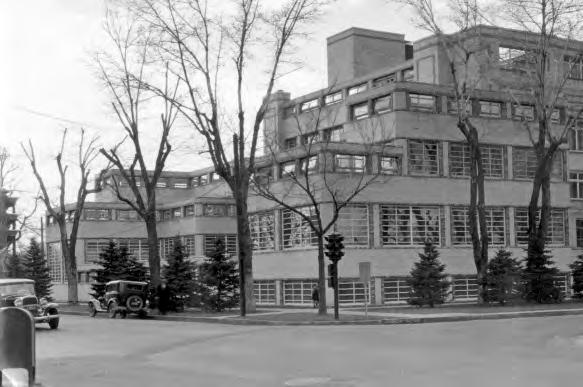 Children’s Hospital Colorado, Aurora campus atrium
Colorado Springs campus under constrution
Children’s Hospital Colorado, Aurora campus atrium
Colorado Springs campus under constrution
56 DEPARTMENT OF PEDIATRICS PARTNERSHIPS
The Children’s Hospital, circa 1917
PARTNERSHIPS
LEADERSHIP
Jena Hausmann, MHA, has been guiding Children’s Hospital Colorado since 2015. As president and CEO, she has championed innovation and research, worked to improve pediatric mental health, and led initiatives to reduce the cost of care and increase transparency. She has, as well, supported Children’s advocating for the wellbeing of patients and their families through legislative efforts.
In 2018: Recognitions
Children’s Colorado is consistently ranked among the nation’s best pediatric hospitals. In 2018, it was:
Named one of U.S. News & World Report’s “Top 10,” with rankings in all 10 recognized specialty areas.
Featured in 5280 Magazine’s “Top Docs” list, with 94 providers in 12 categories highlighted (27% of the magazine’s complete listing).
Jena Hausmann President/CEO
Hausmann is an active in Denver’s business and philanthropic communities and serves on the boards of the Colorado Hospital Association, the Denver Museum of Nature and Science, the Global Down Syndrome Foundation, and the Denver Metro Chamber of Commerce. A member of the Colorado Forum, she also serves on the Center for Global Health executive committee.
A graduate of Colorado College, Hausmann earned her master’s degree in Healthcare Administration from the University of Minnesota and held several administrative posts within the Children’s Hospital Colorado organization prior to becoming CEO. She is the recipient of numerous healthcare industry and leadership awards and presents often on important topics in pediatric health.
Recognized by Parents Magazine as one of the 20 “Most Innovative Children’s Hospitals” in the United States, an honor linking how hospitals with a proven track of innovation and medical advances share the knowledge gained to better all pediatric outcomes.
Chosen to receive the 2018 Governor’s Award for Worksite Wellness in recognition of efforts to build a culture of health and safety in the workplace.
Recognized—for the third time—as a “Magnet Hospital” by the American Nurses Credentialing Center, a designation achieved by only three percent of all hospitals.
Chosen for the Nicolas E. Davies Award of Excellence recognizing the use of technology to improve clinical care delivery and patient outcomes.
Named by Hospital and Health Networks Magazine as a “most Wired” hospital for the sixth consecutive year, recognizing Children’s Colorado is among providers using advanced technology to improve care delivery.
GUIDING FORCE
Dr. Doris (Dori) Biester’s long relationship with The Children’s Hospital included positions as Senior Vice President/Director of Nursing, Senior Vice President/ Patient Care Services, Executive Vice President, and Chief Operating Officer. In 1998, she was named President/CEO. Under her leadership, The Children’s Hospital consistently ranked among the top 10 children’s hospitals (U.S. News & World Report) and became a national model for professional nursing. Biester was instrumental in the planning and development of the new hospital which opened on the Fitzsimons Medical Campus in 2007.
Doris Biester, PhD, MSN, BSN President/CEO, 1998–2007
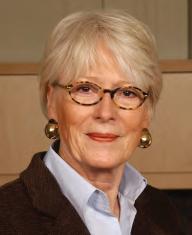
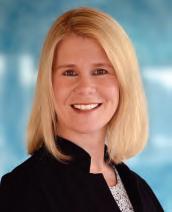
57 DEPARTMENT OF PEDIATRICS PARTNERSHIPS
DENVER HEALTH
Denver Health was founded in 1860 as City Hospital —16 years before Colorado became the nation’s 38th state. The original structure, located near 11th Avenue and Wazee Street, was replaced in 1873 by a new medical center at the intersection of 6th Avenue and Cherokee Street. It was one of many health care facilities established during the late 1800s to care for an influx of tuberculosis patients hoping to find healing in the region’s drier climate, cleaner air, and abundant sunshine.
In 1923, the hospital was renamed Denver General Hospital. It received its current name—Denver Health Medical Center—in 1997. It is part of an integrated health system governed by the Denver Health and Hospital Authority and encompassing acute and primary care, family health centers, schoolbased health clinics, correctional care, and emergency response services. At this writing, Denver Health cares for one of every three Denverarea children annually and sees nearly 930,000 total patient visits. It is the state’s primary safetynet institution and serves as a national model for caring for the underserved.

Now serving the community as Denver Health School-based Health Centers: A National Model


Residents Become Leaders
Simon Hambidge, MD, PhD, Steven Federico, MD, and Paul Melinkovich, MD, are among the many Denver Health physicians who completed their Pediatric residencies at the University of Colorado School of Medicine, practicing at Denver Health as well as The Children’s Hospital. Hambidge is CEO of Denver Community Health Services

(DCHS) and Chief Ambulatory Officer. Federico serves as Director, General Pediatrics/School and Community Programs. Melinkovich, now Professor Emeritus, served as Director of DCHS prior to his retirement.

In 1987, David Kaplan, MD, MPH, founded Denver’s first school-based health clinic at Abraham Lincoln High School. It was also one of the first in the nation. Established by The Children’s Hospital, the highly successful program became a Denver Health program in 2007. At this writing, there are 17 school-based centers throughout Denver offering no-cost comprehensive wellness and mental health services to all Denver Public School students.
 Denver Health circa 1860, founded as City Hospital
Denver Health circa 1860, founded as City Hospital
58 DEPARTMENT OF PEDIATRICS PARTNERSHIPS
LEADERSHIP
Arnold Silverman, MD, graduated from of the University of Colorado School of Medicine and completed his residency in Pediatrics at the University of Minnesota. After becoming one of the nation’s first fellowshiptrained Pediatric Gastroenterologists, he returned to Colorado to cofound the Pediatric GI Fellowship with Frank Cozzetto, MD, in 1965. In the mid1970s, when Department Chair C. Henry Kempe, MD, began to forge a Pediatric residency program connecting Children’s Hospital, Colorado General Hospital, and Denver General Hospital, he appointed Silverman to direct Pediatrics at Denver General Hospital. In 1996, the Department of Pediatrics honored him with its Career Teaching Scholar Award. The Arnold Silverman Endowed Chair in Digestive Health has been established in his name.

PARTNERSHIPS
John Ogle, MD, earned his medical degree from Washington University School of Medicine in St. Louis. He completed his residency in Pediatrics at Children’s Medical Center of Dallas/University of Texas Southwestern Medical School Program and his fellowship in Pediatric Infectious Disease at the University of Colorado School of Medicine. He succeeded Silverman as Director of Pediatrics at Denver Health and was named Vice Chair of the Department of Pediatrics at the University of Colorado School of Medicine. In 2010, Ogle was named a Career Teaching Scholar by the Department of Pediatrics; he retired in 2014.
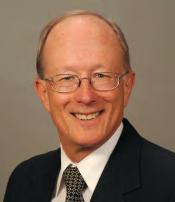
Carol Okada, MD, earned her medical degree at Washington University School of Medicine in St. Louis and completed her Pediatrics residency at the University of Colorado School of Medicine. She became a Denver Health physician in 1998 and spent 11 years with the hospital’s pediatric urgent care center, pediatric ward and intensive care unit teams. From 2006–2010, she was also the Associate Residency Program Director in the Department of Pediatrics. After completing her fellowship in Pediatric Critical Care Medicine at the School of Medicine, she rejoined Denver Health as Director of Pediatrics.

Denver’s Community Health Centers
Department of Pediatrics faculty including Stephen Berman, MD, Bonnie Camp, MD, PhD, and Paul Melinkovich, MD, played key and early roles in Denver Health’s innovative community health initiative. The vibrant story, which Pulitzer Prize-winning author Eileen Welsome describes as tracing the progression “from the Civil Rights Act to the Affordable Care Act,” was published by Denver Community Health Services in 2016.
 Arnold Silverman, MD Director of Pediatrics, Denver General Hospital Professor Emeritus
John Ogle, MD Director of Pediatrics, Denver Health Professor Emeritus
Arnold Silverman, MD Director of Pediatrics, Denver General Hospital Professor Emeritus
John Ogle, MD Director of Pediatrics, Denver Health Professor Emeritus
59 DEPARTMENT OF PEDIATRICS PARTNERSHIPS
Carol Okada, MD Director of Service, Inpatient Pediatrics
FITZSIMONS GENERAL HOSPITAL, 1973
First designated as Army Hospital 21, the facility was formally dedicated in fall 1918. It initially served as a specialty hospital to treat World War I soldiers affected by chemical weapons and tuberculosis. In July 1920, it was renamed Fitzsimons General Hospital in tribute to Lt. William T. Fitzsimons, the first U.S. medical officer killed in action. The main building—still known as Building 500—was completed in 1941. Adding 610 beds, it brought total bed capacity to 2252 and made Fitzsimons the nation’s largest general army hospital. Redesignated Fitzsimons Army Medical Center in 1974, “Fitz” served the United States, its service personnel and their families, for 78 years. Its closure was finalized in 1999.
FITZSIMONS ARMY MEDICAL CENTER
There is symmetry in the fact that Children’s Hospital Colorado and the University of Colorado School of Medicine now reside on the former Fitzsimons Army Medical Center campus. The Departments of Pediatrics at both institutions enjoyed a strong partnership for decades prior to Fitzsimons deactivation in June 1996.

Colonel James Shira, MD, USA (Ret), who chaired the Department of Pediatrics at Fitzsimons prior to retiring to join The Children’s Hospital staff in 1979,
describes the connection in even stronger terms: “We had a very tight relationship from the 1960s into the closure of Fitz. Fitzsimons was a grand institution: provided excellent care; educated hundreds of physicians, nurses, corpsmen and women; produced and published hundreds of scholarly articles and gave thousands of lectures. The Army should be very proud of Fitzsimons.”
Dr. Shira, also an Army medical historian, continues, “The Department of Pediatrics began as a service in the Department of Medicine immediately after WWII. It became an independent department in the late 1960s. We were a very busy department all year round, inpatient and outpatient, while also providing consultation visits throughout the 5th Army area every two to three months.”
The commemorative history published by Fitzsimons in 1996 spoke to the scope of its pediatric services in the final years of operation (see inset text below).
THE PUBLIC AFFAIRS OFFICE 1996
The Department of Pediatrics at Fitzsimons Army Medical Center provided general pediatric inpatient and outpatient care for dependents of active duty and retired personnel. We evaluate 2,000–2,500 dependents a month, providing well-child and acute care, immunizations and multiple outpatient diagnostic studies. Subspecialty care in genetics and pediatric cardiology is also available and supports a 12-state region. Our inpatient ward admits acutely ill pediatric patients while actively supporting the various surgical services, caring for post-operative orthopedics, general surgery, ear, nose and throat (ENT) urologic and ophthalmologic pediatric patients. The department also maintains an active role in Graduate Medical Education by providing training for interns, 91Cs and child health associates. Additionally, our Exceptional Family Member Program supports Fitzsimons and the region by providing developmental pediatric expertise, as well as speech, physical and occupational therapies for pediatric patients.
60 DEPARTMENT OF PEDIATRICS PARTNERSHIPS
Source: Fitzsimons Army Medical Center, Aurora, Colorado: A Commemorative History. Aurora, Colorado. Fitzsimons Army Medical Center Public Affairs Office. 1996.
Colonel Gerald Merenstein, MD, (right) shown here with fellow neonatologist L. Joseph Butterfield, MD, of The Newborn Center at The Children’s Hospital, began his career in medicine at Fitzsimons Army Medical Center in 1966. When he retired from the U.S. Army in 1986, he joined the Department of Pediatrics. He later served as Senior Associate Dean and Director of the Child Health Associate’s Program.
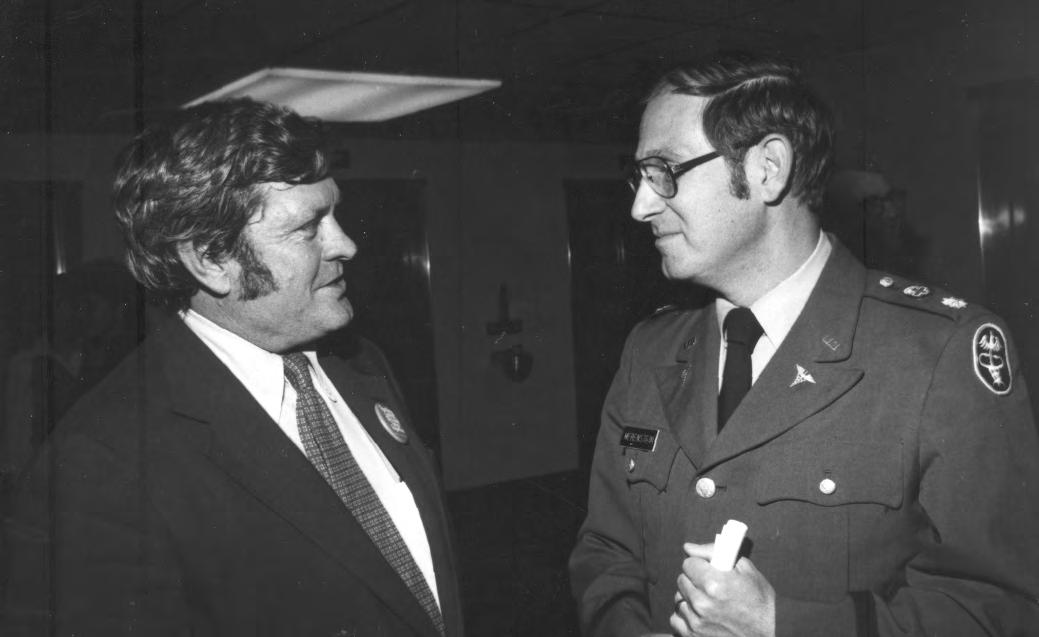
Henry Silver, MD
While not a member of the military, Henry Silver, MD, trained many who were and who would become valued contributors to the field of medicine. This photo of Silver and the following tribute are courtesy of one, Dr. Richard Ricciardi, a nurse practitioner in training at Fitzsimons in 1983 and now a faculty member at the George Washington University School of Nursing.
“I met Dr. Silver in 1983 during my first week at Fitzsimons Army Medical Center (FAMC) where I was studying to become a pediatric NP.
Colonel James Shira, MD, completed his internship and residency at Fitzsimons Army Medical Center. He served as Assistant Chief of Pediatrics at Fitzsimons (1967–1973) and teaching chief at Walter Reed Army Medical Center (1973–1975), returning to Fitzsimons as Chief of Pediatrics in 1975. Upon his retirement from the military in 1979, he joined The Children’s Hospital staff and became an Associate Chair of Pediatrics at the University of Colorado.

“Dr. Silver enjoyed coming to FAMC every week to teach the NP students and pediatric residents. The pediatric residents and NP students always looked forward to Thursdays because Dr. Silver spent the morning with us. He would begin the day with a lecture; however, I use the term lecture very loosely, because his teaching style was unique and very gestalt. His question and answer style of teaching was more of a process whereby knowledge is created and learned through the transformation of experience and active participation. He kept all of us fully engaged and on our toes with his seemingly limitless mastery of the science, pathology, treatment, and most importantly the presentation and human aspects of health, disease, and wellness in children and families. Looking back, Dr. Silver was well ahead of his peers and his time; in clinical education and practice he understood the value of using an interprofessional approach, using simulation, and creating a practice environment that is team based and patient centered with an emphasis on relationship-based care. Many of the concepts fundamental to the Patient Protection and Affordable Care Act and health care reform of today were championed by Dr. Silver.” –Dr. Richard Ricciardi

61 DEPARTMENT OF PEDIATRICS PARTNERSHIPS
Fitz & Faculty
PARTNERSHIPS
NATIONAL JEWISH HEALTH
In 2018, National Jewish Health was ranked the nation’s leading respiratory hospital. Its leadership in research, training, and clinical service began nearly 120 years ago as a compassionate response to the influx of individuals with tuberculosis (TB), known as consumption, hoping Colorado’s cleaner air and drier climate would offer relief from the thenincurable disease.
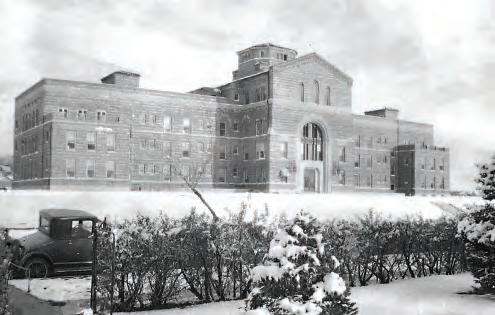
By midcentury, physicians and researchers were focusing strongly on pediatric as well as adult patients. The International Symposium on Tuberculosis in Infancy and Childhood, the world’s first conference dedicated to children with TB, was hosted at National Jewish in 1955.
National Jewish Health has been a clinical and research partner of the University of Colorado School of Medicine Department of Pediatrics and Children’s Hospital Colorado with many valuable collaborations.

LEADERSHIP
CHILDREN’S ASTHMA RESEARCH INSTITUTE AND HOSPITAL
When it was established in 1957, the Children’s Asthma Research Institute and Hospital (CARIH) was the nation’s only center focused solely on asthma and allergic diseases. The campus at 19th and Julian Streets in West Denver became the site of major findings, including the 1966 discovery by Drs. Kimishige and Teruko Ishizaka of immunoglobin E, the antibody causing asthmatic and allergic response. CARIH was also the setting of Dr. Murray Peshkin’s “parentectomy” residential program for children with intractable asthma, based on the clinical allergist’s theory that removing parents from the treatment equation would resolve psychological issues to improve outcomes. CARIH became the National Asthma Center (NAC) in 1972. In 1978, the decision was made to merge NAC and the National Jewish Hospital and Research Center.
Erwin Gelfand, MD
Professor Emeritus of Pediatrics and Immunology, University of Colorado School of Medicine Chair, Department of Pediatrics, National Jewish Health (1987–2016)
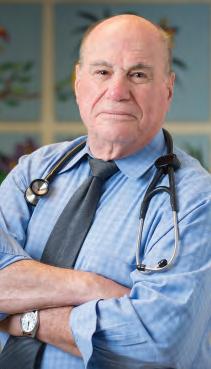
Gelfand earned his medical degree from McGill University Faculty of Medicine in Montreal, Quebec, and completed his Pediatrics residency and fellowship in Pediatric Immunology at Children’s Hospital in Boston. An international leader in the research and treatment of asthma, atopic dermatitis, and pediatric allergies, he chaired the Department of Pediatrics at National Jewish Health for 29 years, retiring in 2016. More than 75 clinical fellows graduated from the National Jewish Health Fellows Program during his tenure, and more than 100 post-doctoral students trained in his laboratory.
In 1925, the cornerstone was laid for National Jewish Health’s iconic, four-story B’nai B’rith Building. The new $500,000 structure and its programs provided for the treatment of tuberculosis across all stages of the disease. The still-legible inscription above the door reflected the philanthropic philosophy driving the original campus founding: “None may enter who can pay, none can pay who enter.”
The current campus in midtown Denver
62 DEPARTMENT OF PEDIATRICS PARTNERSHIPS
BARBARA DAVIS CENTER FOR CHILDHOOD DIABETES

Established in 1980 by benefactors Barbara and Marvin Davis, the Barbara Davis Center for Childhood
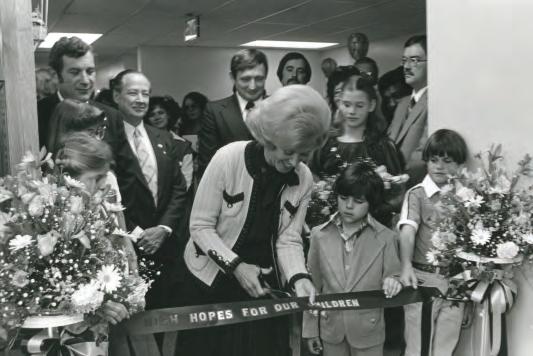
Diabetes is one of the world’s largest diabetes institutes. With support from the Children’s Diabetes Foundation, its mission is to provide stateof theart care to children and adults with diabetes, and to teach patients how to prevent or delay complications. The Center’s robust translational research addresses the prevention, cure, and most effective treatment of diabetes and associated disorders.
LEADERSHIP
Donough O’Brien, MD, FRCP Founding Director, 1980 Executive Director, 1983–1991
H. Peter Chase, MD Founding Clinical Director, 1980

H. Peter Chase, MD, Endowed Chair
George Eisenbarth, PhD, MD Executive Director, 1992–2012
Frieda and George S. Eisenbarth Clinical Immunology Endowed Chair


Marian Rewers, MD, PhD Executive Director, 2012–present
More than 7,500 children and adults with diabetes currently receive outpatient care through the Center. Patients at Children’s Hospital Colorado benefit from its clinical services and innovative research, while students, residents, and fellows on the Anschutz Medical Campus train at the leading edge of diabetes clinical care and research. The Center’s goal is to be a consistent incubator for novel ideas and discoveries in the immunology, genetics, and cell biology of diabetes. Learn more of the Center’s groundbreaking work at barbaradaviscenter.org
Georgeanna Klingensmith, MD Director of Pediatric Clinics, 1994–2010
Robert Slover II, MD Director, Pediatric Diabetes Division, 2011–present Wagner Family Chair in Childhood Diabetes

Satish Garg, MD, MBBS, DM Founding Director of Adult Clinic Director of Adult Diabetes Division, 1989–present Satish K. Garg, MD, Young Adult Clinic Endowed Chair
John Hutton, PhD (1948–2012) Research Director, 1995–2012
Lori Sussel, PhD Director of Basic and Translational Research Division, 2016–present
The Barbara Davis Center entered 2018 with:
153 active sponsored research projects
53 clinical trials
$22.1 million in sponsored research funding
151 recent peer-reviewed publications
32 major recognitions (U.S. and global)
31 faculty members
Barbara Davis opens the Center as Clinical Director
H. Peter Chase, MD, looks on. (1980)
63 DEPARTMENT OF PEDIATRICS PARTNERSHIPS
PARTNERSHIPS
AN EVOLVING CAMPUS

THE 9TH AVENUE CAMPUS

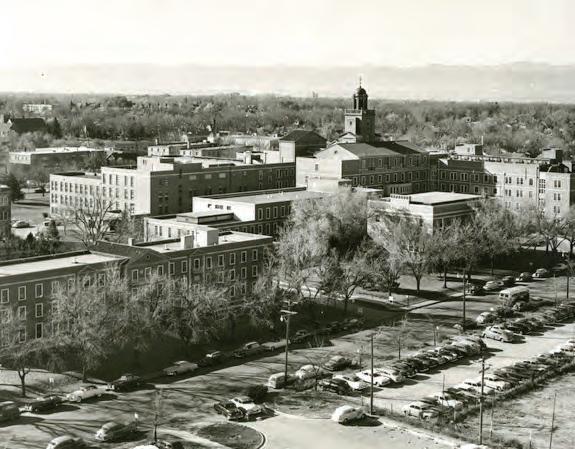
The University of Colorado School of Medicine was founded in 1883 in Boulder and relocated to Denver in 1924. Land for the new campus at 9th Avenue and Colorado Boulevard had been donated via deed in 1922 by Frederick G. Bonfils, philanthropist and publisher of The Denver Post. In addition to the School of Medicine, the 26acre campus was home to Colorado General Hospital and the School of Nursing. Years later, the campus was officially renamed the University of Colorado Health Sciences Center.
The Department of Pediatrics was headquartered at the 9th Avenue site from its founding in 1930 until 2007. The 1999 closure of Fitzsimons Army Medical Center in Aurora had made possible the creation of an expansive campus just a few miles east. By late 2008, all of the School of Medicine departments, University Hospital and The Children’s Hospital had moved to the Fitzsimons Campus, which had been renamed Anschutz Medical Campus in 2006. The 9th Avenue Campus is now being redeveloped in alignment with the local neighborhood’s own Vision Plan.
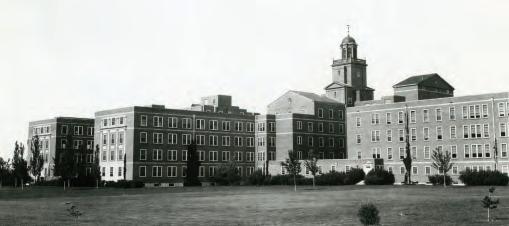 Circa 1930 A southwest view of Colorado General Hospital and the School of Medicine.
Circa 1960 The Research Bridge crossing 9th Avenue housed offices and research labs used by the the University of Colorado’s Health Sciences Center.
Circa 1950s The campus looking southwest to the Nurses’ Home, Denison Memorial Library and Colorado General Hospital
Circa 1940 The campus prior to the United States’ entering World War II and the start of Denver’s dynamic growth
Circa 1930 A southwest view of Colorado General Hospital and the School of Medicine.
Circa 1960 The Research Bridge crossing 9th Avenue housed offices and research labs used by the the University of Colorado’s Health Sciences Center.
Circa 1950s The campus looking southwest to the Nurses’ Home, Denison Memorial Library and Colorado General Hospital
Circa 1940 The campus prior to the United States’ entering World War II and the start of Denver’s dynamic growth
64 DEPARTMENT OF PEDIATRICS CAMPUS




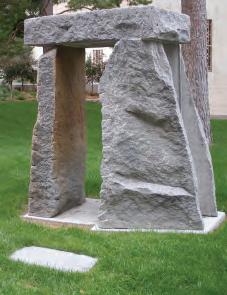 1977 The Department of Pediatrics was located on the third floor of the Research Bridge.
Circa 1990 The Rockies rise above the University of Colorado Health Sciences Center.
1985 Dr. M. Roy Schwarz speaks at the dedication of the “Plume Portal” by artist Elaine Calzolari, ”commemorating the passage of the University of Colorado School of Medicine from its first century to its second.”
The sculpture was relocated in 2008 to the new campus.
1977 The Department of Pediatrics was located on the third floor of the Research Bridge.
Circa 1990 The Rockies rise above the University of Colorado Health Sciences Center.
1985 Dr. M. Roy Schwarz speaks at the dedication of the “Plume Portal” by artist Elaine Calzolari, ”commemorating the passage of the University of Colorado School of Medicine from its first century to its second.”
The sculpture was relocated in 2008 to the new campus.
65 DEPARTMENT OF PEDIATRICS CAMPUS
1987 Expanding educational and clinical services fueled the need for a larger campus.
AN EVOLVING CAMPUS
TODAY’S CAMPUS
When Congress placed Fitzsimons Army Medical Center on the Base Realignment and Closure list in 1995, leaders from the University of Colorado Health Sciences Center and the City of the Aurora took strategic action. They proposed to the Department of Defense that part of the decommissioned base become an academic health center for the University of Colorado. The proposal was accepted, and redevelopment began shortly after base closure in 1999.
The relocation process began in 2004 with the opening of medical school research laboratories and continued for more than four years. The Department of Pediatrics and the Children’s Hospital moved to the Fitzsimons Medical Campus in 2007. All academic operations were in place by yearend 2008.
Renamed Anschutz Medical Campus, the former Fitzsimons site now houses the University’s six health sciences related colleges and schools, as well as graduate programs for the biomedical sciences. In addition to Children’s Hospital Colorado, the 256acre setting hosts UCHealth University of Colorado Hospital, the Rocky Mountain Regional Veterans Affairs hospital and residential/retail areas.


 The center concourse connecting research, academic and clinical services.
Building 500, restored and renamed The Fitzsimons Building, is on the National Historic Register.
Anschutz Medical Campus hosts one of the nation’s leading health sciences programs.
The center concourse connecting research, academic and clinical services.
Building 500, restored and renamed The Fitzsimons Building, is on the National Historic Register.
Anschutz Medical Campus hosts one of the nation’s leading health sciences programs.
66 DEPARTMENT OF PEDIATRICS CAMPUS
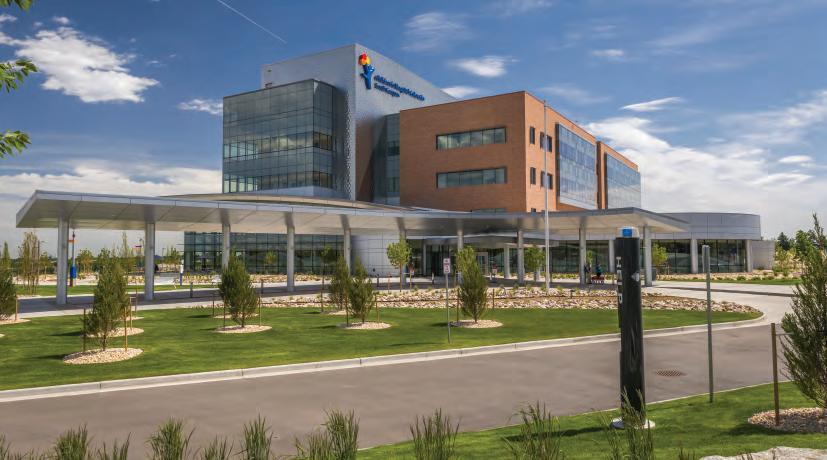

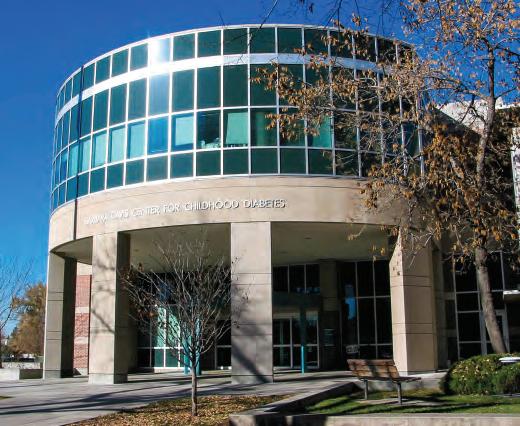
 Children’s Hospital Colorado’s South Campus (above) opened in 2014. By year-end 2018, construction of the new Children’s Hospital Colorado in Colorado Springs (right) was nearing completion.
The Barbara Davis Center for Childhood Diabetes has the largest outpatient clinic for patients with type 1 diabetes in the U.S.
Children’s Hospital Colorado’s South Campus (above) opened in 2014. By year-end 2018, construction of the new Children’s Hospital Colorado in Colorado Springs (right) was nearing completion.
The Barbara Davis Center for Childhood Diabetes has the largest outpatient clinic for patients with type 1 diabetes in the U.S.
67 DEPARTMENT OF PEDIATRICS CAMPUS
More than one million square feet of campus space are dedicated to pediatric and adult healthcare research.

2016 Children’s Hospital Colorado. 68 DEPARTMENT OF PEDIATRICS CAMPUS
CONTENTS
FOUR PILLARS
THE FOUR PILLARS
The Department of Pediatrics is dedicated to excellence across four distinct and dynamic pillars of care: Clinical Services, Advocacy, Research, and Education. It is the integration of these pillars and the professionals within them that supports new findings and better patient outcomes. The discovery of the link between Enterovirus D68 and Acute Flaccid Myelitis is a prime example.
Lorem Ipsum vel justo xxx Dolor sit amet consectuer xxx Phasellus hendrerit xxx Laoreet viverra mattis xxx Phasellus hendrerit xxx Dolor sit amet consectuer xxx Laoreet viverra mattis xxx
Clinical Service 73 Advocacy 121 Research 133 Education 147 69 DEPARTMENT OF PEDIATRICS FOUR PILLARS
Enterovirus D68 and Acute Flaccid Myelitis: The Collaborative Search for Answers
When students return to the classroom in late summer, the incidence of viral respiratory infections rises. This annual correlation is not only recognized by physicians, it has also led seasoned educators to offer their own informal diagnosis: back-to-school plague.
Such was the case in 2014 in Colorado. School began, respiratory illnesses increased, and the general pediatric population moved through the wave. But something was different. Children’s Hospital Colorado saw a significant increase in patients for related conditions, with 1185 more respiratory emergency department visits, 387 more respiratory admissions, and 96 more respiratory pediatric intensive care unit admissions than would have been expected during the season. Even more surprising than the higher numbers was the observation of patients whose initial respiratory symptoms seemed to resolve, only to be followed approximately a week later by polio-like paralysis.
“This was an unprecedented surge of respiratory disease found to be due to a newly re-emerging virus, enterovirus D68,” says Kevin Messacar, MD, assistant professor, Department of Pediatrics, Sections of Hospital Medicine and Infectious Diseases.

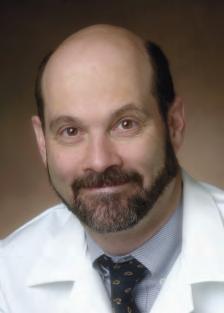

Co-investigators (L-R): Kevin Messacar, MD, and Samuel Dominguez, MD, PhD, of the Department of Pediatrics, and Kenneth Tyler, MD, chair of the Department of Neurology and Louise Baum Endowed Professor.
 Researchers classify enteroviruses (EVs) into four groups--echoviruses, polioviruses, and Coxsackie A and B viruses--and 15 species. Of these, four species are human EVs (A–D) and three are rhinoviruses (A–C).
Researchers classify enteroviruses (EVs) into four groups--echoviruses, polioviruses, and Coxsackie A and B viruses--and 15 species. Of these, four species are human EVs (A–D) and three are rhinoviruses (A–C).
70 DEPARTMENT OF PEDIATRICS FOUR PILLARS
CORRELATING DATA
Messacar and his U.S. investigative team tracked data to correlate confirmed cases of acute flaccid myelitis by month and the circulation of enterovirus D68 (depicted by shaded areas) from 2014 to 2016.
Hypothesizing the cause of the 2014 AFM surge to be an enterovirus, Children’s Colorado’s multidisciplinary team from infectious disease, neurology, radiology, and rehabilitation launched several research efforts. Collectively, they: Developed the first description of the natural history of EV-D68 acute flaccid myelitis, including the signs and symptoms, imaging findings, and the long-term outcomes of children affected Collaborated with University of Colorado research laboratories to show that the EV-D68 strains infecting Children’s Colorado patients could produce paralysis in mice and infect neurons Established surveillance for EV-D68 and helped alert the CDC and colleagues to subsequent outbreaks in 2016 and 2018

“In the midst of this outbreak, we began to see children who were unable to move an arm or a leg and had imaging of the spinal cord with findings most closely resembling polio.” Following reports from Children’s Colorado, a nationwide epidemiologic case definition was created in conjunction with the CDC for the condition: Acute Flaccid Myelitis (AFM).
AFM can be caused both by poliovirus and nonpolio enteroviruses, as well as West Nile virus and Japanese Encephalitis virus. The clinical criterion is the acute onset of flaccid limb weakness. The imaging criterion is an MRI confirming a spinal cord lesion of the gray matter that spans one or more spinal segments.
NUMBER OF CASES 0 10 20 30 40 50 AUG SEP OCT NOV DEC 2014 2014 entervirus D68 outbreak 2015 no reported entervirus D68 circulation 2016 entervirus D68 circulation NUMBER OF ACUTE FLACCID MYELITIS CASES IN THE USA AUG JUL JUN MAY APR MAR FEB JAN SEP OCT NOV DEC 2015 AUG JUL JUN MAY APR MAR FEB JAN SEP OCT NOV DEC 2016
Data from Centers for Disease Control and Prevention
71 DEPARTMENT OF PEDIATRICS FOUR PILLARS
Sharing the challenge and the credit: a slide from Messacar’s presentation at University of Colorado Department of Pediatrics Grand Rounds.
The Four-Pillar Environment
Enterovirus-related research, patient care, education, and advocacy are familiar territory for University of Colorado Department of Pediatrics faculty. Kevin Messacar, MD, credits that collaborative, connected environment and the collegiality it encourages as “a major advantage in our being able to learn what we have about D68 and determine next steps quickly.
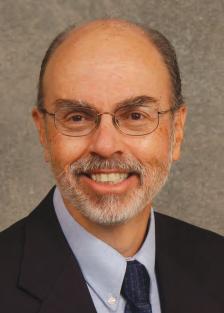
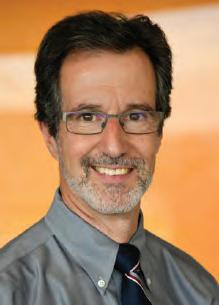
“Those of us practicing here now have had the benefit of learning from being mentored by some exceptional people. We’ve had Dr. Harley Rotbart, who came up with the first PCR assay for and wrote the first medical textbook on human enterovirus infections. He trained Dr. Mark Abzug, one of the

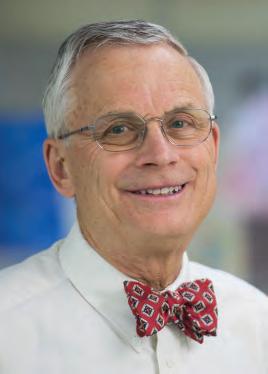
nation’s experts in enterovirus clinical trials. Dr. Mary Glodé helped identify Enterovirus A71 as a cause of paralytic disease in Colorado children in 2003 and 2005. And Dr. James Todd has been instrumental in all aspects of our infectious disease achievements.”
It did not go unnoticed that these same faculty trained Roberta DeBiasi, MD, when she was a pediatric fellow at Children’s Hospital Colorado. Now chief of the Division of Pediatric Diseases and co-director of the Congenital Zika Program at Children’s National Health System, DeBiasi was chosen by C-SPAN in November 2018 to inform the nation—and correct misinformation —on the incidence and risk of D68 infection.
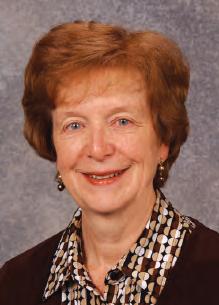
EV-D68 is a single-stranded, positive sense RNA virus, placing it in Group IV of the Baltimore Classification System of viruses. This collaborative effort appeared in The Lancet Infectious Diseases, published online February 23, 2018. Coauthoring “Enterovirus D68 and acute flaccid myelitis—evaluating the evidence for causality”
were Kevin Messacar, MD, Edwin Asturias, MD, Alison Hixon, MD, Coretta van Leer-Buter, MD, PhD, Hubert Niesters, MD, PhD, Kenneth Tyler, MD, Mark Abzug, MD, and Samuel Dominguez, MD, PhD.
Moving forward, the investigative team, with its national and international collaborators, is focused on new approaches to early diagnosis, treatment, and prevention. Given that microorganisms are always changing, the team is constantly on alert to deal with the next new virus or clinical syndrome to appear on the scene. It is a process supported in real time by the Department’s four-pillar integration of Clinical Services, Advocacy, Research, and Education.
Mary Glodé, MD Mark Abzug, MD Harley Rotbart, MD James Todd, MD
72 DEPARTMENT OF PEDIATRICS FOUR PILLARS
THE FOUR PILLARS
CLINICAL SERVICE
“Pediatricians live in the midst of the great mystery of life, in a world of unending youth and development. Pediatrics is a constant reminder of the unconquerable dance of life.”
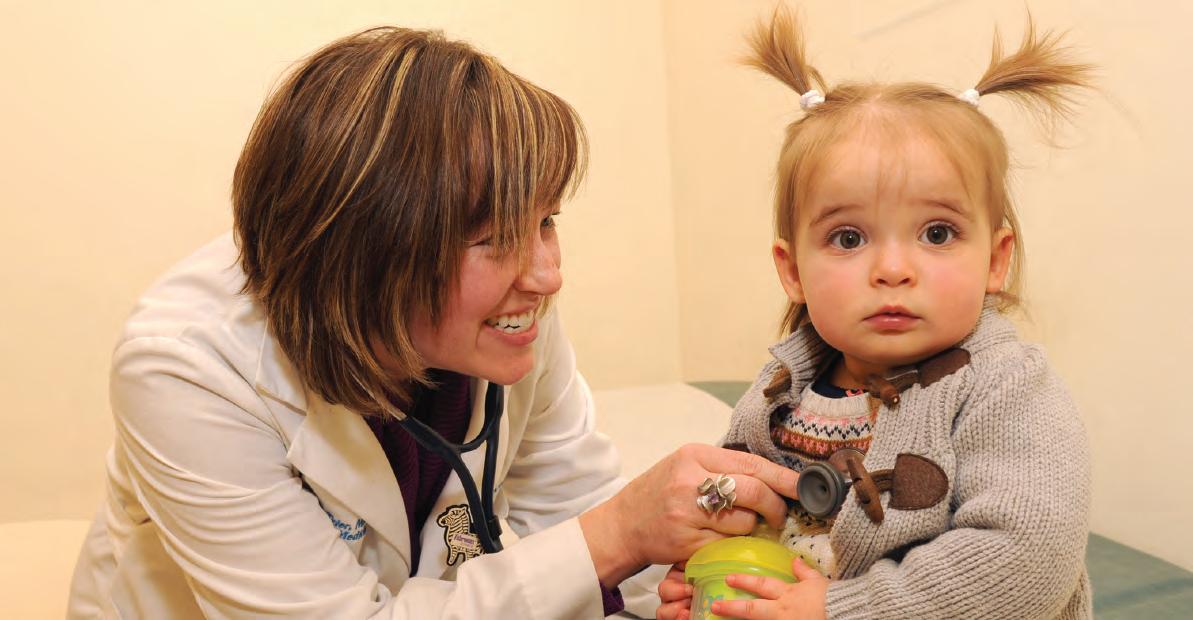
73 DEPARTMENT OF PEDIATRICS FOUR PILLARS
–Vladimir Tsesis, MD
Adolescent Medicine
In 1957, Department of Pediatrics Chair C. Henry Kempe, MD, scheduled “special teen days” within the pediatric clinic at Colorado General Hospital (now University Hospital). That simple three-days-a-week schedule has evolved into one of the nation’s most innovative Adolescent Medicine programs. Thirty years after its founding, the Section of Adolescent Medicine helped launch two of the country’s first school-based health centers at Denver’s Abraham Lincoln and East High Schools. Thirty years after that, Children’s Hospital Colorado was recognized nationally for helping Colorado reduce its teen birth and abortion rates by half at a savings of $70 million in public assistance costs.
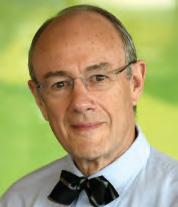
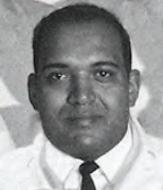
Other achievements have been recorded annually, as the chronology on page 75 details. The physical and social benefits for Rocky Mountain teens and their families have been immeasurable. And the financial impact on the region has not gone unnoticed.

Clinical services include the Adolescent Medicine Clinic; Adolescent Family Planning; and TRUE Center for Gender Diversity. The Section also provides medical treatment for the inpatient eating disorders unit and the outpatient programs.
AT THE FOREFRONT
Ida Nakashima, MD, arrived in Colorado as a child during World War II when her family was sent to the Granada War Relocation Center in Amache. Following medical school, she entered the University of Colorado’s Pediatric residency program and later became one of C. Henry Kempe’s first chief residents. When he established adolescent services at Colorado General Hospital, Ida was his choice for supervisor. During her 30-year career with the University, she founded the Adolescent Medicine Clinic and Adolescent Gynecology Program, guided development of the Adolescent Medicine Fellowship, and directed the Prenatal Young Mothers Clinic.
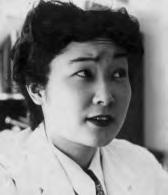
Henry Cooper, MD, completed his Pediatrics residency and his Adolescent Medicine fellowship at the University of Colorado Medical Center. Following a fellowship in Child Development and Psychology at Yale University, he returned to Colorado to direct the University of Colorado’s Adolescent Medicine Clinic at Colorado General Hospital. While directing the Adolescent Clinic, Henry trained a great number of pediatric residents, medical students, and students from a diverse group of ancillary professions.
David Kaplan, MD, MPH, FAAP, FSAM, is a graduate of Case Western Reserve University Medical School. He served his internship and residency at the University of Colorado Department of Pediatrics. A training award from the U.S. Public Health Service allowed Kaplan to earn his Masters in Public Health and pursue fellowship training at Boston Children’s Hospital. He returned to the University of Colorado in 1984 to become the Section Head of Adolescent Medicine and establish the first Adolescent Clinic at Children’s Hospital.
Adolescent Medicine clinic visits/year Adolescent Family Planning (BC4U) clinic visits/year TRUE Center visits/year 7,000 6,500 1,200 THE SECTION OF ADOLESCENT MEDICINE 74 DEPARTMENT OF PEDIATRICS FOUR PILLARS
Elizabeth Romer, ND, DNP, began her career as a nurse practitioner in the Adolescent Medicine Clinic at The Children’s Hospital, where she coordinated the Title X family planning program. In 2009, Romer helped initiate the Adolescent Family Planning Program at Children’s, also known as BC4U, and served as its director. Now a national model, the BC4U program has served some 4,000 new patients each year since 2012.
Daniel Reirden, MD, is cofounder and director of The TRUE Center for Gender Diversity at Children’s Hospital Colorado and serves as Medical Director of the Children’s Hospital Immunodeficiency Program (CHIP). He is also a past co-director of the School of Medicine’s combined Internal Medicine/ Pediatrics Residency Program.
“We have always had a very strong adolescent program—both in terms of clinical care and education. It began in 1957 with the founding of the original Adolescent Clinic, which was one of the first in the nation to focus on teens. We initiated the first school-based clinics in this region, and a family planning program that has earned national recognition. Our program was also one of the first in the country to offer a board-certified fellowship program.”
–David Kaplan, MD, MPH, Section Head
CHRONICLING ADOLESCENT MEDICINE
1957 The Adolescent Clinic, one of the first in the nation, begins when C. Henry Kempe schedules “special teen days” each week within the Colorado General Hospital pediatric clinic. Ida Nakashima serves as director.
1965 The Adolescent Clinic moved to its own space at Colorado General Hospital and Henry Cooper is named director of the program.
1967 The Adolescent Fellowship—one of the first Adolescent Medicine training programs in the country—was launched by the School of Medicine.
1984 David Kaplan, becomes Section Head and establishes the first Adolescent Clinic at Children’s Hospital. The Adolescent Medicine Inpatient unit is also established.
1986 The Adolescent Psychiatric Inpatient Unit at The Children’s Hospital is established by David Kaplan and David Raney.
1986 The Eating Disorder Program, one of the first in the nation, is started by Jennifer Hagman, Eric Sigel and David Kaplan at The Children’s Hospital.
1987 Denver’s first School-Based Health Center—also one of the first in the nation— is founded at Abraham Lincoln and East High Schools by David Kaplan.
1991 Catherine Stevens-Simon establishes the Colorado Adolescent Maternity Program (CAMP) and the Young Mother’s clinic, one of the first “teen-tot” programs in the country

2000 The Adolescent Medicine fellowship program is accredited after establishment of Adolescent Medicine by the American Board of Pediatrics as a distinct pediatric subspecialty.
2009 The Adolescent Family Planning Clinic (BC4U), is established by Elizabeth Romer and David Kaplan.
2011 The HIV research effort led by Daniel Reirden and Elizabeth McFarland is named a NICHD-funded adolescent trials network site.
2012 Based on his work in youth violence prevention, Eric Sigel is awarded a $1,025,000 grant from the National Institute of Justice in the wake of the Sandy Hook Massacre to study ways to leverage health care to decrease the impact of firearm injury.
2013 The School of Medicine establishes a combined Internal Medicine/Pediatrics Residency Program with Dan Reirden as named co-director.
2014 The TRUE Center for Gender Diversity at Children’s Hospital Colorado is established by Daniel Reirden and Philip Zeitler.

75 DEPARTMENT OF PEDIATRICS FOUR PILLARS
Allergy & Immunology
The Department of Pediatrics Section of Allergy and Immunology was established in 2014. While the specialty’s clinical and academic programs had been met through collaboration with National Jewish Hospital, consolidation of Children’s Hospital Colorado and School of Medicine programs on the Fitzsimons campus ushered in new clinical, academic, and research opportunities and responsibilities. Regionally, the number of children requiring allergy-related care was climbing. Nationally, an increasing number of residents were seeking fellowships in the specialty. Then came a dynamic third factor: population health management as the future of pediatric care.
Section Head Dan Atkins, MD, recalls an early conversation with Chair Stephen Daniels, MD, PhD, centering on population health, and how the new Section of Allergy and Immunology could improve patient outcomes by strengthening quality care coordination and patient engagement. “Steve outlined a three-phased development with the clinical program as the foundation. The second need was for an immunology
program, given the many patients with immunodeficiencies that Children’s serves. Research would be built on top of that.” The translational research system already in place would allow findings to flow back to benefit children in Colorado and beyond.
The development strategy included a fourth component, that of the Department’s offering an accredited fellowship in Allergy and Immunology by 2018, four years from the new Section’s founding. It was achieved in two years, with the first fellows accepted in 2016.
Atkins credits exceptional multidisciplinary collaboration as a key driver for the relatively new section’s progress. “We see it like this: immunology is involved in every organ of the body. So we want to integrate ourselves with every area of care.”
He adds, “There’s a buzz in the allergy and immunology community about what we’re doing.”
Small Doses, Big Challenges
Matthew Greenhawt, MD Director, The Food Challenge and Research Unit, Children’s Hospital Colorado
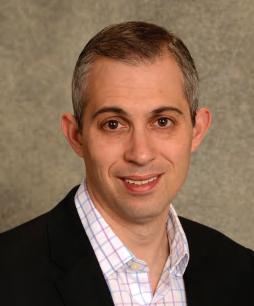
It’s estimated that about one in 10 children in the United States has a food allergy. Of those, 40% have reported experiencing a severe allergic reaction. The Food Challenge and Research Unit at Children’s Hospital Colorado, directed by Matthew Greenhawt, MD, MBA, MSc, works with families across a seven-state referral area, as well as nationally, to help accurately diagnose and treat those with food allergy. The multidisciplinary team approach integrates diagnostic testing, the most advanced food challenge services in the U.S., and dietary and psychological support. For some patients, a clinical or research protocol to treat food allergy is included.
Dr. Greenhawt states, “Historically, there has not been a therapy to treat food allergies. Here at Children’s, we have options available that enable patients to tolerate more allergen before reacting, and to reduce the severity of any reaction that may still result. By offering clinical programs as well as opportunities to participate in research studies to treat food allergy, we enable families to choose an option that meets their needs.”
Section of Allergy and Immunology investigators, physicians, and clinical staff have contributed significantly to multiple research studies, interventions, and the development of U.S. and international policy guidelines.
76 DEPARTMENT OF PEDIATRICS FOUR PILLARS
LEADERSHIP
Dan Atkins, MD Founding Section Head, Allergy and Immunology Co-director, Gastrointestinal Eosinophilic Diseases Program

Dan Atkins, MD, a graduate of the University of Texas Medical School, completed his Pediatrics residency and a fellowship in Ambulatory Pediatrics with the University of Texas at Houston/ Memorial Hermann Hospital Program. His first Allergy and Immunology fellowship was with the University of Buffalo/ Children’s Hospital of Buffalo and his second with the National Institute of Allergy and Infectious Diseases, National Institutes of Health. A Department of Pediatrics faculty member since 1994, Atkins served concurrently at National Jewish Medical and Research Center and the University of Colorado through 2014. He was named Gastrointestinal Eosinophilic Diseases Program co-director at The Children’s Hospital in 2007 and served as Section Head of Allergy and Immunology from 2014–2018.
Intersectional Innovation
David Fleischer, MD Section Head, Allergy and Immunology Director, Allergy and Immunology Center
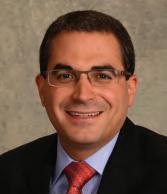
David Fleischer, MD, is a graduate of Emory University School of Medicine. He completed his Pediatrics residency and Pediatric Allergy and Immunology fellowship at the Johns Hopkins University School of Medicine program. As Section Head of Allergy and Immunology since 2018, he guided development and now directs the Allergy and Immunology Center at Children’s Hospital Colorado, site of one of the world’s largest food challenge and research programs.
Glenn Furuta, MD Director, Gastrointestinal Eosinophilic Diseases Program Director of Research, Digestive Health Institute and Section of Pediatric Gastroenterology, Hepatology and Nutrition La Cache Endowed Chair for Gastrointestinal, Allergic and Immunologic Diseases
The Gastrointestinal Eosinophilic Diseases Program (GEDP) at Colorado Children’s Hospital is a clear example of the Section of Allergy and Immunology’s collaboration with other Department of Pediatrics Sections. Directed by Glenn Furuta, MD, with Dan Atkins, MD as co-director, this multidisciplinary program cares for children with digestive issues caused by eosinophils, a type of white blood cell frequently linked to allergies. The inflammation that occurs when these cells build up in the digestive system lining can cause severe abdominal pain, delayed growth, swallowing issues, and other life-altering symptoms.
Furuta, a principal investigator in eosinophilic studies since the mid-1990s, joined Atkins as Director of The Children’s Hospital Gastrointestinal Eosinophilic Diseases Program in 2007. It remains the region’s only dedicated pediatric program of its kind and serves as a national/international resource.

77 DEPARTMENT OF PEDIATRICS FOUR PILLARS
Cardiology
“When Robert Gross ligated a patent ductus in 1938, pediatric cardiology, as a discipline, was born,” wrote esteemed physician Jacqueline Noonan, MD (Pediatric Research, 2004). Just eight years later, Cardiology was recognized as a department at The Children’s Hospital in Denver. Pediatric heart history in the Rocky Mountain region dates back considerably earlier, however, with Children’s having recorded cardiac care advances before 1920.
That century-plus of pioneering is now reflected in the Section of Cardiology and the Heart Institute at Children’s Hospital Colorado. Achieving optimal outcomes for patients in utero and into early adulthood is the work of an interdisciplinary team that brings together Department of Pediatrics cardiologists, Department of Surgery cardiac surgeons, plus specialists from more than 15 other Sections. More than 400 cardiac experts collaborate to provide care for patients with adult congenital and acquired heart diseases, making the Institute the region’s largest. In recent years, this team has treated more than 20,000 patients annually.
And the Institute’s reach extends nationally. To date more than 100 of the nation’s pediatric cardiologists have gained knowledge and mentorship through the Department of Pediatrics’ Heart Fellowship Program.

CHRONICLING CARDIOLOGY
1927 A record-breaking 44 patients are seen for heart problems at Children’s.
1933 The first cardiograph machine (used to record the beating of the heart) is purchased, enabling detection of heart irregularities previously not possible to diagnose.
1946 “Cardiology” is first recognized as a department at The Children’s Hospital.
1952 A Cardiac Clinic is held once a week, led by the chief resident, with visiting cardiologists once a month. The outpatient Cardiac Clinic saw 205 patients.
1953 Shortly after Henry Swan, II, performs open-heart surgery to close an atrial septal defect (ASD) in a pediatric patient at the University of Colorado Hospital, John Grow performs the first such procedure at The Children’s Hospital.
1954 Additional heart-related services are established at Children’s, including cardiac catheterization.
1955 C. Richard Hawes and colleagues advance a coronary artery perfusion technique, recognized as a distinct contribution to heart surgery.
1960s The University of Colorado is one of the six centers for the first NIH-sponsored Natural History Study of Congenital Heart Disease.
1970s The Children’s Hospital hires George Pappas previously of the University of Colorado School of Medicine, to direct its heart surgery program.
1971 James Nora appointed Director of Pediatric Cardiology.
1976 Robert Wolfe and Lula Lubchenco are the first to perform echocardiographic studies in infants of diabetic mothers, demonstrating a reversible hypertrophic cardiomyopathy.
Mid-1980s David Clarke becomes chief of Heart Surgery at The Children’s Hospital. Cardiac surgeons from the University of Colorado School of Medicine begin to help staff the Heart Surgery Program at The Children’s Hospital.
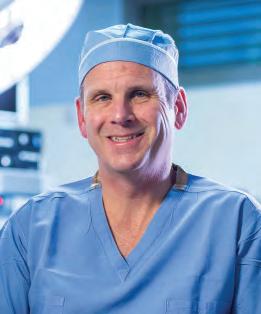
1986 Robert Wolfe establishes the first dedicated pediatric exercise laboratory in the Intermountain West.
1987 Robert Wolfe founds the North American Society for Pediatric Exercise Medicine, the first organization to evaluate exercise physiology in children. Three institutions—Colorado General Hospital, Denver’s Children Hospital and Cincinnati Children’s Hospital—provide initial funding.
D. Dunbar Ivy, MD, Section Head, Cardiology
78 DEPARTMENT OF PEDIATRICS FOUR PILLARS
James Jaggers, MD, Section Chief, Congenital Heart Surgery
1990 The pediatric Cardiology and Cardiac Surgery programs merge with the programs from University of Colorado Hospital and consolidate at The Children’s Hospital. Doctors perform the Rocky Mountain region’s first heart transplant on an infant at 3 months old.
1991 The Pediatric Electrophysiology Program begins at The Children’s Hospital. It is the first such pediatric program in the Rocky Mountain region.
1992 Steven Abman and John Kinsella are the first to demonstrate that inhaled nitric oxide (NO) therapy can cause sustained improvement in sick newborns with pulmonary hypertension.
1999 Nitric oxide is approved by the FDA for use in newborns with persistent pulmonary hypertension. Children’s Pulmonary Hypertension Program begins its path to national prominence.
2002 Children’s opens its dedicated Cardiac Intensive Care Unit (CICU).
2003 The Heart Institute is officially established at Children’s.
2006 The Heart Institute invests in additional high-tech resources, such as cardiac MRI and 3D-ECHO, to capture improved pictures of the heart.
2007 Doctors at The Children’s Hospital deliver a baby in the Cardiac Catheterization Lab (instead of a regular delivery room) to expedite life-saving heart treatment.
2009 Doctors at Children’s successfully implant a Berlin Heart (an artificial heart pump used to support patients in heart failure) in a 6-month-old boy.
2010 The first Melody® Transcatheter Pulmonary Valve is implanted in a patient at The Children’s Hospital. This minimally invasive valve-replacement procedure offers an alternative to open-heart surgery.
2015 The Society of Thoracic Surgeons (STS) recognizes Children’s Hospital Colorado’s Heart Institute with its highest rating—three stars—placing it in the top 5% of all pediatric heart programs in the U.S.
2018 The Heart Institute at Children’s Hospital Colorado records its sixth consecutive year among the nation’s Top 20 pediatric cardiology/cardiac surgery programs.
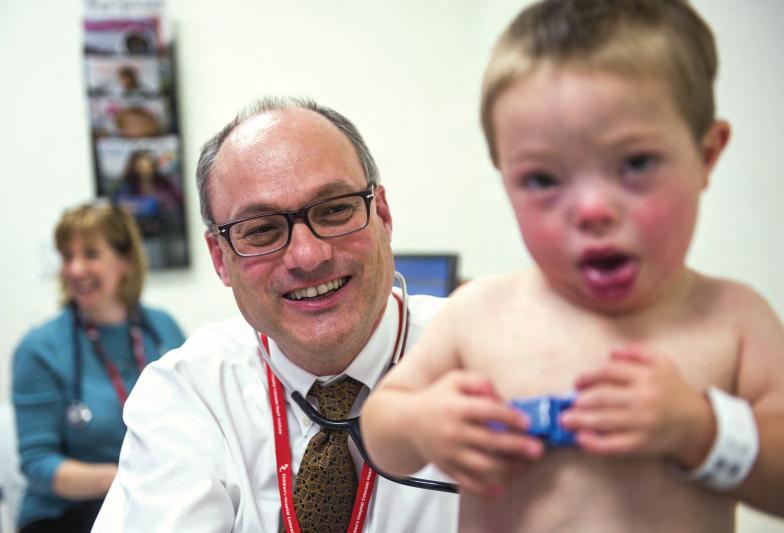
Better heart care? Precisely.
The Heart Institute at Children’s Hospital Colorado is helping pioneer the use of three-dimensional (3D) printing technology. Using information collected virtually during a CT scan, cardiac MRI or cardiac catheterization, the Heart Institute team can create an exact anatomical model of the child’s heart and blood vessels. This 3D model helps physicians:

Understand abnormalities in the heart and blood vessels
Provide counseling and education to eligible families before surgery
Plan complex surgeries
Plan interventions in the cardiac catheterization laboratory
Educate fellows, residents, and medical students
79 DEPARTMENT OF PEDIATRICS FOUR PILLARS
Dunbar Ivy, MD, connects with a young patient in the Pediatric Cardiology Clinic at Children’s Hospital Colorado.
Child Health Associate/Physician Assistant Program
The University of Colorado’s Child Health Associate/Physician Assistant (CHA/PA) program was established in 1968 by visionary Henry Silver, MD, and graduated its first class in 1972. The program has maintained continuous Accreditation Review Commission on Education for the Physician Assistant accreditation since that time. In 1973, it became the first PA program in the nation to award master’s degrees.
For the first 19 years of its existence, the CHA/PA program focused exclusively on providing education to care for infants, children, and adolescents. An adult curriculum was added in 1991, preparing graduates to provide comprehensive primary medical care for patients of all ages.
In 2018, the 50th anniversary of the CHA/PA program, it launched the research-based Colorado Curriculum. Nationally recognized for its innovative approach, the curriculum is designed to support learner mastery of the complex concepts of patient care. Today’s program provides integrated clinical training across all three years of engagement, additional training in pediatric medicine and behavioral health, and track options in rural and global health.
To date, more than 1,200 University of Colorado CHA/PA graduates have entered the workforce.
Jonathan Bowser, MS, PA-C, Program Director
Jonathan Bowser earned his master’s degree from Colorado State University and completed the University of Colorado’s Child Health Associate/Physician Assistant program in 2001. He has been on the CHA/PA faculty since 2006 and was appointed CHA/PA Program Director in 2012. A board director of the Physician Assistant Education Association since 2014, he was named President-Elect in 2018.
LEADERSHIP
Henry Silver, MD Program Director, 1968–1987
Donald Moore, MD Program Director, 1987–1988
John Ogle, MD Program Director, 1988–1992
Mary Andresen Arthur, MS, PA-C Interim Program Director, 1992–1994
Gerald Merenstein, MD Program Director, 1994–2006
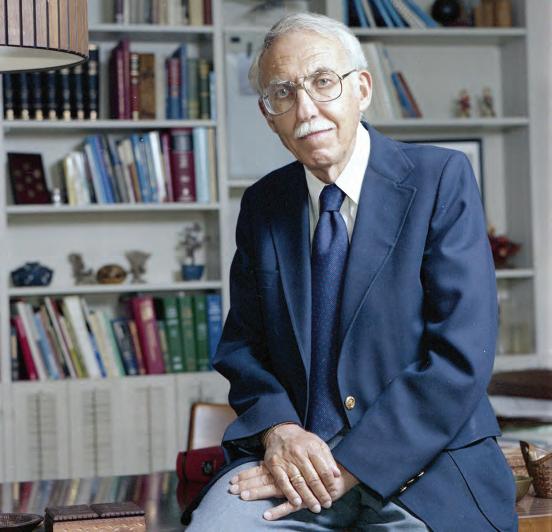
Anita Glicken, MSW Program Director, 2006–2012
Jonathan Bowser, MS, PA-C Program Director, 2012–present
 Henry Silver, MD, Program Founder
Henry Silver, MD, Program Founder
80 DEPARTMENT OF PEDIATRICS FOUR PILLARS
Child Neurology & Neurosciences Institute
In 1947, William Lipscomb, MD, was appointed to the Medical Staff of The Children’s Hospital. Among the Mayo Clinic-trained neurosurgeon’s first actions was to urge the hospital to acquire an electroencephalograph (EEG) machine. With the new technology, Children’s could care for the growing number of patients admitted for seizure disorders. His request was granted. Some 70 years later, EEG technology remains an essential tool at Children’s Hospital Colorado (CHCO). The core science is the same as it was in 1947, but applications are expansive. Extended electroencephalography with simultaneous video monitoring is central to care at the region’s only Pediatric Level IV Epilepsy Center, and for the 18,000 children currently seen annually by the CHCO Neurology team.
The Section of Child Neurology was established in the late 1960s under the direction of pediatric neurologist Gerhard Nellhaus, MD, remembered as “a brilliant but complex man” with interests that extended to translating the works of German playwright Bertolt Brecht into English. Nellhaus’ charts plotting the growth of head-circumference are used across the world a half-century later.
In 1971, Nellhaus was joined at Colorado General Hospital (CGH) by Mary Anne Guggenheim, MD, and at about the same time at The Children’s Hospital (TCH) by clinician and devoted teacher Paul Moe, MD. David Stumpf, MD, became Director of Pediatric Neurology in the School of Medicine and at CGH in
1977. He established a training program in Pediatric Neurology, and held the position until he departed for Northwestern University Medical School in 1985, where he later would be appointed Chair of Neurology. Interim Director W. Davis Parker, MD, succeeded Stumpf until the appointment of Alan Seay, MD, in 1990 as head of a Section that brought TCH-based and CGH-based neurologists into a single group. Pediatric neurology was a small, mostly young group of clinicians and researchers during many of those early years. The mentorship and support of adult neurologists James Austin, MD, and Stuart Schneck, MD, were invaluable. Seay led the Section through the exciting initial years of the affiliation between TCH and the Health Sciences Center and in 1996 recruited Paul Levisohn, MD, to develop the Section’s first separate epilepsy program. The start-up was modest, with Levisohn and a nurse practitioner, but they had the important resource of the region’s first hospital unit devoted to long-term, continuous monitoring of EEG activity in children with complex seizures. Kevin Staley, MD, assumed the role of Section Head in 2000 until his departure in 2005 to become Chief of the Section of Pediatric Neurology at Massachusetts General Hospital and the Joseph P. and Rose F. Kennedy Professor of Child Neurology and Mental Retardation at Harvard Medical School. Amy Brooks-Kayal, MD, was recruited from The Children’s Hospital of Philadelphia and University of Pennsylvania School of Medicine in 2008. She led the Section through a period of dramatic growth until her departure to take the Andrew John Gabor, MD, PhD, Presidential Endowed Chair of Neurology at UC Davis School of Medicine.
Between 1996 and 2018, the Section of Child Neurology grew from a small team of five physicians to a cadre of more than 60 physicians and advanced practice providers. The Pediatric Neurology Program is nationally recognized for diagnosis, treatment, and research in epilepsy and seizure disorders, neurogenetic disorders, neurometabolic disorders, neuro-developmental disorders, neuromuscular diseases, and neurocognitive disorders.

81 DEPARTMENT OF PEDIATRICS FOUR PILLARS
Child Neurology & Neurosciences Institute, continued
AT THE FOREFRONT
Mary Anne Guggenheim, MD, joined the Department of Pediatrics faculty in 1971 and remains a Distinguished Clinical Professor. She was the first woman to serve as President of the Child Neurology Society (1981–1982), and was honored with the Society’s Roger and Mary Brumback Lifetime Achievement Award in 2009. She also served as Vice Chair of the Department and Program Director of the Pediatric Residency Training Program (1974–1983).
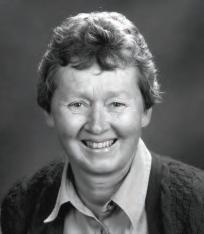
Paul Moe, MD, was recognized in 1998 for his commitment to the education of students, residents and fellows with the Department of Pediatric’s Gary Way Award. He was also a five-time recipient of the Department of Neurology’s Teaching Award. In 2000, he was named a Department of Pediatrics Career Teaching Scholar.
Alan Seay, MD, joined the University of Colorado School of Medicine faculty in 1989. He served as Section Head of Child Neurology until 1999, practicing clinical neurology and research in neurovirology. He was a strong leader with a shared commitment to clinical care, teaching, neurovirology research, and advocacy during the challenging early years of the affiliation between The Children’s Hospital and the University of Colorado Health Sciences Center.
Kevin Staley, MD, served as Section Head of Child Neurology from 2000–2005. Research conducted while he was in Colorado contributed to his leadership in identifying causes and treatments for neonatal seizures. He received the American Epilepsy Society’s Research Recognition Award for Basic Science in 2015.


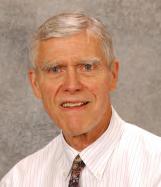
Amy Brooks-Kayal, MD, was named Section Head of Child Neurology in the University of Colorado School of Medicine Department of Pediatrics in 2008. She was the first to hold the Ponzio Family Chair in Pediatric Neurology and the first Colorado physician to serve as President of the American Epilepsy Society (2015).

The Neuroscience Institute at Children’s Hospital Colorado
Established in 2012, The Neuroscience Institute at Children’s Hospital Colorado provides comprehensive care for developmental and nervous system disorders, ranging from complex neurosurgery to cognitive and behavioral counseling. This integration of capabilities and role as a regional referral site has led to consistent inclusion among the nation’s top pediatric hospitals for neuro-related care.
Clinical services benefit from the Institute’s robust research efforts fueled by grants from the National Institutes of Health (NIH), Pediatric Epilepsy Research Foundation, the Patient-Centered Outcomes Research Institute (PCORI), and other sources. Neurology and neurosurgery specialists have 100+ research studies underway; one-third of these are industry-sponsored clinical trials.
82 DEPARTMENT OF PEDIATRICS FOUR PILLARS
REGIONAL FIRSTS
1981: Region’s first pediatric neuropsychology program
The region’s first Pediatric Neuropsychology service was established in 1981 at Children’s Hospital and University Hospital by Greta Wilkening, PsyD, PhD. She continues to direct the program. A neuropsychology graduate fellowship training program was established in 2013.
Greta Wilkening, PsyD, PhD Director, Pediatric Neuropsychology

1996: Region’s first comprehensive pediatric epilepsy program
Paul Levisohn, MD, left his private practice in child neurology, one of the first child neurology practices in Colorado, and joined the Section in 1996 to launch the first comprehensive pediatric epilepsy program at The Children’s Hospital. He led the program through 2013.

Paul Levisohn, MD Associate Professor, Emeritus
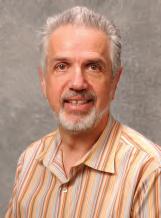
2005: Region’s first pediatric stroke clinic
The Rocky Mountain region’s first pediatric stroke clinic was established at The Children’s Hospital in 2005. By 2007, the interdisciplinary effort had integrated diagnostic-throughtherapeutic services to become one of the first comprehensive stroke programs in the western U.S.
Timothy Bernard, MD Director, Colorado Pediatric Stroke Program
2011: Region’s first Rett syndrome clinic
The Rett Clinic at Children’s Hospital Colorado was established in late 2011 with financial support from the Rocky Mountain Rett Association. It remains the only program in the region dedicated to the comprehensive clinical care of children diagnosed with Rett syndrome and their families, and to leading edge Rett syndrome research.
Timothy Benke MD, PhD Director, Rett Syndrome Clinic Director, Research-Neurosciences Institute Ponzio Family Chair in Pediatric Neurology Research
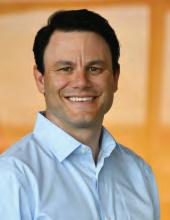
2013: Region’s first Level 4 Pediatric Epilepsy Center Accreditation
In 2013, the Epilepsy Center at Children’s Hospital Colorado became the first pediatric epilepsy program in the region to achieve Level 4 accreditation by the National Association of Epilepsy Centers.
Susan Koh, MD
Associate Chief of Ambulatory Services, Child Neurology Director, The Epilepsy Center

83 DEPARTMENT OF PEDIATRICS FOUR PILLARS
Critical Care Medicine
Caring for critically ill and injured children was a core strength of both The Children’s Hospital and Colorado General Hospital—now University of Colorado Hospital—from their beginnings in the early 20th Century. At Children’s, pediatric intensive care services were directed by James Gilman, MD, of the Anesthesiology Department; at University, by Pulmonology.
Pediatric critical care, however, did not emerge as a distinct specialty in the United States until the early 1980s. Citing the essential differences between intensive care requirements for children and adults, The Society of Critical Care Medicine recognized it as a separate area of focus in 1981; the American Academy of Pediatrics created it as a new section in 1984.
Frederick Battaglia, MD, chair of the Department of Pediatrics (1974–1988), clearly understood the need for such specialization. As a pioneering researcher and neonatologist, he knew how advances in pediatric pulmonary medicine, anesthesiology, cardiology, emergency medicine, surgery, and education were converging to improve outcomes for critically ill children. As chair of a program linking the University of Colorado School of Medicine, Colorado General Hospital, The Children’s Hospital, and Denver General Hospital, he saw an opportunity for more cohesive clinical care, critical care research, and training.
Children’s Hospital Colorado is the state’s only Level I Pediatric Trauma Center. The Pediatric Intensive Care unit cares for 200 traumatically injured children from Colorado and surrounding states annually.
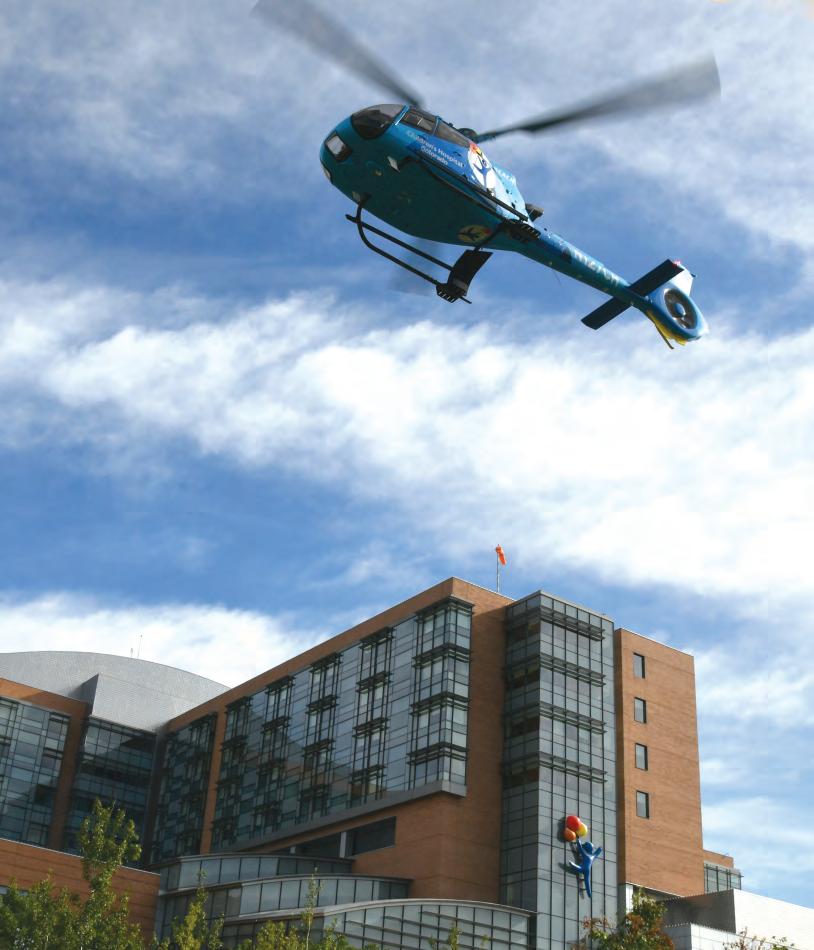
84 DEPARTMENT OF PEDIATRICS FOUR PILLARS
Among the Colorado colleagues with whom Battaglia shared his ideas was Kurt Stenmark, MD, a young faculty member who had recently completed his fellowship in pulmonary disease at the University of Colorado. In 1987, with the prospects of a formal affiliation between the University of Colorado Health Sciences Center and The Children’s Hospital brightening, Battaglia created a Section of Critical Care Medicine to bridge the programs and the two hospitals’ pediatric intensive care units. Stenmark was named Section Head. Now, the Section of Critical Care Medicine includes more than 40 individuals— medical doctors, advanced practice professionals, and investigators—performing internationally regarded research and producing clinical outcomes among the top pediatric hospitals in the nation. The fellowship program has trained more than 60 critical care subspecialists.
Stenmark notes, “The PICU is the hub of interaction in a large hospital. It provides the essential infrastructure necessary for all medical and surgical subspecialists to deliver optimal care to their sickest patients. We constantly self-evaluate to make this unit and the care it provides even better.”
AT THE FOREFRONT
Kurt Stenmark, MD, earned his medical degree from the University of Colorado School of Medicine and completed his Pediatrics residency in the University of Colorado program. He joined the University of Colorado School of Medicine faculty in 1984 upon completion of his fellowship in pulmonary disease and became Section Head of Critical Care Medicine in 1987. Stenmark also directs the University’s Cardiovascular Pulmonary Research Laboratories, where he has served as principal investigator in multiple decades-long research projects focused on the treatment of infants, children, and adults with pulmonary hypertension. He is the first to hold the The La Cache Critical Care Endowed Chair at Children’s Hospital Colorado.

Todd Carpenter, MD, is a graduate of the Dartmouth-Brown Program in Medicine. He completed his Pediatrics residency at the University of Chicago and his fellowship in Pediatric Critical Care with the University of Colorado program. He was named medical director of the Pediatric Critical Care Fellowship Training from 1999 to 2002. He was named clinical director of the Pediatric Intensive Care Unit at Children’s Hospital Colorado in 2014.

“In 2018, our Pediatric Intensive Care Unit outcomes ranked among the best in the nation.”
85 DEPARTMENT OF PEDIATRICS FOUR PILLARS
–Kurt Stenmark, MD, Section Head
Critical Care Medicine, continued
KEY MILESTONES
1971 The Cardiovascular Pulmonary (CVP) research laboratory at the University of Colorado School of Medicine is awarded the first National Institutes of Health Program Project Grant to study the mechanisms of pulmonary vascular remodeling and the response of the lung vasculature to hypoxia and other injuries. The award has been continuously funded since that date.
1987 The Section of Critical Care Medicine is established—one of the first five accredited programs in the United States for Pediatric Critical Care. Kurt Stenmark is named Section Head.
1990 The Pediatric Critical Care Fellowship Program begins, allowing physicians to train in both laboratory research and critical care medicine.
1991 Kurt Stenmark and Jack Reeves receive the NIH’s first Specialized Center of Research grant for studies on pediatric pulmonary hypertension.
2002 Kurt Stenmark and Maria Frid describe transdifferentiation of pulmonary artery endothelial cells toward mesenchymal, smooth muscle-like phenotype, advancing understanding of pulmonary hypertension.
2004 Stenmark’s lab is among the first to identify the contribution of progenitor cells to pulmonary vascular remodeling.
2007 The Children’s Hospital’s relocation to Fitzsimons Medical Campus (later renamed Anschutz Medical Campus) opens a new 26-bed Pediatric Intensive Care Unit (PICU), since expanded to 48 beds. The care team encompasses more than 150 physicians, clinicians, nurses, and specially trained staff.
2014 Children’s Hospital Colorado is selected for the Collaborative Pediatric Critical Care Research Network funded with support of the Eunice Kennedy Shriver National Institute of Child Health and Human Development.
2018 PICU patient outcomes rank among the best in the nation.
Quantifying Quality: The PICU CLOUD
“Our clinical outcomes and quality/safety outcomes are on par with the best pediatric ICUs around the world,” states Todd Carpenter, clinical director of the Pediatric Intensive Care Unit at Children’s Hospital Colorado. A key point of proof is Children’s involvement in PICU CLOUD (Collaborative Learning through Outcomes Data), a global consortium of 19 leading acute care pediatric hospitals. All members conduct pediatric research, tertiary pediatric care, and education, and their ICUs admit both surgical and medical patients.
PICU CLOUD participants track ICU quality metrics for hospital-acquired infections, unplanned readmissions, unplanned extubations, and standardized mortality ratios—performance and outcome measures demonstrated to reflect quality of care in the PICU setting. Results are reported biannually for collaborative review and metric revision by consensus.
86 DEPARTMENT OF PEDIATRICS FOUR PILLARS
Developmental Biology
The Department of Pediatrics’ Section of Developmental Biology was established in 2004 under the direction of Lee Niswander, PhD. Work currently underway in the Section is forging a better understanding of childhood disabilities associated with neuropsychiatric disease, Down syndrome, the congenital basis of cardiovascular and facial malformations, and the impact of maternal health on fetal development.

To gain this new knowledge, faculty, graduate students, postdoctoral trainees, and research staff study stem cell, organoid, and animal experimental models, including Drosophila, zebrafish, and mice. Their research focuses on several major tissue and organ systems, such as the brain, heart, intestine, face, and vascular, olfactory, and immune systems.
The Section of Developmental Biology at the University of Colorado is committed to research that improves child health. Faculty and researchers work collaboratively to: Understand the genetic, molecular, and cellular mechanisms that guide normal development.
Determine how normal developmental processes are altered to result in developmental disease and disability.
Identify new diagnostic strategies and molecular and cellular therapies targeted at treatment of childhood disease.
Train the next generation of leaders in developmental and stem cell biology and pediatric disease research.
Serve as a hub for basic and translational child health research that spans the Anschutz Medical Campus research community.
Studying the zebrafish (Danio rerio), a freshwater fish with regenerative abilities, is allowing researchers in the Section of Developmental Biology to better understand how neurons develop. By examining neuronal development and maturation in this member of the minnow family, new knowledge is emerging on human birth defects such as spina bifida.

LEADERSHIP
Lee Niswander, PhD, earned her master’s degree in Biochemistry and Genetics at the University of Colorado and her doctorate at Case Western Reserve University. Following her fellowship at the University of California, San Francisco, she joined the Molecular Biology Program at Memorial Sloan-Kettering Cancer Center where she directed the graduate program in Molecular Biology.
From 1997–2014, she was an investigator with the Howard Hughes Medical Institute. Niswander joined the University of Colorado School of Medicine faculty in 2004 as Section Head of Developmental Biology. In addition to her work in the Niswander Lab at Anschutz Medical Campus, she was named associate director of the campuswide Graduate Program in the Biomedical Sciences Program (2007) and the leader of the University’s Research Emphasis Area of Developmental Origins of Health and Disease (2011).
Bruce Appel, PhD, earned his doctorate in Developmental Biology at the University of Utah and completed his fellowship in Developmental Neurobiology at the University of Oregon. He began his faculty career at Vanderbilt University in 1998 and joined the University of Colorado Section of Developmental Biology in 2008. Appel was named director of the Graduate Training Program in Cell Biology, Stem Cells and Development in 2013; he was appointed Section Head of Developmental Biology in 2018. He holds the Diane G. Wallach Chair of Pediatric Stem Cell Biology.
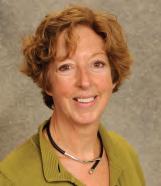
87 DEPARTMENT OF PEDIATRICS FOUR PILLARS
Developmental Pediatrics and JFK Partners
The University of Colorado Department of Pediatrics launched a multidisciplinary clinic in 1964 to address the needs of children with developmental differences. School of Medicine Dean John Conger, PhD, launched a successful effort to expand the program, garnering support from Gov. John Love, the Colorado legislature, and the Joseph P. Kennedy, Jr. Foundation. The concerted effort resulted in the creation of the JFK Child Development Unit and B. F. Stolinsky Lab, with early guidance provided by Donough O’Brien, MD, FRCP, and Joseph Rossi, MD.
In 1965, federal funding was obtained to develop programs that were precursors to the current Leadership Education in Neurodevelopmental Disabilities (LEND) and University Center for Excellence in Developmental Disabilities (hence the acronym UCEDD) programs. Rossi was succeeded by Drs. John Meier, William Frankenburg, and Bonnie Camp. The Center’s international reputation was furthered in 1967 when Frankenburg and Josiah Dodds published the Denver Developmental Screening Test.
JFK Partners became an interdepartmental program of Pediatrics and Psychiatry in 1993, with Cordelia Robinson Rosenberg and Randi Hagerman, MD, named co-Section Heads of Developmental and Behavioral Pediatrics. Pamela McBogg, MD, served as medical director of the clinical program after Hagerman’s departure. In 2009, Sandra Friedman, MD, MPH, was hired to re-establish the Section, now named Developmental Pediatrics, and also served as associate director of JFK Partners. In 2015, she was chosen to direct JFK Partners and led its integration into the Section of Developmental Pediatrics.
Recent achievements include significant increases in faculty and staff, number and types of clinical programs, patient visits, age ranges served, and research funding. The Section obtained ACGME-accreditation for its Developmental and Behavioral Pediatrics fellowship program and is a Collaborating Research Entity for two national research networks.
Current Research Studies
CASCADE Study: Cannabidiol (CBD) Study in Children with Autism Spectrum Disorder
The eXtraordinarY Babies Study: Researching the Natural History of Health and Neurodevelopment in Infants and Young Children with Sex Chromosome Trisomy Group Cognitive Behavioral Treatment for Anxiety in Adolescents with Autism and Intellectual Disability: A Randomized Controlled Trial Hearing Assessment for Children with Developmental Disabilities
Technology-Assisted Language Intervention (TALI) for Children who are Deaf and Hard of Hearing
Study to Explore Early Development (SEED) Follow Up Studies
JFK Partners’ federally funded programs continue, with LEND providing long-term, graduate-level interdisciplinary training and UCEDD supporting independent, full-community inclusion. Outreach to underserved rural and frontier regions has expanded to support primary care providers in the identification and management of those with intellectual and developmental disabilities, including autism spectrum disorder.
Sandra Friedman, MD, MPH, holds a medical degree from Northwestern University’s Feinberg School of Medicine and a master’s in Public Health from Harvard University. She completed her Pediatrics residency at Stanford University and her fellowship in Developmental Pediatrics at Boston Children’s Hospital Boston.
More information about the program and current research projects can be found at medschool.cuanschutz.edu/pediatrics/sections/developmental-pediatricsmedschool.cuanschutz.edu/ jfk-partners

88 DEPARTMENT OF PEDIATRICS FOUR PILLARS
Emergency Medicine
With the affiliation between the University of Colorado Health Sciences Center and The Children’s Hospital came an opportunity to optimize the organizations’ respective strengths in Pediatric Emergency Medicine (PEM). In 1997, the Department of Pediatrics established the Section of Emergency Medicine, naming Joan Bothner, MD, Section Head. Bothner, previously Director of Emergency Medicine at The Children’s Hospital, had been working closely with Steven Poole, MD, Section Head of General Academic Pediatrics and Pediatric Emergency Medicine, and M. Douglas Jones, Jr., MD, Chair of the Department of Pediatrics, to envision the new specialty service and the region’s first Level I pediatric trauma center.
Two decades later, the strategic success of that initial planning is well evidenced. The Section of Emergency Medicine directs the nation’s largest pediatric emergency services program caring for more than 170,000 patients annually. The region of care encompasses seven states, Section faculty exceeds 200, and Children’s Hospital Colorado (CHCO) operates five emergency facilities along Colorado’s Front Range. CHCO on the Anschutz Medical Campus continues to be the region’s only Level I pediatric trauma center.

Networking Nationally
Children’s Hospital Colorado is a Research Node Center for the Pediatric Emergency Care Applied Research Network (PECARN). Created in 2009, PECARN is the first federally funded network in the United States to conduct robust, multi-institutional research into preventing and managing acute injuries and illnesses among children and youth.
Preventing Pediatric Emergencies
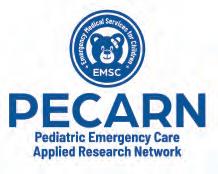
Injury remains the leading cause of death among children in the United States (New England Journal of Medicine, December 2018), with rates far exceeding most other developed countries. Section of Emergency Medicine faculty are on the frontlines—in State legislative sessions, Congressional hearings, international conferences, and community gatherings—in their efforts to help reduce preventable injury. Among those leading are:
Sam Wang, MD – Cannabis-related incidents SEE PAGE 128
Eric Sigel, MD, and Maya Haasz, MD – Firearm Safety
Rachel Cafferty, MD – Suicide Prevention
Children’s Hospital Colorado in Colorado Springs
“Our faculty is intensely collaborative. We do get things done. It’s a ‘how can we help you?’ culture.”
–Joan Bothner, MD
89 DEPARTMENT OF PEDIATRICS FOUR PILLARS
Emergency Medicine, continued
SECTION HEADS
Steven Poole, MD, earned his medical degree at the University of Rochester School of Medicine and Dentistry. He completed his Pediatrics residency and fellowship in Child Development, Behavioral Pediatrics, and General Pediatrics at the University of Colorado School of Medicine. In 1982, he became one of the first University of Colorado faculty at The Children’s Hospital, where he directed Emergency Pediatrics and General Pediatrics. Poole established Children’s Hospital’s after-hours telephone care program, pediatric locum tenens service, and the pediatric hospitalist service for community hospitals in the Denver metropolitan area.
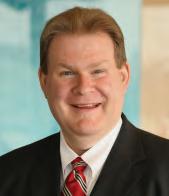
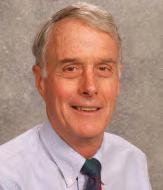
Joan Bothner, MD, earned her medical degree and completed her Pediatrics residency at the University of Texas Medical Branch School of Medicine. She joined the University of Colorado School of Medicine in 1986 and became clinical director of the Emergency Department in 1991. When the Department of Pediatrics established the Section of Emergency Medicine in 1997, Bothner was named Section Head. In 2009, she became Chief Medical Officer of Children’s Hospital Colorado, responsible for overseeing inpatient operations.
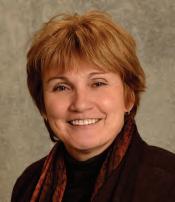
OUTREACH EDUCATION
Timothy Givens, MD, earned his medical degree at Vanderbilt University School of Medicine, and completed both his Pediatrics residency and fellowship in Pediatric Emergency Medicine at Children’s Hospital Medical Center in Cincinnati. He joined the University of Colorado School of Medicine faculty in 2009. After serving as Interim Section Head of Emergency Medicine for the Department of Pediatrics from 2010 to 2012, he was named Section Head in 2012. He continued in the position until early 2018, when he became Vice Chair of Clinical Operations.
Michael DiStefano, MD, earned his medical degree and completed both his Pediatrics residency and Pediatric Emergency Medicine fellowship at Baylor College of Medicine. He became Medical Director of the Children’s Hospital Colorado Emergency Department in 2012, Director of Clinical Operations in 2015, and Interim Section Head in 2017. In 2018, he was named Chief Medical Officer at the new Children’s Hospital Colorado opening in Colorado Springs in 2019.

Rakesh Mistry, MD, earned his medical degree at the University of Medicine and Dentistry of New Jersey-Robert Wood Johnson Medical School. He completed his Pediatrics residency at St. Christopher’s Hospital for Children Program in Philadelphia, and his fellowship in Pediatric Emergency Medicine at the Medical College of Wisconsin/Children’s Hospital of Wisconsin. Mistry joined the University of Colorado School of Medicine faculty in 2013; he was named Interim Section Head of Emergency Medicine in early 2018.
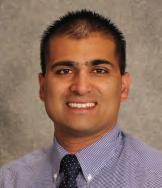 The Section of Pediatric Emergency Medicine works with the region’s Emergency Medical Service professionals and Children’s Hospital Colorado Outreach Education to support clinical caregivers with current, evidence-based pediatric care. In 2018, more than 5,000 health care professionals across every discipline benefited from this training.
The Section of Pediatric Emergency Medicine works with the region’s Emergency Medical Service professionals and Children’s Hospital Colorado Outreach Education to support clinical caregivers with current, evidence-based pediatric care. In 2018, more than 5,000 health care professionals across every discipline benefited from this training.
90 DEPARTMENT OF PEDIATRICS FOUR PILLARS
Endocrinology
A trans-Atlantic phone call in 1956 set in motion a series of decisions still reflected in the Department of Pediatrics Section of Endocrinology. Placing the call was C. Henry Kempe, MD, a recent arrival in Denver to chair the Department of Pediatrics. The recipient in London was Donough O’Brien, MD, FRCP, born in Edinburgh, Scotland, educated at Cambridge University, and the son of Arthur John Rushton O’Brien, director of the Colonial Medical Service. Present in Kempe’s office was John Githens, MD, an associate professor and former Chief Resident at the University of Colorado School of Medicine.
In a 2007 interview with James Todd, MD, and M. Douglas Jones, Jr., MD, Githens recalled the conversation: “He (Kempe) just started recruiting right away. For example, about the second day he was in, he asked me to come up to the office and talk to him about our needs. And I said, ‘At the moment our greatest need is to have a Pediatric laboratory so that we didn’t have to have 10 ml of blood serum from little babies and young children to get simple blood work done. We needed to have a microchemistry lab.’ He thought a minute and called a friend in Boston who gave him—I mean, he did things right away—he gave him Donough O’Brien’s name, because Donough had taken fellowship time in Boston. Then he calls Donough O’Brien in London and offers him the job, which Donough accepted.”

The connection was clear. O’Brien not only established one of the nation’s first pediatric microchemistry labs at the University of Colorado, he was awarded the University of Colorado Medal in 2000 and named the first executive director of the Barbara Davis Center for Childhood Diabetes. His contribution to pediatric health had international reach and continued long after his retirement.
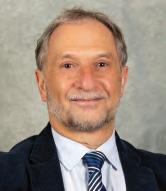
Today’s Section of Endocrinology provides clinical services at the Pediatric Endocrine and Growth Center at Children’s Hospital Colorado and The Barbara Davis Center for Childhood Diabetes (see page 63). Children from the surrounding eight-state area make more than 20,000 visits to the Center annually. Outreach clinics are in place throughout Colorado and Wyoming, and a telemedicine system serves families at a distance from the hospital.
Collaborative clinical programs with other subspecialty departments at Children’s Colorado are in place to provide endocrine support for children who have had bone marrow transplantation, brain tumors, AIDS, cystic fibrosis, asthma, and a variety of metabolic and genetic disorders, including glycogen storage disease, hypoglycemia, Turner syndrome, Prader-Willi syndrome, Klinefelter syndrome, polycystic ovarian syndrome and obesity-related disorders.
The University of Colorado School of Medicine’s Department of Pediatrics and Children’s Hospital Colorado offers a three-year fellowship in Pediatric Endocrinology for clinical or academic medicine. Fellows rotate at three primary teaching sites, Children’s Hospital Colorado, University Colorado Hospital, and the Barbara Davis Center for Childhood Diabetes.
LEADERSHIP
Michael Kappy, MD, PhD, was named Section Head of Pediatric Endocrinology in 1991. Kappy earned his medical degree from the University of Wisconsin School of Medicine and Public Health before completing his Pediatrics residency at the University of Colorado School of Medicine and his fellowship with the Johns Hopkins University Program. The Department of Pediatrics named him a Career Teaching Scholar in 2007.
Philip Zeitler, MD, PhD, Section Head of Pediatric Endocrinology since 2011, also serves as medical director of the Children’s Hospital Colorado Clinical & Translational Research Center. He earned his medical and doctorate degrees from Duke University School of Medicine, completed his Pediatrics residency at Seattle Children’s Hospital, and was a Pediatric Endocrinology fellow at University of Cincinnati College of Medicine/Cincinnati Children’s.
91 DEPARTMENT OF PEDIATRICS FOUR PILLARS
Endocrinology, continued
CURRENT RESEARCH
The Section of Endocrinology is actively involved in research to further the understanding of endocrine problems in the developing child and to improve the diagnosis and care of these children. The primary areas of interest of Section faculty include: Pathophysiology and psychosocial aspects of obesity and type 2 diabetes in children and adolescents. The Section of Endocrinology, a recognized leader in this area of research, is a national site for the TODAY and RISE studies.
Insulin resistance and associated morbidity in obese children and adolescents.
Developmental aspects of insulin resistance during puberty in children with and without diabetes.
New approaches to screening for comorbidities in obese children and adolescents. Development of efficient and cost-effective approaches to endocrine diagnosis to replace older stimulation testing protocols.
Hormone function, metabolic health, and neurodevelopment in children with X&Y chromosome variations, including Klinefelter and Turner syndromes. Hormonal abnormalities in survivors of childhood cancer and other chronic illnesses. Participation in drug trials to develop and implement new medications for children.
Principles and Practice of Pediatric Endocrinology
To create the first edition of Principles and Practice of Pediatric Endocrinology (2005), lead author/editor Michael Kappy, MD, PhD, brought together 30 endocrinology experts from four countries. A third edition of the foundational text is slated for 2020.

MILESTONES
1969 Identification of Silver-Russell syndrome
Faculty member Henry Silver, MD, was the first to describe this syndrome, which leads to growth failure and delayed pubertal development. Studying the various aspects of this syndrome led to improved methods of genetic diagnosis and hormonal treatment of these children over the next 50 years.
1980 Founding of the Barbara Davis Center for Childhood Diabetes
Jules Amer, MD, and Donough O’Brien, MD, FRCP, founded the Center with a grant from Marvin and Barbara Davis. Today, the Center is an international leader in the diagnosis and treatment of children with type 1 Diabetes. (See page 63 for the full story.)
1992 Establishment of the combined endocrine/diabetes clinical, research and training program at Children’s Hospital and the Barbara Davis Center for Childhood Diabetes
The merging of faculty at the University of Colorado Department of Pediatrics and The Children’s Hospital formed the foundation of the present-day program. Faculty members Ronald Gotlin, MD, and Georgeanna Klingensmith, MD, initially comprised the Endocrine Section. The combined program is now considered one of the nation’s best.
2002 Launch of the TODAY study
The TODAY study, addressing the diagnosis and treatment of type 2 diabetes mellitus in children and adolescents, has formed the core of current knowledge regarding the evaluation and treatment of type 2 diabetes in youth. The TODAY study has grown from four to 15 centers nationwide. Chaired by Philip Zeitler, MD, PhD, since 2004, the program has made Children’s Hospital Colorado a national leader in pediatric obesity clinical care and research.
“The endocrinology sub-board of the American Board of Pediatrics was established in 1978 to certify training and competence in endocrinology, including diabetes.”
92 DEPARTMENT OF PEDIATRICS FOUR PILLARS
–National Institutes of Health
Gastroenterology (GI), Hepatology and Nutrition
The Pediatric Gastroenterology Program at Colorado General Hospital was established by Frank Cozzetto, MD, in 1960. In 1965, he was joined by Arnold Silverman, MD, one of the nation’s first fellowship-trained Pediatric Gastroenterologists. Silverman divided his time between medical trainee instruction and outpatient care in Colorado General’s Gastroenterology and Cystic Fibrosis Clinics. In 1967, Department of Pediatrics Chair C. Henry Kempe, MD, suggested Silverman direct the Office of Graduate Education for resident training at The Children’s Hospital. He accepted, continuing to teach and see clinic patients at Children’s.
Kempe’s goal was to forge a strong Pediatric residency program connecting Children’s Hospital, Colorado General Hospital, and Denver General Hospital. The training triumvirate was achieved by the mid-1970s. Dr. Silverman was subsequently appointed Director of Pediatrics at Denver General Hospital where he continued as Section Head.
Among the many pediatric residents who trained under Silverman were Judith Sondheimer, MD, and Ronald Sokol, MD, both of whom returned to the University of Colorado Department of Pediatrics having completed their Pediatric Gastroenterology fellowships. Over the course of five decades, the three—Silverman, Sondheimer and Sokol—would guide the Section of Gastroenterology, Hepatology and Nutrition and Digestive Health Institute at Children’s Hospital Colorado to its current position as one of the nation’s top sites for advanced GI and hepatology care, training, and research.
LEADERSHIP
Frank Cozzetto, MD, a native of Aguilar, Colorado, received his medical degree from the University of Colorado School of Medicine in 1947. Following his residency in Internal Medicine and Pediatrics, he returned to the School of Medicine as a Department of Pediatrics faculty member and partnered with James Strain, MD, in a private pediatric practice. He completed his fellowship in adult gastroenterology at the University of California/Los Angeles in 1960, becoming one of the nation’s first pediatric gastroenterology subspecialists, then returned to Colorado and the University. Cozzetto established both a Gastroenterology and a Cystic Fibrosis Clinic at Colorado General before becoming the Medical Director of The Children’s Hospital (1964–1971). He is remembered as an excellent educator, researcher, innovator, and coauthor of Pediatric Clinical Gastroenterology (1971), the first comprehensive text for the subspecialty.
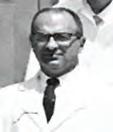
Pediatric Clinical Gastroenterology
“Pediatric Clinical Gastroenterology,” published in 1971, was the first textbook written for the pediatric medical specialty. The first edition was coauthored by Arnold Silverman, MD, and Frank Cozzetto, MD, of the University of Colorado School of Medicine Department of Pediatrics, and Claude Roy, MD, FRCP(C), a former Associate Professor of Pediatrics with the program. The textbook is now in its fourth edition.

93 DEPARTMENT OF PEDIATRICS FOUR PILLARS
Gastroenterology (GI), Hepatology and Nutrition, continued
SECTION HEADS
Arnold Silverman, MD, the first to head the Section of Gastroenterology, held the post until 1985. A graduate of the University of Colorado School of Medicine, Silverman completed his residency and chief residency in Pediatrics at the University of Minnesota, returning to Colorado in 1964 to cofound the Pediatric GI Fellowship with Frank Cozzetto, MD. The Arnold Silverman Endowed Chair in Digestive Health has been established in his name.
Judith Sondheimer, MD, served as Section Head of Gastroenterology, Hepatology and Nutrition from 1985 to 2006. A graduate of Columbia University School of Medicine, she completed her residency at the University of Colorado School of Medicine and her fellowship in Pediatric Gastroenterology at the Hospital for Sick Children in Toronto, Canada. Following her retirement, she served as Interim Chief of Pediatric Gastroenterology at Georgetown University Medical Center in Washington, DC.

Ronald Sokol, MD, was named Section Head in 2006. Sokol earned his medical degree from the University of Chicago Pritzker School of Medicine and completed his Pediatrics residency with the University of Colorado program, serving as Chief Resident in 1980. He served his Fellowship in Pediatric Gastroenterology and Nutrition at Cincinnati Children’s Hospital Medical Center before returning to Colorado. Sokol is the first to hold the Arnold Silverman Endowed Chair in Digestive Health.
KEY ACHIEVEMENTS
1960 Frank Cozzetto establishes the first Pediatric Gastroenterology specialty practice in the western United States at Colorado General Hospital.
1983 Ronald Sokol, Mary Anne Guggenheim, and Arnold Silverman identify the cause and symptoms of vitamin E deficiency in humans, focusing on children with chronic cholestatic liver diseases. This leads to their development and demonstration of efficacy of an effective oral therapy.
1987 Ronald Sokol and David Stumpf describe a new genetic disease subsequently called Ataxia with Vitamin E Deficiency.
1991 Judith Sondheimer, Michael Narkewicz, Robert Kramer, and Edward Hoffenberg launch one of the first advanced and therapeutic endoscopy and GI diagnostics programs for children in the United States. This program pioneers the use of endoscopic retrograde cholangiopancreatography (ERCP), small bowel balloon enteroscopy, esophageal stenting, videocapsule endoscopy, and esophageal pH/Impedance monitoring in pediatrics.
1995 Ronald Sokol and Arnold Silverman discover the role of oxidative stress and mitochondrial dysfunction in the pathogenesis of cholestatic liver disease.
2002 Ronald Sokol chairs the Steering Committee of the NIDDK/NIH-funded Childhood Liver Disease Research Network, a consortium of 15 international centers studying nine rare childhood liver diseases.
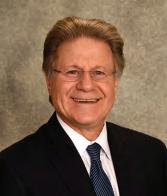

2004 Cara Mack identifies the immunologic basis and the role of autoimmunity in bile duct and liver injury and progression in biliary atresia.
2005 Section faculty members—including Glenn Furuta, Dan Atkins, and Calies Menard-Katcher—discover the roles of eosinophils in gastrointestinal inflammation. This leads to the creation of one of the first multi-disciplinary clinics in the United States for the evaluation and management of Eosinophilic Gastrointestinal Diseases.
2006 Michael Narkewicz is named chair of the NIH/CF Foundation funded Cystic Fibrosis Liver Disease Network.
2014 Glenn Furuta leads the new NIH-funded international Consortium of Eosinophilic Gastrointestinal Disease Researchers (CEGIR).
2015 The Section develops the first Trans-Nasal Esophagoscopy outpatient clinic in the U.S. for unsedated pediatric GI endoscopy, led by Joel Friedlander, Nathalie Nguyen, Robert Kramer, Glenn Furuta, Robin Deterding, and Jeremy Prager.
94 DEPARTMENT OF PEDIATRICS FOUR PILLARS
The Digestive Health Institute at Children’s Hospital Colorado

In 1985, the Section established the nation’s second multidisciplinary Pediatric Liver Center program, integrating all aspects of clinical care, surgery, research and training. Key leaders included Pediatric Gastroenterologists Ronald Sokol, MD, Arnold Silverman, MD, and Michael Narkewicz, MD, and John Lilly, MD, Chief of Pediatric Surgery at the University of Colorado School of Medicine. Lilly had been recruited in 1972 by Thomas Starzl, MD, who performed the world’s first liver transplantation in a child during his tenure at the University.
The Section is now home to one of the nation’s top-ranked clinical care, education, and research programs, and the Digestive Health Institute at Children’s Hospital Colorado is the site of more than 30,000 patient visits annually with patients seen at over 15 sites. In addition to a comprehensive General Gastroenterology Program, it provides these specialized services:
Aerodigestive Program, providing multidisciplinary care for children with complex airway, respiratory, and gastrointestinal tract disorders.
Colorado Center for Celiac Disease, one of the first focusing solely on pediatric celiac disease and gluten sensitivity.
Gastrointestinal Eosinophilic Diseases Program, the region’s only multidisciplinary program for children affected by eosinophilic gastrointestinal diseases (EGIDs).
Inflammatory Bowel Disease (IBD) Center, specializing in the diagnosis and treatment of Crohn’s disease, ulcerative colitis, indeterminate colitis, and immunodeficiency-related IBD.
Intestinal Rehabilitation Program, the only program in the region treating infants and children with intestinal failure who require intravenous nutrition.
Neurogastroenterology and Motility Program, the region’s only program providing care and research studies for children with complex motility disorders. Pediatric Liver Center and Liver Transplant Program, the region’s only comprehensive pediatric provider of multispecialty liver disease care and evaluation for possible candidacy through liver transplant and long-term follow up.
Advanced Diagnostic and Therapeutic Endoscopy Center, the region’s only pediatric program offering advanced and therapeutic endoscopy, ERCP, endoscopic ultrasound, and other specialized procedures that avoid surgery.
95 DEPARTMENT OF PEDIATRICS FOUR PILLARS
General Academic Pediatrics
The Department of Pediatrics’ four-pillar mission—clinical services, advocacy, research, and education—is wholly reflected in the work of the Section of General Academic Pediatrics. Children regionally and nationally have benefited from the innovative systems and care advances it has introduced. Of note:
The Child Health Associates program, founded in 1968 by Henry Silver, MD, transformed pediatric care by training physician assistants to provide medical care for infants, children, and adolescents under the supervision of physicians. Ongoing legislative guidance at both the state and national level has resulted in policy changes that have improved access to care for pediatric patients as well as early learning opportunities.
The Child Health Clinic provides a true medical home for underserved children in Aurora; the Special Care Clinic is the nation’s largest complex primary care clinic.
The Children’s Outcomes Research program, later becoming part of the ACCORDS health outcomes research center, has become a national model. One of its major programs, Immunization delivery has been improved through research-based protocols funded by seven separate grants. Pediatric telephone triage services pioneered here have been adopted nationwide. Preventive dental care—a collaborative, research-based initiative of the Section, Denver Health, and ACCORDS—is garnering national provider attention.
Section faculty train 53 Pediatric residents, 16 Family Medicine residents, 22 Child Health Associates, and 10 medical students each year while providing longitudinal, comprehensive primary care in the Child Health Clinic at Children’s Hospital Colorado. Other training sites include clinics and inpatient units at Denver Health, Children’s Hospital Colorado, University of Colorado Hospital, and community practices.
SECTION HEADS
Stephen Berman, MD, earned his medical degree from Temple University Medical School and completed his Pediatrics residency at the University of Colorado School of Medicine, serving as Chief Resident in 1975–1976. A global leader in pediatric health access and policy, he is a past president of the American Academy of Pediatrics. Dr. Berman served twice as Section Head of General Academic Pediatrics, from 1981–1989 and 1998–2007. He was named a Career Teaching Scholar in 2008.


Steven Poole, MD, is a graduate of the University of Rochester School of Medicine and Dentistry. He completed his Pediatrics residency and fellowship at the University of Colorado School of Medicine. While serving as Section Head of General Academic Pediatrics (1989–1998) Dr. Poole guided development of the Colorado Children’s Healthcare Access Program to ensure underserved children a “medical home.” An international pioneer in pediatric telephone triage systems, he was named a Career Teaching Scholar in 2007.
Christopher Stille, MD, MPH, is a graduate of Duke University School of Medicine. He completed his Pediatrics residency at the Children’s Hospital of Philadelphia, and his fellowships and Masters of Public Health at the University of Connecticut. His commitment to improving health systems for children with chronic and complex needs has contributed to the Section becoming a national hub of clinical care and research for this important population. Dr. Stille was named Section Head of General Academic Pediatrics in 2010.
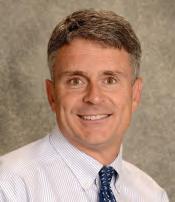
96 DEPARTMENT OF PEDIATRICS FOUR PILLARS
Clinical Genetics and Metabolism
Medical historians list 1948 as the start of the scientific approach to human genetic studies, linking it to the founding of the American Society of Human Genetics. That was the same year Theodore Puck, MD, was recruited by the University of Colorado Medical School to launch and chair its Department of Biophysics. Puck’s work in somatic cell genetics and single-cell plating, an early form of genetic cloning, and that of other genetics pioneers would make possible the international Human Genome Project (1990 to 2003).
Several of Puck’s most-cited research studies list Arthur Robinson, MD, as a co-investigator. A community pediatrician and member of the Department of Pediatrics faculty, Robinson shared the story of Puck’s and his 40-year collaboration in a 1990 autobiographical article published in The American Journal of Medical Genetics (April 1990). “My interest and involvement in genetics grew as our friendship grew … and it was he who had the vision to take genetics out of the basic science laboratory to the practice of medicine.”
Puck, Robinson, and their team confirmed research completed in 1956 by Joe Hin Tijo, PhD, showing that the human chromosomal count is 46, not 48 as previously thought. In 1964, they described a method for identifying the X chromosome in human fetuses at birth.
Nearly 60 years later, research leading to early detection and improved management of genetic disorders and predispositions remains a priority. Concurrently, the Genetics and Inherited Metabolic Diseases Program at Children’s Hospital Colorado cared for more than 5,600 families from across the Rocky Mountain region in 2018.

Services include: prenatal, child and adult diagnosis, genetic testing, and counseling on-site inpatient consultations for metro-Denver hospital nurseries specialty clinics for neuromuscular disorders, including Prader-Willi and Angelman Syndromes, skeletal dysplasia, neurofibromatosis, and inborn errors of metabolism outreach clinics and telehealth services across a seven-state region nationally recognized biochemical, cytogenetic, and molecular genetic laboratory services
AT THE FOREFRONT
Donough O’Brien, MD, FRCP, joined the University of Colorado Department of Pediatrics in 1957 as a professor and devoted his early efforts to the field of premature newborn infant care. He launched one of the world’s first pediatric microchemistry laboratories, the Pediatric Clinical Research Center, the University Pediatric Dialysis unit, and the first University fellowship program to train subspecialists in Pediatrics. He was the first Executive Director of the Barbara Davis Center for Childhood Diabetes.
Arthur Robinson, MD, left private practice in 1959 to join the Department of Pediatrics and the Department of Biophysics. Working in collaboration with Theodore Puck, MD, in the Department of Biophysics, he made seminal contributions to identifying the number of chromosomes in humans, sex chromosome structure, and the field of cytogenetics.


DEPARTMENT OF PEDIATRICS FOUR PILLARS 97
Genetics and Metabolism, continued
Stephen Goodman, MD, PhD, came to Denver in 1965 to be part of the fellowship program O’Brien established. In 1967, O’Brien chose him to guide federal grants awarded to the Department of Pediatrics to study mental retardation. In 1975, he was the first to describe and help develop successful treatment for glutaric aciduria type 1, an inherited metabolic disorder that can result in severe damage to the brain. Dr. Goodman was named a Distinguished Professor of Pediatrics in 2011.
Eva Sujansky, MD, collaborated with Arthur Robinson, MD, and Vincent (Vic) Riccardi, MD, to open the Genetic Counseling Training Program at the University of Colorado School of Medicine in 1971. In 1975, she was named director of the Regional Genetic Program and began providing consultations for all Denver metro hospitals as well as outreach sites. That same year, she identified the genetic abnormality responsible for Recombinant 8 Syndrome, also known as San Luis Valley Syndrome.
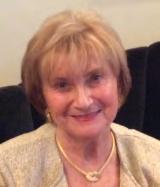
David Manchester, MD, completed both his residency and his Pediatrics fellowship at the University of Colorado. His interest in neonatology led to his involvement with early fetal therapy efforts and board certification in genetics. Following research at the National Institutes of Health, he returned to Colorado as the consulting geneticist at The Children’s Hospital.
Johan Van Hove, MD, PhD, succeeded Stephen Goodman as Section Head of Clinical Genetics and Metabolism. He earned his medical degree at the Catholic University of Leuven in Flanders Belgium and completed his fellowship in Clinical Genetics and Genomics (MD) at Duke University. Van Hove is a recognized leader in the field of biochemical genetics and a driver of novel therapies.
Shawn E. McCandless, MD, PhD, was named Clinical Section Head of Genetics and Metabolism in 2018 after directing the Center for Human Genetics at University Hospitals Cleveland Medical Center/Rainbow Babies and Children’s Hospital in Cleveland, Ohio. McCandless’ current research focuses on developing new treatment approaches for inborn errors of metabolism, particularly the urea cycle disorders, and the Prader-Willi Syndrome.

KEY CONTRIBUTORS
Janet Stewart Claman, MD—Directed the Birth Defects Clinic at University Hospital
Vincent “Vic” Riccardi, MD—Instrumental in Genetics Program outreach to the Rocky Mountain Region
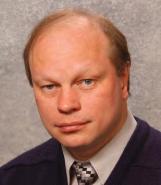
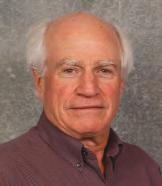
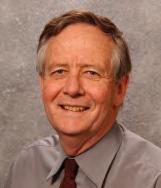
Elaine Spector-Christensen, PhD—Founded one of the nation’s seminal molecular genetics diagnostic laboratories
Richard Spritz, MD—Founded the Human Medical Genetics and Genomics Program in the Graduate School
Janet Thomas, MD—Served as interim Section Head for 2017–2018; a recognized leader in regional genetics services delivery
98 DEPARTMENT OF PEDIATRICS FOUR PILLARS
SIX MILESTONES Lab Notes from the 9th Avenue Campus
“Donough O’Brien’s group was more interested in inborn errors of metabolism, inherited defects in biochemical pathways that led to abnormalities in metabolic intermediates and clinical disorders that usually disturbed normal brain function. This group, which included myself, Peter Chase, and Neil Buist, was initially based in labs on the bridge over Ninth Avenue, but in 1968 moved to the BF Stolinsky Research Laboratories, which was on the north side of Eighth Avenue across from the College Inn.
“The group added several new faculty and became supported by three large federal grants; (a) a Special Project of Regional and National Significance to deliver clinical and lab services to this region of the country; (b) a programmatic research grant to support studies on various inborn errors; and (c) a Mental Retardation Research Grant to fund core services—like tissue culture and biochemical and molecular diagnostic labs—to support the clinical and research efforts.
“Individual clinicians and researchers in the Stolinsky Labs changed over the years—some retiring and others moving to distinguished careers elsewhere— but their basic grant support did not, and several major advances were made, including work on glutaric acidemias and fatty acid oxidation disorders by Steve Goodman and Frank Frerman, on cystathionine synthase deficiency and propionic acidemia by Jan Kraus and Ken MacLean, on Krabbe Disease and other lysosomal disorders by David Wenger, on glycerol kinase deficiency by Edward McCabe, and on behavioral correlates of human diseases in small mammals by Linda Crnic. A few of us, including Donough O’Brien and Peter Chase, eventually became more heavily focused on childhood diabetes.”
–Stephen Goodman, MD, PhD | History Project Memo, 2017
1950–60s Arthur Robinson, in collaboration with Theodore Puck in the Department of Biophysics and later the Eleanor Roosevelt Institute, make seminal contributions to identifying number of chromosomes in humans, sex chromosome structure, and the field of cytogenetics.
1970s Riccardi and Sujansky initiate genetics outreach efforts across Colorado and Wyoming.
1971 Robinson, Vincent “Vic” Riccardi, Eva Sujansky, and others launch one of the first Genetic Counseling training programs in the country.
1975 Stephen Goodman, instrumental in developing methods for organic acid analysis, describes glutaric aciduria type I.
1984 Randi Jenssen Hagerman and Pamela McBogg publish Fragile X Syndrome: Diagnosis, Treatment and Research, the first book on the subject.
2018 Jan Kraus’ lifetime work to develop a novel enzyme replacement therapy for homocystinuria is rewarded as first human clinical trials begin.
The Genetics and Inherited Metabolic Diseases Program at Children’s Hospital Colorado cared for more than 5,600 families from across the Rocky Mountain region in 2018.
99 DEPARTMENT OF PEDIATRICS FOUR PILLARS
Hematology, Oncology and Bone Marrow Transplant (BMT)
Department of Pediatrics researchers and clinicians have contributed to extraordinary improvements in childhood cancer outcomes. Lia Gore, MD, Section Head of Pediatric Hematology/Oncology/BMT, shares one example:
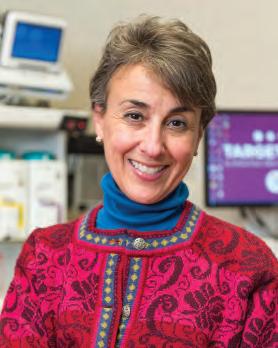
“Childhood acute lymphoblastic leukemia (ALL), the most common form of pediatric cancer, occurs when the bone marrow produces an excess of immature lymphocytes, a type of white blood cell. When physicians at The Children’s Hospital treated their first ALL patient in 1946—at a point when the disease was still termed ‘lymphatic leukemia’ and the disease was essentially uniformly fatal—it marked a major oncology advance for the Rocky Mountain region.
“From that point forward, our leadership in ALL treatment has had global influence. Children’s faculty, including Dr. Linda Stork, Dr. Steve Hunger, Dr. Kelly Maloney, and I have all led global studies for childhood ALL. Each of these studies has set a new standard of care at the time.”
KEY ACHIEVEMENTS IN HEMATOLOGY/ONCOLOGY
1946 The Children’s Hospital treats its first child patient with lymphatic leukemia, now termed acute lymphoblastic leukemia.
1969 Charles August begins pioneering use of bone marrow transplantation for a variety of pediatric genetic disorder.
1972 The Children’s Hospital dedicates the region’s first pediatric hematology/ oncology center.
1977 William Hathaway is named to direct one of the first six federally funded Hemophilia Centers in the United States.
1978 Lorrie Odom, Charles August, John Githens, James Humbert, and colleagues describe the first instance of remission of leukemia induced by bone marrow transplantation, a “graft-versus-leukemia” reaction.
1987 Daniel Ambruso, John Githens, Taru Hays, Wanda Vaughn, Donna Dixon, and others show that for frequently transfused patients with sickle cell disease, use of blood matched for minor blood group antigens resulted in a tenfold reduction in alloimmunization and reduced likelihood of clinically significant transfusion reactions.
1994 Roger Giller establishes the region’s only dedicated pediatric bone marrow transplant program. It will perform over 1000 transplants in the next 25 years.
1996 Lia Gore, Peter Lane, Ralph Quinones, and Roger Giller publish first related sibling cord blood transplant for sickle-cell disease.
2003 The Children’s Hospital opens the first Experimental Therapeutics Program in the Rocky Mountain region to conduct phase I clinical trials for children with cancer.
2005–2010 Kelly Maloney opens and directs the world’s largest clinical trial for standard risk acute lymphoblastic leukemia conducted to date.
2011 The Center for Cancer and Blood Disorders (CCBD) at Children’s Hospital Colorado (CHCO) develops the first Cancer Wellness Program in a 16-state area. Led by Robert Casey, the program includes psychologists, social workers, art therapists, child life specialists, and family resource coordinators.
The region’s only pediatric cancer center providing care for patients from birth to age 25 and beyond New cancer diagnoses annually New blood disorders diagnoses annually NIH and other grant funding for ongoing active research studies MILLION 300+ 250+ $14+ DEPARTMENTAL STATISTICS 100 DEPARTMENT OF PEDIATRICS FOUR PILLARS
Lia Gore, MD
2014 CHCO becomes the 11th center in North America approved to treat children with neuroblastoma and neuroendocrine tumors with radioactive metalodobenzylguanidine. Meg Macy directs the program.
2015 Taizo Nakano and Annie Kulungowski open the region’s only multidisciplinary vascular anomalies program.
2017 CHCO initiates a global oncology program led by Sandra Luna-Fineman to bring CCBD and Children’s Colorado expertise to developing nations.
William Hathaway, MD
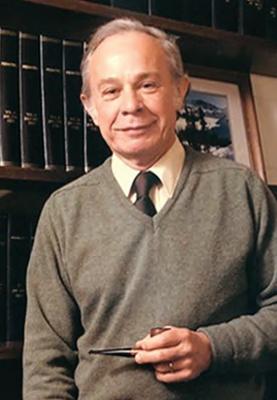
Dr. William Hathaway’s career in hematology spanned all four pillars of the Department of Pediatrics mission— clinical care, advocacy, research, and education. He served his fellowship in hematology at the University of Colorado School of Medicine in 1959-60. After practicing privately in Colorado Springs and teaching at the University of Kentucky Medical Center, he returned to the University of Colorado School of Medicine as an assistant professor in Pediatrics in 1964 and was named full professor in 1973. Dr. Hathaway founded and directed the Hemophilia Center at the University of Colorado Medical Center from 1967 until his retirement in 1989 as professor emeritus. In 1996, he was named a Career Teaching Scholar by the Department of Pediatrics. Dr. Hathaway is recognized globally for his establishment of the first laboratory focused on pediatric coagulation, contributions to understanding the development of hemostasis in the fetus and newborn infant, discovery of the contact factor, prekallikrein, and training the largest number of academic pediatric hematologists in the U.S.
2017 CHCO and the University of Colorado School of Medicine recruit Terry Fry, a global leader in immunotherapy, from the National Cancer Institute. Groundbreaking work in immunotherapy for cancer begins as CHCO collaborates with the Gates Biomanufacturing Facility on the Anschutz Medical Campus. Fry and Mike Verneris treat the first patients in the Rocky Mountain region with Chimeric Antigen Receptor (CAR) T-cell therapy, less than a year later.
2018 International clinical trials directed by the CCBD team from 2012–2018 lead to FDA approval of three new drugs for four different childhood cancers: Blinatumomab for B-cell ALL; Brentuximab for Hodgkin’s disease and anaplastic large cell lymphoma; and Ipilimumab for pediatric melanoma.

Dr. Lia Gore was instrumental in Children’s Hospital Colorado’s Research to Accelerate Cures and Equity (RACE) for Children Act (S.456). The legislation, designed to expedite FDA approval of more adult cancer therapies for pediatric use, was signed into law in 2017.
Recognized for “always taking time to teach with enthusiasm,” Taru Hays, MD, was named a Career Teaching Scholar in 1996.
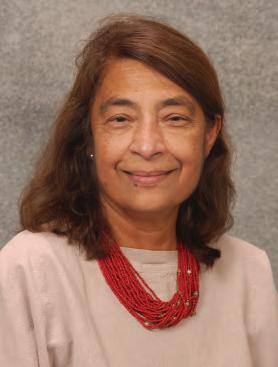
101 DEPARTMENT OF PEDIATRICS FOUR PILLARS
Infectious Diseases and Epidemiology
General historians have long labeled the 1859–1860 discovery of gold and silver as the start of Colorado’s growth boom. Medical historians, however, point to a second prime factor for the Centennial State’s early development: tuberculosis. This infectious disease was the nation’s leading infectious cause of death in the 1800s, earning it the name “The White Death.”
Having no immunization to prevent the disease nor medication to counter tuberculosis, many eastern residents traveled west in search of relief. Colorado offered the trifecta of treatments available at the time: sunshine (heliotherapy), clean air and higher altitudes. “Consumption sanctuaries,” several of which later evolved into today’s metropolitan Denver hospitals, attracted thousands. At the height of infection, an estimated one in three residents of the Centennial State suffered from TB. Control would not come until the 1940s and the distribution of effective antibiotics.

Common infectious diseases such as smallpox, diphtheria, scarlet fever, measles, mumps, and chicken pox were joined in the late 1920s by another with significant pediatric impact—poliomyelitis, also known as “infantile paralysis.” The first injections of Dr. Jonas Salk’s polio vaccine did not occur until 1954, and Dr. Albert Sabin’s oral vaccine was not employed in the United States until 1960.
A major polio outbreak sweeping Colorado in 1946–1947 resulted in the state’s delaying school openings. At Colorado General Hospital, Denver General Hospital and The Children’s Hospital—all sites where Department of Pediatric faculty saw patients—the hum of mechanical respirators was constant. Pediatrician and historian Seymour Wheelock, MD, later wrote: “On September 8, 1982, the polio era poignantly came to a symbolic end for me when the Children’s Hospital maintenance forces deposited the last ‘iron lung’ in the trash heap. This diabolical, if lifesaving, machine should have been bronzed like baby shoes, or planted with geraniums, or put in the hospital lobby for dollar donations through its ports.”

Colorado pioneers in pediatric infectious diseases, C. Henry Kempe and Vincent Fulginiti, were instrumental in the 1960’s in the use of smallpox vaccine
to eradicate smallpox globally and ultimately obviate the need to continue vaccination in the United States. Each decade since has seen major achievements by Section of Infectious Disease faculty. In addition to leading research and clinical trials in fungal, bacterial and viral pathogenesis, and treatment, today’s ID team sees approximately 4,000 patients annually at Children’s Hospital Colorado.
Heliotherapy at The Children’s Hospital (1937)
Iron lung instruction for nursing students at Colorado General Hospital (1950) Photo: Mountain Scholar
102 DEPARTMENT OF PEDIATRICS FOUR PILLARS
SECTION HEADS
Kenneth McIntosh, MD, graduated from Harvard Medical School in 1962 and completed a three-year Medicine residency at the Peter Bent Brigham Hospital in Boston. He then joined the Public Health Service in the Laboratory of Infectious Diseases at the National Institutes of Health, conducting research in respiratory viruses. In 1968, he spent a year at the National Institute for Medical Research in Mill Hill, in the northern suburbs of London. McIntosh joined the University of Colorado School of Medicine faculty in fall 1969 and served as the first Section Head of Pediatric Infectious Disease and director of the Virology Diagnostic Laboratory through 1979. Returning to Boston, he became Chief of the Division of Infectious Diseases at Boston Children’s Hospital and Professor of Pediatrics at the Harvard School of Public Health. Brian Lauer, MD, was Acting Section Head until the next appointment.
Myron Levin, MD, was named Section Head of Pediatric Infectious Disease in 1982 and served until 2001. A graduate of the Harvard Medical School, Levin interned and completed his residency at Bronx Municipal Hospital Center (Einstein) before becoming a clinical associate with the National Institutes of Health. He served fellowships in Infectious Disease at Children’s Hospital Medical Center/Beth Israel Hospital and in Research at Harvard Medical School. Mark Abzug, MD, was named Interim Section Head following his resignation to pursue research interests.
Mary Glodé, MD, served as Section Head of Pediatric Infectious Disease from 2002 to 2014. After graduating from Washington University School of Medicine, Glodé completed her internship and residency in Pediatrics at Children’s Medical Center, University of Texas Southwestern Medical School. Following a post-doctoral fellowship with the National Institutes of Health, she served her fellowship in Pediatric and Adult Infectious Disease at Children’s Hospital and the Beth Israel Hospital, Harvard Medical School.

James Todd, MD, earned his medical degree at the University of Michigan and served his internship and residency at the University’s Mott Children’s Hospital. Following his Pediatric Infectious Diseases fellowship with the University of Colorado program, he served as Director of Infectious Disease at The Children’s Hospital from 1973 to 1990. Following the affiliation, he held the post of Section Head of Pediatric Epidemiology from 1991 to 2017. Todd was the first to hold the Jules Amer Chair in Community Pediatrics.
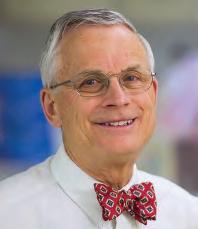
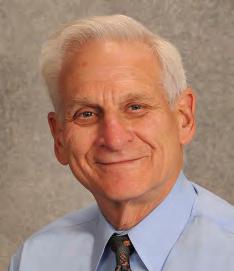
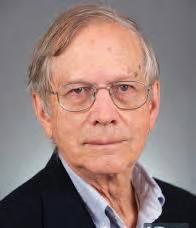
Elizabeth McFarland, MD, was named Section Head of Pediatric Infectious Diseases and Epidemiology in 2016, having been appointed interim in 2014. A graduate of Duke University School of Medicine, she interned, served her Pediatrics residency and completed her fellowship in Pediatric Infectious Disease with the University of Colorado Health Sciences Center.
A pioneering researcher in prenatal and perinatal HIV infection, she currently directs the Children’s Hospital Colorado HIV Program and the Pediatric Infectious Disease Outpatient Clinic.

103 DEPARTMENT OF PEDIATRICS FOUR PILLARS
Infectious Diseases and Epidemiology, continued
1960 Vincent Fulginiti and C. Henry Kempe lead teams working toward world-wide eradication of smallpox through vaccination.
1978 James Todd is the first to describe Toxic Shock Syndrome and identify its etiology. His findings lead to one of the major public health discoveries of the decade.
1981 Mary Glodé’s investigations lead to an understanding of the value of prophylaxis for household contacts after exposure to invasive Haemophilus influenzae type B infection.
1986 Mary Glodé coauthors seminal work leading to establishing intravenous immunoglobulin as the first effective treatment of Kawasaki Disease.
1988 Harley Rotbart develops an assay using polymerase chain reaction (PCR) to detect enterovirus. It becomes the standard diagnostic method for detection of enteroviral and other viruses worldwide.
INTERNATIONAL IMPACT
Since the 1950s, when Dr. C. Henry Kempe was leading efforts to prevent and treat smallpox, Infectious Diseases faculty and trainees have led or supported health programs on six of the seven continents. These global outreach efforts have encompassed the following nations and programs.
1992 Myron Levin and mentee Elizabeth McFarland lead the opening of The Children’s Hospital Immunodeficiency Program (CHIP), the first and still only program in the Rocky Mountain Region specifically dedicated to providing families comprehensive HIV services.
2006 Myron Levin and collaborators work on vaccination for prevention of shingles leads to licensure of the first herpes zoster vaccine.
2013 Sarah Parker pioneers Handshake Stewardship, a unique approach to antimicrobial usage at Children’s Hospital Colorado. Its success in reducing costs and anti-infectives has made it a Joint Commission for Hospitals’ best practice
2018 Kevin Messacar, Samuel Dominguez, and Kenneth Tyler identify Enterovirus D-68 as a likely cause of acute flaccid myelitis.
AFRICA—Botswana, Ethiopia, Ghana, Kenya, Malawi, Morocco, South Africa, Swaziland, Tanzania, Uganda, Zambia, Zimbabwe
1. Antimicrobial and Antiparasitic Therapy
2. Bacterial Meningitis and Pneumonia Studies
3. RSV and Influenza Epidemiology
4. WHO Related Studies
5. HIV Vaccines and Treatment
ASIA—Bangladesh, China, India, Indonesia, Japan, Nepal, New Guinea, Philippines, Taiwan, Vietnam
1. Acute Respiratory Infection Studies
2. HIV and TB Studies
3. Multiple Vaccine Trials
4. RSV Prophylaxis and Immunization
AUSTRALIA—Brisbane
1. Pneumococcal Vaccine Trial Collaboration
EUROPE—Denmark, Germany, Italy, Spain, Switzerland, Romania, Russia, United Kingdom
1. Vaccines for Bacterial Meningitis
2. Measles Immunization Trial
3. Pediatric HIV Care in Group-Care Settings
4. RSV-Related Studies
NORTH AMERICA—Guatemala, Haiti, United States
1. Multiple COVID Studies
2. Dengue, Influenza and Zika Studies
3. HIV-Related Studies and Treatment
4. Kawasaki Disease Diagnosis and Treatment
5. Enterovirus Related Studies (Neonates and Children)
SOUTH AMERICA—Brazil
1. Maternal and Infant HIV Studies
2. Pneumococcal and TB Vaccine Studies
MILESTONES
104 DEPARTMENT OF PEDIATRICS FOUR PILLARS
Neonatology
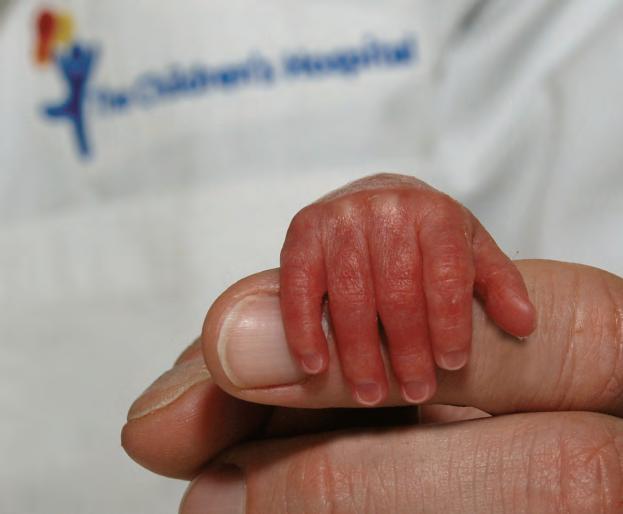
In 1960, more than 18 of every 1000 newborns in the United States died within the first 28 days of life. By 2016, the neonatal mortality rate had dropped to just four in 1000. The improvement was the result of numerous, interrelated forces, including prenatal care, nutrition, medical strides, and public health policies.
One particular advance—the emergence of Neonatal-Perinatal Medicine as a distinct clinical pediatric sub-specialty—merits special attention. The American Board of Pediatrics offered the first certification examination in 1975. Faculty members of this Department of Pediatrics, however, were helping form the subspecialty’s foundation and bettering patient outcomes decades earlier.
Eight areas in which the department’s clinical services have enhanced Neonatology nationally are:
Regional connections. In 1939, less than a decade after the Department of Pediatrics was formed, physicians on staff at The Children’s Hospital began traveling to Wyoming to share new knowledge on preterm infant care. Care of the preterm infant. In 1947, the University opened the Premature Infant Teaching Unit with Lula Lubchenco as medical director. Over the years, this has developed into NICU care for inborn and outborn neonates at the University of Colorado Hospital and the Children’s Hospital Colorado, with surgical care for conditions diagnosed prior to birth provided through the Colorado Fetal Care Center.
High-altitude impact on neonates. In 1957, John Lichty and colleagues published “Studies of babies born at high altitudes: Relation of altitude to birth weight.” This led to fundamental discoveries of the importance of the relationship between birthweight and gestational age, and of the effect of fetal and maternal oxygenation and nutrition on fetal growth and development.
Fetal growth and nutrition. The arrival of Frederick Battaglia in 1965 marked the beginning of ongoing decades of groundbreaking basic research into the physiology and pathophysiology of growth and nutrition in the mammalian fetus. Family involvement. In the late 1960s, Colorado native and pioneer thinker Edith Jackson consulted with Department of Pediatrics faculty on the psychosocial aspects of optimal newborn care.
Infant transport. In the mid-1960s, newborn transport to Children’s Newborn Center still involved new fathers, accompanied by a hospital nurse, taking a portable incubator to the birth site and returning with the infant. One of the nation’s first neonatal transport teams was launched when Joe Butterfield, Newborn Center director, flew in a DC-3 “Gooney Bird” to a remote southern Colorado airstrip to receive the newborn from the local doctor.
Early intervention. Early newborn screening for cystic fibrosis, phenylketonuria, and other congenital conditions were developed or enhanced by Department of Pediatrics faculty with life-saving results. Care innovations. Department of Pediatric faculty members have pioneered such critical developments in neonatal care as inhaled nitric oxide therapy for neonatal pulmonary hypertension and early intravenous nutrition for extremely low birth-weight infants.
105 DEPARTMENT OF PEDIATRICS FOUR PILLARS
Neonatology, continued
FOUR AT THE FOREFRONT
When the international foundations of Neonatology are chronicled, four University of Colorado Department of Pediatrics faculty members are cited consistently: Harry Gordon, MD, joined the Department in 1946 and became its first full-time chair in 1947. He collaborated with
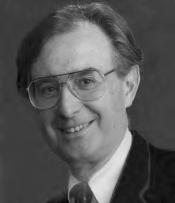
E. Stewart Taylor, MD, Chair of the School of Medicine’s Department of Obstetrics and Gynecology, and pediatrician Lula Lubchenco, MD, to create one of the nation’s first premature infant teaching units.
Lula Lubchenco, MD, served as the first and only medical director of the Premature Infant Teaching Unit for 30 years and made fundamentally important contributions to neonatology. The Lula O. Lubchenco, MD, Endowed Chair of Neonatology has been established in her name.
Frederick Battaglia, MD, came to the School of Medicine in 1965 as an associate professor in both Pediatrics, and Obstetrics and Gynecology. With Giacomo Meschia, MD, (Physiology) and Edgar Makowski, MD, (Obstetrics and Gynecology), he created the Division of Perinatal Medicine.
L. Joseph Butterfield, MD, established The Newborn Center at The Children’s Hospital in 1965. He was an early champion of regionalized neonatal intensive care as well as family-centered care, removing parental visiting-hour limits, encouraging neonatal touch, and pioneering the nation’s first neonatal hospice program.
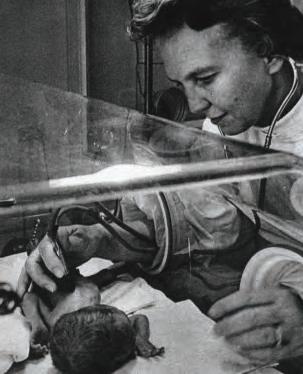



LULA LUBCHENCO, MD: COLORADO’S FIRST NEONATOLOGIST
“Dr. Lu really regarded herself as a pediatrician whose job was to find the newborn who needed special support to survive and to thrive.”
–Susan Niermeyer, MD, MPH Career Teaching Scholar, 2017
Informally known as “the Lulagram,” the chart developed by Dr. Lubchenco provided clinicians a way to correlate a baby’s birth weight and its gestational age. Evolved versions of the chart are still in use globally more than 50 years after its introduction.
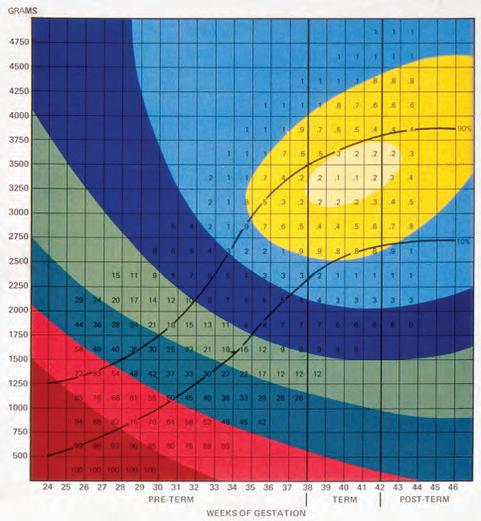
106 DEPARTMENT OF PEDIATRICS FOUR PILLARS
Image courtesy of Advances In Pediatrics, Volume 61, 2014
MILESTONES
The Section of Neonatology’s post-affiliation contributions to clinical care, research, education, and advocacy include:
1992 Inhaled nitric oxide studies by Steven Abman, MD, John Kinsella, MD, Steven Neish, MD, and Elizabeth Shaffer, MD, launch a nationally prominent pediatric pulmonary hypertension program.
1993 Neonatology’s full clinical support for infants and their families expands to nine hospitals in the Denver metropolitan area; 24-hour consultative referral and transport services are provided throughout the Rocky Mountain region.
1994 Major NIH grants drive expansion of The Perinatal Research Center, enhancing and expediting basic research at molecular, cellular, organ, and whole-animal levels.
1998 The L. Joseph Butterfield Chair in Pediatrics is established.
2001 Handbook of Neonatal Intensive Care, coauthored by Gerald Merenstein, MD, and Sandra Gardner, MSN, EdD, is named Book of the Year by the American Journal of Nursing.
2001 Publication of “Early aggressive nutrition in preterm infants,” authored by Patti Thureen, MD, and William Hay, MD, and published in Seminars in Neonatology, marks a pivotal change to early feeding.
2009 Susan Niermeyer, MD, and colleagues create Helping Babies Breathe, the neonatal resuscitation program now operational in 80 nations with 450,000 birth attendants trained and equipped.
2009 The Colorado Institute for Maternal and Fetal Health is established through a unique joint venture of The Children’s Hospital and University of Colorado Hospital.
2016 The Frederick C. Battaglia Endowed Chair in Neonatology is established.

2018 Department of Neonatology is ranked 4th in nation by U.S. News & World Report.
2018 The Lula O. Lubchenco, MD, Endowed Chair of Neonatology is established.
SECTION HEADS
William Hay, MD, graduated from Yale University School of Medicine and completed his Pediatrics residency and Neonatology fellowship at the University of Colorado. After serving as Section Head of Neonatology from 1988 to 1992, he became co-director of the Colorado Clinical and Translational Sciences Institute and scientific director of the Perinatal Research Center.

Randall Wilkening, MD, was named Section Head in 1992 and vice chair of the Department of Pediatrics Clinical Affairs in 1997. A graduate of the University of Missouri School of Medicine, he completed his internship, Pediatrics residency, and Neonatology fellowship at the University of Colorado Health Sciences Center. Wilkening also served as interim chair of the Department for 2006-2007. He holds The Lenore T. Stoddart-LaCache Endowed Chair in Neonatology.
“My approach is, if you have that kind of drive to learn... it just doesn’t stop.”
–Lula Lubchenco, MD, American Academy of Pediatrics Oral History, 1997
107 DEPARTMENT OF PEDIATRICS FOUR PILLARS
Nephrology
In 1983, Douglas Ford, MD, arrived in Denver to pursue a pediatric nephrology fellowship with Gary Lum, MD. Instead of the booklined faculty office setting Ford had envisioned, the interview took place in a University Hospital surgical suite. “We literally were talking over a patient’s abdomen,” Ford says.
The procedure Lum was performing—implantation of an indwelling Tenckhoff® catheter—would make it possible for the adult nephrology patient to benefit from ongoing peritoneal dialysis instead of hemodialysis. Lum had learned the procedure directly from Henry Tenckhoff, MD, “the father of chronic peritoneal dialysis,” at the University of Washington. He had been sent there by Dr. Robert Schrier, chair of the Department of Medicine at the University of Colorado and head of the Division of Renal Diseases and Hypertension for two decades. Schrier and Lum had agreed that the latter would perform adult procedures as the new subspecialty of pediatric nephrology grew.
Ford recaps the interview: “I had just completed my residency at the University of Oklahoma, and I knew this was definitely where I wanted to be.”
Pioneering Clinical Care
“When Dr. (Gary) Lum developed a plan to perform peritoneal dialysis in tiny infants,” Doug Ford explains, “there wasn’t the technology to do it. He devised a way to use a single bag—in and out. We were one of the few centers to surgically insert our own dialysis catheters in children. I remember a day when we were sitting in the ICU—Gary in one corner, I in the other—with two very sick children, each requiring emergency dialysis. When early intervention was possible, the prospect of transplantation could be reserved for later in the child’s life. We achieved that for a seven-week-old newborn in 1984. He grew up, received a transplant and had a good outcome.”
Pediatric nephrology began evolving from adult nephrology in the early 1970s, with the American Board of Pediatrics offering its first certification examination for the subspecialty in 1974. That was the same year Lum—who had been working with Schrier’s researchers while finishing his training—was recruited as one of three pediatric nephrology fellows by Rawle McIntosh, MD, the respected University nephrologist and immunologist who had launched the program.
Lum continued as an associate professor following his fellowship, becoming Section Head after McIntosh’s death in 1976. He would remain in the post for 39 years, mentoring such nationally respected pediatric nephrologists as Ford, Robert Chevalier, MD, Brad Warady, MD, and Melissa Cadnapaphornchai, MD. Today, The Kidney Center at Children’s Hospital Colorado sees thousands of patients annually. It remains at the forefront of research and education to improve transplant and dialysis processes and serves as Colorado’s only 100 percent pediatric dialysis center.
108 DEPARTMENT OF PEDIATRICS FOUR PILLARS
AT THE FOREFRONT
Gary Lum, MD, became Section Head in 1976 and retired in 2015. A graduate of Wake Forest School of Medicine, he served residencies in internal medicine at the District of Columbia General Hospital and Denver Health Medical Center, completing his fellowship in Pediatric Nephrology at the University of Colorado School of Medicine.
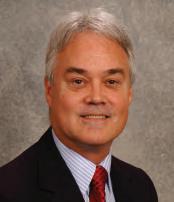
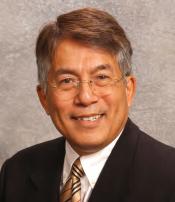
Douglas Ford, MD, graduated from the University of Oklahoma College of Medicine and completed his residency in Pediatrics at the University of Oklahoma Health Sciences Center. He chose the University of Colorado for his fellowship in Pediatric Nephrology and continued as a member of the Department of Pediatrics faculty. He was named Section Head of Pediatric Nephrology in 2015 and continued until his retirement in 2017. Following his retirement from the Department of Pediatrics, he has continued working with the Colorado Multiple Institutional Review Board.
Jens Goebel, MD, earned his medical degree at Ruprecht-Karls University Faculty of Medicine in Heidelberg, Germany. He completed his residency in Pediatrics at the University of South Alabama in Mobile, and his fellowship in pediatric nephrology at Tulane University in New Orleans. During his section leadership (2017–2019), he recruited pediatric nephrologists Margret Bock, MD, Bradley Dixon, MD, Eliza Blanchette, MD, and Gabriel Cara Fuentes, MD, PhD.

FORWARD THINKING
Danielle Soranno, MD Associate Professor, Pediatrics, Bioengineering &

Medicine
Pediatric Nephrology/The Kidney Center
Pediatric specialists Danielle Soranno, MD (Nephrologist), Katja Gist, DO (Cardiac Intensivist), and Jason Gien, MD (Neonatologist), launched the national Pediatric Kidney Injury & Disease Stewardship (PKIDS) program at Children’s Hospital Colorado in 2015. Through PKIDS, CHCO has participated in numerous international multicentered clinical research studies, and has mentored numerous resident and fellow trainees on translational research projects targeted on critical care nephrology.
Leading Research
The most common genetic kidney condition—autosomal dominant polycystic kidney disease (ADPKD)—can cause significant renal and cardiovascular issues for children. Results of a single-center study conducted by University of Colorado faculty proved pivotal in ADPKD care by demonstrating the efficacy of statin therapy. Authored by Melissa Cadnapaphornchai, Diana George, Amirali Masoumi, Kim McFann, John Strain, and Robert Schrier, “Effect of statin therapy on disease progression in pediatric ADPKD: Design and baseline characteristics of participants” was published in Contemporary Clinical Trials in 2011.
109 DEPARTMENT OF PEDIATRICS FOUR PILLARS
Pediatric Nutrition
The Department of Pediatrics Section of Pediatric Nutrition—the nation’s first independent program dedicated to the nutritional needs of infants, children, and adolescents—was established in 1993. Its creation signaled the validity of nutrition as a distinct medical subspecialty, increasing recognition of the role of micronutrients in human growth and development, greater understanding of metabolic processes, and the looming emergence of an epidemic of childhood obesity. K. Michael Hambidge, MD, ScD, an internationally regarded investigator and physician, was named Section Head.
In the quarter-century since, the Section has grown to a 21-member faculty and has contributed regionally, nationally, and globally to improved pediatric nutrition and its life-long impact. Moreover, the Section’s work invigorates all four pillars of the Department’s mission—clinical care, research, education, and advocacy. Prime examples include:
Inpatient Medical Nutrition consultation at Children’s Hospital Colorado. Nutrition board-certified pediatricians focus on medically complex patients with special nutrition and metabolic needs. Physicians and registered dietitians also collaborate to identify patients at nutritional risk earlier for more successful interventions.
The LIFEstyle Medicine Program at Children’s Hospital Colorado. The multidisciplinary pediatric weight-management clinic now sees nearly 5,000 patients annually. Family-based treatment encompasses medical, dietary, physical activity, and behavioral approaches.
The Growth and Parenting/Nutrition Clinic. The outpatient referral clinic for infants, children, and adolescents with nutrition and growth concerns is staffed by nutrition-trained medical providers and registered dietitians. Teams also work closely to ensure that nutrition is optimized during hospital stays and in multiple outpatient subspecialty clinics.
The Pediatric Clinical Obesity and Nutrition Fellowship program.
The Section offers both clinical and research fellowship opportunities for physicians. The goal is to provide physicians board-certified or board-eligible in pediatrics or family medicine in-depth training for clinical or academic medicine pursuits. Research. Investigations span the nutrition field from bench to bedside to community. Current research includes molecular and cellular models of developmental programming, “-omics”applications (including genomics, proteomics, metagenomics, phenomics, metabolomics, and transcriptomics) in basic human research studies in women and infants, child feeding and behavioral interventions, sleep health, metabolic studies in adolescents undergoing bariatric surgery, and community based pragmatic trials in obesity prevention and treatment. Advocacy. Section leaders provide testimony at legislative and programmatic sessions at state, national, and international venues, helping develop policies to promote pediatric nutritional health.
FIVE MILESTONES
1972 K. Michael Hambidge, MD, ScD, demonstrates the importance of zinc deficiency in U.S. children.
1993 University of Colorado establishes the nation’s first Section of Pediatric Nutrition under the leadership of K. Michael Hambidge.
1998 The Children’s Hospital launches the GoodLIFE Program to address child and adolescent weight management at The Children’s Hospital.
2003 Nancy Krebs, MD, MS, is lead author of the seminal policy statement “Prevention of pediatric overweight and obesity” for the American Academy of Pediatrics Committee on Nutrition.
2012 The Section of Nutrition is awarded an $11 million Bill & Melinda Gates Foundation grant to support research testing the potential benefit of improved nutrition prior to pregnancy on infant growth rates among mothers in poor, food-insecure communities.
110 DEPARTMENT OF PEDIATRICS FOUR PILLARS
SECTION HEADS
K. Michael Hambidge, MD, ScD, Emeritus Professor of Pediatrics, was the first to head the Section of Pediatric Nutrition when it was established in 1993. A graduate of Cambridge University, he earned his medical degree (MB B Chir) from Westminster Medical School in London. Following his internship at London University Hospitals, he completed residencies at London’s Hospital for Sick Children and Hammersmith Hospital. Internationally regarded for his findings and service, Hambidge led the section’s early international research and continued his work in Maternal Child nutrition research in India, Africa, and Latin America for many years after assuming his Emeritus position.

Nancy Krebs, MD, MS, has served as Section Head of Pediatric Nutrition since 1998. She earned her masters from University of Maryland College Park and her medical degree from the University of Colorado School of Medicine, where she continued for her residency and fellowship. Under Krebs’ leadership, the Section has grown to more than 20 faculty who have developed innovative programs to address the concerning rise in adolescent obesity and the multiple physiological and psychological factors contributing to the increase. Concurrently, she has led maternal/child research studies internationally, including her longstanding research focus on zinc and trace mineral nutrition.
International Impact
As a founding member of the NICHD Global Network in 2002, the Section of Nutrition has participated in numerous multicountry obstetric and pediatric intervention studies. The infrastructure provided by the Global Network enabled Section of Nutrition investigators to conduct numerous independent studies, as well, notes Section Head and current principal investigator, Nancy Krebs, MD, MS. In addition to the Global Network, the Section’s nutrition research has spanned 10 countries and five continents. Key research sites have included:

AFRICA : Democratic Republic of the Congo, Kenya, Zambia, Ethiopia
ASIA : Bangladesh, India (Belagavi and Nagpur), Pakistan

CENTRAL/NORTH AMERICA : Guatemala, Mexico
SOUTH AMERICA : Peru
111 DEPARTMENT OF PEDIATRICS FOUR PILLARS
Lead investigator Nancy Krebs at the Section’s nutritional research site in Pakistan
Pediatric Hospital Medicine
The Pediatric Hospital Medicine program was established in 2006 under the leadership of Jennifer Reese, MD. Reese served as the first interim section head from 2009 to 2011, when the Section of Pediatric Hospital Medicine was formally established. Karen Wilson, MD, MPH, was named the first section head.
The hospitalist program, which now cares for more than 12,000 inpatients each year, grew out of the outpatient pediatric emergency services Children’s provided at partnering metro-Denver hospitals. Steven Poole, MD, section head of Community Pediatrics, was known for finding innovative solutions to problematic situations. When family physicians on staff at Lutheran Medical Center asked if his team could see hospitalized children and well newborns in addition to emergency patients, he agreed, establishing Children’s first community hospital site. When Parker Adventist Hospital opened in 2004, Children’s Hospital was chosen to provide all emergency and inpatient care. This established Children’s first facility hospitalist program and started Children’s Network of Care, an integrated system encompassing some 20 sites along the Front Range and ensuring high-quality pediatric coverage. With the 2007 opening of the new Children’s Hospital Colorado on the University of Colorado Anschutz Medical Campus—formerly the Fitzsimons Medical Campus, the number of staff hospitalists increased significantly. Today, Section Head Jennifer Reese, MD, directs a team of more than 85 providers. David Scudamore, MD, serves as director of clinical operations, guiding complex day-to-day operations.
The care and quality benefits of this full-time presence are powerful, Reese confirms. “As hospitalists, we’re here every hour, every day, caring for all the patients who are not on the specialty services.
“We also provide expert care coordination across the continuum, help families navigate their child’s needs, and make a robust contribution to research, quality improvement, and education, locally and nationally. We interface with pediatric, family practice, and psychiatry residents, and we educate advanced practice professionals, medical, nursing, and physician assistant students. This is high-touch, high-impact care.”
In 2018, planning was well underway for creation of a two-year, Pediatric Hospital Medicine Fellowship program targeted for accreditation by the Accreditation Council for Graduate Medical Education in 2020.

“As hospitalists, we’re here every hour, every day, caring for all the patients who are not on the specialty services.”
112 DEPARTMENT OF PEDIATRICS FOUR PILLARS
–Jennifer Reese, MD, Section Head
HOSPITALISTS: A RECENT HISTORY
In 1996, the New England Journal of Medicine first used the term “hospitalists” to designate doctors who specialized in caring for inpatient populations. Several factors contributed to the need for physicians dedicated to 24/7 patient coverage, including the complexity of care, quality, rapid advances in medical technology, intensifying demands on primary care physicians, and reimbursement shifts. When the Accreditation Council for Graduate Medical Education instituted changes in residency requirements in 2003, around-the-clock coverage traditionally provided by internal medicine residents was no longer an option. Pediatric Hospital Medicine became the most recent pediatric subspecialty when it was recognized by the American Board of Pediatrics in 2016. At this writing, an estimated 4,000 pediatric hospitalists are practicing in the United States.
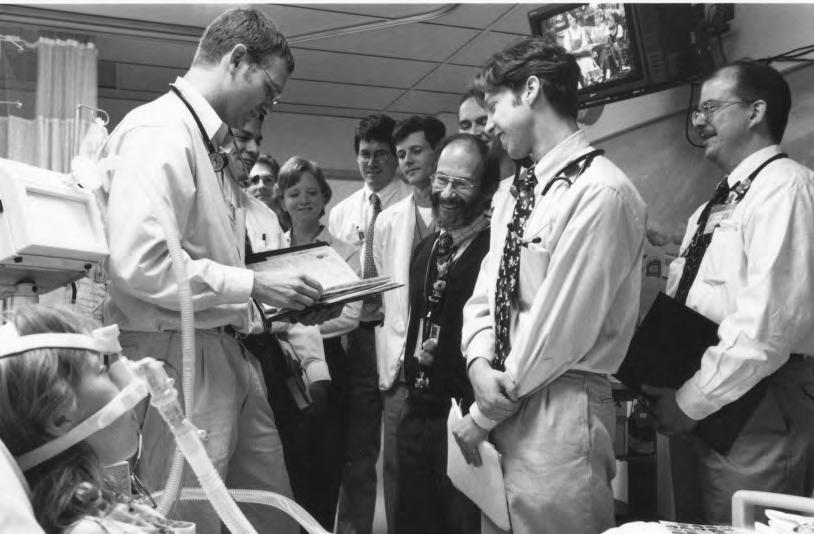
SECTION HEADS
Karen Wilson, MD, MPH, earned her master’s degree in Public Health and medical degree from the University of Rochester. She completed her Pediatric residency and fellowship in Academic General Pediatrics at the University of Rochester before joining the University of Colorado School of Medicine faculty. From 2011–2016, she served as the first Section head of Pediatric Hospital Medicine at Children’s Hospital Colorado. She is now chief of the division of General Pediatrics and vice chair for Clinical and Translational Research at Mt. Sinai’s Icahn School of Medicine and Kravis Children’s Hospital.
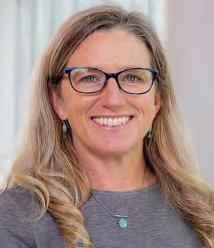
Jennifer Reese, MD, is a graduate of the University of Washington School of Medicine. She completed her internship and residency in Pediatrics with the University of Colorado program. Reese joined Children’s Hospital Colorado Network of Care team in 2000, providing care at partner hospitals. She was named director of Inpatient Medicine at Children’s Colorado in 2006 with the directive to develop a hospitalist program. She served as interim section head of Pediatric Hospital Medicine from 2009–2011 and 2016–2018, when she was named section head. Reese is also the Department of Pediatrics associate vice chair for Faculty Well-being and medical director for Provider Well-being for Children’s Hospital Colorado Medical Staff.
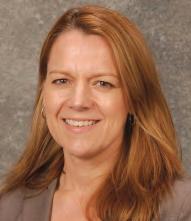
113 DEPARTMENT OF PEDIATRICS FOUR PILLARS
Pediatric Pulmonary and Sleep Medicine
When Ernest Cotton, MD, founded the Pediatric Pulmonary program at the University of Colorado School of Medicine in the early 1960s, it was one of only five in the nation. Cotton, a faculty member since 1958, had been encouraged by Department of Pediatrics Chair C. Henry Kempe, MD, to subspecialize. Following that advice, Cotton studied Pulmonary Physiology with pioneers William Tooley, MD, and John Clements, MD, as a U.S. Public Health Services Special Fellow at the University of California, San Francisco.
Cotton’s innovative approach to pediatric pulmonary research, education, care, and advocacy was the catalyst for today’s Section of Pulmonary and Sleep Medicine, the region’s largest with 150-plus breathing experts and a ranking among the nation’s top five.
Section faculty currently direct six multidisciplinary efforts at Children’s Hospital Colorado:
Aerodigestive Program, for diagnosing and treating complex airway, breathing, and digestive tract disorders.
Asthma Program, addressing concerns in both home and school settings, with a focus on technological and environmental innovations.
Cystic Fibrosis (CF), through the Mike McMorris Cystic Fibrosis Research and Care Center at Children’s Hospital Colorado, one of the premiere CF clinical care and research centers in the United States.
Children’s Interstitial Lung Disease (chILD) Program, a leading international referral center for children with these rare lung disorders.
Sleep Program, for the diagnosis and treatment of infants, children, and adolescents with sleep issues—problems experienced by 20% of the pediatric population. Ventilator Care Program, a standardized approach to discharging patients on ventilators that has resulted in significantly lower lengths-of-stay, costs, and survival outcomes.
CURRENT LEADERSHIP
Robin Deterding, MD
Section Head, Pediatric Pulmonary Medicine
Director, Breathing Institute at Children’s Hospital Colorado
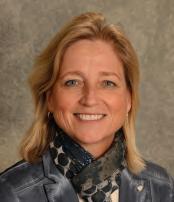
Medical Director, Children’s Colorado Innovation Center
Chair, Children’s Interstitial Lung Disease Research Network
Robin Deterding, MD, received her medical degree and completed her residencies in Pediatric and Internal Medicine at Southern Illinois University before coming to the University of Colorado for her Pediatric Pulmonary fellowship. She is recognized as an international expert in the care of children with lung disease and an innovative visionary leader in clinical care delivery, rare disease research, and advocacy and medical education. She was a cofounder of the children’s Interstitial and Diffuse Lung Disease (chILD) National Research Network and the chILD Foundation.
Her clinical research interest has been defining personalized medicine through clinical phenotypes, biomarkers, and new innovative technologies, resulting in cofounding three startup companies. A sought-after invited speaker for pulmonary medicine, leadership, and innovation, she has authored over 100 publications, secured grant funding, and created innovative educational materials. She has had the privilege of serving on the CU Medicine Board of Directors, leading national and international organizations, and has been honored by her peers as one of Denver’s Top Docs (5280 Magazine) and one of the Best Doctors in America.
114 DEPARTMENT OF PEDIATRICS FOUR PILLARS
Breathing Breakthroughs Asthma
Stanley Szefler, MD, director of the Pediatric Asthma Research Program at Children’s Hospital Colorado, saw a need in 2005 for a community program addressing the needs of disadvantaged school children with uncontrolled asthma. Working in partnership with the Colorado Department of Public Health and Environment (CDPHE), he launched the Colorado Comprehensive School-Centered Asthma Program (AsthmaCOMP). Szefler and Breathing Institute specialist Andrew Liu, MD, and their colleagues have conducted seminal international research into environmentally related asthma exacerbations.
In 2007, Gwendolyn Kerby, MD, and Monica Federico, MD, collaborated with primary care providers and community partners to establish the asthma outpatient program at The Children’s Hospital, expanding clinical care to encompass home visits and school services. Szefler and Federico also worked with the CDPHE to develop the Colorado State Guidelines for Asthma Care in Colorado.
Cystic Fibrosis
When Frank Accurso, MD, became director of The Children’s Hospital Cystic Fibrosis (CF) Center in 1987, the life expectancy for children with CF was 18. Many individuals with CF now can expect to live into their mid-40s and beyond. Key among the international advances leading to this gain is Accurso’s 1980s championing of the newborn heel-stick blood spot screening as a CF screening tool for early intervention, Accurso lobbied the Colorado legislature in 1982 to fund a state-wide blood-spot screening program for newborns. The cost was $1 per test. Legislation passed, and Colorado became the first state in the nation to adopt the screening for all newborns. In the early 2000s, Accurso and colleagues led the clinical trial for Kalydeco, a new treatment improving lung function for the 4 percent of CF patients with a genetic mutation. The drug was approved for use in January 2012. Scott Sagel, MD, PhD, succeeded Accurso.
Inhaled Nitric Oxide
In 1991, a multidisciplinary clinical research team at The Children’s Hospital was the first to demonstrate that the newborn lung must produce large amounts of nitric oxide (NO) at birth to increase blood flow to the lung, and that failure to release NO at birth was a major cause of persistent pulmonary hypertension (PPHN). Pulmonologist Steven Abman, MD, cardiologist D. Dunbar Ivy, MD, and neonatologist John Kinsella, MD, found that blending low doses of NO with oxygen into a ventilator could increase blood flow to a newborn’s lungs without extracorporeal membrane oxygenation (ECMO). The discovery garnered a significant National Institutes of Health grant. In 1999, inhaled NO was approved by the Food and Drug Administration for use in term and near-term infants with PPHN.
SIDS Prevention
Stomach sleeping is an identified factor contributing to Sudden Infant Death Syndrome (SIDS), the unexpected death of a healthy child below the age of one year. Since 1992, when the American Academy of Pediatrics (AAP) launched the Back to Sleep Campaign advising that all healthy infants under 12 months of age be placed on their backs to sleep, the incidence of SIDS has been reduced by more than 50%. Ann Halbower, MD, Pediatric Sleep Fellowship Director for the Department of Pediatrics Section of Pulmonology, advocated for families before the Colorado Legislature to make the back-sleeping protocol part of regulations for infant day-care providers throughout the state.
Children’s Interstitial and Diffuse Lung Disease (chILD)
Leland Fan, MD, initiated the chILD program in the early 1990s and mentored Robin Deterding, MD, who succeeded him. Deterding and Fan originally reported and defined the disease Neuroendocrine Cell Hyperplasia and Infancy (NEHI), now recognized internationally. In 2004, Deterding used the NIH conference grant she had received to cofound the now-global chILD Research Network and chILD Foundation. The University of Colorado chILD program is an international referral center.
115 DEPARTMENT OF PEDIATRICS FOUR PILLARS
Rheumatology
While Pediatric Rheumatology was not designated as a distinct subspecialty until the early 1990s, Department of Pediatrics faculty were caring for children, teens, and young adults with autoimmune issues a half-century earlier. Significant attention was paid to rheumatic fever and its complications, and with good reason: During the early to mid-1940s—and prior to the availability of penicillin to treat streptococcal infections—Colorado had one of the highest counts in the nation of school children diagnosed with rheumatic fever.
National Jewish Hospital soon became a key site for the region’s advanced rheumatology treatment and research. A formal partnership with the University of Colorado School of Medicine also made it the primary setting for pediatric specialty training in rheumatology, allergy, and immunology. This relationship continued until the School of Medicine’s relocation to the new Fitzsimons (now Anschutz) Medical Campus. At that time, the decision was made to fully integrate rheumatology-related clinical care, research, education, and advocacy in the new environment.
Rheumatic Fever Diagnostic Service
“The high prevalence of rheumatic fever in the Rocky Mountain areas from the 1940s to the 1960s has been well documented. In 1945, a Rheumatic Fever Diagnostic Service was established at the University of Colorado School of Medicine at Denver, to which any child in the area who was thought to have rheumatic fever could be referred for examination. During the first 3 years of the operation of this service, 2,639 children were referred from the greater metropolitan area of Denver.”
– Rheumatic Fever in School Children of Denver, Colorado
Bernice G. Wedum, MD, University of Colorado (1981)
Today’s Section of Rheumatology focus spans the comprehensive care of children, teens, and young adults with a variety of common and rare inflammatory disorders affecting children, including juvenile idiopathic arthritis, systemic lupus erythematosus, vasculitis, scleroderma, juvenile dermatomyositis, and other immune dysregulation syndromes. Children’s Hospital Colorado is home to the only team of pediatric rheumatologists in the surrounding seven-state region, and receives patients referred by their physicians, health departments, inpatients providers, and by parents, themselves. More than 5,000 patients are seen annually by the inpatient and outpatient rheumatology providers at the main hospital on the Anschutz medical campus, and at outreach sites including the Colorado Springs, North (Broomfield), and South (Highlands Ranch) campuses.
Over the past 30 years, Pediatric Rheumatology specialists such as Roger Hollister, MD—first Section Head of Pediatric Rheumatology—have overseen implementation of remarkable improvements in both diagnostics and treatments ushered in by advances in immunology and genetic research, while acknowledging the still-challenging, multisystem aspects of these conditions. Given the multispecialty nature of rheumatology care, Department of Pediatrics residents benefit from a close integration of activities between Children’s Hospital Colorado, the University of Colorado Hospital and the adult and pediatric academic research and training programs based in the University of Colorado School of Medicine.
Key developments in the past five years have included implementation of a Pediatric Rheumatology Fellowship program to help meet the growing need for providers nationally, and more specifically in the Mountain West, and the creation of specialty programs focused on unique patient groups. Megan Curran, MD, was recruited from Lurie Children’s Hospital in Chicago in 2018 to serve as program director and continues in this role.
116 DEPARTMENT OF PEDIATRICS FOUR PILLARS
AT THE FOREFRONT
Roger Hollister, MD, graduated from Case Western University School of Medicine. He completed his fellowship in Pediatric Rheumatology at the Providence Sacred Heart Medical Center/ University of Washington School of Medicine Program. Hollister joined the University of Colorado School of Medicine in 1974, practicing primarily and conducting research at the National Jewish Hospital program site. He was named Section Head when the University concentrated the comprehensive Pediatric Rheumatology program at Children’s Hospital Colorado. He retired in 2015.
Robert Fuhlbrigge, MD, PhD, earned his MD and PhD in Immunology at Washington University in St. Louis and completed both his internship and residency in Pediatrics at St. Louis Children’s Hospital. His completed a clinical fellowship in Pediatric Rheumatology at Northwick Park Hospital in London, UK, and a research fellowship at Boston Children’s Hospital. Fuhlbrigge was recruited as Section Head of Pediatric Rheumatology at the University of Colorado School of Medicine in 2016. He is a founding member of the Childhood Arthritis and Rheumatology Research Alliance (CARRA), which is dedicated to improving the outcomes of children with rheumatic disorders.
NAMES OF NOTE
Decades before Pediatric Rheumatology was recognized as a subspecialty, physicians and medical researchers in the Rocky Mountain region were collaborating to provide higher levels of care for children with related autoimmune disorders. Among key Department of Pediatrics contributors were:
Terri Finkel, MD, PhD, completed her residency at the University of Colorado Health Sciences Center with specialty training in Pediatric Rheumatology at National Jewish Hospital. She is now Chair of Pediatrics and Chief Scientific Officer at Nemours Children’s Hospital.
Erwin Gelfand, MD, is professor emeritus of Pediatrics and Immunology at the University of Colorado School of Medicine. He chaired the Department of Pediatrics at National Jewish Health until his retirement in 2016.


Anthony Hayward, MD, PhD, entered the field of primary immunodeficiency disorders in the 1970s. A professor in the departments of Pediatrics, Microbiology, and Immunology at the University of Colorado School of Medicine, he served as associate director of the Pediatric Clinical Research Center.
Donough O’Brien, MD, FCRP, joined the Department of Pediatrics in 1957 at the request of Chair C. Henry Kempe, MD. An avid researcher and devoted clinician, he cared for children with lupus and juvenile arthritis at Colorado General Hospital, The Children’s Hospital, and National Jewish Hospital.
–Sir Thomas Barlow, The Diseases of Children, J. & A. Churchill, London, 1913
“The fundamental difficulty in discussing rheumatism consists in defining what we mean by it.”
117 DEPARTMENT OF PEDIATRICS FOUR PILLARS
The Sie Center
The Anna and John J. Sie Center for Down Syndrome at Children’s Hospital Colorado was established in 2010 in parallel with the Linda Crnic Institute for Down Syndrome at the University of Colorado School of Medicine. By integrating expert medical care and attention, advanced therapy, educational specialists, translational research, and family advocacy, it advances the total care of children born with trisomy 21 and related genetic disorders. For a growing number of children, Sie Center services begin prenatally and continue to age 25. Care is coordinated with each child’s primary care provider as well as other Children’s Colorado clinics to ensure continuity. By yearend 2018, more than 2,236 children from the Rocky Mountain region had benefited from the comprehensive program.
Linda Crnic, PhD
The Linda Crnic Institute for Down Syndrome is one of the only academic centers in the United States devoted fully to Down syndrome research. Advanced, transformational research programs are used to investigate the biology and disease aspects specific to people with Down syndrome. The Institute’s work spans the full translational spectrum—from basic science and clinical research through clinical trials and care applications—with the goal of improving health outcomes and developing new tools for diagnostics and therapeutics.
The Institute is named in tribute to the late Linda Crnic, PhD, who was the director of what is now the School of Medicine’s Intellectual and Developmental Disability Research Center. She guided the creation of the Developmental Psychobiology Research Group and was a senior fellow adjoint at the Eleanor Roosevelt Institute at the University of Denver.

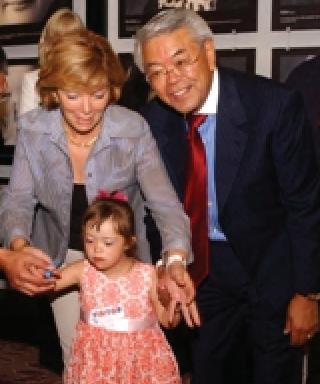
Past Department of Pediatrics Chair M. Douglas Jones, Jr., MD, eulogized Crnic upon her untimely death: “As a PhD, she founded and built the residents’ academic track for many years, while building an international reputation for her research in Down syndrome. She was also active with Down syndrome families, working locally and traveling with them to Washington, D.C., to make the case for better support for care and research.”

118 DEPARTMENT OF PEDIATRICS FOUR PILLARS
Benefactors Anna and John J. Sie with their granddaughter at the Sie Center opening
Clinical Innovation
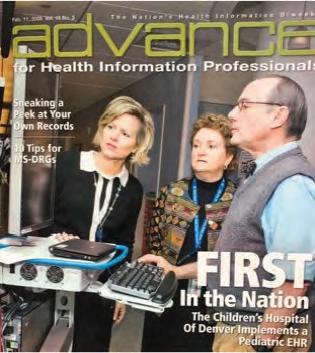
Advances pioneered by the Department of Pediatrics and Children’s Hospital Colorado to address clinical issues now benefit young patients globally. Three of many examples are highlighted here.
TARGET ZERO: ELIMINATING POSSIBLE HARM
In 1988, Bart Schmitt, MD, and Steven Poole, MD, launched the nation’s first pediatric after-hours telephone triage and advice program. The physicians developed more than 300 in-depth protocols that experienced pediatric nurses could use in responding to parents’ concerns. Today’s ParentSmart Healthline™ receives more than 30,000 calls annually from families in the Rocky Mountain region.

In 2015, Children’s Hospital Colorado was awarded the American Hospital Association–McKesson Quest for Quality Prize for its Target Zero initiative. In two years, this program to eliminate preventable harm contributed to a 50% reduction in serious safety events and a 30% reduction in hospital-acquired conditions. In accepting the $75,000 prize, Daniel Hyman, MD, MMM, the hospital’s chief quality and patient safety officer, credited staff commitment and family collaboration, noting that parents are actively involved in more than 30 different safety project teams and hospital committees. “We make sure we have the voice of the family in all our decision making, whether it’s about an individual child or a strategic program.”

ELECTRONIC HEALTH RECORD
In 2007, the nation’s first comprehensive outpatient and inpatient pediatric electronic health record (EHR) was implemented at the new Children’s Hospital on the Fitzsimons Medical Campus. The digital advance was guided by Section Head of Adolescent Medicine and Chief Medical Information Officer David Kaplan, MD, MPH. The initial capability has since evolved to include community pediatric practices called PedsConnect™. This fully integrated pediatric EHR and management system improves care quality and continuity by enabling pediatricians and other health care providers to access and share clinical patient data at the point of care.
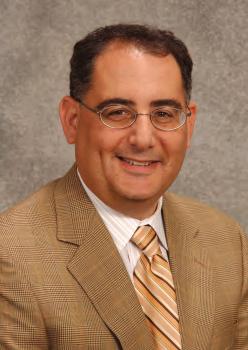
119 DEPARTMENT OF PEDIATRICS FOUR PILLARS
Daniel Hyman, MD, MMM
Measuring Growth
Multiple metrics reflect the growth of the Department of Pediatrics in recent years. Here are four key measures. Based on Department Fiscal Year July to June.
CHCO PRIMARY MARKET SHARE
Children’s Hospital Colorado is now the provider of choice for two of every three pediatric inpatients in the State of Colorado.
CLINICAL PATIENT INCOME (CPI)
From 2004–2018, CPI increased more than four-fold.
DEPARTMENT OF PEDIATRICS ENDOWED CHAIRS
From 2004–2018, the Department’s Endowed Chairs increased from six to 32.
RESEARCH AWARD EXPENDITURES
2004 Excluding neonates 0% 10% 20% 30% 40% 50% 60% 70% 2005 2006 2007 2008 2009 2010 2011 2012 2013 2014 2015 2016 2017 2018 2004 0 5 10 15 20 25 30 2005 2006 2007 2008 2009 2010 2011 2012 2013 2014 2015 2016 2017 2018 2004 IN MILLIONS $0 $10 $20 $30 $40 $50 $60 $70 2005 2006 2007 2008 2009 2010 2011 2012 2013 2014 2015 2016 2017 2018 $80 $90 $100 $110 2004 IN MILLIONS ENDOWED CHAIRS $0 $10 $20 $30 $40 $50 $60 $70 2005 2006 2007 2008 2009 2010 2011 2012 2013 2014 2015 2016 2017 2018 68% 43% $63.3 million $9.4 million 6 32 $113.9 $22.7 $69.8 $36.6
120 DEPARTMENT OF PEDIATRICS FOUR PILLARS
ADVOCACY THE FOUR PILLARS
“Given the broad range of issues that need attention and the barriers to change, an effective child advocate must have patience, persistence and passion.”
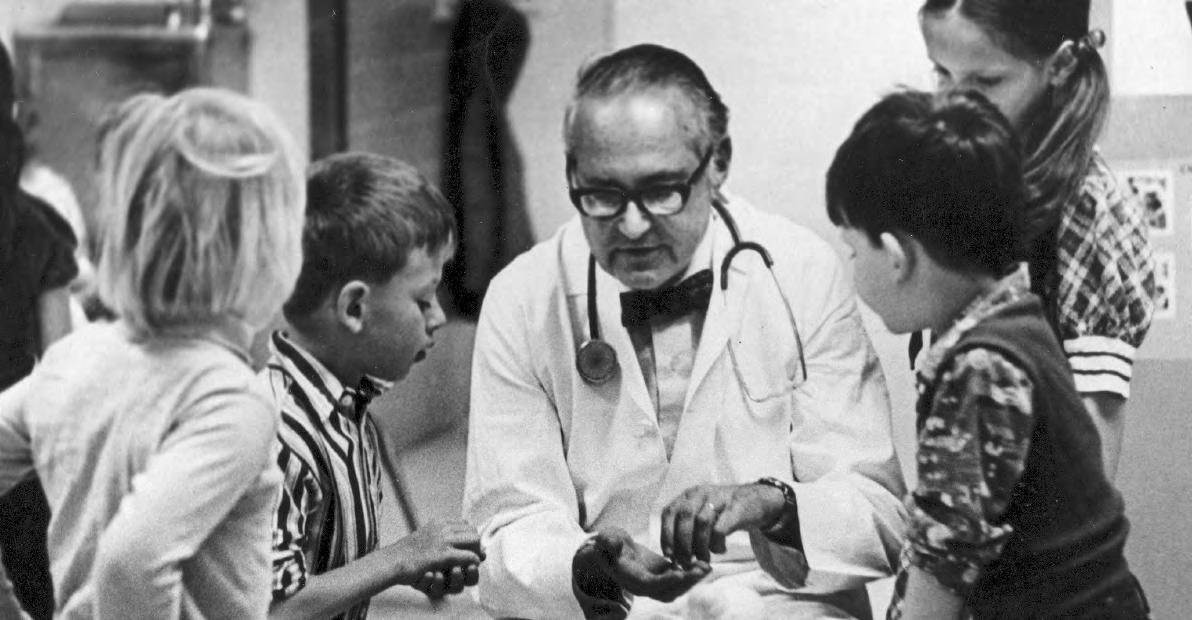
121 DEPARTMENT OF PEDIATRICS FOUR PILLARS
–Stephen Berman, MD
American Academy of Pediatrics Leadership
THE COLORADO CONNECTION
Since its founding in 1930, The American Academy of Pediatrics (AAP) has been guided by 88 nationally prominent pediatricians. Colorado has been home to five of these AAP presidents, more than any other state. Their service reflects the commitment to child advocacy— regionally, nationally, and internationally—for which the University of Colorado School of Medicine Department of Pediatrics is recognized. The Department salutes the contributions of these dedicated advocates.
AAP MISSION
The mission of the American Academy of Pediatrics is to attain optimal physical, mental, and social health and well-being for all infants, children, adolescents and young adults. To accomplish this, AAP shall support the professional needs of its members.

Franklin Gengenbach, MD
1943–1944 (President)
Considered Colorado’s first doctor to practice pediatric medicine exclusively, Franklin Gengenbach, MD, joined the University of Colorado Clinical Faculty in 1911 and became the Department’s first professor and part-time chair when it was established as a new department in 1930. He served in that role for 16 years and retired as Emeritus Professor of Pediatrics from the University. Gengenbach served on the first Board of Directors of the American Board of Pediatrics (ABP) and was an examiner for the ABP. He was also Chief of Service at Colorado General Hospital, a consultant at National Jewish and Denver General Hospitals and on the Advisory Board at The Children’s Hospital. Gengenbach died in 1955.
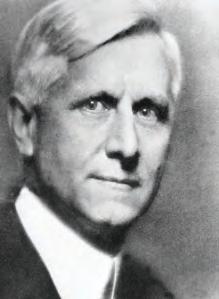
“It has been a great honor representing the Academy and its 55,000 members this past year. Traveling through the country, indeed the world, I have been continuously impressed by the manner in which pediatricians go about the business of caring for children and the enthusiasm for their jobs despite long, often inconvenient hours, the poor reimbursement for pediatric services, the crowded office schedules, and the occasional lack of respect for our efforts by other specialties and the general public.”
–Donald Cook, MD, FAAP | AAP News, 2000
122 DEPARTMENT OF PEDIATRICS FOUR PILLARS
James Strain, MD, FAAP
1982–1983 (President)
1986–1993 (Executive Director)
A private practice physician, James Strain, MD, is the only pediatrician to have served the Academy as both President and Executive Director. As President, he was a strong advocate for legislation to help children with physical and social challenges and became internationally recognized during the “Baby Doe” cases. As Executive Director, he worked diligently for the Early and Periodic Screening, Diagnosis and Treatment program. His leadership also included service as an ABP oral examiner, as chair of the National Advisory Committee on Childhood Vaccines, and as a senior member of the Institute of Medicine. Prestigious tributes accorded him include the James E. Strain Award at Children’s Hospital Colorado and the James E. Strain Community Service Award at the Colorado Chapter of the AAP.
Donald Schiff, MD, FAAP
1988–1989 (President)
Donald Schiff, MD, served as President of the Colorado Chapter of the American Academy of Pediatrics before being elected AAP president for1988–1989. A veteran of the U.S. Navy and U.S. Public Health Service, he was a resident and Chief Resident at the University of Colorado School of Medicine prior to entering private practice with the Littleton Clinic. Schiff served as Chief of Pediatrics at both Porter and Swedish Hospitals during his 30 years as a community pediatrician. He joined the SOM Department of Pediatrics in 1987, was Director of the Child Health Clinic at The Children’s Hospital from 1986-1991, and is currently a Professor of Pediatrics Emeritus at the University of Colorado. As president of the AAP, Schiff made securing health insurance for all of our nation’s children part of the Academy’s mission. For this and more, he was awarded the AAP’s Grulee Award for outstanding service. The AAP Senior Section Child Advocacy Award has been established in his honor.

“I was president-elect of the AAP in 1981 and president in 1982. Three years later, the executive board of the Academy called and asked if I would serve as executive director. I wasn’t through practicing and really hated to leave. But my rationale was I could do more good for more children there than I could on a one-to-one basis.”

123 DEPARTMENT OF PEDIATRICS FOUR PILLARS
–James Strain, MD | Interview, 2016
American Academy of Pediatrics Leadership, continued
Donald Cook, MD, FAAP
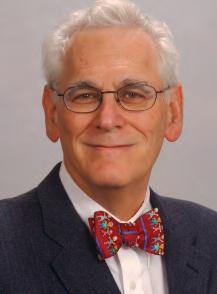
1999–2000 (President)
A U.S. Navy veteran, Donald Cook, MD, earned his medical degree and served both his Pediatric residency and Chief Resident at the University of Colorado School of Medicine and The Children’s Hospital. He completed a general residency in California before joining a private practice in metro Denver in 1959. Relocating to Greeley in 1964 to launch a new practice, Cook became a driving force for improved pediatric health in northern Colorado, helping establish the Monfort Children’s Clinic for low-income and uninsured children. In addition to serving as a clinical professor with the Department of Pediatrics, he was active in the Colorado Chapter of the AAP, served on multiple community boards and chaired the American Medical Association Medical Education Committee on School and College Health. As AAP president, he advocated for universal health care for children, immunization access and violence prevention. Cook died in 2012.
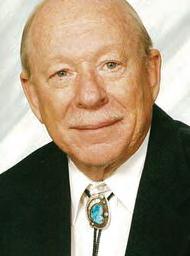 Stephen Berman, MD, FAAP
Stephen Berman, MD, FAAP
2001–2002 (President)
Stephen Berman, MD, is a Professor of Pediatrics in the University of Colorado School of Medicine and of Epidemiology for the Colorado School of Public Health. He currently serves as Director of The Center for Global Health and holds the Children’s Hospital Colorado Chair in General Pediatrics. His connection with Children’s and the Department is strong, reaching back to the mid-1970s when he served as resident and Chief Resident. A passionate advocate for children, Berman helped draft multiple health bills enacted by the Colorado State Legislature to improve access to care and insurance coverage. He carried this focus into his AAP presidency. Berman has served a special advisor to the World Health Organization, Pan American Health Association, and the U.S. Agency for International Development. He continues to be an active clinical and outcomes researcher, as well as an advocacy author.
“My AAP presidency has been a steady climb toward a summit where every child in America has high-quality health insurance, public and private payers appropriately value our pediatric services and new measures that enhance the quality of care are implemented.”
–Stephen Berman, MD, FAAP | AAP News, 2001
124 DEPARTMENT OF PEDIATRICS FOUR PILLARS
Advocating for Children’s Health Care & Coverage: Milestones
For well over three decades, the University of Colorado School of Medicine Department of Pediatrics has played a pivotal role in improving children’s health care access and coverage. Programs created, legislative action guided, and alliances formed by the Department have built a firm foundation for continued action.
KEY EVENTS AND CONTRIBUTIONS
1987 The Department organizes a Medicaid conference with national experts and area physicians to explore Colorado’s compliance with Medicaid rules regarding prenatal health services.
1989 Stephen Berman, MD, is named director of the Colorado Medically Indigent Program and Health Policy, now the Colorado Indigent Care Program. As director, he created the Colorado State Child Health Plan and implemented Federal Disproportionate Share in Colorado.
1997 Colorado de-emphasizes managed care to keep costs low, consistent with TABOR (Taxpayers Bill of Rights), and moves to “unassigned fee for service” (UFFS) payment.
1997 A bipartisan Congressional action leads to the passage of the State Children’s Insurance Program (SCHIP, also CHIP). This partnership between the federal government and individual states provides coverage for children and pregnant women in low-income families whose earnings exceed Medicaid qualification limits.
“If you want to be an advocate to change state policy, there’s a special prayer: ‘Lord, grant me patience, and I want it now.’ You have to be persistent, patient, and prepared to work with all groups—politicians, lobbyists, stakeholders—and do so in a non-partisan way. You have to be willing to accept incremental victories.”
–~James Todd, MD, Vice Chair, Advocacy
1998 Colorado is one of the first states to engage with the CHIP program, electing to create its own distinct program CHP+. Establishing a separate program allows the state to leverage previous actions to create a child health insurance program.
2003 James Todd, MD, is appointed the Jules Amer Chair in Community Pediatrics and creates the State of the Health of Colorado’s Children program. The program’s goal is to analyze and use Colorado data to advocate for state support of vaccinepreventable disease, health care disparity, and firearm-injury prevention initiatives.
2005 Berman, Todd, and Carl Armon, MSPH, author “Impact of a Decline in Colorado Medicaid Managed Care Enrollment on Access and Quality of Preventive Primary Care Services” (Pediatrics, December 2005). The study shows the deterioration between 2001–2003 in primary care measures under UFFS policies and documents low and unreliable reimbursement by the existing Colorado payment system.
2006 Department faculty publish a second study (Pediatrics, August 2006) showing wide disparity in hospitalization outcomes of publicly insured Colorado children compared to those with commercial insurance.
2006 Colorado Children’s Healthcare Access Program (CCHAP) is created by Steven Poole, MD, with the goal of encouraging and enabling all Colorado pediatric practices in Colorado to care for Medicaid and SCHIP children, and to advocate for Medicaid payment reform. CCHAP was funded by the Piton Foundation, Community Child Health Foundation, and five other Colorado foundations. CCHAP is still advising and assisting Colorado pediatric and family practices today to ensure care for children on Medicaid.
2006–2007 Todd, with strong support from the Colorado Chapter of the AAP, drafts SB-130 (Medical Home) and SB-211 (Outcomes Measurement) Bills to provide the statutory infrastructure for medical homes for all Colorado children. Both bills are signed into law.
Todd recaps, “Subsequently, Medical Home standards were adopted by the Colorado Department of Health Care Policy and Financing (HCPF) and the Colorado Department of Public Health and Environment. CCHAP has been successful in enrolling all pediatric practices in the care of Medicaid and SCHIP children. The strong, ongoing interaction between pediatricians and HCPF continues today.”
2010-2018
125 DEPARTMENT OF PEDIATRICS FOUR PILLARS
The Kempe Center
In 1962, Department of Pediatrics Chair C. Henry Kempe, MD, psychiatrist Brandt Steele, MD, and associates published the seminal paper The Battered Child Syndrome, the first work giving doctors an avenue for identifying and understanding child abuse. Ten years later, The Kempe Center—originally established as the National Center for the Prevention and Treatment of Child Abuse and Neglect—opened. Founded by Dr. Kempe, his wife Ruth Kempe, MD, and their colleagues, the Center immediately became the national and international place to learn how to recognize, treat, and ultimately prevent child mistreatment as a medical and social concern. The Center also became a pioneer in protective legislation and the home for the International Society for the Prevention and Treatment of Child Abuse and Neglect and an international journal.
More than four decades later, it continues to advance awareness globally while providing direct services regionally through its:
Child Abuse Response and Evaluation (CARE) Network that connects health care and behavioral health providers statewide to expert training in child assessment. Child Protection Team that offers comprehensive, multidisciplinary consultation, assessment, treatment, and referral services for children and adolescents seen at Children’s Hospital Colorado.
Child Welfare Training System, an advanced adult learning system for child welfare workers, other professionals, foster parents, and mandatory reporters. Fostering Healthy Futures®, a positive youth development program that uses mentoring and skills training to empower youth.
SafeCare® Colorado partnership with the Colorado Department of Human Services that helps families of children under age five gain skills essential to their safety and well-being.
Trauma-Responsive Implementation and Practice Program that integrates and implements trauma-responsive and culturally appropriate practices for parents, educators, and professionals.
LEADERSHIP
Donald Bross, PhD, JD, joined the School of Medicine and Kempe Center faculty in 1976 at the request of Department Chair and Center founder C. Henry Kempe, MD. In addition to serving as a professor, he led discussions resulting in the 1977 incorporation of the National Association of Counsel for Children (NACC) and served as its first president. Bross was a member of the Kempe Center’s Child Protection Team, representing children in court for a decade. He continued to conduct social science and legal research related to child protection, childhood bioethics, and pediatric policy and law after his retirement.

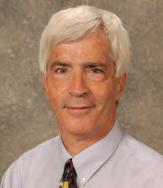
Desmond Runyan, MD, DPH, Executive Director, earned his medical degree at the University of Minnesota School of Medicine. He completed his Pediatrics residency at the University of Minnesota Medical Center and his fellowship at University of North Carolina Hospitals as a Robert Wood Johnson Clinical Scholar before earning his doctorate in Public Health at the University of North Carolina at Chapel Hill. In 2011, Runyan succeeded Robert Clyman, MD, as executive director of The Kempe Center, and was named the Jack and Vicki Thompson Chair in Child Maltreatment and Family Health.
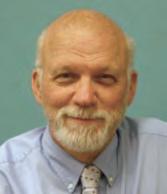
126 DEPARTMENT OF PEDIATRICS FOUR PILLARS
C. Henry Kempe, MD
Washington Take-Away: “We have to think bigger.”
In 2009, pediatrician Shale Wong, MD, MPH, was chosen for a fellowship in Washington, DC, which led to her serving as health policy advisor to First Lady Michelle Obama’s signature Let’s Move child obesity initiative. The opportunity clearly aligned with Wong’s role as an associate professor of Pediatrics and Family Medicine at the University of Colorado School of Medicine, and her career-long focus on integrated care and health equity.
It also reflected the Department of Pediatrics’ commitment to child and family advocacy. “The Department both encouraged the exploration and welcomed me back, knowing I was different,” Wong confirms.

“It was important to me to work on an initiative purely about kids. This was a chance to take my experience in academics and personal care and to connect with both government and the world of philanthropy, for that is where advocacy flourishes. My inspiration for getting involved was not to abandon patient and family, but to understand the upstream effect of decisions and the public policy that creates structure and systems of care.
So I really came back wanting everyone to think bigger about the potential impact and the absolute necessity for pediatricians and health professionals to influence broader public policy.”
Citing the ground-breaking research University of Colorado investigators have conducted in childhood obesity and the beneficial programs resulting, Wong emphasizes the “two-way benefit” of her fellowship: “I was able to take from Colorado what was proven to work, and to bring back a national vision for further implementing those activities in our community. It’s changed both what I teach and how I teach. It’s given me insight into ‘the bubble’ in Washington, DC, and to how policy makers approach data—which is very different from the way we in medicine approach data. I am eager to teach others how to translate their data into messaging that is actionable in policy, and to engage colleagues, residents and students in what they’re really passionate about.
“We have to bring the data. But we also have to share the intimate stories it holds.”
Dr. Shale Wong, executive director, Eugene S. Farley, Jr. Health Policy Center and vice chair for Policy & Advocacy, Department of Pediatrics with her daughters in the President’s suite at The Kennedy Center, 2010
Photo courtesy of Shale Wong
127 DEPARTMENT OF PEDIATRICS FOUR PILLARS
The work of The Eugene S. Farley, Jr. Health Policy Center is to develop and translate evidence to advance equitable, integrated policies that improve health and well-being for all.
Colorado, Cannabis and Children’s Health: Investigating The Impact
In November 2012, Colorado voters approved Amendment 64 to the state’s constitution, legalizing the recreational use of cannabis (marijuana) and marking an electoral first for the nation. The amendment was enacted as Article 18, section 16, in December 2012 through an executive order signed by Gov. John Hickenlooper. While the language of the new law specifically restricted cannabis use to adults 21 and over, the substance had a direct if unintended impact on the pediatric population. Emergency teams at Children’s Hospital Colorado and the Rocky Mountain Poison & Drug Center noted an increase in cannabis exposures and ingestions in young children. Neonatology saw the effect on newborns, and Child Health Clinic staff knew breastfeeding mothers using the drug were potentially placing their infants at risk. With so much unknown, physician investigators at Children’s Colorado moved to fill the informational void for an international audience.
Sam Wang, MD, a specialist in toxicology and emergency medicine, joined Colorado State Board of Health members on initial advisory committees. He testified on limiting dosages and requiring child-resistant packaging, public education, and regulation surrounding advertising. Wang was present for the governor’s signing of these rules and continues to serve as an advisor and advocate. His research and advocacy efforts are highly cited as more states (and Canada) legalize cannabis.
Sam Wang, MD Associate Professor of Medicine
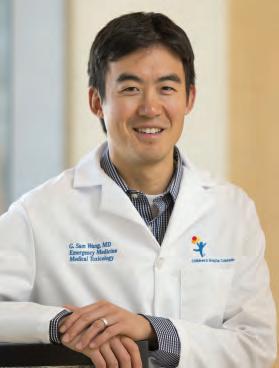
(L-R) Erica Wymore, MD, with Maya Bunik, MD, MPH, and biostatistician Claire Palme, MS, in The Netherlands, 2018. The research trio presented their findings on cannabis and breastfeeding at the 29th annual meeting of the International Cannabinoid Research Society.
Maya Bunik, MD, MPH, and Erica Wymore, MD, investigated the breastfeeding aspect of the issue. With the assistance of biostatistician Claire Palmer, MS, they launched a four-year prospective, observational pharmacokinetic study of women with prenatal marijuana use in 2016. Funded by the Colorado Department of Health & Environment and approved by both the Colorado Multiple Institutional Review Board and the National Institutes of Health, the research examines how long tetrahydrocannabinol (THC), the psychoactive component of marijuana, remains in breast milk. This is the first study investigating THC in breastmilk and plasma among women with known marijuana use in pregnancy since a 1982 study published in the New England Journal of Medicine.

128 DEPARTMENT OF PEDIATRICS FOUR PILLARS
Immunizations
VACCINE HESITANCY
PERSPECTIVE
In 2018, a collaborative study by Children’s Hospital Colorado and the Colorado Children’s Immunization Coalition showed only 71 percent of children ages 19–35 months were current on all vaccines. The resulting report, drawing from 2017 data and published in 2019, identified opportunities to decrease barriers to childhood vaccination and to improve immunization rates across Colorado. The decades-old partnership between Colorado health authorities to improve immunization rates is highlighted (page 54) in For a Child’s Sake: History of The Children’s Hospital (1994). Along with a recap of 1930 vaccine-preventable cases statewide is the quote: “The state epidemiologist lamented that smallpox and diphtheria still causes needless suffering because all children were not vaccinated, and typhoid still showed sporadic outbreaks.”
Evidence of efficacy: Per the U.S. Census, Colorado’s population in 1930 was 1.04 million. In 2018, it was 5.696 million. State of Colorado statistics for six reportable common diseases in these bookend years offer a striking contrast.
Department of Pediatrics faculty Allison Kempe, MD, MPH, and Sean O’Leary, MD, MPH, note that the percentage of parents refusing all immunizations for their children in 2018 was significantly lower—about 3%—but that the rate, unfortunately, was trending upward. Studies show an increasing number of parents are declining individual vaccines or deferring to immunization schedules that are not recommended by pediatricians and other primary care providers.
As founding director and infectious disease specialist, respectively, of ACCORDS (Adult & Child Consortium for Health Outcomes Research & Delivery Science), Kempe and O’Leary have been conducting research into vaccine hesitancy for nearly two decades. They now use their findings to educate parents on evidence-based decision making and providers on how to address the issue with families. The initiative is an active collaboration with Children’s Hospital Colorado, the Anschutz Medical Campus, and multiple local, regional, and national organizations.
Kempe and O’Leary also have collaborated with practices throughout the state and with the Colorado Department of Public Health and Environment to develop methods of increasing immunization rates for all childhood and adolescent vaccines. Centralized methods of reminding and recalling families, the use of standing orders for immunizations, motivational interviewing with hesitant parents, and discussing vaccination during the prenatal period have all been shown to be effective and are being adopted nationally.
James Todd, MD, former Section Head of Epidemiology for the Department, finds considerable irony in the debate as it relates to access. “To compare parents’ sense of urgency for the development of life-saving vaccines in past decades to this emerging hesitancy, when vaccine efficacy and safety is so well documented, is baffling for most pediatricians. Immunizations have been instrumental in our attaining today’s level of child health.”
Source: National Institutes of Health
A chronology of Department of Pediatrics’ advocacy for childhood health legislation appears on page 125.
For a Child’s Sake: History of The Children’s Hospital, Denver, Colorado 1910-1990 (1994)
childrenscolorado.org/4adcaf/globalassets/healthcare-professionals/vaccine-preventable-diseases-february-2019.pdf VACCINE-PREVENTABLE CASES Disease 19301 20182 Chicken Pox 2,566 268 (varicella) Diphtheria 470 0 Measles 12,312 0 Mumps 3,550 33 Smallpox 578 0 Whooping Cough 2,257 616 (pertussis)
1
2
In 2018, 25.8% of parents responding to the National Immunization Survey–Flu reported they were “hesitant about childhood shots.”
“One of the ways of assessing good access to care is measuring up-to-date immunization rates.”
129 DEPARTMENT OF PEDIATRICS FOUR PILLARS
–Stephen Berman, MD, FAAP | Getting It Right for Children, 2008
First Breaths: The Colorado Connection
In 2010, the American Academy of Pediatrics (AAP) launched Helping Babies Breathe (HBB), an international initiative to reduce newborn deaths in areas with limited resources. The evidence-based effort, developed in collaboration with the World Health Organization and other global health partners, integrates hands-on interventions to counter the most common causes of preventable neonatal mortality. More than 850,000 providers in 80-plus countries have received HBB training to date, and digital technology promises exponential expansion.
HBB techniques and its train-the-trainer process specifically target perinatal asphyxia, the inability of a newborn to breathe effectively at birth. Emphasis is placed on assessing each baby, maintaining body temperature, providing stimulation for the newborn to breathe, and assisting with ventilation—all within 60 seconds.
“This is the ‘Golden Minute’,” confirms neonatologist Susan Niermeyer, MD, MPH, a member of the original HBB Planning Group and a Career Teaching Scholar of the Department of Pediatrics at the University of Colorado School of Medicine. “Without those basics in the first minute, the entire trajectory of that life changes.” She cites multiple studies confirming such immediate support “can result in a 30% to 40% decrease in death in the first 24 hours. We’ve also seen a similar decrease in the number of fresh stillbirths—babies who were still (not breathing
“To think that global neonatal mortality has decreased from 14,000 deaths every day in 1990 to 7,000 deaths every day in 2018 gives me goose bumps. The work is not done, and the perinatal outreach train-the-trainer model is key to further improvement of newborn survival globally.”
–Susan B. Clarke, MS, RNC-NIC, CNS
or moving) at birth as the result of some asphyxia during the birth process, but had a heartbeat and survived with intervention.”
HBB has since become the cornerstone for Helping Babies Survive (HBS), a broader AAP international initiative targeting essential care for all newborns, specialized care for small and preterm babies, delivery practices, and infection prevention.
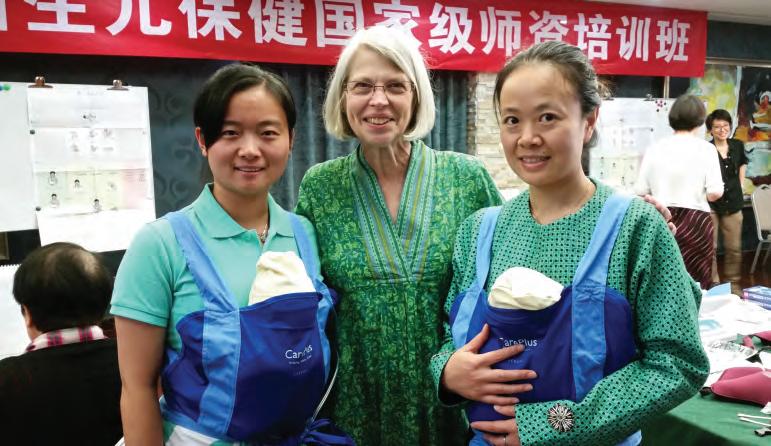
Niermeyer sees a direct connection between strides being made today through these global programs and the innovations of “baby whisperer” Lula Lubchenco, MD, and L. Joseph Butterfield, MD, a half century ago. These pioneers created programs that nurtured a generation of neonatologists, including Niermeyer and her HBB Task Force colleague George Little, MD, now a Professor of Neonatology and Perinatology at Dartmouth’s Geisel School of Medicine.
The Perinatal Outreach Education Program (POEP) Butterfield launched in 1965, in conjunction with the opening of the Newborn Center, was the first to provide
130 DEPARTMENT OF PEDIATRICS FOUR PILLARS
Helping Babies Survive training of trainers, China (2015) Photo courtesy of Susan Niermeyer
regional caregivers knowledge, training, and a telephone hotline for consultations and transport. The program’s success in educating interprofessional maternal-fetal and newborn teams to stabilize and treat critically ill newborns transformed regional care and reduced Colorado’s infant mortality rate from the sixth highest in the nation to the second lowest between 1960 and 1978.

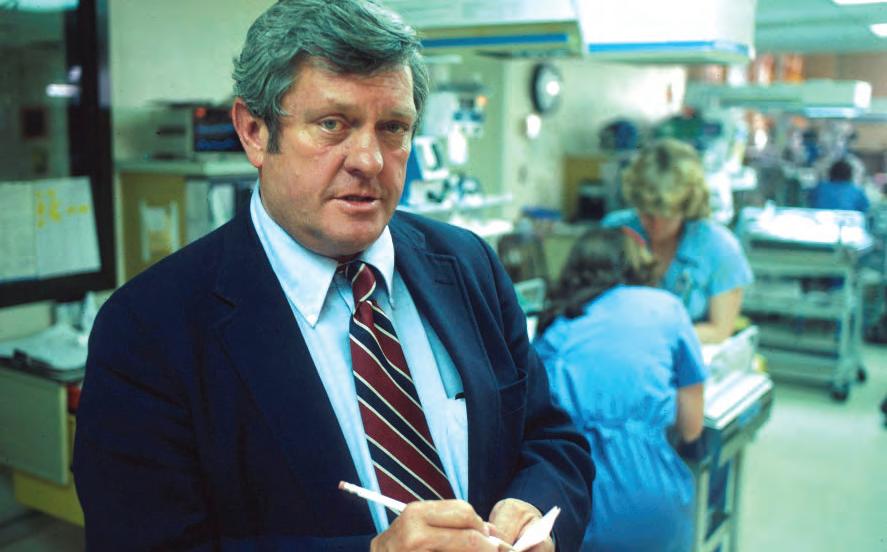
This Colorado work dovetailed with the nationwide Neonatal Resuscitation Program (NRP) sponsored by the American Academy of Pediatrics (AAP) and
American Heart Association (AHA). Niermeyer and Susan Clarke, POEP nurse coordinator during and after the Butterfield years, were part of the first national NRP group trained in 1988 and part of the first international HBB group trained in 2010. In addition to reaching out to caregivers in Colorado, Wyoming, Kansas, Nebraska, and Montana, they worked collaboratively with regional centers in neighboring Arizona, New Mexico, and Utah to convey a unified message. Today, Clarke serves as a Master Trainer with Helping Babies Survive, helping ensure the life-saving knowledge and clinical skills are shared and implemented globally.
“Perinatal asphyxia deaths decreased below one million annually for the first time in 2018.”
–United Nations Inter-Agency Group for Child Mortality Estimation (2019)
Dr. Butterfield in The Children’s Hospital NICU (1976)
The Perinatal Outreach team with Denver attendees departs for another Glenwood Springs conference (1983)
131 DEPARTMENT OF PEDIATRICS FOUR PILLARS
Photo courtesy of Susan Clarke
In 1996, a group of Department of Pediatrics faculty created the International Child Elective. Training initially was centered in Latin America, and the first decade’s strides were published in the Archives of Pediatric Adolescent Medicine in 2006. [Federico SG, Zachar PA, Oravec, CM, Mandler, T, Goldson E, Brown J. A successful international child health elective: the University of Colorado Department of Pediatrics’ experience. Arch Pediatr Adolesc Med, 2006 Feb; 160(2):191-6.]

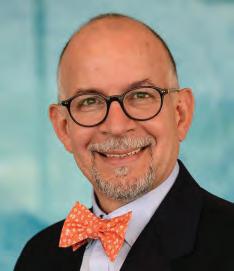

That early academic/outreach effort became a foundational step in the creation of today’s Center for Global Health at the Colorado School of Public Health. This multidisciplinary center—one of the only tri-institutional public health schools in the country—leverages strengths of the University of Colorado Anschutz Medical Campus, Colorado State University, and the University of Northern Colorado to advance public health locally, nationally, and globally. The University of Colorado School of Medicine’s Pediatrics residency program now provides global health experiences for both Pediatric and Internal Medicine residents with rotations in Guatemala and Zimbabwe.
CENTER FOR GLOBAL HEALTH VISION
The vision of the Center for Global Health is to work with impoverished communities throughout the world for better healthcare, better health, and a better future for children and their families. Through the Center for Global Health’s interdisciplinary and host country collaborative activities in service delivery models, research, training, and global health policy and advocacy, we strive to improve the global standard of health consistent with the fullness of human dignity.
LEADERSHIP
Stephen Berman, MD, director, Center for Global Health, holds an endowed chair in Academic General Pediatrics at Children’s Hospital Colorado and is a past president of the American Academy of Pediatrics. He has directed numerous international research projects and has served as special advisor to the World Health Organization, the Pan American Health Organization, and the United States Agency for International Development. Berman also served as the pediatric clinical research consultant to the National Academy of Sciences Board of Science and Technology in Developing Countries project on the etiology and epidemiology of acute respiratory infections carried out in 12 countries around the world.
Edwin Asturias, MD, director of Latin American Projects, completed his medical degree at the San Carlos University in Guatemala, his Pediatrics residency at the University of Colorado School of Medicine, and his fellowship in Pediatric Infectious Diseases at Johns Hopkins School of Medicine. He has been working in the area of vaccine research and policy in Guatemala and the Latin region since 1998, serving on the Guatemalan National Committee for Immunization Practices, the Poliovirus Contention Commission, and advisory groups for the World Health Organization.
In 2012, the Center for Global Health was named a World Health Organization Collaborating Center to Promote Child and Family Health.
Global Health
Pediatrics residents Katie McPeak, MD, (left) and Christopher Baker, MD, (right) with Guatemalan mother and son (2006).
132 DEPARTMENT OF PEDIATRICS FOUR PILLARS
THE FOUR PILLARS
RESEARCH
“We look to medical research to discover remedial measures to insure better health and more happiness for mankind.”

–Thomas Hunt Morgan, PhD, Nobel Prize in Physiology or Medicine, 1933 for discoveries related to the role of the chromosome in heredity
133 DEPARTMENT OF PEDIATRICS FOUR PILLARS
Bench, Bedside and Beyond
LEADERSHIP
Paul Fennessey, PhD, vice chair, Research, earned his doctorate at the Massachusetts Institute of Technology and joined the University of Colorado Health Sciences Center faculty in 1975. Past co-director of the Mass Spectrometry Research Resource (1980-1992), he has been professor of Pediatrics and Pharmacology since 1981 and vice chair of Research since 1991.
CAMPUS CONVERGENCE
By year-end 2008, The Children’s Hospital, the University of Colorado School of Medicine, and University research efforts had relocated from their respective mid-town Denver settings to what is now the Anschutz Medical Campus. The convergence of clinical care, physical resources, highly advanced technology, and a futuristic vision opened a new era of investigation. For the Department of Pediatrics, it created opportunities to expand on its national reputation as one of the top 10 academic pediatric departments in the United States.
Ronald Sokol, MD, vice chair, Clinical and Translational Research, graduated from The Pritzker School of Medicine, University of Chicago, and completed his residency in Pediatrics at the University of Colorado Health Sciences Center, concluding as Chief Resident. His fellowship in Pediatric Gastroenterology was at Cincinnati Children’s Hospital Medical Center.
He currently serves as associate medical director, Pediatric Liver Center and Liver Transplantation Program; director, Colorado Clinical and Translational Sciences Institute; and Section Head of Gastroenterology, Hepatology and Nutrition.
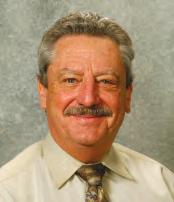
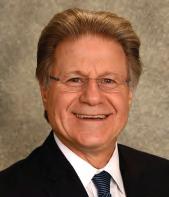
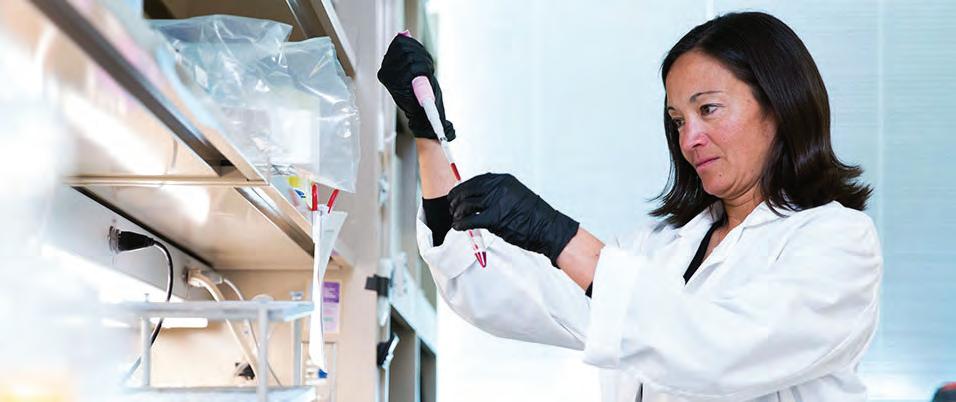
Jeanette Leeser, BS, Grant Program director, a graduate of Indiana University in Bloomington, was named director in 2013. She is responsible for the Department of Pediatrics annual financial portfolio of federal, state, foundation, and industry-sponsored research, as well as philanthropy and other research support totaling approximately $110 million. Her contracts team manages pre- and post-award activities of over 200 principal investigators submitting approximately 650 applications per year with annual NIH awards totaling $60+ million.

134 DEPARTMENT OF PEDIATRICS FOUR PILLARS
Shelley Miyamoto, MD, Jack Cooper Millisor Chair in Pediatric Heart Disease Director, Cardiomyopathy Program
COLORADO BIOSCIENCE PARK
“On the Anschutz Medical Campus, over one million square feet of adult and pediatric research space creates one of the largest healthcare research complexes in the world. The Colorado Bioscience Park Aurora, located to the north of the Anschutz campus, provides opportunities for early-stage and start-up research-oriented biotechnology. The Park’s location, adjacent to one of the largest academic medical centers in the western United States, facilitates the use of emerging science to pioneer discoveries benefiting global healthcare.”
Source: childrenscolorado.org
COLORADO CLINICAL AND TRANSLATIONAL SCIENCES INSTITUTE
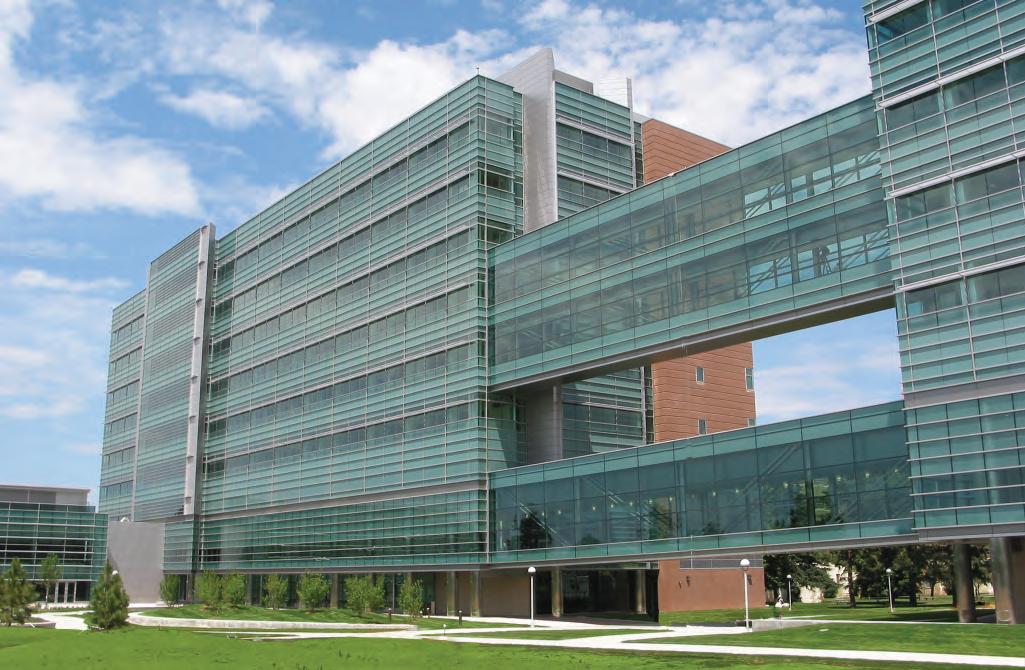
The Colorado Clinical and Translational Sciences Institute (CCTSI) was established in 2008 with the largest research grant in Colorado’s history—a $76 million Clinical and Translational Science Award (CTSA) from the NIH. The grant provided for inclusion of the two already NIH-funded General Clinical Research Centers, one for adults at University of Colorado Hospital (UCH) and one for children at The Children’s Hospital (now Children’s Hospital Colorado).
Today, this “institute without walls” coordinates efforts of diverse partnering organizations, including University of Colorado Denver/CU Anschutz, University of Colorado at Boulder, Colorado State University, UCH, Children’s Hospital Colorado, Denver Health, National Jewish Health, VA Medical Center, and Kaiser Permanente, as well as more than 20 community organizations. As a result, discoveries are translated into improved patient care and public health in accelerated fashion and the next generation of investigators are trained.
Six major programs were initially created to provide support and facilitate research:
Discovery Translation
Community Translation
Education, Training, and Career Development
Translational Informatics
Novel Methods and Technologies
Child and Maternal Health Research
135 DEPARTMENT OF PEDIATRICS FOUR PILLARS
Bench, Bedside and Beyond, continued
In announcing the Institute’s launch in 2008, CCTSI Director and Principal Investigator Ronald Sokol, MD, wrote: “This really is a state resource as well as a University resource. The grant funds our institution to develop a true academic home for clinical and translational research and training with the goal of speeding discoveries into clinical practice—from our labs to your lives.”
CCTSI MISSION
“The mission of the CCTSI is to transform the current clinical and translational research and training efforts of all schools at the University of Colorado and affiliated institutions into an innovative, interdisciplinary, integrated, collaborative campus and hospital-wide academic home for clinical and translational sciences, scientists, and trainees.”

Source: CCTSI.cuanschutz.edu
RESEARCH INFRASTRUCTURE IN THE DEPARTMENT OF PEDIATRICS
The Children’s Hospital Research Institute (TCHRI), established in 1992, provides resources, expertise, and oversight to new research programs at Children’s Hospital Colorado. Largely funded by community philanthropy, it directs support toward promising pediatric scientists and pioneering innovative ideas. The TCHRI sponsors new research initiatives in all disciplines involved at the hospital, including nursing and pathology. It also houses the: Clinical Trials Organization, to support faculty and staff involved in clinical trials evaluating advanced drugs and devices for treating and preventing childhood diseases.
Children’s Outcomes Research Program, a collaboration with the Colorado Health Outcomes Program, providing research and analysis for community initiatives targeting disease prevention and improved health care delivery. Experimental Therapeutics Program, within the Center for Cancer and Blood Disorders, to promote the development, scientific support, and clinical translation of promising care for pediatric and young adults experiencing cancer across an 11-state region.
Biostatistical Support, to assist researchers—particularly those conducting pilot studies—in mining and analyzing data. Bioinformatics Support, to provide resources to help researchers manage complex datasets and biological information.
136 DEPARTMENT OF PEDIATRICS FOUR PILLARS
PREVENTION RESEARCH CENTER
CARDIO PULMONARY RESEARCH LABORATORY
In 1996, the U.S. Justice Department announced its sponsorship of an innovative preventive medicine initiative known as the Nurse-Family Partnership (NFP). The program called for specially trained nurses to make prenatal and infancy home visits to improve pregnancy outcomes, support child health, and development, reduce violence, and nurture economic self-sufficiency. The longitudinal goal—to “reduce disparities over the life-course”—was not only pragmatic from a societal perspective, but proven by two decades of randomized clinical trials conducted by David Olds, PhD.
David Olds, PhD, Co-director, Prevention Research Center for Family and Child Health Professor of Pediatrics, Nursing, and Community and Behavioral Health, University of Colorado
NFP’s early-intervention approach can be traced to Olds’ work with abused and neglected preschoolers following his graduation from Johns-Hopkins University in 1970. He advanced the concept while earning his PhD at Cornell University. Then, over the decades, he tested the program in three diverse cities—Elmira, New York; Memphis, Tennessee; and Denver, Colorado. The results were remarkably consistent: NFP support of mothers during pregnancy and the first two years of the child’s life improved the health of and development of children in need and helped their parents find greater stability.

Today’s NFP serves more than 51,000 families per day in and beyond the United States. It is the only early childhood program found to reduce child fatalities due to abuse and neglect. Moreover, NFP trials have served as the primary evidence for a $2.3 billion federal investment in “evidence-based” home visiting.
The origins of the Cardiovascular Pulmonary (CVP) Research Laboratory at the University of Colorado School of Medicine trace back to the 1960s, when Robert Grover, MD, and John Reeves, MD, began studying altitude-related pulmonary hypertension in cattle. Their work—furthered by clinician-scientist mentees including Kurt Stenmark, MD, Steven Abman, MD, D. Dunbar Ivy, MD, and others—provided fundamental insights into the causes of pulmonary hypertension in humans. In 1971, the CVP Laboratory was awarded the first National Institutes of Health Program Project Grant to study the mechanisms of pulmonary vascular remodeling and the response of the lung vasculature to hypoxia
 In 2002, Kurt Stenmark, MD, and Maria Frid, PhD, were the first to identify that pulmonary artery endothelial cells can become smooth muscle cells, advancing understanding of pediatric pulmonary hypertension.
In 2002, Kurt Stenmark, MD, and Maria Frid, PhD, were the first to identify that pulmonary artery endothelial cells can become smooth muscle cells, advancing understanding of pediatric pulmonary hypertension.
“There is a magic window during pregnancy. It’s a time when the desire to be a good mother and raise a healthy, happy child creates motivation to overcome incredible obstacles—including poverty, instability or abuse—with the help of a well-trained nurse.”
137 DEPARTMENT OF PEDIATRICS FOUR PILLARS
–David Olds, PhD, Prevention Research Center
Bench, Bedside and Beyond, continued
and other injuries. The Program, which has been continuously funded since that date, continues to evolve and the most current iterations led by Kurt Stenmark interrogate the role of inflammation in disease pathogenesis. In 1991, Reeves and Stenmark also received the NIH’s first Specialized Center of Research (SCOR) grant for studies on pediatric pulmonary hypertension, a grant which was funded for 20 consecutive years and made seminal contributions to the understanding and treatment of neonatal pulmonary hypertension.

Today’s CVP Laboratory pursues dual goals: to perform significant, innovative research in the general area of cardiovascular-pulmonary biomedicine with a focus on the pathophysiological effects of hypoxia through a multidisciplinary approach which includes investigators from the Departments of Medicine, Molecular Genetics, and Bioengineering; and to prepare individuals holding a doctoral degree in either basic biological (PhD) or medical (MD, DVM) sciences for a successful academic career in research and teaching at a university or medical school through the help of an NIH-funded T32 training grant.
GRANT FUNDING GROWTH
PERINATAL RESEARCH CENTER
In 1965, clinician-investigator
Frederick Battaglia, MD, received an NIH T32 Training grant in Perinatal Biology and Medicine. The grant, continuously funded since that date, was a foundational first step in creation of the Perinatology Research Center on today’s Anschutz Medical Campus. Thanks to a $1 million gift from the Chancellor’s office, the facility was considerably expanded at the time Children’s Hospital moved to the Fitzsimons Medical Campus. William Hay, MD, served as scientific director through 2018.
Major expansion since then has created the current 28,000 square-foot facility which houses advanced research capability, educational areas, a rodent vivarium, and a sheep physiology laboratory. Faculty conducting studies at the Center are on the leading edge of research in maternal, placental, and fetal physiology. The Center’s fetal growth studies are providing greater understanding of how aberrant fetal growth can lead to poor reproductive outcome, neonatal disease, and adult disorders originating during fetal life. Research is also being conducted into the role of inflammation and oxygen toxicity in producing hepatic and pulmonary injury and the link between inflammation and metabolism in the perinatal period.
University of Colorado Department of Pediatrics TYPE 2003 2008 2013 2018 TOTAL NIH Award $ IN MILLIONS DATA N/A $44.5 $43.2 $53.7 $141.5 Total Award $ IN MILLIONS DATA N/A $44.8 $56.5 $68.5 $169.7 T32 Grants 4 6 5 5 K12 Grants 0 0 2 3
NIH Grant Source: Blue Ridge Institute for Medical Research (BRIMR.org)
138 DEPARTMENT OF PEDIATRICS FOUR PILLARS
Drs. Richard Krugman, Dean, CUSOM; Randall Wilkening, Section Head, Neonatology; Frederick Battaglia, Professor Emeritus and Chair Emeritus; James Shore, Chancellor; and Department of Pediatrics Chair M. Douglas Jones, Jr., recognize a $1 million contribution from the Chancellor’s Office.
Resistance to Research: “Golden Crutches”
Medical staff at The Children’s Hospital in the 1930s found no opportunity for investigative research with Agnes Reid Tammen as board chair. Tammen gave generously of her own funds and those left by her late husband, Denver Post publisher Henry H. Tammen, to care for pediatric patients and the physical plant at 18th and Downing. But, as hospital records confirm, her support stopped decisively at the edge of the unknown.
Epidemiologist James Todd, MD, writes in Clinical Science With A Heart: The History of Research at The Children’s Hospital 1910-1990: “She is quoted as having said, ‘we will buy a child a golden crutch if that is what’s needed but not a penny for experimentation.’
“In 1942, one era at The Children’s Hospital ended and another began. In that year, Agnes Tammen died. Shortly thereafter, Dr. Harold Palmer arrived as pathologist, director and soon to be medical director. Dr. Palmer brought with him clinical chemist, Wayne Danielson, and a commitment to education and research. To entice them, the hospital had promised to build its first, modern laboratory. In 1944, Dr. Danielson’s attitude toward creativity was reflected in the annual report:
‘Research has heretofore received scant attention at this institution. With increasing facilities for clinical/pathological study, we incur the obligation of promoting investigative work in the medical sciences. Dr. Palmer has already formulated plans to this end and at a recent meeting of the executive staff, these plans were discussed with Dr. Florence Sabin, whose help and advice will be invaluable.’
“In the same year, Dr. Al Miller recalls:
‘Opportunities for clinical research were becoming more apparent as the numbers of patients increased and excellence of the supporting facilities developed. Two fellowships in Pediatrics were approved by the Executive Committee and the Board of Directors in 1944, but progress in the area of research was very limited due to the understaffing imposed by wartime restrictions….Drs. Lubchenco and Danielson did continue their studies in nutritional disorders under a Mead Johnson grant.’
“This is the first mention of any grant monies for the performance of research, and of a relationship with a commercial concern to improve patient care—a marked change from just a few years before when there was ‘not a penny’ for experimentation.”
PARALLEL PATHS
By the 1970s, Department of Pediatrics faculty were based at both the University of Colorado and The Children’s Hospital, and both institutions were actively pursuing mission-related research. The C. Henry Kempe Center for Investigative Pediatrics opened at Children’s in 1980 to support clinical research and attract new physician investigators. Faculty-wide recognition of the need for the Center is reflected in the signatures of academic and community pediatricians signing the commemorative plaque honoring its opening. The Center was restructured and renamed the Children’s Hospital Research Institute in 1990.
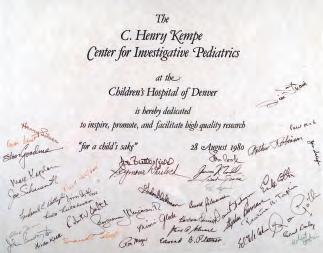
139 DEPARTMENT OF PEDIATRICS FOUR PILLARS
The Elevation Effect
At an elevation of 10,152 feet, Leadville, Colorado, is recognized as the highest incorporated city in the United States. The legendary mining town is located between the Sawatch and Mosquito Ranges of the Rocky Mountains and surrounded by several fourteeners, including Mount Elbert at 14,428 feet—the highest summit in Colorado and all the Rocky Mountains of North America.

This area’s extreme elevation served its country well during World War II as a winter/mountain training site for the 10th Mountain Division, the U.S. Army’s alpine combat force. Camp Hale, the host post, was active from 1942 to 1945. At the peak of training, it housed 15,000 troops and more than a thousand structures. After the war, veterans of the 10th Mountain Division would return to the Rockies to help create the skiing meccas of Aspen and Vail.
The state’s high-altitude environments have met more than military and recreational demands over the past seven decades. They also have served as laboratories for University of Colorado School of Medicine and Department of Pediatrics researchers to study the effects of altitude on fetal growth, neonatal care, pulmonary function, cardiac function, and pediatric pulmonary hypertension. Work set in motion by internationally regarded pioneers decades ago continues to evolve, yielding new generations of investigators and care-changing discoveries. On the following page are two cases-in-point.
EFFECTS OF ALTITUDE
“When the 1949 birth certificates began to come in, the information was dramatic. Of the 233 babies born above 10,000 feet in Lake County, 45 percent weighed less than 5 1/2 pounds (Lichty et al. 1957). The “prematurity rate” in Lake County was ten times the national average!” –Attitudes on Altitude (2001)
Turquoise Lake, Leadville, CO
Photo by Steven Sturm
140 DEPARTMENT OF PEDIATRICS FOUR PILLARS
NEONATAL HEALTH
In the 1950s, at a time when all babies less than 5.5 pounds were considered to be premature, Colorado was thought to have the highest rate of “prematurity” in the United States. Harry Gordon, MD, chairman of the Department of Pediatrics, recruited John Lichty, MD, as the first full-time faculty member of the University of Colorado School of Medicine to help understand the problem. Where Gordon, an expert in newborn nutrition, believed nutrition and lower socioeconomic conditions to be the root cause of low birth weight infants, Lichty felt strongly higher altitudes played a role.
In 1952, he and Rosalind Ting, MD, began conducting research in Leadville to correlate elevation and neonatal health. Their work, published in 1957, showed that full-term babies born at high altitude consistently weighed less than those born at sea level. Because many weighed less than 5.5 pounds, they would be misclassified as premature. Lula Lubchenco, MD, a close colleague of both Gordon and Lichty, worked with Lichty to build on this insight. Together, they made the far-reaching observation that altitude is not the only reason that fetuses grow at different rates, making birth weight a poor proxy for gestational age at any stage of pregnancy.
ADAPTATION TO HYPOXIA
Also in the 1950s, Robert (Bob) Grover, MD, and John (Jack) Reeves, MD, in the Department of Medicine began studying altitude-related pulmonary hypertension in cattle. Their work provided fundamental insights into the causes of pulmonary hypertension in humans. Their research grew in size and scope within the Cardiovascular Pulmonary (CVP) Laboratory and led eventually to establishment of the Adaptation of Hypoxia Program in 1975. Kurt Stenmark, MD, and Steven Abman, MD, in Pediatrics were among the many clinician-scientists who began their careers with Grover, Reeves, and their co-workers. Reeves eventually joined the Department of Pediatrics and served as mentor to Stenmark, the current director of the CVP Laboratory and head of the Adaptation to Hypoxia Program.
Abman has gone on to a successful career in the study and treatment of pulmonary hypertension in children. Among other members of the Department of Pediatrics who owe much to the CVP Laboratory are D. Dunbar Ivy, MD, in Cardiology and Susan Niermeyer, MD, in Neonatology, Niermeyer through work with another member of the CVP Laboratory, Lorna Moore, PhD.
Leadville also served as a research site for pediatric cardiologist Robert Wolfe, MD. In 1973, he launched a five-year study of 2,000 K-12 children at 10,000 feet and at sea level. The findings concluded that Leadville children weighed less than and had lower systolic blood pressure than controls at sea level. In 1985, he demonstrated lethal pulmonary hyperreactivity to chronic hypoxia in some infants residing at 10,000 feet and found that the only effective therapy for these infants was moving to an elevation of 7,500 feet or less.
“I feel a great sense of pride when I think of the accomplishments these investigators have produced for us. Thanks to them, we now have an impressive body of knowledge assembled through their scientific acumen and imagination.”
141 DEPARTMENT OF PEDIATRICS FOUR PILLARS
–Robert Grover, MD, Pulmonologist and Researcher Pulmonary Circulation 2012
Pediatric Pulmonary Hypertension: Nitric Oxide and Newborns
For babies with PPHN, treatment usually included a heart-lung bypass using extracorporeal membrane oxygenation (ECMO). During this procedure, the newborn’s blood was circulated externally through an artificial lung with oxygenated blood returned into the bloodstream.
In 1991, a multidisciplinary clinical research team at The Children’s Hospital discovered a far safer and highly successful intervention. The lab directed by pediatric pulmonologist Steven Abman, MD, was the first to demonstrate that the newborn lung must produce large amounts of nitric oxide (NO) at birth to increase blood flow to the lung, and that failure to release NO at birth was a major cause of PPHN. With neonatologist John Kinsella, MD, and cardiologist D. Dunbar Ivy, MD, the team found that blending low doses of NO with oxygen into a ventilator could increase blood flow to a newborn’s lungs without ECMO treatment.

The discovery garnered a significant National Institutes of Health grant. In 1999, inhaled NO was approved by the Food and Drug Administration for use in term and near-term newborns diagnosed with persistent pulmonary hypertension.
A baby’s first breath ushers in far more than ambient air. As oxygen in the lungs increases, the blood flow resistance to the newborn’s lungs decreases and changes in circulation progress. Unless the baby develops persistent pulmonary hypertension of the Newborn (PPHN). When PPHN is present, as it is for at least one of every 500 to 700 infants, there is a reversion to the in utero circulation process in which high pressure in the lung circulation causes blood flow to bypass the lungs, making it increasingly difficult for the baby to get oxygen. Even with 100% supplementary oxygen, blood oxygen levels remain low as heart rate and respiration rise.
Until the early 1970s, few newborns with serious heart and lung conditions survived, and those that did often experienced major health issues their entire lives.
Abman and Kinsella’s continued research determined that inhaled NO therapy can effectively improve oxygenation after birth even in preterm newborns with respiratory failure and older infants with other lung and heart diseases.
Drs. John Kinsella and Steven Abman Children’s Neonatal Intensive Care Unit, 2008
“What’s exciting about research is ... you can work very hard to find new ways of thinking. At most hospitals, multidisciplinary teams were not working together to address this issue. To fix it, a complete paradigm shift was necessary.”
–Steven Abman, MD, Let It Be Us, A History of Children’s Hospital Colorado
142 DEPARTMENT OF PEDIATRICS FOUR PILLARS
Today, inhaled NO therapy benefits patients of all ages diagnosed with pulmonary hypertension. Among the conditions it helps address are congenital heart disease, acute respiratory distress syndrome, sickle cell disease, and complications resulting from bone marrow transplantation.
The multidisciplinary approach driving this initial success led to the creation of the Pediatric Heart Lung Center (PHLC) at Children’s in 1994. The PHLC team developed the first pediatric-specific, multidisciplinary program for treating children with pulmonary hypertension and currently has an active program that manages more than 200 patients with severe pulmonary hypertension from many causes.
NITRIC OXIDE THERAPY
The efficacy of inhaled nitric oxide therapy demonstrated at The Children’s Hospital in 1991 led to a $6 million National Institutes of Health grant. In conjunction with the University of Colorado School of Medicine, Children’s was designated the nation’s first specialized research center dedicated to neonatal pulmonary hypertension.
Pediatric Pulmonary Hypertension Network
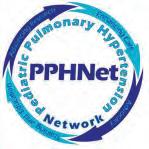
Department of Pediatrics faculty members Steven Abman, MD, D. Dunbar Ivy, MD, and John Kinsella, MD have been instrumental in establishing North America’s Pediatric Pulmonary Hypertension Network. Each of the Network’s 13 centers provides multidisciplinary clinical care and is active in basic, translational, and/or clinical research. Knowledge gained benefits children internationally. In addition to the University of Colorado/Children’s Hospital Colorado, network partners include Stanford University, the University of California/San Francisco, Boston Children’s Hospital, Columbia University/ New York-Presbyterian, Children’s Hospital of Philadelphia, Vanderbilt University, University of Alberta (Edmonton), Hospital for Sick Children (Toronto), University of Washington (Seattle), Texas Children’s Hospital (Houston), Cincinnati Children’s Hospital and Medical Center (Cincinnati), and Johns Hopkins Children’s Center.
BUILDING ON BREAKTHROUGHS
One research team’s findings are fuel for a future team’s advances. Such is the case for the Department of Pediatrics’ ongoing work in children’s heart and respiratory conditions. Forty years before Children’s multidisciplinary team established inhaled nitric oxide as a treatment for pediatric pulmonary hypertension in newborns, Robert (Bob) Grover, MD, and John (Jack) Reeves, MD, in the Department of Medicine were studying altitude-related pulmonary hypertension in cattle and sheep models. Their research expanded within the University of Colorado’s Cardiovascular Pulmonary (CVP) Laboratory and led to the 1975 creation of the Adaptation of Hypoxia Program. Abman was among the next generation of clinical scientists benefiting from the earlier work. “I didn’t formally train within the CVP lab, but collaborated with the CVP team in the years that followed. Jack Reeves liked to refer to me as one of his late-career trainees, a true honor from such a passionate teacher and investigator.”
Number of ECMO Cases 0 10 5 15 20 25 30 1988 1989 1990 1991 1992 1993 1994 1995 1996 1997 1998 1999 2000 2001 YEAR INHALED NO REDUCES NEONATAL ECMO USE AT THE CHILDREN’S HOSPITAL Inhaled NO
143 DEPARTMENT OF PEDIATRICS FOUR PILLARS
ACCORDS: The Adult and Child Consortium for Health Outcomes Research and Delivery Science
The Adult and Child Consortium for Health Outcomes Research and Delivery Science—ACCORDS—was established in 2014. This new entity joined two programs that had collaborated effectively and grown dynamically for a decade: the Colorado Health Outcomes Program, founded in 1998, and the Children’s Outcomes Research Program, created in 2002.
ACCORDS is a unique environment for pragmatic scientists that supports outcomes, health services, and implementation research, in order to improve healthcare and the quality of lives, for all ages. Infrastructure support is provided jointly by the Children’s Hospital Colorado and the Dean’s Office, School of Medicine, for translational or health services research directly relevant to guiding healthcare.
ACCORDS is a one-stop shop designed to support faculty with project development, grant proposals, and consultations on various research methods and content areas. The study of delivery science encompasses comparative effectiveness, patient-centered outcomes, and implementation and dissemination research. Collaborating investigators represent the Colorado School of Public Health, as well as all University of Colorado School of Medicine departments, the School of Pharmacy, and the School of Nursing.
LEADERSHIP
Allison Kempe, MD, MPH, is the founding director of ACCORDS, professor and investigator for the Department of Pediatrics. A graduate of the University of Colorado School of Medicine and Colorado School of Public Health, Kempe is now a professor at both schools. Having conducted health services, outcomes, and implementation/dissemination research for more than 30 years, she has led or coauthored more than 200 publications focusing on improving health care and health care delivery.
ACCORDS is organized into strong methodological cores and programs, led by national experts:
CORES PROGRAMS
Qualitative & Mixed Methods Dissemination & Implementation Science
Biostatistics & Analysis Colorado Program for Patient-Centered Economic Analysis Decisions
Mobile Health & Informatics
Community Engagement & Outreach
Practice-Based Research Network Data Science
Research Training & Mentorship
Education
ACCORDS GOALS
Increase competitiveness for funding from multiple research, education, and training program sponsors, especially Patient-Centered Outcomes Research Institute, Agency for Health Care Research and Quality, and National Institutes of Health
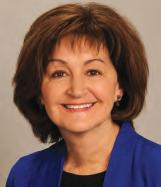
Strengthen research affiliations with key partners including Colorado Clinical and Translational Sciences Institute, Denver Health, Kaiser Permanente, U.S.
Department of Veterans Affairs, Colorado Department of Public Health and Environment, and the Colorado Department of Health Care Policy and Financing
Improve faculty development for both senior and junior faculty interested in outcomes and delivery research by providing an interdisciplinary home for developing research, a mentored training ground, and substantial educational activities Improve the ability to recruit both senior and junior faculty interested in health outcomes, health services research, dissemination and implementation (D&I) science, comparative effectiveness, and patient-centered outcomes research Achieve greater national visibility as leaders in the areas of outcomes, D&I science, comparative effectiveness research, and training
144 DEPARTMENT OF PEDIATRICS FOUR PILLARS
Informatics and Data Science
The Section of Informatics and Data Science was established in 2018 with Children’s Hospital Medical Director of Research Informatics Michael Kahn, MD, PhD, as Section Head. Informatics—the integration of digital technology to maximize the useful value of information and data—had been employed by both the Department of Pediatrics and The Children’s Hospital since the early 1990s. Establishing the new Section signaled an even greater commitment to improving care quality and delivery through innovation.

Informatics expertise includes clinical and research informatics, clinical decision-making and support, and record linkage. Data Science acumen encompasses biostatistics, computer science, machine learning, data assimilation, and mathematical physiology. This merging of strengths enables Section faculty to: Design and develop novel computational models, tools, and interfaces. Build tools into real-time clinical decision support systems.
Partner with health systems to deploy tools and rigorously evaluate their impact.
The Section of Informatics has been instrumental in the implementation of Health Data Compass (HDC), an enterprise health data warehouse developed in partnership with Children’s Hospital Colorado, UCHealth, University of Colorado AMC, and CU Medicine. HDC is used by the Colorado Center for Personalized Medicine (CCPM) to help physicians rapidly evaluate patients at the molecular and clinical levels, predict individual risk for disease, and develop personalized, biology-based therapies. This “informatics compass” securely integrates genomics data from CCPM, electronic health records from clinical providers, and external sources such as public health data, environmental data, and insurance claims. Future data sources will include additional data sources including wearable devices and social media.

LEADERSHIP
Section Head Michael Kahn, MD, PhD, received his medical degree from the University of California, San Diego, and his doctorate in Medical Information Sciences from the University of California, San Francisco. He is board-certified in Internal Medicine and a member of the inaugural class of diplomats with subspecialty certification in Clinical Informatics. He is a Fellow of the American College of Physicians and an elected Fellow of the American College of Medical Informatics. He is past co-chair of the national NIH-funded Clinical and Translational Sciences Award Informatics Key Function Committee, which represents the informatics core directors for all 60 CTSA grantees.
COMPASS TECHNOLOGY
In 2017, Health Data Compass completed its transition from a traditional on-premises data warehouse infrastructure to a massively fast and scalable system built on Google Cloud Platform.

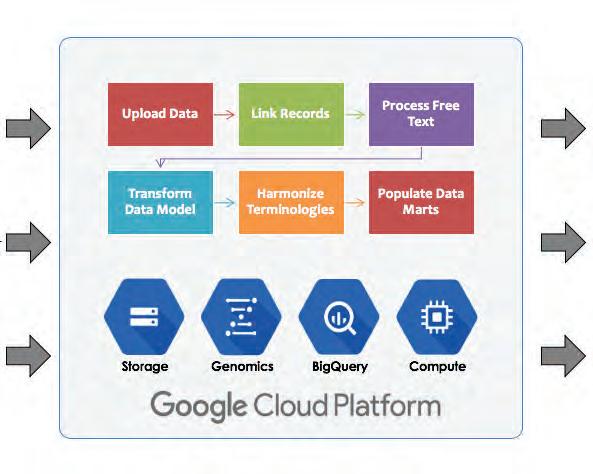
145 DEPARTMENT OF PEDIATRICS FOUR PILLARS
Most-Cited Pediatric Articles
Research studies conducted and published by University of Colorado School of Medicine (UCSOM) Department of Pediatric faculty have furthered clinical advances in both pediatric and adult medicine. One metric of the value of research and an indicator of its foundational importance is the number of times a study is cited by subsequent investigators.
In September 2013, Pediatrics, the Journal of the American Academy of Pediatrics, presented as its monthly feature A Historical Perspective of Pediatric Publications: A Bibliometric Analysis, authored by Nuala Quinn, Owen Hensey, and Dermot Thomas McDowell. Serving as Section Editor/Historical Perspectives at the time was Jeffrey Baker, MD, PhD, a resident with CUSOM Department of Pediatrics from 1984–1988 and now Professor of Pediatrics, Research Professor in the Department of History at Duke University.
Dr. Baker wrote (in 2013): “The world of medical research is rapidly proliferating. Since 1945 there have been more than 40 million publications referenced on the Thompson Reuters Web of Science. There are now 191 journals solely dedicated to the specialty of pediatrics and in 2010 alone, more than 22,800 pediatric articles were published.”
The Pediatrics feature identified the 100 pediatric articles cited most frequently between 1945 and 2013. Eight of those listed were authored by USCOM Department of Pediatrics faculty.
EIGHT “ARTICLES MOST CITED”, PEDIATRICS
Lubchenco LO, Hansman C, Boyd E, Dressler M. Intrauterine growth as estimated from liveborn birth weight data at 24 to 42 weeks of gestation. Pediatrics 1963;32(5):793–800.
Lubchenco LO, Hansman C, Boyd E. Intrauterine growth in length and head circumference as estimated from live births at gestational ages from 26 to 42 weeks. Pediatrics. 1966;37(3):403–408.
Battaglia FC, Lubchenco LO. A practical classification of newborn infants by weight and gestational age. Journal of Pediatrics. 1967;71(2):159–163.
Pinhas-Hamiel O, Dolan LM, Daniels SR, Standiford D, Khoury PR, Zeitler P. Increased incidence of non-insulin-dependent diabetes mellitus among adolescents. Journal of Pediatrics. 1996;128(5):608–615.
Frankenburg WK, Dodds JB. Denver Developmental Screening Test. Journal of Pediatrics. 1967;71(2):181–191.
Hambidge KM, Hambidge C, Jacobs M, Baum JD. Low-levels of zinc in hair, anorexia, poor growth, and hypogeusia in children. Pediatric Research. 1972;6(12):868–874.
Krebs NF, Baker RD, Greer FR, Heyman MB, Jaksic T, Lifshitz F, et al. Prevention of pediatric overweight and obesity. Pediatrics. 2003;112 (2):424–430.
Nellhaus G. Head circumference from birth to 18 years—practical composite international and interracial graphs. Pediatrics. 1968;41 (1P1):106–114.
Source: Pediatrics September 2013, 132 (3) 406-412; DOI: https://doi.org/10.1542/peds.2013-0283
“Research is to see what everybody else has seen, and to think what nobody else has thought.”
–Albert von Szent-Györgyi, Nobel Prize, Physiology or Medicine, 1937
146 DEPARTMENT OF PEDIATRICS FOUR PILLARS
THE FOUR PILLARS
EDUCATION
“I desire no other epitaph—no hurry about it, I may say—than the statement that I taught medical students in the wards, as I regard this as by far the most useful and important work I have been called upon to do.”
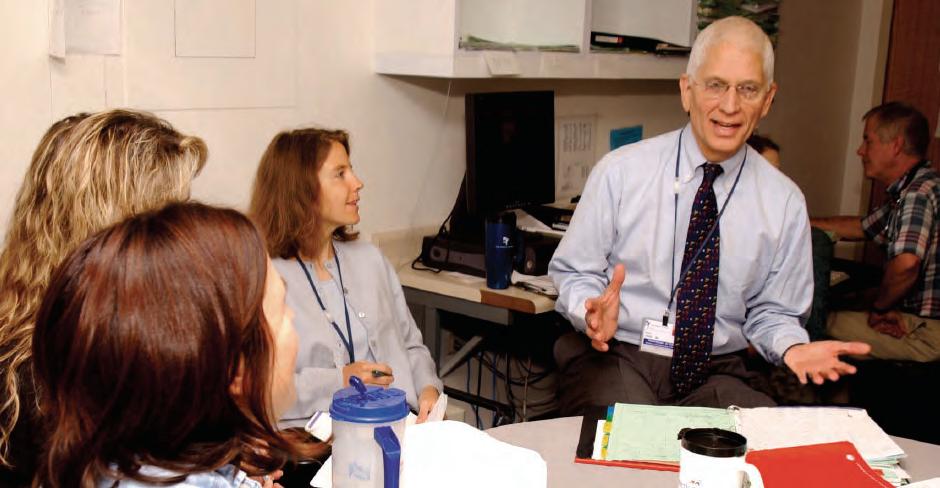 –William Osler, FRS, FRCP
–William Osler, FRS, FRCP
147 DEPARTMENT OF PEDIATRICS FOUR PILLARS
From Student to Specialist
The Department of Pediatrics offers expansive educational programs serving medical and physician assistant students, residents, fellows and other allied health professionals, full-time faculty, and volunteer clinical faculty. Committed to innovation and excellence, the medical education team strives to develop, implement, and evaluate programs that result in exceptional pediatric health providers for the Rocky Mountain region and the nation.
ACTIVE PROGRAMS AND INITIATIVES Medical Student Experiences
The Department is involved in the training of more than 700 medical students annually. A six-week clerkship in Infant, Child and Adolescent Care provides third-year students inpatient, outpatient, and nursery experiences at Children’s Hospital Colorado and affiliated facilities, as well as office-based experiences with volunteer clinical faculty. The Mentored Scholarly Activity Program connects each medical student with a faculty mentor to complete a scholarly project in their area of interest during their four years of training. In 2018, work began on the medical school’s new curriculum reform—a robust, truly integrated medical and science curriculum to develop physician leaders capable of transforming the health of culturally diverse communities.
Pediatric Residency Experiences
The Department is a national leader in providing career-focused longitudinal experiences that are mentored and individually crafted for each resident. At Children’s Hospital Colorado, residents can access both general pediatrics and specialized training in any pediatric subspecialty. Residents also spend about 25 percent of their time at Denver Health Medical Center, the safety net hospital for the city and county of Denver, where there’s more of a community hospital feel.
Trainees may focus on primary care (rural or urban), hospitalist medicine, a subspecialty focus (pre-fellowship) and/or global health. This unique approach helps satisfy the new ACGME requirement in pediatrics for six months of career-focused training. At this time, the Department offers residency training in Categorical Pediatrics and six subspecialty areas: Child Neurology, Dermatology, Internal Medicine/Pediatrics, Medical Genetics and Genomics, Nutrition, and Physical Medicine and Rehabilitation.
Subspecialty Fellowship Training
Adolescent Medicine
Adult Congenital Heart Disease
(joint program with Adult Cardiology)
Child Abuse Pediatrics
Clinical Biochemical Cytogenetics
Clinical Cytogenetics
Clinical Molecular Genetics
Developmental Behavioral Pediatrics
General Academic Pediatrics –
Primary Care Research
Medical Biochemical Genetics
Multicultural Pediatric
Neuropsychology
Neonatal/Perinatal Medicine
Pediatric Advanced/Transplant Hepatology
Pediatrics Allergy and Immunology
Pediatric Bone Marrow Transplant/ Cellular Therapeutics
Pediatric Cardiac Critical Care
Pediatric Cardiac Imaging
Pediatric Critical Care Medicine
Pediatric Dermatology
Pediatric Electrophysiology
Pediatric Emergency Medicine
Pediatric Endocrinology
Pediatric Epilepsy
Pediatric Experimental Therapeutics
Pediatric Gastroenterology
Pediatric Heart Failure/ Transplantation
Pediatric Hematology/Oncology
Pediatric Hospital Medicine
Pediatric Infectious Diseases
Pediatric Interventional Cardiology
Pediatric Nephrology
Pediatric Neuro/Oncology
Pediatric Neuropsychology
Pediatric Nutrition
Pediatric Pulmonology
Pediatric Rheumatology
Sleep Medicine
148 DEPARTMENT OF PEDIATRICS FOUR PILLARS
The Department’s fellowship experiences span 36 subspecialties.
Child Health Associate/Physician Assistant Program (CHA/PA)
In 1968, Department faculty member Henry Silver, MD, launched the nation’s first physician assistant program focused on the health care needs of children and adolescents (see page 155). This innovative educational model to train advanced practice providers is regarded as a breakthrough in making competent pediatric health care more efficient, effective, and economical. In 2018, at its half-century mark— Colorado’s three-year program has graduated nearly 1200 CHA/PAs. The Colorado Curriculum has garnered attention from medical education programs nationwide.
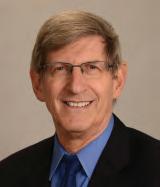 Adam Rosenberg, MD Director, School of Medicine, Pediatric Residency Program
Adam Rosenberg, MD Director, School of Medicine, Pediatric Residency Program
“This is an envied location for a Pediatric residency. First, it’s in Colorado, which has great appeal. But even more important is the opportunity we offer physicians to work in a quaternary setting with highly advanced medical investigation and treatment, as well in urban and rural outreach sites, and community hospital settings. This provides a nice balance to the training and allows residents to be prepared for their chosen career path. Finally, each resident’s training is individualized and tailored to meet their future needs.”
LEADERSHIP
Mary Glodé, MD, graduated from Washington University School of Medicine in St. Louis and completed her Pediatric residency at the University of Texas Southwestern Medical School. Her Pediatrics and Infectious Disease fellowships were served at the National Capital Consortium (Bethesda) Program and Boston Children’s Hospital, respectively. Prior to becoming the first Vice Chair for Education, she was director of the Pediatric residency program from 1992-2003, introducing new post-graduate training opportunities aligned with emerging pediatric practice. Glodé was honored as a Career Teaching Scholar in 2003.
J. Lindsey Lane, BMBCh, earned her medical degree from the University of Oxford, United Kingdom, and completed her Pediatrics residencies at the University of Pennsylvania and Thomas Jefferson University. She directed the latter’s pediatrics undergraduate medical education program before serving as Vice Chair for Education for the University of Colorado School of Medicine Department of Pediatrics from 2010–2018. Lane was named a Career Teaching Scholar in 2018.
“I strongly believe that it was the combination of flexibility and innovation that set the Department of Pediatrics educational experience apart. We attracted such talented people, and there was this western spirit of exploring new ways. If someone had a good idea, we would consider incorporating it into the program on a trial basis as we evaluated it. The Department had enough depth and breadth to not only tolerate, but to embrace the process of new educational experiences.”
–Mary Glodé, MD, First Vice Chair of Education


149 DEPARTMENT OF PEDIATRICS FOUR PILLARS
From Student to Specialist, continued
MILESTONES
1930 The Department of Pediatrics is established, adding child-centric education to the University of Colorado School of Medicine curriculum. Franklin Gengenbach is appointed Chair.
1950s While based primarily at Colorado General Hospital, The Department of Pediatrics begins forging formal relationships with The Children’s Hospital, Denver General Hospital, National Jewish Hospital, and Fitzsimons Army Medical Center to augment educational and training opportunities for students and residents.
1960s Keeping pace with growing pediatric specialization, the Department of Pediatrics significantly expands its residency and fellowship offerings.
1965 Loretta Ford and Henry Silver cofound the first nurse practitioner program in the nation. The ground-breaking training concept prepared registered nurses to assess, diagnose, treat, and evaluate patients independently.
1968 Henry Silver creates the Child Health Associate/PA program, the first pediatric physician assistant training experience. The innovative program confirms that non-physicians can be trained to provide as much as 95% of ambulatory pediatric care.
1969 Separate Pediatric residency programs at the School of Medicine and The Children’s Hospital begin a process to merge. The shared program launches in 1972.
1993 “Primary Care,” the School of Medicine’s first interdepartmental program, is initiated by Dean Richard Krugman and created by Gwyn Barley. Emphasizing a humanistic approach to medical care, the three-year, longitudinal program (renamed “Foundations of Doctoring” in 2005) connects students with clinical preceptors in the hospital and the community.
1993 Structured rotations with pediatricians practicing in more rural Colorado communities were established and encouraged with the strong support of volunteer clinical faculty.
2000 Jacinto Hernández, Jeffrey Brown, and Edwin Asturias provide leadership in creating residency rotations in Latin America.
2002 School of Medicine Dean Krugman creates and chairs the Curriculum Improvement Task Force to review existing educational programs and explore best practices nationwide. Robin Deterding, associate dean for Clinical Curriculum, and Bruce Wallace, assistant dean for Essentials Core Curriculum, lead the project for the School of Medicine.
2004 M. Douglas Jones, Jr. establishes the Committee on Fellowship Education (COFE). Chaired initially by Mary Glodé and Mark Roback, COFE’s core curriculum allows fellows from all pediatric disciplines to address pertinent career and scholarly topics.
2006 The Department of Pediatrics implements the new curriculum. All third-year medical students complete a six-week rotation in the Infant, Child, and Adolescent Care Clerkship directed by Jennifer Soep and Julie Noffsinger.
2006 Carol Kamin and Robin Deterding create Project L.I.V.E. (Learning through Interactive Video Education) to ensure pediatric trainees in the region’s rural areas quality access to training and mentors.
2007 Shale Wong co-directs the new CU-LEADS (Leadership, Education, Advocacy, Development, Scholarship) track within the medical school; Steven Federico and Stephen Berman guide advocacy components.
2007 “The New University of Colorado Medical School Curriculum: A Pediatric Perspective” is published in The Journal of Pediatrics. Authors include Robin Deterding, Shale Wong, S. Glenn Faries, Jacqueline Glover, Timothy Garrington, Michael Wang, Marsha Anderson, and Richard Krugman.
2007 The School’s mandatory Mentored Scholarly Activity Program launches under the direction of Shale Wong, Clerkship Director for the Department of Pediatrics.
2009 Resident Research Day begins under the guidance of Stephen Daniels and leadership of Marsha Anderson. The annual event showcases residents’ mentored research projects and features keynote speakers with successful academic research careers.
2014 The combined Internal Medicine/Pediatrics residency program begins.
2018 Colorado REACH (Race, Education, and Advocacy in Community Health) launches. Part of the Internal Medicine/Pediatrics residency program, the four-year longitudinal curriculum focuses on care of vulnerable patients.
2018 The School of Medicine begins discussions on a new curriculum revision slated for adoption in 2022. Tai Lockspeiser is chosen to lead implementation as assistant dean of Medical Education – Assessment, Evaluation, and Outcomes.
150 DEPARTMENT OF PEDIATRICS FOUR PILLARS
Clinical Faculty
The classic “gown and town” physician tension experienced in many medical university settings was no match for the combined energies of Department of Pediatrics Chair
C. Henry Kempe, MD, and private practitioner Jules Amer, MD. The two innovators—passionate about the well-being of all children—became close friends soon after Kempe’s arrival in Denver in 1956. Their alliance served as a bridge between academic and community pediatrics and helped ensure voices from both areas of practice were heard. It also recognized the rich educational benefits medical, nursing, and physician assistant students and residents received from rounding with private practice physicians caring for their hospitalized patients. The communication flow was formalized in the late 1950s with the founding of the Department’s Clinical Faculty Affairs Committee (CFAC).
During Kempe’s tenure and that of his successor Frederick Battaglia, MD, the CFAC represented volunteer clinical faculty throughout Colorado and into Wyoming. Committee participation was sought from physicians and physician assistants in every care setting where medical school trainees were placed—private practice, community hospitals, and community health centers. A small subgroup was formed to review appointments and promotions of volunteer clinical faculty.
Private practice physicians also provided valuable input as the University of Colorado Health Sciences Center and The Children’s Hospital moved toward formal affiliation. When the agreement was finalized in the early 1990s, the Department of Pediatrics prioritized revitalization of the CFAC. Chair M. Douglas Jones, Jr., MD, asked Lee Thompson, MD, and Roberta Siegel, MSW, to guide the process.
The expanded CFAC focused on referral and consultation guidelines for community physicians, updated guidelines for appointments and promotions, and established a core group for appointment and promotion review. Regular meetings were held to share information on The Children’s Hospital and School of Medicine, and to
promote clinical faculty development. Recognitions and awards were established and plaques placed in volunteer clinical faculty practices stating “this office has been selected by the University of Colorado Department of Pediatrics to train the next generation of health care providers.”
Thompson continued to chair the CFAC for eight years. In 2000, he was succeeded by Karen Leamer, MD.

LEADERSHIP
Lee Thompson, MD, graduated from the University of Pittsburgh School of Medicine. He completed his Pediatrics residency at the University of Colorado Health Sciences Center and his fellowship in Developmental and Behavioral Pediatrics with the University of Colorado/JFK Center program. Thompson and Michael Kurtz, MD, established Aurora Pediatrics (later Advanced Pediatrics) in 1972. He was named a Career Teaching Scholar in 2005.
Karen Leamer, MD, earned her medical degree and completed her Pediatrics residency at the University of Colorado Health Sciences Center before entering private practice. A clinical faculty member of the Department of Pediatrics since 1989, she received the Outstanding Teaching Award in 2005 and was named a Career Teaching Scholar in 2010. Leamer is a past president of the Children’s Hospital Colorado Medical Staff and the Colorado Chapter of the American Academy of Pediatrics. She currently practices at Every Child Pediatrics in Aurora.

151 DEPARTMENT OF PEDIATRICS FOUR PILLARS
Clinical Faculty, continued IN THE COMMUNITY
Jules Amer, MD, (1924-2017) came to Colorado in 1952 as an officer of the Epidemiology Intelligence Service. After serving as city epidemiologist with Denver General Hospital, he joined Children’s Medical Center in inner-city Denver, where he practiced for nearly 60 years and mentored scores of pediatric trainees. Amer was named a Department of Pediatrics Career Teaching Scholar in 1996. He is shown here with Sophia Simões, infant daughter of Eric Simões, MD, Co-director, Maternal and Child Health Initiative, Center for Global Health, Colorado School of Public Health.

Two photos, two decades, two doctors. In 1983, when Reneé Cousins King, MD, was a senior resident in the University of Colorado’s Pediatric Residency Program, she attended the difficult delivery of Erin Reneé Hisrich at Rose Medical Center. When Erin completed her undergraduate degree (on her way to earning her Doctorate in Veterinary Medicine from Colorado State University), she gifted community physician Cousins King with the stole she received for graduating with honors. The two remain close.

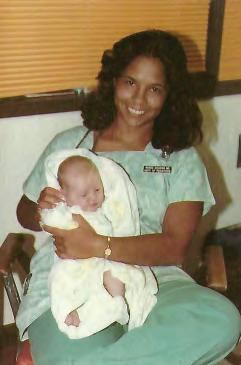
Pediatrician Stephen Fries, MD, named a Career Teaching Scholar in 2016, has cared for children and families in Boulder County for nearly 40 years. He was an active CFAC member, serving from 1982-1986 and 1992-2002. He’s pictured here with his former patient and School of Medicine Foundations of Doctoring program mentee Thomas Chau, MD, MBA, a graduate of the University of Colorado School of Medicine. Chau is one of several mentees who have asked Fries to perform hooding honors at their graduation ceremonies.
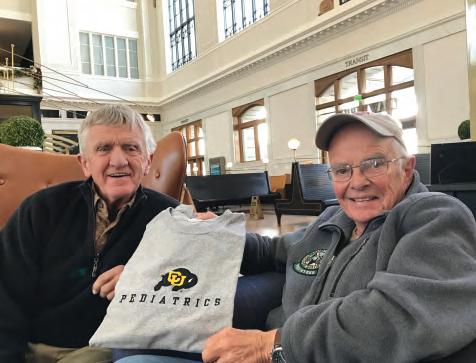
Gordon Blakeman, MD, (left) was a University of Colorado School of Medicine
Pediatrics resident and John Moyer, MD, (right) an intern when their paths crossed. Under Chair C. Henry Kempe, MD, Blakeman was the first resident to complete a continuity clinic rotation in a community pediatric practice—that of James Arthur, MD. Blakeman and Moyer were then based at the same post in Germany for their military service, returning to Denver to establish their career practices. Both also championed community and continuity clinic training for new pediatricians, as well as taking leadership roles on the Clinical Faculty Affairs Committee. Blakeman served on the CFAC from 1974–2000, chairing it from 1978–1991; Moyer was a CFAC member from 1977–2000. After retiring, Moyer was actively involved in recruiting preceptors for the Foundations of Doctoring program. Blakeman was named a Career Teaching Scholar in 1998 and Moyer in 2000.

152 DEPARTMENT OF PEDIATRICS FOUR PILLARS
Department of Pediatrics Chief Residents 1930-2018
Chief Residents are a vital part of the Department of Pediatrics’ clinical service and educational programs. They are selected by the Department to extend their required residencies to serve as leaders and mentors in the training of other residents. While today’s Chief Residency is typically for one additional year, earlier terms were often for six months.
Until the mid-1950s, The Children Hospital had its own residency training program; the names of those Chief Residents are noted in blue below. For a period of time in the 1960s, Children’s named no Chief Residents. The University and Children’s Hospital residency programs were then blended in 1969 and became a single program in 1972.
Prior to the affiliation of the University of Colorado Health Sciences Center and The Children’s Hospital, Chief Residents were typically based at a combination of Children’s, Colorado General and Denver General hospitals. The physicians whose names appear below served as Chief Residents at one or more of these hospitals.
The following list is based on best available records. The Department regrets any omissions or errors.
1930–1931 E. G. Anderson, MD
1931–1932 R. J. Groom, MD
1932–1933 John Law, MD
1933–1934 Donald MacLeod, MD
1934–1935 Francis Reynolds, MD
1935–1936 Jackson Sadler, MD
1936–1937 Kenneth Schmidt, MD
1937–1938 Maurice Vest, MD
1938–1939 George Frauenberger, MD
1939–1940 Joseph Lyday, MD
1940–1942 John Stull, MD*
1942–1943 Ann Martin, MD*
1942–1944 Lula Lubchenco, MD
1945–1947 John Connell, MD
1947–1948 George Nelson, MD
1948 Peter Hoch, MD
1948–1949 John Norman, MD
1949–1950 James Strain, MD
1950–1951 John “Jack” Githens, MD
Derrill Manley, MD
1951–1952 Paul Crellin, MD
Richard Johns, MD
Charles Kelsall, MD
1952 Richard Johns, MD
1952–1953 Paul Crellin, MD
William Mannschreck, MD
1954 William Mannschreck, MD
1955–1956 Richard Roos, MD
1955–1956 Donald Schiff, MD
1956–1957 William Bartlett, MD
Phyllis Huffman, MD
Ida Nakashima, MD
1958–1959 Donald Cook, MD
1959 Oliver Massengale, MD
1960 Joseph Brazie, MD
1960–1961 Paul Huchton, MD
Harvey Klevitt, MD
David Pearlman, MD
Clifford Skinner, MD
1962–1963 Donald Dean Gillespie, MD
Jose Roman, Jr., MD
Richard Thompson, MD
Jon Tingelstad, MD
Paul “Nick” Tschetter, MD
1965–1966 Leroy Even, MD
Richard Greer, MD
Berkeley Rich, MD
1966–1967 Ronald Gotlin, MD
James Miller, MD
Marilyn Mull, MD
1967–1968 Gordon Blakeman, MD
James Hecker, MD
James Humbert, MD
Owen Patrick O’Meara, MD
1968–1969 Michael Kurtz, MD
John Moyer, MD
Nicholas Tsoulos, MD
1969–1970 Thomas Boschen, MD
James Carland, MD
William Coyer, MD
Robert Prentice, MD
1970 Norman Scott, MD
1970–1971 Stephen Hirschfeld, MD
M. Douglas Jones, Jr., MD
Richard Krugman, MD
James Rothschild, MD
Paul Wernick, MD
Donald Wuori, MD
1971–1972 Michael Kappy, MD, PhD
Paul Kelker, MD
Ronald Meyer, MD
Wayne Myers, MD
Bruce Nagle, MD
Michael Simmons, MD
1972–1974 No Chief Residents were named as the Residency program was extended from two to three years.
1974–1975 Roger Barkin, MD
Paul Levisohn, MD
Anthony Philipps, MD
1975–1976 Stephen Berman, MD
Richard Molteni, MD
Cheryl Whitman, MD
1976–1977 Stefan Mokrohisky, MD
Richard Shiffman, MD
Joel Snyder, MD
1977–1978 Richard Schanler, MD
Randall Wilkening, MD
Gregory Wright, MD
153 DEPARTMENT OF PEDIATRICS FOUR PILLARS
*Dr. Stull was among the many physicians called to serve in the armed forces during World War II. Ann Martin, MD, from the University, was selected to serve the remaining term.
Department of Pediatrics Chief Residents 1930-2018, continued
1978–1979 Ivor Berkowitz, MBBCh
Daniel Terwelp, MD
Reginald Washington, MD
1979–1980 Vincent Di Maria, MD
Ian Ratner, MD
Ronald Sokol, MD
1980–1981 Steven Block, MD
William Nichols, MD
Kurt Stenmark, MD
Sylvia Villarreal, MD
1981–1982 Jane Burns, MD
James Fasules, MD
Peter Lane, MD
Robert Mauro, MD
1982–1983 Steven Abman, MD
Donna DiMichele, MD
Kevin Murphy, MD
1983–1984 Peter Margolis, MD
Craig Schramm, MD
Robert Truog, MD
1984–1985 Michael Clemmens, MD
Stuart Gold, MD
Loretta Ortiz y Pino, MD
1985–1986 Karen Carlson-Des Prez, MD
David Elkayam, MD
Steven Marsocci, MD
1986–1987 Jeffrey Brown, MD
Daniel Feiten, MD
Kathleen Gutierrez, MD
1987–1988 Jeffrey Baker, MD
Molly Burchell, MD
Tammie Hand, MD
1988–1989 Nancy Carlson, MD
Dorothea Jenkins, MD
Robert St. Peter, MD
1989–1990 Brenda Huffman, MD
Dale Steele, MD
Mary Zavadil, MD
1990–1991 Peter Aldoretta, MD
Kenneth Cohen, MD
John Volinsky, MD
1991–1992 Maya Bunik, MD
Steven Gordon, MD
Jennifer Kempe-Biermann, MD
1992–1993 Tyler Schmidt, MD
Debra Singer, MD
Andrew Sirotnak, MD
1993–1994 Nolan Lassiter, MD
Kelly Maloney, MD
Spyridon Papadopoulos, MD
1994–1995 Marsha Anderson, MD
Thomas McIntee, MD
Sandra Meech, MD
1995–1996 Mark Anderson, MD
Holly Urban, MD
Laura Ramsey, MD
1996–1997 John Bosley, MD
Sorenna Kirkegaard, MD
Shale Wong, MD
1997–1998 Sara (Canfield) Carpenter, MD
Michelle Myers, MD
Jennifer Soep, MD
1998–1999 Matthew Daley, MD
David Gremmels, MD
Tamara Kusek, MD
1999–2000 Lalit Bajaj, MD, MPH
Barbara Calkins, MD
Jason Weinberg, MD
2000–2001 Roopal Patel, MD
Michelle Stanford, MD
Amethyst Werstein, MD
2001–2002 Sonja (Burbano) O’Leary, MD
Danielle Smith, MD
Pamela Zachar, MD
2002–2003 Andrea Christoff, MD
Laurel Pramuk, MD
Stephanie Stevens, MD
2003–2004 David Brumbaugh, MD
Allison Dorbandt, MD
Alison Yager, MD
2004–2005 Eric Austin, MD
Callie Black, MD
Katie McPeak, MD
2005–2006 Margaret Lueg, MD
Brian Stanga, MD
Heather Varnell, MD
2006–2007 Cassidy Delaney, MD
David Kane, MD
Giles Robinson, MD
2007–2008 Christine Jelinek, MD
Daniel Searing, MD
Amy Shriver, MD
2008–2009 Theodore Laetsch, Jr., MD
Michelle Mills, MD
Colleen (Wood) Muzynoski, MD
2009–2010 Adam Green, MD
Anna-Lisa Munson, MD
Courtney Stout-Paterson, MD
2010–2011 Carey Campbell Williams, MD, MPH
Joel Hudgins, MD
Sarah Morse, MD
2011–2012 Aline Bernard, MD
Lauren Gainor, MD
Kathryn Walsh, MD
2012–2013 Ashley Lock, MD
Christopher Ruzas, MD
Lacey Sweigart, MD
2013–2014 Alison Montgomery, MD
Natalie Nokoff, MD
Alan Woodruff, MD
2014–2015 Stephanie Bourque, MD
Laurie Sherlock, MD
Paul Szefler, MD
2015–2016 Megan Kirkley, MD, MPH
Olivia (Lund) Hoffman, MD
Danielle (Plattenburg) Arnold, MD
2016–2017 Melisa Tanverdi, MD
Joshua Williams, MD
Laura Lockwood, MD
2017–2018 Lauren Anderson, MD
Shannon Flood, MD
Andrew Krack, MD
2018–2019 Elizabeth Beil, MD
Catherine (Clay) McClure, MD, MPH
Kristin Kalita, MD
154 DEPARTMENT OF PEDIATRICS FOUR PILLARS
Henry Silver, MD: “A true futurist”
Dr. Henry Silver joined the University of Colorado School of Medicine faculty in 1957, recruited by C. Henry Kempe, MD, chairman of the Department of Pediatrics. The two pediatricians’ paths appear to have crossed first at the University of California at San Francisco, where the former was an endocrinology resident and the latter a medical student on the pediatric service. They served together, again, at Yale University School of Medicine. Then, as Colorado colleagues for 30 years, they became known as “the two Henrys,” sharing a passion for the wellbeing of children and an exceptional gift for seeing past the present.
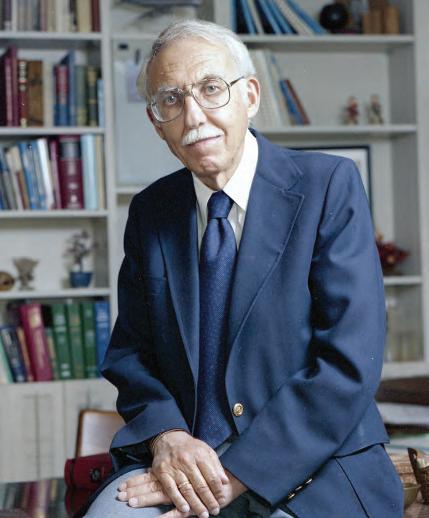
Many journal articles and newspaper features have recapped Dr. Silver’s diverse interests and contributions across his 49 years of practice. They have focused on his 1965 cofounding of the nation’s first nurse practitioner training with Dr. Loretta Ford, his 1968 launch of the Child Health Associate (now the Child Health Associate/
A LEADER IN HEALTH CARE
Dr. Silver and the University of Colorado soon became recognized nationally and internationally as leaders in the allied health care field. In 1966, he was invited to attend the signing of the Allied Health Professionals Personnel Training Act by President Johnson at the White House. In 1960, he received the Gustav Lienhard Medal for the Advancement of Health Care from the Institute of Medicine of the National Academy of Sciences.
Physician Assistant) program, and his 1970 introduction of the School Nurse Practitioner program. They have detailed his collaborative work with Dr. Kempe in bringing the harsh realities of child abuse and neglect to the foreground. And they have cited his research into abuse of medical students and its impact on physician training.
But it is a “Foundations of Pediatrics” article published in Advances in Pediatrics (2009) that most succinctly tells his story across all four of the Department’s pillars— clinical care, advocacy, research, and education. For it does so from the perspectives of six individuals who knew him well.
Andy Silver, MD, stated, “My father was the ultimate advocate for those most in need. He always strove to help improve the lives of children, be they undergrown, maltreated or undertreated. Many of the programs or individuals (he) advocated for were often controversial, but I must admit, as he would, that he loved a good intellectual fight.”
Fellow endocrinologist Ronald Gotlin, MD first encountered Dr. Silver in 1962 as a third-year medical student in his first clinical year. “His contributions to academic pediatrics and health care were many, and he published over 120 articles in various pediatric fields.” Of these, Dr. Gotlin cited three publications specific to endocrinology: his 1953 description of what is now known as Silver-Russell syndrome; his 1958 paper associating long-standing primary hypothyroidism with precocious puberty; and his 1967 description of “deprivational dwarfism.”
Ruth Kempe, MD, and Donald Bross, JD, PhD, described the “totally supportive and noncompetitive” relationship of “the Two Henrys” as key to their heightening pediatricians’ awareness of child abuse and neglect. Their first paper on the subject was printed in 1959 in abstract only. In 1962, their landmark “Battered child syndrome” work—coauthored with Drs. Frederick Silverman, Brandt Steele and William Drogemueller—was published in the Journal of the American Medical Association. These coauthors’ perspective ended with an excerpt from the 1984 letter written
155 DEPARTMENT OF PEDIATRICS FOUR PILLARS
by C. Henry Kempe thanking his old friend for having nominated him for the Nobel Peace Prize: “You did accomplish, and are still doing so much, that only now the full implications of what you have begun in health care are being felt—and it has revolutionized child care at all levels, by many professionals.”
Richard Krugman, MD, retired as the longest-serving dean in the history of the University of Colorado School of Medicine. Anita Glicken, MSW, is past director of the School’s CHA/PA program. They specifically cited Dr. Silver’s having been instrumental in moving the Child Health Associate Act through the Colorado legislature. “The Act was the first in the United States to establish a framework for certification of an allied health professional, a nonphysician, to practice pediatric. This groundbreaking legislative process became the precursor to many subsequent state practice acts.”
They continued, “In 1981, Henry became Associate Dean for Admissions at the University of Colorado School of Medicine, and he held this post for 12 years until his death. He completely changed the face of the School’s graduates by admitting large numbers of women minorities, and middle-aged students who came to medical school after having had previous careers.” In 1984, he and Donna Rosenberg, MD, coauthored one of the first studies of medical student abuse, followed by “Medical student abuse: incidence severity and significance” coauthored with Glicken and published by the Journal of the American Medical Association in 1990.
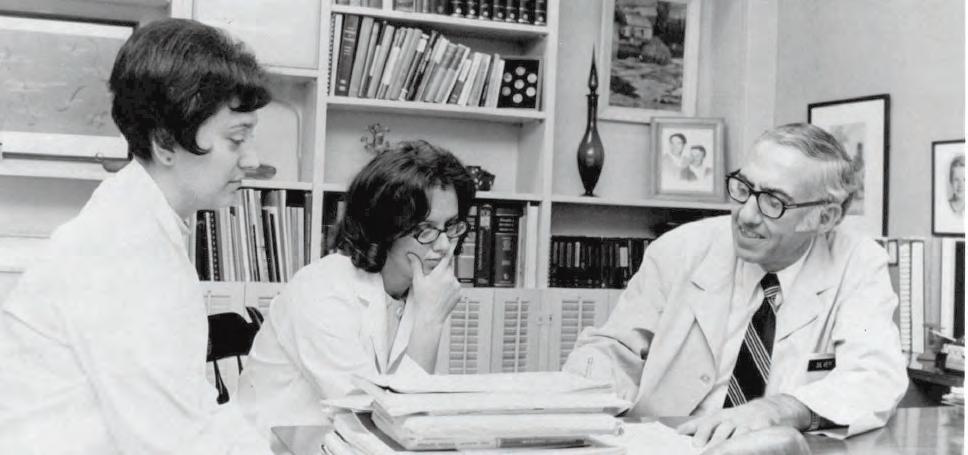
Dr. Silver died in 1991, “still envisioning new models of health care delivery and better ways to educate students.”
 “The Two Henrys”—Dr. Henry Silver and Dr. C. Henry Kempe From its founding in 1968 through 2018, the University of Colorado School of Medicine Child Health Associate/PA program has graduated nearly 1200 advanced practice providers. Above, Dr. Silver meets with students of one of the first classes.
“The Two Henrys”—Dr. Henry Silver and Dr. C. Henry Kempe From its founding in 1968 through 2018, the University of Colorado School of Medicine Child Health Associate/PA program has graduated nearly 1200 advanced practice providers. Above, Dr. Silver meets with students of one of the first classes.
156 DEPARTMENT OF PEDIATRICS FOUR PILLARS
Henry Silver, MD: “A true futurist”, continued
Academic and Faculty Affairs
By the close of 2018, Department of Pediatrics faculty totaled 800-plus. The Office of Academic and Faculty Affairs’ support services and career guidance role now encompassed:
Career Development Well-being and Resilience
Mentoring Faculty Resources
Promotion and Tenure Faculty Working Groups
Professionalism (supporting career development
Diversity, Equity, and Inclusion and inter-professional collaboration)
LEADERSHIP
In late 1990, as initial steps were taken towards a formal affiliation between the University of Colorado Health Sciences Center and The Children’s Hospital, full-time faculty for the Department of Pediatrics numbered 250. Department Chair M. Douglas Jones, Jr., MD, asked Gerald Merenstein, MD, to serve as the first vice chair for Academic Affairs. “Jerry was terrific and the person who set the standard,” Jones states. Merenstein was succeeded in 1997 by Harley Rotbart, MD, who guided the office’s services and programs for 17 years—a time that spanned the relocation of The Children’s Hospital to the Fitzsimons Medical Campus and major departmental expansion.
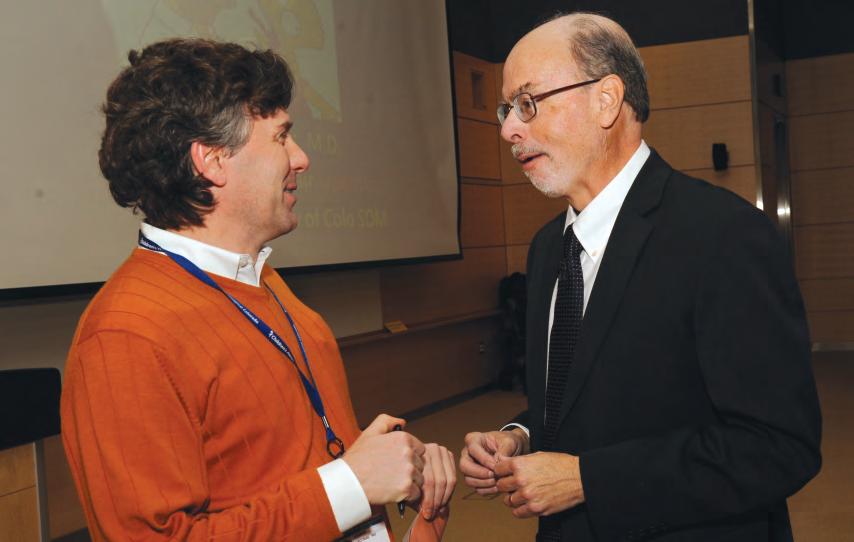
Andrew Sirotnak, MD, earned his medical degree from Jefferson Medical College, Thomas Jefferson University and completed a Pediatric residency at Jefferson Medical College/duPont Hospital for Children before coming to the University of Colorado. After serving as a Chief Resident for Pediatrics, he completed his fellowship in Child Abuse Pediatrics with the University of Colorado/Children’s Hospital program. Medical Staff President of Children’s Hospital Colorado (2010-2012), he was awarded the Kempe Center’s Professional Award (2012) after serving as interim section head and director of the Kempe Center for two years. In 2016, he was honored with the Award for Outstanding Service in Educational Excellence from the American Academy of Pediatrics’ Subcommittee on Child Abuse and Neglect.
Andrew Sirotnak, MD Vice Chair for Faculty Affairs, Department of Pediatrics

157 DEPARTMENT OF PEDIATRICS FOUR PILLARS
Faculty Affairs mentorship in action: Current Vice Chair Andrew Sirotnak, MD, and past Vice Chair Harley Rotbart, MD
Academic and Faculty Affairs, continued
LEADERSHIP, continued
Mark Abzug, MD Vice Chair for Academic Affairs, Department of Pediatrics

Mark Abzug, MD, earned his medical degree from Boston University School of Medicine. He completed his residency in Pediatrics at the Strong Memorial Hospital/University of Rochester and his fellowship in Pediatric Infectious Diseases at the University of Colorado School of Medicine (University Hospital and The Children’s Hospital). In 2002, he was awarded The Children’s Hospital Outstanding Service Award. Abzug was named associate vice chair for Academic Affairs in 2013 and vice chair in 2018.
Commitment to Equity and Provider Wellness
GENDER EQUITY
Nancy Krebs, MD Associate Vice Chair for Academic Affairs, Department of Pediatrics
Nancy Krebs, MD, earned her medical degree from the University of Colorado School of Medicine, where she continued for residency and fellowships in Gastroenterology and Pediatric Nutrition. Section Head of Pediatric Nutrition since 1998, she chaired the Promotions Committee (2006-2014), served as vice chair for Academic Affairs (2014-2018), and associate vice chair (2018-present).
In 2010, University of Colorado Department of Pediatrics faculty Harley Rotbart, MD, Heather Taussig, PhD, and Stephen Daniels, MD, PhD, with Human Resources specialist Deborah McMillen, began a deep dive into departmental equity. Their goal: to determine the extent of gender inequity in a large academic pediatrics department and to demonstrate an assessment methodology other departments can use. Their findings—“Assessing Gender Equity in a Large Academic Department of Pediatrics,” published in Academic Medicine (Vol. 87, No. 1, January 2012)— have been cited numerous times as discussion of equity issues have intensified nationally. Vice Chair of Academic Affairs at the time of publication, Rotbart notes, “It has been very gratifying to see other departments across the country adopt this methodology, bringing fairer treatment to their faculty in all aspects of their careers.”
Mary Glodé, MD, one of the Department of Pediatrics’ first tenured female professors, adds: “The study certainly impacted a number of subsequent Section decisions in our department. It also encouraged other departments, locally and around the country, to examine their data.”
–Pediatrics, November 2019, 144 (5)
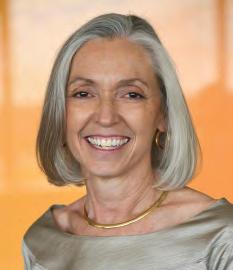
“In pediatrics in 2017, women comprised 72.3% of residents, 63.3% of physicians in practice, and 57.4% of academicians.”
158 DEPARTMENT OF PEDIATRICS FOUR PILLARS
DIVERSITY
In 2015, the University of Colorado School of Medicine revised its comprehensive Diversity Plan to address six strategic goals: Admit qualified students and appoint qualified residents, fellows, faculty, staff, and senior administrative leaders who represent diversity, focusing on the specific diversity categories outlined in the Diversity Plan.
Promote the academic advancement and success of minority students, house officers, and faculty.
Enhance cultural, bilingual, and diversity instruction throughout the curriculum. Break down racial, gender, and ethnic stereotypes and promote cross-cultural understanding and an inclusive climate.
Strengthen outreach to underserved communities, through service and learning projects, health care outreach, and community-based participatory research. Promote unexplored research agendas and new areas of scholarship related to cultural and racial inequities in health and health care.
The Department of Pediatrics not only aligned its ongoing actions accordingly, but began investigating other avenues for greater diversity. In 2018, pediatrician Brandi Freeman, MD, was named Director of Diversity and Inclusion. A graduate of Baylor College of Medicine, Freeman completed her Pediatrics residency with the Johns Hopkins University School of Medicine Program. She joined the University of Colorado and Children’s Hospital Colorado in 2013 as an attending
physician in the Child Health Clinic and served as the faculty liaison for Diversity in Pediatric Resident Education and Recruitment.
Freeman has been a mentor for the Tour for Diversity in Medicine since its inception in 2012 and was a founding member of the University of Colorado Organization for Racial and Ethnic Support Steering Committee. She also served as vice speaker of the House of Delegates of the National Medical Association and vice president of the Mile High Medical Society.
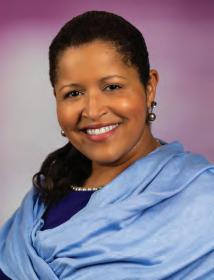
NECESSARY TO EXCEL
“The establishment of my role was the commitment of our department to do the hard work that was necessary to excel in diversity and inclusion. It was a statement of our willingness to accept the challenge to change, to look in the mirror, and admit that we could be better.”
–Brandi Freeman, MD Director of Diversity and Inclusion
159 DEPARTMENT OF PEDIATRICS FOUR PILLARS
The Pediatrician and The Public
In 1951, Harry Gordon, MD, (Department Chair, 1947–1952) authored this article for Pediatrics. Current Department Chair Stephen Daniels, MD, PhD, notes, “Dr. Gordon’s perspective on the relationship between the medical school and the community it serves remains relevant nearly 70 years later. It crystalizes so many of the key issues we continue to face. He also suggests that while our focus on specific disease entities may change, many of the fundamental issues related to health, public health, and education of medical students and residents do not. The need to cobble together resources to create new solutions also remains the same. It is well worth reading.”
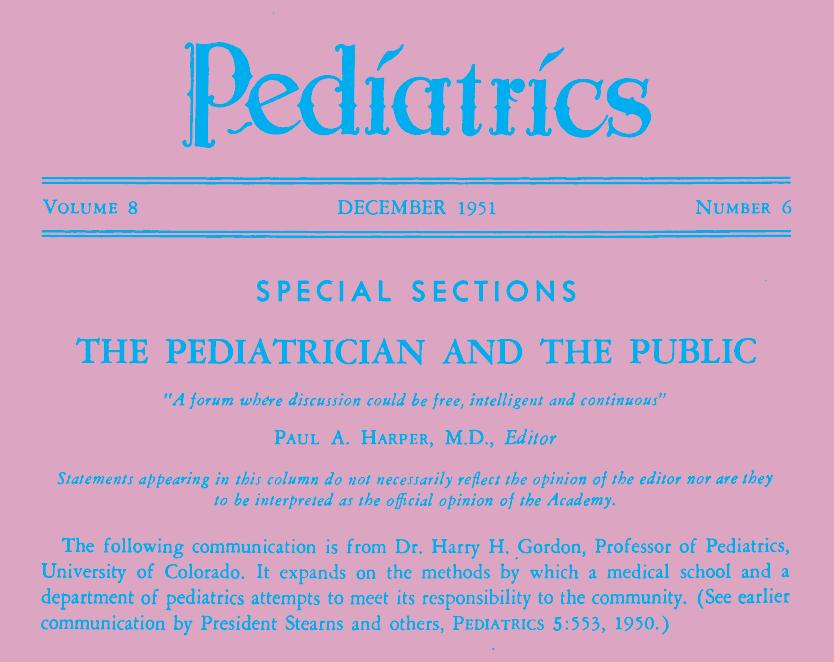
Reprinted with permission of the American Academy of Pediatrics.
Community Needs and a Medical School Program *
By Harry H. Gordon, M.D.
Itis my purpose this morning to describe some facets of the program at the University of Colorado School of Medicine, the development of which has been conditioned by the needs of our community, i.e., of Denver and of Colorado.1
A word is in order about some of the local stimuli to these developments.
First, Dean Ward Darley and President Robert L. Stearns point out that as a state-supported institution we bear a special obligation to meet the varying needs of both rural and urban Colorado. Second, members of the faculty have participated actively in the reorganization of the Department of Health and Hospitals of Denver since 1947.2 Third, under the guidance of Dr. Alfred H. Washburn, the Child Research Council of Denver has for the past 20 years been making a multidisciplined study of the factors influencing human growth and adaptation.
Fourth, from the Department of Philosophy on the Boulder campus comes Professor David Hawkins to tell us that the Hippocratic vision of medicine is of a “science extending far beyond the boundaries of the organism and including the investigation of whatever touches upon human health and welfare.”3
Finally, because our practice at the medical school is at present limited to the medically indigent, we have daily examples of our need to concern ourselves with social factors.
According to a count made in early 1950, there were over 60 projects, each of which involved one or more units of the University of Colorado Medical Center and one or more community agencies.1 I should like to discuss this morning some changes in our undergraduate and graduate curricula, and then certain activities of the Department of Pediatrics.
160 DEPARTMENT OF PEDIATRICS FOUR PILLARS
*From the Department of Pediatrics, University of Colorado Medical School, Denver. Presented at the annual meeting of the alumni of the Cornell University Medical College, April 21, 1951.
The changes in our undergraduate curriculum represented in part a long overdue increase in emphasis on case teaching, and in part a focusing on the effects of social and emotional factors on the response of persons to stress. I would like to remind you, particularly if you resent some of the newer jargon of these old concepts, that Dr. William Osler had as one of his mottoes, “Nihil humani a me alienum puto,” that Dr. Francis Peabody 4 and Dr. Henry B. Richardson5 have written well on the subject, that Dr. Lewis Conner, late Professor of Medicine at Cornell, had time on ward rounds to inquire from the Bowery derelict concerning the adequacy of his care in the New York Hospital, that a great physician like Dr. Grover Powers of Yale teaches “comprehensive medicine” not only by his sensitive understanding of human behavior, but quite as much by the precept of his genuine interest in people as people, that when Dr. James Ewing introduced a lecture in pathology to Cornell students with the phrase, “Variations is our theme,” he was teaching respect for individuality. This is the Magna Charta for children which Freud taught,6 this is in Thomas Jefferson’s writings, this is the Golden Rule of Leviticus, Chapter 19, verse 18.
The peculiar changes in our curriculum stemmed from the acceptance of the faculty, in greater or lesser degree, of Dean Darley’s concept that the needs of Colorado make our primary responsibility the training of men and women for general rather than specialty practice. This led to radical operations on the curriculum. Lectures and demonstrations by specialists were cut markedly, and clinical clerkships were divided among four major departments—Medicine, Surgery, Obstetrics and Gynecology, and Pediatrics. Clerkship time in the medical and surgical specialties was made the responsibility of the Departments of Medicine and Surgery, and the teaching of psychiatry and public health became integral parts of the four major clerkships. In pediatrics, e.g., time is given during the senior clerkship for
home visits with public health nurses under the supervision of a member of the Department of Public Health and Preventive Medicine, and there is extensive case teaching of pediatric clerks by members of the Division of Mental Hygiene of the Department of Psychiatry. When a child with typhoid fever is presented at the weekly pediatric clinical conference, differential diagnosis and modern therapy are discussed. But in addition, a member of the Department of Public Health and Preventive Medicine who regularly attends these sessions produces the public health nurse who visited the family when the case was reported to the City Health Department, and the sanitary engineer who subsequently pronounced the home unfit for habitation. And it is pleasing to have a member of the audience want to know who took the responsibility for helping the dispossessed family find a new home and then to have a discussion of the responsibility of the city to provide good sewage facilities regardless of the tax value of the property. Or, for another child, the emotional implications of crippling are given as much discussion as the diagnosis of osteogenic sarcoma.
In the preclinical sciences, there was an across-the-board 10% cut in hours to permit introduction of integrating courses such as Dr. Washburn’s “Medicine as Human Biology” and courses in psychobiology. Needless to say, there have been problems of adjustment and adaptation on the part of the faculty, but as we learn to live together the resentments either diminish or become repressed. Their occasional emergence in times of stress—the legislature just raised havoc with our budget—indicates that healing is not yet complete.
We hope during the next academic year to start a general medical or family clinic for the indigent of Denver at the Denver General Hospital. The head of this clinic will be either an internist or pediatrician, and his staff will consist of internists, pediatricians, and general practitioners with readily available consultative services. Third- and fourth-year students will be released one-half day each week
161 DEPARTMENT OF PEDIATRICS FOUR PILLARS
The Pediatrician and The Public, continued
throughout the third and fourth year, regardless of their block clerkship assignment, to work in this general clinic, in which they will be responsible for continuing out-patient, in-patient, and home care for a two-year period. The importance of establishing this clinic was recognized early by the Pediatric Department, since care for the children admitted to Denver General Hospital has been of limited value when their parents could not obtain similar care.
We have an active training program of three years beyond the internship for general practice residents. This has included 9 months of internal medicine, 3 months of pediatrics, 1 year of surgery, including emergency room, 6 months of obstetrics and gynecology, 3 months of electives and 3 months in a rural hospital. Excellent men and women have come to fit themselves for individual practice in smaller communities. Recently, we have discussed means of cutting down the total time required, especially for those trainees who plan to do general practice in larger communities in which aid from specialists is available.
The Pediatric Department has been willing to take as many general practice residents as are assigned to us, provided we keep a sufficient number of specialty residents, particularly in the second- and third-year categories, to assure the quality of care given our patients. We have welcomed the general practice residents because the major part of the medical care of children in Colorado, as in the United States, is being given by general practitioners.7 They have, on the whole, proven mature, responsible residents and have brought a broad point of view to their service. We regret that they spend only three months with us because such a short term, as in all rotating services, interferes with continuity of care and experience.
We have also had the responsibility for rotating interns, trainees who spend six weeks or two months of a one-year rotation on the pediatrics service. We are glad to teach them what we can but have considerable doubt as to the wisdom of
any one-year training program. Some of these interns go into general practice after a single year—they have learned just enough to be willing to try to do things for which they are not qualified. One becomes tired of hearing that we must keep a one-year rotating internship because various state boards require it for licensure. Standards of education can hardly come from boards of examiners seeking only some common, usually minimal, denominator as a criterion of suitability for practice.
I should like now to describe four pediatric activities, the development of which has been determined by community needs. When I was an intern in pathology at the Montefiore Hospital, Dr. David Marine, then Director of Laboratories, stated that he had chosen the thyroid gland for his research activities in Cleveland because at the time “even the dogs in Cleveland had goiter.” We have had similarly urgent problems.
In 1946, 900 cases of poliomyelitis were reported in Colorado, the equivalent of 12,000 cases for New York State. Because of the hysteria which usually attends such an outbreak, the hospital facilities of Denver, both private as at the Children’s Hospital, and state-supported as at the Colorado General Hospital, were swamped. The National Foundation for Infantile Paralysis gave yeoman help, both financially and professionally. In August 1946 the Medical Director of the National Foundation suggested the establishment of a program for teaching technical personnel at the University of Colorado to meet the needs of the Rocky Mountain area. A five-year grant from the National Foundation permitted us to develop a teaching team consisting of a full-time pediatrician, physiotherapist, orthopedic nurse, social worker, and a part-time orthopedist and otolaryngologist. Their chief function has been to give instruction to personnel for care of most poliomyelitis patients in their own communities. Some benefits of decentralization of care are as follows: one eliminates the possibly deleterious effects to the acutely ill patient of stress incurred in transportation and spares him the anxiety of separation from family and family
162 DEPARTMENT OF PEDIATRICS FOUR PILLARS
physician; the community keeps responsibility both for care in the acute phase and in rehabilitation; the facilities of the urban medical center are kept for the more seriously paralyzed patients who require extensive physiotherapy or respirator care.
If such a program is to be effective the state and local chapters of the National Foundation must assure local facilities for care during the acute phase, while the State Health Department, through its Division of Crippled Children, takes over the burden of care after the acute phase, at least for those medically indigent patients under 21 years. With the increasing load of chronic cases, the need of added funds for both the state crippled children’s services and the National Foundation is obvious.
Since July 1947 instruction has been given both at the medical school in Denver and in smaller communities of Colorado, New Mexico, and Nebraska. Direct epidemic aid in hospital services has been given in Idaho, Texas, Missouri and Arkansas. In 1946, 33% of 900 cases of poliomyelitis reported in the state were admitted to Colorado General Hospital, we shall see whether a smaller percentage comes to us this year, in which the occurrence of 38 cases in January, February and March indicates that we may again have a heavy incidence. We are happy to report that from Fort Collins, a community of 18,000, 65 miles from Denver, only 2 of 16 cases this year have been moved to Denver, because local personnel have assumed responsibility.
The second facet we wish to discuss is our program for premature infants, a joint undertaking of the Colorado State Department of Public Health and the University of Colorado, with support from the U.S. Children’s Bureau. For some years the State Health Department had known that the mortality rate for prematurely born infants was higher in Colorado than the national average. In late 1946 we agreed to allot space in our Pediatric Department at Colorado General
Hospital for a teaching unit. Before opening the Center, approval was sought from the Public Policy Committee of the State Medical Society. This was obtained with some difficulty, partly because of suspicion of our aims, partly because federal funds were to be used for support. The first suspicion was based mostly on worry that a system would be instituted like that in Chicago; namely, compulsory, immediate reporting of every premature birth with transfer to board of health approved facilities. Reassurance was accepted when we pointed out that we were interested in a unit only large enough to permit training of personnel for service in other hospitals and that our space problem would limit its size to 20 beds.
This left us with the touchy problem of using federal funds, particularly since we could not get them unless there was no means test. On the other hand, the Children’s Bureau representatives pointed out to us that since the funds were from taxes, everyone was entitled to their benefits; on the other hand, there was the similarly valid view that anyone who could afford to pay for hospital care should do so. We compromised with the stipulation that there would be no means test for admission to the premature unit but that we would take no patients unless they were properly referred by a physician, which is one sort of means test, or by a public health nurse, which is another sort of means test. This spared us the cost of social investigations, and over a period of four years the unit has become accepted. At no time has there been anything other than cooperation from the State Health Department and the U.S. Children’s Bureau in trying to attain the standards of care we all want. Analysis of our experience has given the Bureau data to help other states in planning their programs.⁸
From the beginning the project has been considered a joint responsibility of both the Departments of Obstetrics and Gynecology and of Pediatrics. Members of the Department of Obstetrics and Gynecology found that premature births constituted 18% of the live births at Denver General Hospital instead of the
163 DEPARTMENT OF PEDIATRICS FOUR PILLARS
The Pediatrician and The Public, continued
customary 5 to 10%, and that 40 to 60% of the mothers had never had a single prenatal visit. The Division of Maternal and Child Health of Denver has taken on the responsibility for improving antenatal care for the indigent women of Denver and will try to decentralize antenatal clinics, a well-established practice for well-baby clinics. There is also the problem of health education, of how to translate the need for antenatal care into a desire for such care by our underprivileged Spanish American minority, even if facilities are provided. A grant from the Russell Sage Foundation permits a sociologist from the University of New Mexico to join our medical faculty in July, 1951; we are counting on him for help.
Dr. Taylor and his co-workers have shown that the mortality rate in prematurely born infants is five times greater in complicated pregnancies or labors than in uncomplicated ones.⁹ From this has come a logical extension of the premature project to include not only 20 beds for infants, but also three obstetric beds to permit earlier hospitalization of indigent women with complications of pregnancy which may lead to premature birth. The consultative services given to the State Department of Health by a member of the Department of Obstetrics have helped keep these beds full.
For the state at large, the Health Department has provided incubators at strategic points, and instruction has been given concerning transportation of infants to places where more adequate facilities are available.1⁰ The State Hospital Consultation Division has helped to improve the nursery facilities for full term infants, since if these meet high standards, 70% of prematurely born infants can be taken care of at the place of birth. Finally, because there is real hope that prematurity can be prevented, or at least its degree mitigated, at the income level of the patients with whom we work, the strengthening of local public health units with resultant improvement in antenatal care becomes a most important part of the program.
It is obvious that as we have gone along gleaming incubators, oxygen tanks, and masked nurses have had to move over and make room for less specialized and less glamorous but equally important aspects such as good local public health units, better antenatal care, and good nurseries for full term infants.
A third portion of our pediatric program which has developed in response to community needs has to do with the provision of pediatric consultative services to the State Health Department. Similar working combinations have been made by the latter with the Departments of Obstetrics, Psychiatry and Medicine.
Since September 1947 Dr. John A. Lichty, Associate Professor of Pediatrics, has served as pediatric consultant to the State Health Department. He gives consultative help in their well-baby and crippled children’s clinics, participates in their teaching of both lay and professional groups, brings the view of a clinician to the administrators charged with program planning, and provides close liaison between the Health Department and the Department of Pediatrics. He works regularly in the clinics and wards of the Colorado General Hospital, and our contract states that he must do so in order to maintain his clinical skills. Since health departments are taking increasing responsibility for medical care programs, and this is generally acceptable at least for the indigent, I wish that administrators would see the need for maintaining clinical contacts for their professional personnel, and this in all echelons. One-half day’s work weekly in a clinic listening to and helping patients is the leaven which will help prevent administrative gaucheries and improve the “tolerance for frustration” that Whitehorn has noted as one attribute of the well-integrated personality. This sense of frustration is apt to develop in people trained for direct health services and then thrown more and more into administrative duties either in agencies or institutions.
The pediatric consultant has the further responsibility of our pediatric postgraduate educational program. Short courses similar to those in many medical
164 DEPARTMENT OF PEDIATRICS FOUR PILLARS
schools have been given for what they are worth. A San Francisco colleague reminded me that the bright lights of the city had quite as much to do with attendance at postgraduate courses as the bright lights of the medical school. One type of decentralized teaching that has seemed fruitful is at St. Francis Hospital in Colorado Springs, to which a pediatric resident is sent from the university for three months of his two-year residency, a system successfully used by other teaching centers.7
It was agreed that the attending staff must not exploit the resident solely for service and the St. Francis staff took the responsibility for teaching him. A member of the university faculty visits once weekly to participate in grand rounds and ward walks. Last year a one-day clinical conference was held at St. Francis Hospital, to which doctors from all over the state were invited. Patients, excellently studied by the St. Francis Hospital staff, were presented, and a sufficiently good time was had by all to warrant a repeat performance this year. The whole experience has proven worthwhile educationally for both the residents and practitioners, particularly since it is essentially on a case basis. The pediatric consultant to the State Health Department has been responsible for maintaining the quality of the contributions by the university to this attempt to improve pediatric care in a community outside of Denver.
The last item for discussion is a study of rheumatic fever which is being conducted by the Department of Pediatrics at the Denver General Hospital. A representative of the American Council for Rheumatic Fever called us in September 1950 to ask whether we could supply in one year 50 patients or more with active rheumatic fever to a cooperative study which was being planned by the American Heart Association and the U.S. Public Health Service. The purpose of the study was to determine the effect of early hormonal therapy on the course of
rheumatic fever, both during the acute stage and later. We joined up, and the study is serving as the stimulus for greatly improved follow-up care of Denver’s rheumatic children. The pediatric and social service divisions of Denver General Hospital, and the Divisions of Maternal and Child Health and of Public Health Nursing of the Denver Department of Health are all cooperating. And this is as it should be, since the Denver General Hospital and the Denver Department of Health are part of one Department of Health and Hospitals.
Now the development and continuation of all these activities leaves most of us breathless, and I must therefore conclude this presentation with a word of warning. The program of every medical school, be it private or public, aims to meet needs of the community.1 We contribute every day by the training of health service personnel, by supplying medical care of a quality which serves as a standard for the community, and by conducting research, both fundamental and applied.
In 1894 Dr. Osler gave an address at McGill entitled, “Teaching and Thinking, the Two Functions of a Medical School.”11
To this has been added service, both personal and community, and the demands for teaching and service always seem more urgent than those for research. But no one of these is more or less important than the others. A three-legged stool cannot stand on two legs; and yet, this concept of the adequacy of a two-legged stool is essentially what is implied in remarks that not all medical schools need be medical centers. These attacks on quality of education come from those who are simply not interested in facing squarely its cost, who have never by any past achievements given cause to be considered as educators, and to whom one has to pay some attention, only because the world being what it is, they have temporal power.
A more subtle interference with quality may come, however, wholly unintentionally from those educators who see the deficiencies in training supplied by some of our best medical schools, those with the strongest research faculties. They wish
165 DEPARTMENT OF PEDIATRICS FOUR PILLARS
The Pediatrician and The Public, continued
to put more emphasis on the needs for permeating the medical school curriculum with concern for the patient in relation to his social and emotional environment. The wise ones probably admit, at least to each other, that they are overstating their case in order to jog loose vested interests in well-established faculties. Because those disciplines which are concerned with emotional and social adaptation are relatively young, experienced, self-critical practitioners and teachers thereof are harder to find than in other fields. It becomes a source of real concern that the great demands for service in these areas and the satisfaction which comes from meeting them even partially may interfere with development of soundly critical attitudes of both our staff and medical students.
The immediate results in the community of some of the activities which we have described lend themselves to public exploitation—it is important therefore to remember Bertrand Russell’s recent statement, “The performance of public duty is not the whole of what makes a good life; there is also the pursuit of private excellence.”12
I have felt the need of ending this paper with words which may seem inconsistent only because it is so difficult in rapidly changing times to chart a balanced course.
REFERENCES
1. Darley, W., in Responsibility of medical school and medical profession to community, Pediatrics 5:560, 1950.
2. Kauvar, S.S., Florio, L., and Dixon, J.F., Health: Twenty years late, Am. J. Pub. Health 40:170, 1950.
3. Hawkins, D., On philosophy of medicine, Diplomate 20:191, 1948.
4. Peabody, F.W., Doctor and Patient, New York, The Macmillan Company, 1930.
5. Richardson, H.B., Patients Have Families, New York, The Commonwealth Fund, 1945.
6. Zweig, S., Mental Healers, New York, Garden City Publishing Company, 1932.
7. Better Medical Care for Children, American Academy of Pediatrics, Pediatrics 6:509 (Part 2) 1950.
8. Colorado Premature Infant Care Program, Denver Regional Staff, U.S. Children’s Bureau, March 15, 1950; Gordon, H.H., Some facets of Colorado premature infant program, Child 14:152, 1950.
9. Taylor, E.S., Phelan, J.R., and Dyer, H.L., Effect of obstetric difficulties and maternal disease on premature infant mortality, J.A.M.A. 141:904, 1949.
10. Cleere, R., Integration of public health services for prevention and care of prematurity, Rocky Mountain M. J. 48:33, 1951; Gordon, H.H., and Lichty, J.A., Colorado premature infant care program, ibid. 46:650, 1949.
11. Osler, W., Teaching and Thinking, Two Functions of Medical School, address given at McGill University Medical School, Oct. 11, 1894; Aequanimitas, with other addresses, Philadelphia, The Blakiston Company, 1932.
12. Russell, B., Authority and the Individual, New York, Simon & Schuster, Inc., 1949.
166 DEPARTMENT OF PEDIATRICS FOUR PILLARS
The Pediatrician and The Public: Community Needs and a Medical School Program

Harry H. Gordon Pediatrics 1951;8;841
Updated Information & Services
Including high resolution figures, can be found at: http://pediatrics.aappublications.org/content/8/6/841
Permissions & Licensing
Information about reproducing this article in parts (figures, tables) or in its entirety can be found online at: http://www.aappublications.org/site/misc/Permissions.xhtml
Reprints
Information about ordering reprints can be found online: http://www.aappublications.org/site/misc/reprints.xhtml
Online
The online version of this article, along with updated information and services, is located on the World Wide Web at: http://pediatrics.aappublications.org/content/8/6/841
Pediatrics is the official journal of the American Academy of Pediatrics. A monthly publication, it has been published continuously since 1948. Pediatrics is owned, published, and trademarked by the American Academy of Pediatrics, 345 Park Avenue, Itasca, Illinois, 60143. Copyright © 1951 by the American Academy of Pediatrics. All rights reserved.
Print ISSN: 1073-0397.

167 DEPARTMENT OF PEDIATRICS FOUR PILLARS
Pediatrics and Public Health: “Reciprocal Benefits”
John
Lichty, MD, Department
of Pediatrics Interim
Chair from 1952 to 1953, also served as Associate Director of the Colorado Department of Health from 1963 until his retirement in 1968. The adjacent American Journal of Public Health article, published in 1956 and reprinted here with permission, provides a pediatric-focused perspective of the mutual benefits flowing from the collaboration between medical schools and public health entities.
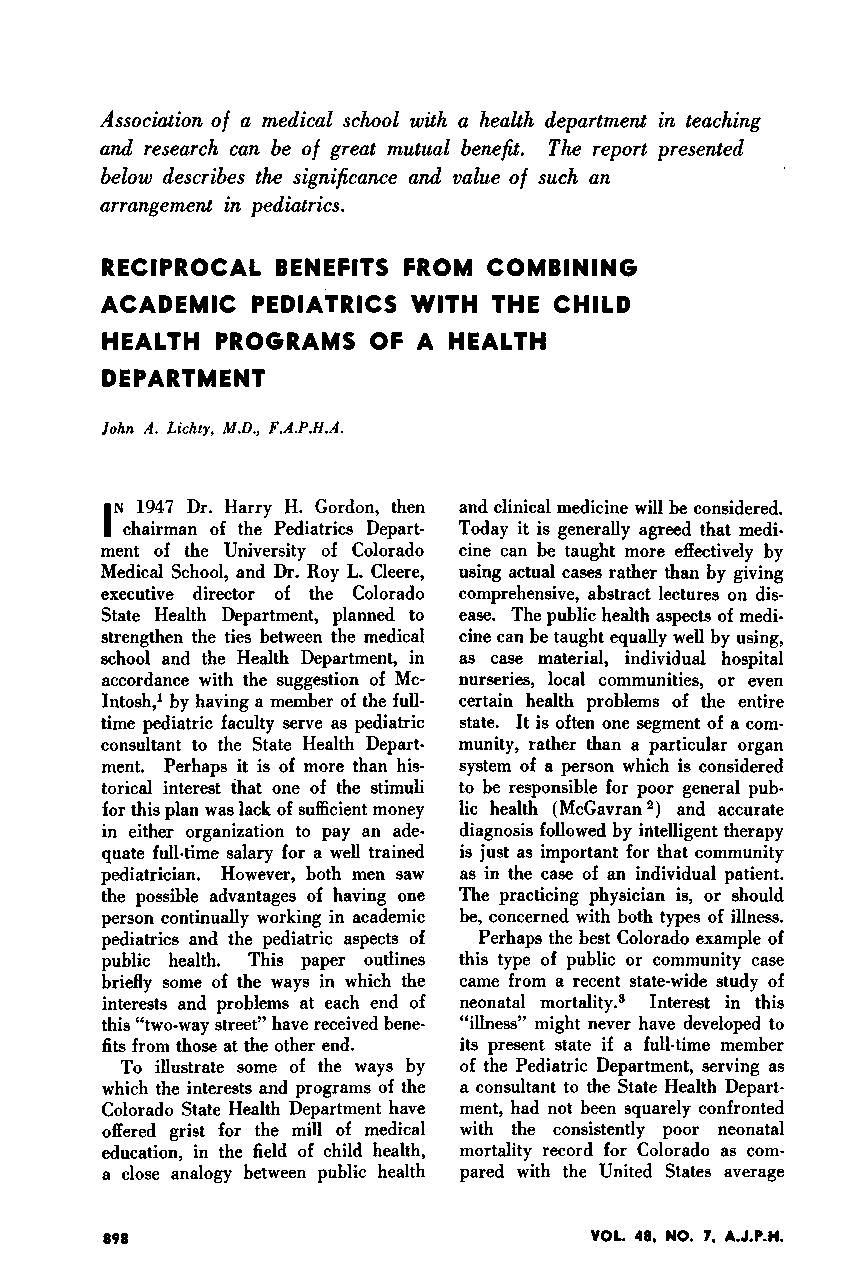
Nearly 70 years later, Department of Pediatrics faculty cite many areas of pediatric care furthered by joint efforts of Colorado’s School of Medicine and Department of Public Health & Environment, including: nutrition and obesity prevention; newborn testing for metabolic disorders, cystic fibrosis, vision and other congenital issues requiring early intervention; innovations in child health policy; gun safety; pulmonary care; and the development of school-based clinics.

168 DEPARTMENT OF PEDIATRICS FOUR PILLARS
“Finally, the leaders of state and county medical societies are much more willing to respect and approve public health suggestions affecting children which are known to have the direct backing of some responsible member of the pediatric faculty of a university.”

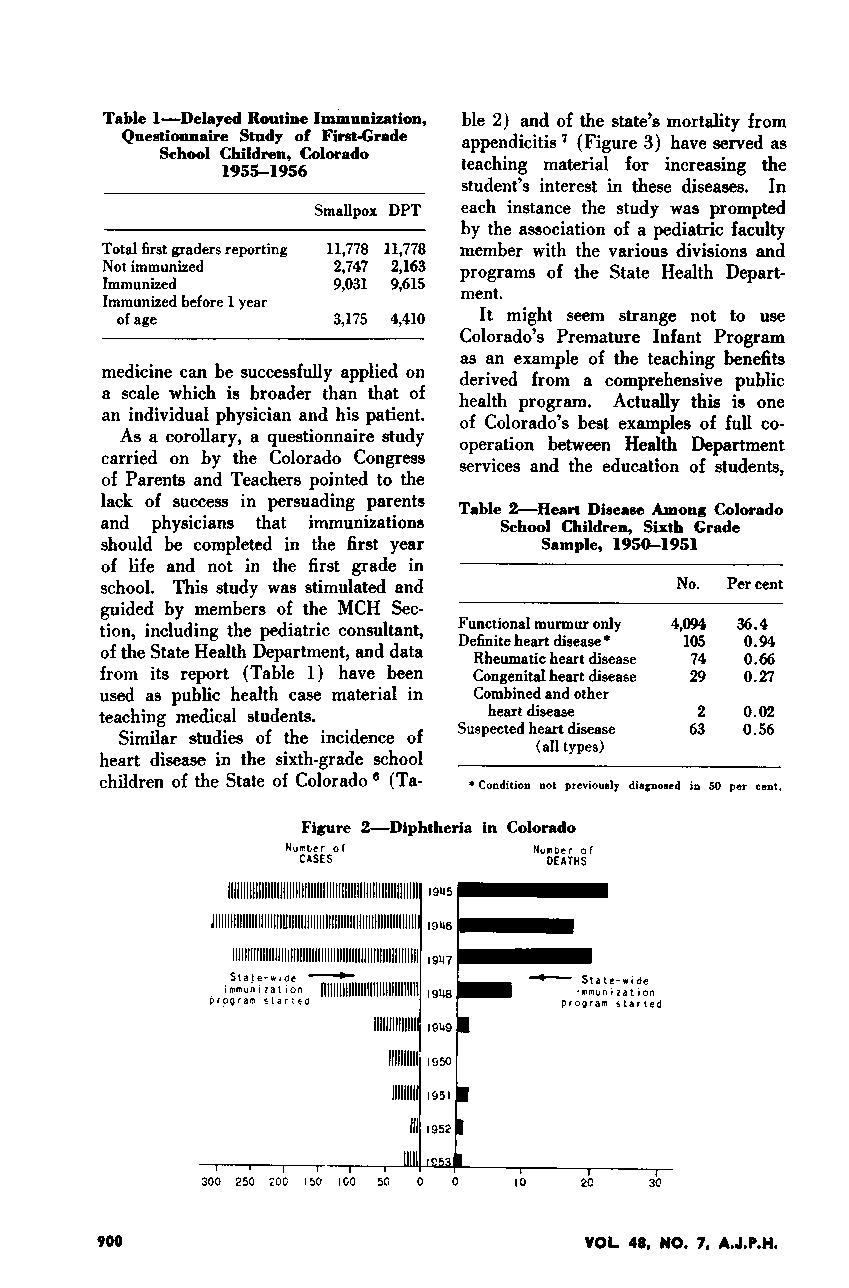
169 DEPARTMENT OF PEDIATRICS FOUR PILLARS
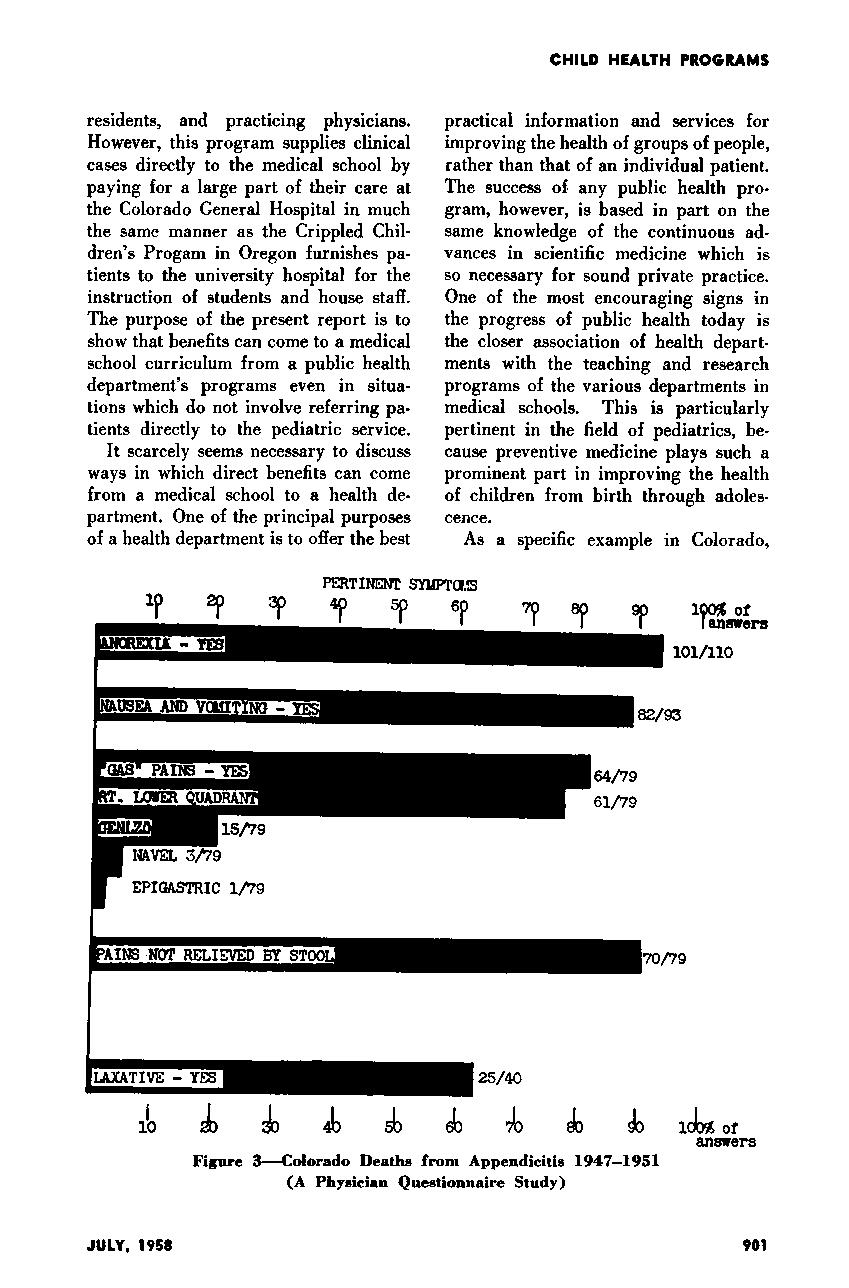

170 DEPARTMENT OF PEDIATRICS FOUR PILLARS
TRIBUTES
“History never looks like history when you are living through it.” –John W. Gardner
The history of the Department of Pediatrics is, at its heart, the story of men and women investing their day-to-day lives to improve the health of children. We pay tribute to the physicians, educators, researchers, advocates, and visionaries profiled here and the countless more whose care and contributions have changed pediatric medicine in powerful ways.
CONTENTS Career Teaching Scholars 172 Endowed Chairs 174 Profiles 176 Full-time Faculty 176 Community Faculty 199
171 DEPARTMENT OF PEDIATRICS TRIBUTES
CAREER TEACHING SCHOLARS AWARD
The Department of Pediatrics presents the Career Teaching Scholar Award to gifted teachers who have made outstanding contributions to pediatric education. Instituted in 1996, the award is accorded to both full-time faculty and clinical faculty.

Elected 2018
Sharisse Arnold-Rehring, MD
Ellen Elias, MD
Peter Knott, MD
Lindsey Lane, BMBCh
Elected 2017
Sorenna Kirkegaard, MD
Susan Niermeyer, MD, MPH
Julie Parsons, MD
Lynne Studebaker, MD
Elected 2016
Robin Deterding, MD
Emily Dobyns, MD
Stephen Fries, MD
Stephanie Stevens, MD
Elected 2015
Jerome Buckley, MD
Susan Pharo, MD
Adam Rosenberg, MD
Ronald Sokol, MD
Elected 2014
Brian Englund, PA-C
Debby Faes, CHA, PA-C
Ida Nakashima, MD
Jeffrey Wagener, MD*
Elected 2013
Gregory Arfsten, MD
Robert Brayden, MD
Allison Kempe, MD, MPH
Susan Merrill, MD
Elected 2012
Steven Abman, MD
David Manchester, MD
Norman Scott, MD
Sandra Hoyt Stenmark, MD
Elected 2011
Vincent DiMaria, MD
David Kaplan, MD, MPH
Sharon Langendoerfer, MD
Jody Mathie, MD
Elected 2010
Karen Leamer, MD
Jody Maes, MD
John Ogle, MD
Michael Schaffer, MD
Elected 2009
Daniel Feiten, MD
Richard Krugman, MD
Daniel Hall, MD
S. Allan Bock, MD
Elected 2008
Stephen Berman, MD
Joseph Craig, MD
M. Douglas Jones, Jr., MD, Chair of Pediatrics (left) and Richard Krugman, MD, Dean of the School of Medicine, (right) congratulate recipients of the inaugural Career Teaching Scholars Award in 1996: (L-R) Jules Amer, MD, James Arthur, MD, William Hathaway, MD, Taru Hays, MD, James Shira, MD, Bonnie Camp, MD, PhD, Frederick Battaglia, MD, and Arnold Silverman, MD.
172 DEPARTMENT OF PEDIATRICS TRIBUTES
Elected 2007
Keren Call, MD
Michael Kappy, MD, PhD
Michael Kurtz, MD
Steven Poole, MD
Elected 2006
Frank Accurso, MD
Francesco Beuf, MD*
Jay Markson, MD
Gerald Merenstein, MD*
Elected 2005
M. Douglas Jones, Jr., MD
Robert Mauro, MD
Judith Sondheimer, MD

Lee Thompson, MD
Elected 2004
Ronald Meyer, MD
William Weston,MD
Elected 2003
Mary Andresen Arthur, MS, PA-C
Max Elliott, MD
Mary Glodé, MD
James McGinnis, MD
Wallace White, MD*
Elected 2002
Barton Schmitt, MD
Paul “Nick” Tschetter, MD
Elected 2001
Jacinto Hernández, MD, MHA
J. Roger Hollister, MD
Stefan Mokrohisky, MD
James Strain, MD
Elected 2000
Paul Moe, MD
John Moyer, MD
Elected 1998
Gordon Blakeman, MD
Ernest Cotton, MD
John “Jack” Githens, MD*
Ronald Gotlin, MD
Lula Lubchenco, MD*
Donough O’Brien, MD, FRCP*
Raymond Rademacher, MD*
James Todd, MD
Elected 1996
Jules Amer, MD*
James Arthur, MD*
Frederick Battaglia, MD
Bonnie Camp, MD, PhD
William Hathaway, MD
Taru Hays, MD
James Shira, MD
Arnold Silverman, MD
*Deceased
2018 Career Teaching Scholars (L-R): Drs. Ellen Elias, Peter Knott, Sharisse Arnold-Rehring, and Lindsey Lane, BMBCh
“Medical education is not just a program for building knowledge and skills in its recipients… it is also an experience which creates attitudes and expectations.”
173 DEPARTMENT OF PEDIATRICS TRIBUTES
–Abraham Flexner
ENDOWED CHAIRS 1998 - 2018
The Department of Pediatrics’ first endowed chair was established in 1998 in honor of visionary neonatologist L. Joseph Butterfield, MD. Today there are nearly 40 such endowments, generously funded by friends of the Department, the School of Medicine and Children’s Hospital Colorado to help attract and retain the best people in the field. Endowments and their respective chairs, past and present, include:
ENDOWMENT CHAIR
Richard Abrams and Marian Rewers Endowed Chair Marian Rewers, MD, PhD for Clinical Research to Eradicate Childhood Diabetes
Jules Amer Chair in Community Pediatrics Edwin Asturias, MD
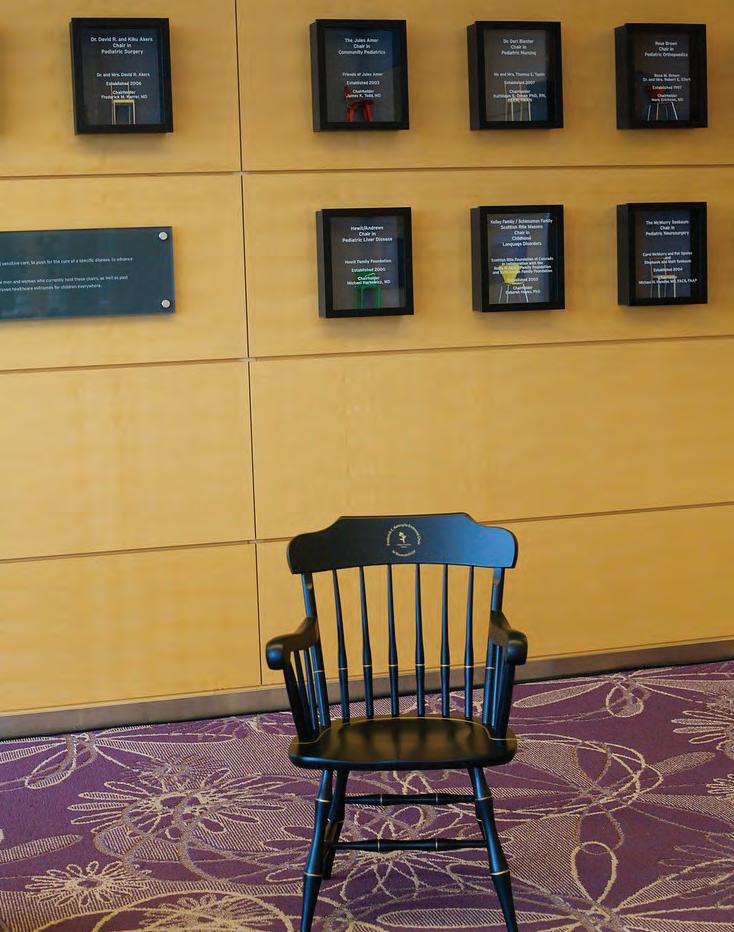
James Todd, MD (2003–2017)
Scott Sagel, MD, PhD for Cystic Fibrosis
The Asher Accurso Endowed Chair
Frank Accurso, MD (2012–2016)
The Barton Family Endowed Chair Michael Verneris, MD for Bone Marrow Transplant
Roger Giller, MD (2012–2017)
The Frederick C. Battaglia Endowed Chair Paul Rozance, MD in Neonatology
L. Joseph Butterfield Chair in Pediatrics
Stephen R. Daniels, MD, PhD
M. Douglas Jones, Jr., MD (1998–2005)
H. Peter Chase, MD, Endowed Chair
H. Peter Chase, MD
Children’s Hospital Colorado Chair in General Pediatrics Stephen Berman, MD
Robert J. and Kathleen A. Clark Endowed Chair Lia Gore, MD in Pediatric Cancer Therapeutics
Ehst-Hummel-Kaufmann Family Endowed Chair Kenneth Maclean, PhD in Inherited Metabolic Disease
Frieda and George S. Eisenbarth Clinical Immunology Aaron Michels, MD Endowed Chair
The Ergen Family Chair in Pediatric Cancer Lia Gore, MD
174 DEPARTMENT OF PEDIATRICS TRIBUTES
ENDOWMENT CHAIR ENDOWMENT CHAIR
Ed and Roxanne Fie Anderson Family Endowed Chair Robin Deterding, MD for Breathing
The Dale, Cindy and Kristin Francescon Endowed Chair Marcy Yonker, MD for Headache Treatment
Satish K. Garg and Bimla Garg Barbara Davis Center Satish K. Garg, MD Young Adult Clinic Endowed Chair
Haberfeld Family Endowed Chair Julie Parsons, MD in Pediatric Neuromuscular Disorders
Hewit/Andrews Chair in Pediatric Liver Disease Cara Mack, MD
The Helen and Arthur E. Johnson Chair Christian Mosimann, PhD for the Cardiac Research Director
Ed and Jeannette Kerr Family Endowed Chair Nina Ma, MD in Endocrinology Sharon Travers, MD (2015–2018)
The LaCache Critical Care Endowed Chair Kurt Stenmark, MD
The LaCache Endowed Chair for Gastrointestinal, Glenn Furuta, MD Allergic and Immunologic Disease
W. H. Lea for Justice Endowed Chair in Pediatric Law, W. Warren H. Binford, JD, EdM Ethics and Policy
Lula O. Lubchenco, MD Endowed Chair in Neonatology Sunah Hwang, MD, PhD, MPH
Jack Cooper Millisor Chair in Pediatric Heart Disease Shelley Miyamoto, MD
The Ponzio Family Chair in Pediatric Neurology Amy Brooks-Kayal, MD
The Ponzio Family Chair in Pediatric Neurology Research Timothy Benke, MD, PhD
The Postle Family Chair in Pediatric Cancer Jorge Di Paola, MD, PhD and Blood Disorders
Tanner Seebaum and Zachary Tschetter Chair Nicholas Foreman, MB, ChB in Neuro-Oncology
Tanner and Ellie Seebaum Endowed Chair Brian Greffe, MD for Palliative Care
Selby’s Chair in Pediatric Cardiology D. Dunbar Ivy, MD Mark Boucek, MD (1998–2003)
The Arnold Silverman, MD Endowed Chair Ronald J. Sokol, MD in Digestive Health
The Sissel and Findlow Family Endowed Chair Lori Sussel, PhD in Stem Cell Research at the Barbara Davis Center for Childhood Diabetes
The Lenore T. Stoddart-LaCache Endowed Chair Randall Wilkening, MD in Neonatology
Tanabe-Bobrow Family Young Investigator Award Alisa Lee-Sherick, MD Endowed Fund
Taplin Endowed Chair for Celiac Disease Edwin Liu, MD
Jack and Viki Thompson Chair in Child Maltreatment Desmond K. Runyan, MD, DrPH and Family Health (2011–2018) Robert Clyman, MD (1999–2009)
The Wagner Family Chair in Childhood Diabetes Robert H. Slover II, MD
Diane G. Wallach Chair in Pediatric Stem Cell Biology Bruce Appel, PhD
175 DEPARTMENT OF PEDIATRICS TRIBUTES
Steven Abman, MD
n
Director, Pediatric Heart Lung Center and Ventilator Care Program
n Co-director, Pediatric Pulmonary Hypertension Program
PROFILES
Department of Pediatrics faculty have been shaping children’s health through their clinical presence, educational innovation, research, and advocacy since 1930. The individuals profiled here are among the many leaders whose work has impacted pediatric medicine regionally, nationally, and internationally.
A graduate of The Feinberg School of Medicine/ Northwestern University, Steven Abman, MD, completed his internship, residency, and fellowship in Pediatrics, Pulmonary, and Critical Care Medicine at the University of Colorado. In 1992, he and John Kinsella, MD, first demonstrated that inhaled nitric oxide therapy could achieve sustained improvement in sick newborns with pediatric pulmonary hypertension (PPH). Abman was instrumental in founding the Pulmonary Hypertension Program at Children’s Hospital Colorado, as well as the national Pediatric Pulmonary Hypertension Network. In 2015, the American Heart Association/American Thoracic Society working group established and led by Abman developed the first joint guidelines for the care of children with PPH. He also cofounded and leads the national BPD Collaborative, an interactive care and research network of neonatologists and pulmonologists. Awards accorded Abman include: the Department of Pediatrics’ Career Teachers Scholar Award (2012); the American Academy of Pediatrics’ Outstanding Investigator Award; the SPR’s Maureen Andrews Mentorship and E. Mead Johnson Awards; and the APS/SPR’s Mary Ellen Avery Award. In 2017, he received the International Arvo Yllpo Award from Finland, an honor accorded every five years by the chairs of the Departments of Pediatrics at the five Finnish medical schools, the Finnish Foundation for Pediatric Research, the Finnish Pediatric Association, and the Mannerheim League for Child Welfare.
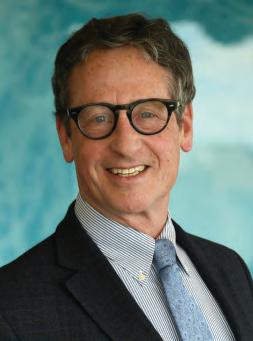
“While we teach, we learn.”
~ Seneca
176 DEPARTMENT OF PEDIATRICS TRIBUTES
Frank Accurso, MD
n Professor Emeritus, Pediatrics-Pulmonary Medicine
n Innovator in Cystic Fibrosis Research and Treatment
Frank Accurso, MD, graduated from the Albert Einstein College of Medicine of Yeshiva University and completed a fellowship in Pediatric Pulmonology at the University of Colorado in 1980. An advocate for newborn cystic fibrosis screening, he helped establish Colorado as the first state to require such testing. Accurso’s widely-published research contributed to the discovery of the gene that causes cystic fibrosis and has changed the course of treatment for those living with the disease. Accurso was a Professor of Pediatrics, Preventive Medicine and Biometrics, Physiology and Biophysics. He was Section Head of Pulmonary Medicine from 2003–2014.
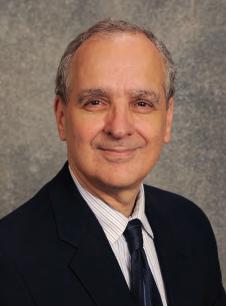
In 2012, Accurso led a clinical trial that resulted in the FDA approval of two new drugs, in addition to numerous other medical treatments, for those living with cystic fibrosis. Accurso received numerous awards during his career for his ongoing contributions to the cystic fibrosis community, including the Doris Tulcin Award for Research in Cystic Fibrosis and the American Thoracic Society’s William Martin II Distinguished Achievement Award in 2016.
As a Department of Pediatrics faculty member, Accurso taught and mentored numerous medical and nursing students and residents. He garnered many NIH and industry grants, published prolifically, and sponsored the training of generations of Pediatric Pulmonary Fellows through funding from the Cystic Fibrosis Foundation. Accurso was named a Career Teaching Scholar in 2006 and is now Professor Emeritus, Pediatrics-Pulmonary Medicine.
PROFILES
Mary Andresen Arthur, MS, PA-C
Interim Director, CHA-PA Program
Mary Arthur began her health care career as a medical technologist. In 1968, she applied for admission to medical school at the University of Colorado School of Medicine but was denied due to being “too old” at age 31. Determined to advance her medical knowledge, she applied to the new Child Health Associate Program (CHAP) founded by Henry Silver, MD, and was accepted into the second class in 1970. After completing the program, she earned her master’s degree in Child Health. Her first practice site as a CHA was with the office of James Arthur, MD, and Gordon Blakeman, MD.
Arthur joined the CHAP faculty in 1991 as an associate director. Promoted to associate professor, she would remain with the program for 19 years, accepting the position of Interim Program Director from 1992–1994. In 2003, she was named a Department of Pediatrics Career Teaching Scholar, the first non-physician so accorded the award.
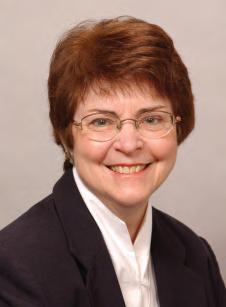
177 DEPARTMENT OF PEDIATRICS TRIBUTES
Frederick Battaglia, MD
n Professor Emeritus, Pediatrics
n Chair, Department of Pediatrics, 1974–1988
Frederick Battaglia, MD, earned his medical degree from Yale University and completed both his internship and residency at Johns Hopkins University School of Medicine. Following a fellowship in Public Health at Cambridge, he became a Macy fellow at Yale and an assistant professor at Johns Hopkins. He joined the University of Colorado faculty in 1965 as an associate professor of Pediatrics and Obstetrics/Gynecology, was named a full professor in 1969, and became Director of the Division of Perinatal Medicine in 1970.
From 1974 through 1988, Battaglia served as Chair of the Department of Pediatrics. During the course of his career, he headed clinical and basic science research committees on fetal alcohol syndrome, low birth weight, and fetal research for the Institute of Medicine, the National Institutes of Health, and the March of Dimes Foundation. He chaired Pediatric Scientist Training task forces for the Association of Medical School Pediatric Department Chairs (AMSPDC) and served as an external advisor for the medical schools of Yale, Baylor, Indiana, and Montreal. He was awarded numerous American Academy of Pediatrics honors, given the Borden Award in Nutrition, and earned the Department of Pediatrics’ Career Teaching Scholars Award (1996). Battaglia served as president of both the American Pediatric Society and World Association of Perinatal Medicine. In 2015, the Frederick C. Battaglia Endowed Chair in Neonatology was established in his honor.
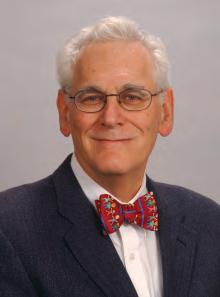
Stephen Berman, MD
n Director, Center for Global Health
n Chair, General Pediatrics
n Section Head, General Academic Pediatrics
Stephen Berman, MD, earned his medical degree from Temple University School of Medicine in Philadelphia and completed his pediatric training at the University of Colorado, serving as Chief Resident from 1976–1977.
He was Section Head for General Academic Pediatrics at the University of Colorado School of Medicine, receiving The Children’s Hospital Endowed Chair of Academic General Pediatrics in 2005. In 2008, he was named a Career Teaching Scholar.
An active clinical and outcomes researcher, Berman has received support for his research from the World Health Organization (WHO) and multiple federal agencies, including the National Institutes of Health, Centers for Disease Control and Prevention, Agency of Health Care Research and Quality, and several national and local foundations. Berman has served as special advisor to WHO and the Pan American Health Organization, and as a consultant to many countries throughout the world.
Well known for his contributions to pediatric education, Berman has authored four editions of his pediatric textbook, Pediatric Decision Making, and has published over 100 peer-reviewed research articles. He helped to draft six child health bills enacted by the Colorado State Legislature and directed the State Medically Indigent Program, where he designed and implemented the Colorado Child Health Plan.
Berman was elected vice president of the American Academy of Pediatrics in 2000 and served as president from 2001–2002. He currently serves as the director of the Center for Global Health, Colorado School of Public Health, University of Colorado School of Medicine.
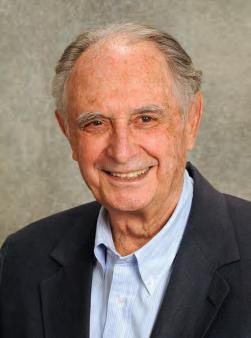
178 DEPARTMENT OF PEDIATRICS TRIBUTES
Joan Bothner, MD
n Section Head, Emergency Medicine
n Chief Medical Officer, Children’s Hospital Colorado
Joan Bothner, MD, earned her medical degree and completed her Pediatrics residency at the University of Texas Medical Branch School of Medicine. She joined the University of Colorado School of Medicine in 1986, initially in the Newborn Center at The Children’s Hospital and soon after in the Emergency Department. By 1991, she had accepted the role of clinical director of that department and the challenge to build a national- level program in Pediatric Emergency Medicine. A dedicated teacher and mentor, Bothner led by example, teaching a generation of providers and staff pediatric emergency care while developing her own administrative interests. When the Department of Pediatrics established the Section of Emergency Medicine in 1997, Bothner was named Section Head. In 2008, she became Chief Medical Officer of Children’s Hospital Colorado, responsible for overseeing inpatient operations.

PROFILES
L. Joseph Butterfield, MD

1927–1999
Medical Director, Newborn Center, The Children’s Hospital
A pioneer in neonatology, CU School of Medicine graduate Joe Butterfield, MD was a fellow with Lula Lubchenco, MD, in the Premature Infant Teaching Unit at University Hospital. In 1965, he moved to The Children’s Hospital to found the Newborn Center. A decade later, the Newborn Center was treating nearly 1,000 babies annually and had developed an international reputation for its innovative system of transporting critically ill newborns from across the Rocky Mountain region and beyond. As such, it was a model for regionalized systems of care for children and adults in the United States and abroad. Drawing upon family experiences, he also helped to create one of the earliest hospitalbased pediatric hospice units.
Butterfield used his beloved Rocky Mountains to develop educational retreats for trainees and graduates in pediatrics, neonatology, and high-risk obstetrics. One of Butterfield’s most enduring teaching achievements, however, would be one of the simplest: he created the APGAR mnemonic (appearance, pulse, grimace, activity, and respiration) to help clinicians remember Virginia Apgar, MD’s five-point score for gauging the health of newborns immediately after birth. Butterfield died in 1999. In recognition of his many accomplishments, The Children’s Hospital endowed its first chair, the L. Joseph Butterfield Chair in Pediatrics.
179 DEPARTMENT OF PEDIATRICS TRIBUTES
Bonnie Camp, MD, PhD
n Professor Emerita, Pediatrics and Psychiatry

n Director, JFK Child Development Center
Bonnie Camp, MD, earned her PhD from Indiana University and began her medical career as a child services psychologist in Indianapolis. She joined the faculty of the University of Colorado School of Medicine in 1955 and became the first psychologist at the Children’s Diagnostic Center in 1956. Encouraged by colleagues to become a pediatrician, she entered University of Colorado School of Medicine as a medical student in 1961, completing training and becoming a professor of Pediatrics and Psychiatry. She served as director of The John F. Kennedy Child Development Center, now JFK Partners, from 1985–1991.
Camp was integral to the development and validation of the Denver Developmental Screening Test. She also developed a program called Think Aloud, designed to help school age children with poor impulse control, and worked for 21 years with Bright by Three, an initiative to help new parents enhance their children’s early development. In 2000, the materials she developed for Bright by Three earned her the American Academy of Pediatrics Education award.
Camp helped establish the Chancellor’s John Conger Lectureship and Visiting Professorship, as well as the William K. Frankenburg Lectureship and Visiting Professorship in the Department of Pediatrics. Because of Camp’s outstanding contributions to pediatric education, she received the Department of Pediatrics’ Career Teaching Scholars Award in 1996. In 2017, she was awarded the University of Colorado School of Medicine’s highest alumni honor, the Silver and Gold Award, for outstanding service to the community and contributions to the art and science of medicine.
Ernest Cotton, MD
n Pediatric Pulmonology Innovator
n Professor Emeritus
Ernest Cotton, MD, earned his medical degree in 1954 from the University of Colorado School of Medicine. He completed his residency in Pediatrics and Contagious Diseases at City Hospital of Cleveland, serving as Chief Resident there and at Cuyahoga County Hospital. He joined the University of Colorado School of Medicine faculty in 1958, where he directed the Pediatric Outpatient Department at Colorado General Hospital. Encouraged by C. Henry Kempe, MD, to subspecialize, he became a U.S. Public Health Services Special Fellow in Pulmonary Physiology at the University of California, San Francisco, studying with pioneers William Tooley, MD, and John Clements, MD. He returned to Colorado in 1963 and remained a professor with the School of Medicine for 25 years.
Cotton founded the Pediatric Pulmonary program and the Pediatric Intensive Care Unit. He continued international research with Tooley and Clements, and conducted his own high-altitude pulmonary studies of newborns in Leadville. With a Maternal Child Health Grant, Cotton launched a five-state outreach and training program. His Cotton Club winter retreats—established in the early 1970s to gather University of Colorado fellows, faculty and guest speakers to review important trends in pediatric pulmonary medicine…and ski—has been cited as one of the top Innovations in Fellowship Education (American Thoracic Society, 2014).
Cotton was a pediatric consultant to the American College of Chest Physicians, National Institutes of Health, U.S. Maternal-Child Health Department, and Cystic Fibrosis Foundation. In 1998, he received the Department of Pediatrics’ Career Teaching Scholar Award. Upon his retirement, he was named Professor Emeritus.

180 DEPARTMENT OF PEDIATRICS TRIBUTES
Stephen Daniels, MD, PhD
n Chair of the Department of Pediatrics
n Pediatrician-in-Chief, Children’s Hospital Colorado
n Professor of Epidemiology, University of Colorado School of Public Health
n L. Joseph Butterfield Chair of Pediatrics
Stephen Daniels, MD, PhD, earned his medical degree from University of Chicago Division of the Biological Sciences, The Pritzker School of Medicine, and his doctorate in Epidemiology from the University of North Carolina at Chapel Hill. He received his Master’s from Harvard University of Public Health, and completed his residency in Pediatrics and fellowship in Pediatric Cardiology at Cincinnati Children’s Hospital Medical Center.
As a professor of Pediatrics and Epidemiology at the University of Cincinnati College of Medicine, he advanced his work in the application of advanced epidemiologic and biostatistical methods to solve pediatric clinical research problems.
A leader in preventive cardiology, his studies have centered on the causes of blood pressure elevation, cholesterol abnormalities, and obesity in children and adolescents, and how lifestyle changes can improve outcomes. He has served as Associate Editor for the Journal of Pediatrics since 1995. Coauthor of Medical Epidemiology, he is coauthor and editor of Pediatric Prevention of Atherosclerotic Cardiovascular Disease, a member of the Association of American Physicians, and recipient of the American Heart Association’s highest volunteer honor, the Gold Heart Award (2015). Daniels was named Department of Pediatrics chair in 2006. In 2007, The Children’s Hospital relocated from midtown Denver to the Anschutz Medical Campus, marking the start of a significantly expanded era of pediatric clinical services, academics, research, and advocacy in the region. From 2006–2018, the Department of Pediatrics faculty increased from 295 to 850, and primary market share from 43% to 68%.
PROFILES
George Eisenbarth, MD, PhD
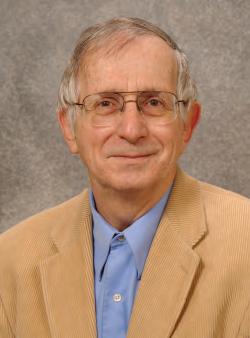
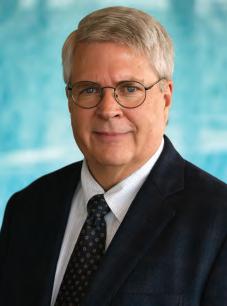
1949–2012
Executive Director, Barbara Davis Center for Childhood Diabetes
George Eisenbarth, MD, PhD’s seminal work into the causes, course, treatment, and future prevention of type 1 diabetes is regarded as one of endocrinology’s highest contributions. Coming from a Brooklyn neighborhood where only five percent of high school students attended college, he won a prestigious Pulitzer Scholarship to study biology at Columbia University. He earned both his degrees in medicine and philosophy from Duke University, then continued his residency and fellowship at Duke. His fellowship mentor, renowned diabetologist
Harold Lebovitz, MD, fueled Eisenbarth’s interest in autoimmunity and diabetes. After serving as a postdoctoral fellow with Nobel Laureate Marshall Nirenberg, MD, at the National Institutes of Health, he returned to Duke University as an assistant professor to head a laboratory dedicated to diabetes research.
A generous and passionate collaborator, Eisenbarth founded the Immunology & Immunogenetics Section at Harvard’s Joslin Diabetes Center, where he was among the first to trace type 1 diabetes to a chronic immune inflammation resulting in the gradual loss of insulin-producing cells. He was recruited in 1992 by the University of Colorado School of Medicine as the executive director of the Barbara Davis Center for Childhood Diabetes. Under his guidance, the Center grew into one of the world’s leading diabetes research institutes, providing care to more than 3,400 children and 2,600 adults.
181 DEPARTMENT OF PEDIATRICS TRIBUTES
Vincent A. Fulginiti, MD
1931–2013
Chancellor, University of Colorado Health Sciences Center
A graduate of Temple University in Philadelphia, Vincent Fulginiti, MD, came to the University of Colorado School of Medicine in the 1960s as a fellow in pediatric infectious disease and continued as a faculty member. In 1969, he was chosen by the University of Arizona’s College of Medicine to establish its Department of Pediatrics. He led the department for 16 years, leaving to become dean of the School of Medicine at Tulane University. In 1993, he returned to Colorado as chancellor of the University of Colorado Health Sciences Center, a position he held until 1998, when he returned to Tucson. A world-renowned researcher, writer, and speaker specializing in pediatric infectious diseases and biomedical ethics, Fulginiti contributed significantly to both fields. Over the course of his career, he was awarded a Fulbright Scholarship, authored four books and 200 scholarly articles, sat on the editorial boards of multiple medical journals, and served as chief editor of the American Journal of Diseases for Children. His vast research contributed to the eradication of both polio and smallpox, and he remained a vocal advocate for childhood vaccinations. Fulginiti was the recipient of numerous awards, including the first annual Veritas Award for outstanding contributions to the Program on Health Care Ethics, Law, and Humanities of the University of Colorado Health Sciences Center. The Fulginiti Pavilion for Bioethics and Humanities on the CU Anschutz Medical Campus was dedicated in 2012.
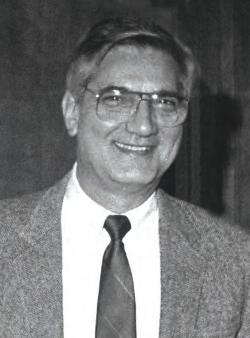
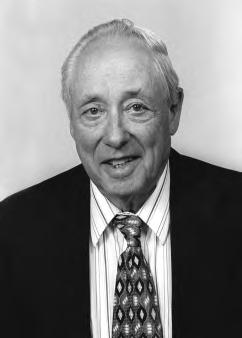 John “Jack” Githens, MD
John “Jack” Githens, MD
1922–2014
n Founder and Director, Colorado Sickle Cell Treatment and Research Center
n Interim Chair, Department of Pediatrics
John “Jack” Githens, MD, received his undergraduate degree from Swarthmore College and his medical degree from Temple University in 1945. Following active duty in the U.S. Navy, he returned to Pennsylvania, completing his training in pediatric hematology at the Children’s Hospital of Philadelphia. Then came an opportunity to relocate to Colorado—the state he had fallen in love with at the age of 17, while hitchhiking across the United States. He began as a chief resident at The Children’s Hospital, after which he joined the faculty in the Department of Pediatrics and progressed to the rank of professor. Githens later moved to the University of Kentucky Medical Center to chair its Pediatrics department. But Colorado’s mountain terrain and trout streams called, and Githens returned in 1964. He remained until his retirement as Professor Emeritus in 1984. Twice during those years—from 1955–1956 and from 1973–1974—he served as interim chairman of the Department of Pediatrics. Githens founded and directed the Colorado Sickle Cell Treatment and Research Center, the region’s only source of comprehensive medical care and special expertise in hemoglobinopathies. Among the many lifetime recognitions accorded him, he was particularly pleased with the Governor’s officially establishing a Dr. Jack Githens Day in the State of Colorado. Githens was named a Department of Pediatrics’ Career Teaching Scholar in 1998.
182 DEPARTMENT OF PEDIATRICS TRIBUTES
Mary Glodé, MD
Innovator in Pediatric Infectious Disease Management and Post-Graduate Medical Education
A graduate of the Washington University School of Medicine in St. Louis, Mary “Mimi” Glodé, MD, completed her internship and Pediatric residency at the University of Texas Southwestern Medical School.
In 1976, Glodé began her fellowship in the National Capital Consortium (Bethesda) Program in Pediatrics. She completed an Infectious Disease fellowship at the Boston Children’s Hospital in 1978.
From 1992–2003, Glodé directed the Pediatric Residency program, introducing new post-graduate training opportunities aligned with emerging pediatric practice. She served as associate director of Pediatric Infectious Diseases at the University of Colorado School of Medicine and the Children’s Hospital Colorado prior to becoming Section Head in 2002. Glodé was honored as Career Teaching Scholar in 2003.
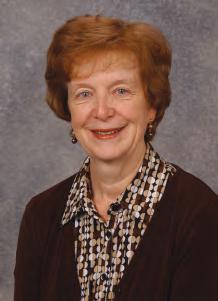
An international leader in the treatment of Kawasaki Disease, Glodé has contributed significantly to the field of pediatric immunizations and the study of enteroviruses. She is a widely-published researcher, having authored and edited a number of groundbreaking papers, journal articles, and book chapters. Glodé has received numerous awards over the course of her career, including the James E. Strain Award for outstanding contributions to Pediatrics in 2001, and the Distinguished Physician Award by the Pediatric Infectious Diseases Society in 2013.
Stephen Goodman, MD, PhD
1938–2020
n Distinguished Professor of Pediatrics
n Section Head, Genetics and Metabolism
Stephen Goodman, MD, PhD, born in Montreal, earned his medical degree from McGill University and completed his Pediatric residency in Montreal. He came to Denver in 1965 to be part of the Metabolism fellowship program established by Donough O’Brien, MD, FRCP.
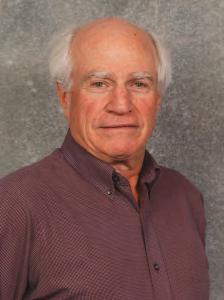
In 1967, O’Brien chose him to guide federal grants awarded to the Department of Pediatrics for intellectual disability research.
Goodman would remain a University of Colorado School of Medicine faculty member, clinician and investigator for his entire career. In 1975, he was the first to describe and help develop successful treatment for glutaric aciduria type 1, an inherited metabolic disorder that can result in severe damage to the brain.
As Section Head of Genetics and Metabolism in the Department of Pediatrics, Goodman was instrumental in developing the region’s genetic and metabolic services. He directed the NIH-funded BF Stolinsky MR [Intellectual Disabilities] Research Center at the University of Colorado, and he founded the Biochemical Genetics Laboratory at Children’s Hospital Colorado, which he directed until his death. He was named a Distinguished Professor of Pediatrics in 2011.
183 DEPARTMENT OF PEDIATRICS TRIBUTES
PROFILES
Harry Gordon, MD
1901–1988
Chair, Department of Pediatrics, 1947–1952
Harry Gordon, MD, earned his medical degree from Cornell Medical College in New York and served with the Children’s Bureau of the U.S. Department of Labor before joining the Army Medical Corps during World War II. He became part of the University of Colorado School of Medicine faculty in 1947, collaborating with E. Stewart Taylor, MD, chair of the School of Medicine’s Department of Obstetrics and Gynecology, and pediatrician Lula Lubchenco, MD, to establish one of the nation’s first premature infant teaching units in 1947. The following year, he was named the first full-time chair of the Department of Pediatrics.
In 1952, Gordon joined the staff of Johns Hopkins University and became pediatrician-in-chief at Sinai Hospital in Baltimore. He moved to Albert Einstein College of Medicine a decade later, serving as dean from 1967 to 1970. He became a founding director of the Rose F. Kennedy Center at Einstein and led the organization until his retirement in 1972.
 Ronald Gotlin, MD
Ronald Gotlin, MD
n
Director,
Medical Student Education
n Professor Emeritus
Ronald Gotlin, MD, completed his undergraduate and graduate degrees at the University of Colorado and his medical degree at the University’s School of Medicine. After interning at the University of California, San Francisco, he returned to Colorado for his Pediatrics residency and his fellowship in Pediatric Endocrinology and Metabolic Research. An assistant professor, Gotlin served the Department of Pediatrics as director of Medical Student Education for 15 years and remained a faculty counselor and member of the Curriculum Committee upon retirement.
Gotlin was instrumental in establishing the combined endocrine/diabetes clinical, research, and training program at Children’s Hospital and the Barbara Davis Center for Childhood Diabetes. The merging of faculty at the University of Colorado Department of Pediatrics and The Children’s Hospital formed the foundation of the present-day program.
In recognition of his commitment to medical education, the School of Medicine designated him Clinical Teacher of the Year in 1994 and recognized him for teaching excellence in 1995. In 1996, he was honored by the School with a Lifetime Achievement Award and as Master Teacher and Friend to a Generation of Medical Students. In 1998, the Department of Pediatrics named him a Career Teaching Scholar.
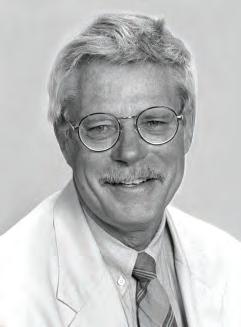
184 DEPARTMENT OF PEDIATRICS TRIBUTES
Randi Hagerman, MD

n International Investigator of Fragile X Syndrome
n Section Head, Developmental and Behavioral Pediatrics
Randi Hagerman, MD, earned her medical degree from Stanford University School of Medicine and completed her Pediatrics residencies at Stanford and the University of California, San Diego, the latter also being the site of her fellowship in Learning Disabilities and Ambulatory Pediatrics. She was a faculty member of the Department of Pediatrics at the University of Colorado School of Medicine from 1980 to 2000, heading the Section of Developmental and Behavioral Pediatrics.
Hagerman is recognized internationally , along with Cordelia Robinson, PhD, RN, for her investigation in the field of genetics of autism spectrum disorder, specifically genomic instability. Her focus on fragile X syndrome yielded the first book on the subject—Fragile X Syndrome: Diagnosis, Treatment and Research—which she coauthored with University of Colorado colleague Pamela McBogg, MD, in 1984. That same year, Hagerman cofounded the National Fragile X Foundation. In 2000, she relocated to University of California Davis to become the medical director of the MIND Institute.
PROFILES
William Hathaway, MD
n Founder, Hemophilia Center
n Professor Emeritus
William Hathaway, MD’s career in hematology spanned all four pillars of the Department of Pediatrics mission—clinical care, advocacy, research, and education. He completed his fellowship in hematology at the University of Colorado School of Medicine in 1959–1960. After practicing privately in Colorado Springs and teaching at the University of Kentucky Medical Center, he returned to the University of Colorado School of Medicine as an assistant professor in pediatrics in 1964 and was named full professor in 1973.
Hathaway founded and directed the Hemophilia Center at the University of Colorado School of Medicine from 1967 until his retirement in 1989 as professor emeritus. In 1996, he was named a Career Teaching Scholar by the Department of Pediatrics. Hathaway is recognized globally for his establishment of the first research laboratory focused on pediatric coagulation, contributions to understanding the development of hemostasis in the fetus and newborn infant, discovery of the contact factor, prekallikrein, and training the largest number of academic pediatric hematologists in the U.S.

185 DEPARTMENT OF PEDIATRICS TRIBUTES
Roger Hollister, MD
n Professor Emeritus
n Section Head of Rheumatology
Roger Hollister, MD, graduated from Case Western University School of Medicine. He completed his fellowship in Pediatric Rheumatology at the Providence Sacred Heart Medical Center/University of Washington School of Medicine Program. Hollister joined the University of Colorado School of Medicine in 1974, having been recruited to conduct research and treat pediatric patients at the School of Medicine’s National Jewish Hospital program site for pediatric specialty training in rheumatology, allergy, and, immunology. He succeeded Donough O’Brien, MD, FRCP, in caring for children with lupus and arthritis, developing what was the region’s only pediatric rheumatology clinic at the time.
When the School of Medicine relocated to its current campus, the decision was made to fully integrate rheumatology-related clinical care, research, education, and advocacy in the new environment. Hollister became the first Section Head of Rheumatology in the Department of Pediatrics. In 2001, the Department named Hollister a Career Teaching Scholar. He was awarded Professor Emeritus upon his retirement in 2015 for his 41 years of service.
Richard Johnston, Jr., MD Professor Emeritus

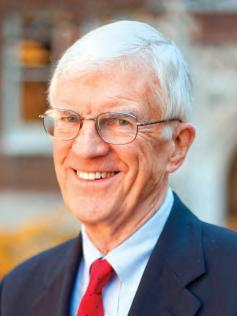
Richard Johnston, Jr., MD, earned his medical degree from Vanderbilt University School of Medicine. He completed his residency in Pediatrics at Vanderbilt University Hospital and Harvard Medical School Children’s Hospital, serving as assistant resident in both programs. His fellowship in Immunology was with Children’s Hospital Medical Center and Harvard Medical School.
From 1977–1986, Johnston chaired the Department of Pediatrics at National Jewish Center for Immunology and Respiratory Care, a University of Colorado School of Medicine partner program site for pediatric specialty training in rheumatology, allergy, and immunology. He then served as Physician-in-Chief at Children’s Hospital of Philadelphia, and chaired the Department of Pediatrics at the University of Pennsylvania School of Medicine. Johnson later served as medical director of the March of Dimes Birth Defects Foundation and as adjunct professor of Pediatrics and chief of the Section of Immunology, Department of Pediatrics, Yale University School of Medicine.
From 1999 until his retirement, Johnston was a professor of Pediatrics at the University of Colorado School of Medicine. He also served as a consultant to the Dean, and as associate dean for Research Development. Among the many honors accorded him: Association of American Physicians (1983), the John Howland Medical of the American Pediatric Society (2008) and Distinguished Alumnus, Vanderbilt School of Medicine (2008).
186 DEPARTMENT OF PEDIATRICS TRIBUTES
M. Douglas Jones, Jr., MD
Chair, Department of Pediatrics, 1990–2005
M. Douglas Jones, Jr., MD, graduated from the University of Texas Southwestern Medical Center at Dallas Southwestern Medical School in 1968. He completed his residency in Pediatrics, his Chief Residency, and his fellowship in Neonatology at the University of Colorado School of Medicine. Entering the U.S. Army, he became chief of the Neonatology Service at Brooke General Hospital, Fort Sam Houston, Texas.
He returned to the University of Colorado following his military commitment. In 1975, Jones was named an assistant professor of Pediatrics at the University of Colorado School of Medicine and a neonatologist at The Children’s Hospital. One year later, he was asked to be the medical director of the Newborn Center at The Children’s Hospital.
In 1977, Jones joined the faculty of Johns Hopkins University School of Medicine. There, he became director of the Neonatal Intensive Care Unit while actively continuing to study fetal and newborn cerebral blood flow and metabolism. In 1990, he returned to Colorado to chair the Department of Pediatrics as the affiliation between the University of Colorado and The Children’s Hospital progressed. Jones has authored more than 120 scholarly articles, edited three textbooks, and has received numerous awards for his contributions as a physician and leader. Honors include the Joseph W. St. Geme, Jr. Leadership Award (2005) from the Federation of Pediatric Organizations, the James E. Strain Award (2008) from The Children’s Hospital, and the Joseph A. Sewall Award (2016) from the University of Colorado Anschutz Medical Campus. Jones was honored as a Career Teaching Scholar in the Department of Pediatrics at the University of Colorado School of Medicine in 2005.
David Kaplan, MD, MPH
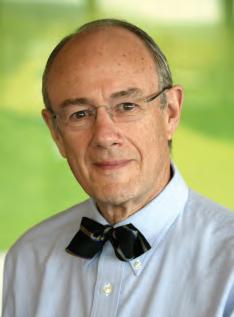
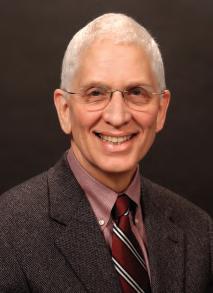
n Section Head, Adolescent Medicine
n Chief Medical Information Officer, Children’s Hospital Colorado
David Kaplan, MD, MPH, graduated from Case Western Reserve University Medical School and completed his Pediatrics residency at the University of Colorado School of Medicine. A training award from the U.S. Public Health Service allowed him to earn his master’s in Public Health and pursue fellowship training in Adolescent Medicine at Boston Children’s Hospital. He returned to the University of Colorado in 1984 to become Section Head of Adolescent Medicine within the Department of Pediatrics and establish the first Adolescent Clinic at The Children’s Hospital.
Throughout his career, Kaplan has guided innovations within the Department and for Children’s Hospital Colorado that benefit youth and families nationwide. In 1986, he cofounded the Eating Disorder Program at The Children’s Hospital, one of the first such programs in the U.S. In 1987, he founded Denver’s first SchoolBased Health Center—also one of the first in the nation—at Abraham Lincoln and East High Schools. In 2000, he helped lead creation of the School of Medicine’s Adolescent Medicine fellowship program.
Serving concurrently as Section Head and Chief Medical Information Officer, Kaplan guided implementation of the nation’s first comprehensive outpatient and inpatient pediatric electronic health record (EHR) at the new Children’s Hospital. In 2011, the Department of Pediatrics named him a Career Teaching Scholar.
187 DEPARTMENT OF PEDIATRICS TRIBUTES
PROFILES
Michael Kappy, MD, PhD
n Section Head, Pediatric Endocrinology
Michael Kappy, MD, PhD, earned his medical degree from the University of Wisconsin School of Medicine and Public Health and completed his Pediatrics residency at the University of Colorado School of Medicine before pursuing his fellowship in Pediatric Endocrinology at Johns Hopkins University. He served as a Pediatrics instructor and associate director of the Pediatric Residency Program at the University of Colorado School of Medicine before serving posts with the colleges of Medicine at the University of Arizona and University of Florida.
Returning to Colorado, Kappy accepted the position of Section Head of Pediatric Endocrinology in 1991 and directed the Pediatric Endocrinology Fellowship. His editorial contributions to the specialty are many, including service as editor-inchief of the journal, Advances in Pediatrics, co-editor of Pediatric Decision Making, and co-director of the Metabolism block for the University of Colorado School of Medicine ‘s Essentials Curriculum. To create the first edition of Principles and Practice of Pediatric Endocrinology (2005), Kappy brought together 30 endocrinology experts from four countries. A third edition of the foundational text is slated for 2020. The Department of Pediatrics honored him with the Career Teaching Scholar award in 2007.
 C. Henry Kempe, MD
C. Henry Kempe, MD
1922–1984
n Chair, Department of Pediatrics, 1956–1973
n Founder, The Kempe Center for the Prevention and Treatment of Child Abuse and Neglect
C. Henry Kempe, MD, earned his medical degree at the University of California School of Medicine in San Francisco in 1945, followed by an internship in Pediatrics at the same institution. He was a Fleischner Fund fellow at Children’s Hospital in San Francisco prior to becoming an assistant virologist in the Medical Department Research and Graduate School at Walter Reed Army Medical Center in Washington, DC. He continued his work in virology there and at the 6th Army Medical Laboratory at the Presidio in San Francisco, leaving in 1948 to join the faculty of Yale University School of Medicine. He would later spend a year in Rome as a Fulbright Professor of Pediatrics and Virology and another as a visiting scientist at the Pasteur Institute in Paris.
In 1956, Kempe accepted the chairmanship of the University of Colorado School of Medicine Department of Pediatrics, the youngest chair to hold the position at 34. Under his guidance, the next 17 years proved one of the Department’s most expansive eras across all four Department pillars—clinical care, research, education, and advocacy. He also served as a consultant to the Department of Defense, World Health Organization, American Academy of Pediatrics, and National Institutes of Health.
Kempe was nominated twice for the Nobel Peace Prize, first for his research contributions to smallpox vaccine safety, and again for his pioneering work in the prevention and treatment of child abuse. With colleagues Henry Silver, MD, and Brandt Steele, MD, he coauthored the seminal article The Battered Child Syndrome, published in the Journal of the American Medical Association in 1962, and many books on child abuse, including The Battered Child, coauthored with Ray Helfer, MD, in 1968.
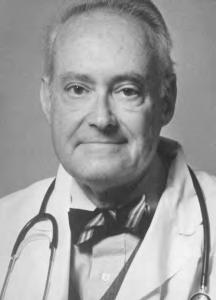
188 DEPARTMENT OF PEDIATRICS TRIBUTES
Allison Kempe, MD, MPH
Founding Director, ACCORDS
Allison Kempe, MD, MPH, earned her medical degree from the University of Colorado School of Medicine and her master’s of Public Health from the Colorado School of Public Health. Now a professor at both schools, Kempe is the founding director of ACCORDS (Adult and Child Consortium for Health Outcomes Research and Delivery Science).
Kempe has conducted health services, outcomes, and implementation/ dissemination research for more than 30 years, and has led or coauthored more than 200 publications. Her work has focused on finding and testing methods of increasing immunization rates, improving preventive care delivery, and on decreasing disparities in health and health care delivery for children. She has received numerous R01 level grants from NIH, AHRQ, and the CDC throughout her career.
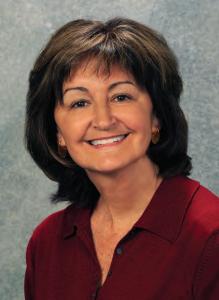
Additionally, Kempe has played a major mentorship role for many fellows and junior faculty. She directed two federally funded primary care research fellowships for over 10 years and developed a fellowship for surgical and subspecialty faculty who wish to become outcomes or health services researchers. Currently, she is a co-director of a K12 from NHLBI that focuses on implementation and dissemination science. In 2013, Kempe was honored with the Department of Pediatrics Career Teaching Scholars Award
Richard Krugman, MD
n Distinguished Professor, University of Colorado
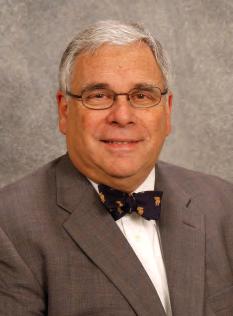
n Vice Chancellor, Health Affairs
n Dean of the University of Colorado School of Medicine
Richard Krugman, MD, earned his medical degree from New York University School of Medicine. After completing his internship, Pediatrics residency and Chief Residency at the University of Colorado School of Medicine, he became a fellow with the National Institutes of Health.
The former Vice Chancellor for Health Affairs and Dean at the University of Colorado School of Medicine for 25 years, Krugman is a Distinguished Professor of Pediatrics and Child Abuse and Neglect at the Kempe Center. He was a Robert Wood Johnson Health Policy Fellow, and director of the C. Henry Kempe National Center for the Prevention and Treatment of Child Abuse and Neglect.
Krugman was chair of the U.S. Advisory Board of Child Abuse and Neglect and served 15 years as editor-in-chief of Child Abuse and Neglect: The International Journal He is a member of the National Academy of Medicine. Krugman is also cofounder of the National Foundation to End Child Abuse and Neglect (EndCAN). He was honored with the Career Teaching Scholar Award in 2009.
189 DEPARTMENT OF PEDIATRICS TRIBUTES
PROFILES
Lula Lubchenco, MD
1915–2001
n Professor Emerita

n Neonatology pioneer
n Medical Director, Premature Infant Teaching Unit
Lula Lubchenco, MD, graduated from the University of Colorado School of Medicine in 1939 and completed her Pediatric residencies at Strong Memorial Hospital in Rochester and The Children’s Hospital in Denver where she was Chief Resident from 1942–1944. She became an associate professor of Pediatrics in 1943, and a full professor in 1969.

Known as “Dr. Lu” to many, Lubchenco was a pioneer in the field of neonatology, making fundamentally important contributions and authoring numerous publications, including The High-Risk Infant (1976). Three of her journal articles are included in Pediatrics 2013 “most-cited” listing.
Lubchenco helped found the University of Colorado’s Premature Infant Teaching Unit and directed it for 30 years. One of the tools she developed—informally called “the Lulagram”—was the first to provide clinicians a way to correlate a baby’s birth weight and its gestational age. Evolved versions of the chart are still in use globally more than 50 years after its introduction.
Invited to lecture internationally, Lubchenco was honored with the Department of Pediatrics Career Teaching Scholars Award in 1998. She continued to be active with the University of Colorado School of Medicine after retiring, serving on the Admissions and Bioethics committees. The Lula O. Lubchenco, MD, Endowed Chair of Neonatology has been established in her name.
Marilyn Manco-Johnson, MD Medical Director, Special Coagulation Laboratory
Marilyn Manco-Johnson, MD, graduated from Jefferson Medical College of Thomas Jefferson University in Philadelphia. She completed her residency in Pediatrics, a fellowship in Pediatric Hematology-Oncology, and a research fellowship in Pediatric Hematology at the University of Colorado School of Medicine. She joined the Department of Pediatrics faculty in 1982, serving first as director of the Premature Infant Follow-Up Clinic and medical director of University Hospital’s Special Coagulation Laboratory.
Since 1989, Manco-Johnson has directed the Mountain States Regional Hemophilia & Thrombosis Center and Core Regional Hemophilia services for U.S. Maternal and Child Health Bureau, Region VIII. She co-edited the book, Pediatric Thrombosis, and she published a landmark article in the New England Journal of Medicine on research demonstrating the efficacy of prophylactic Factor VIII in improving quality of life for boys with severe hemophilia.
Among Manco-Johnson’s many honors are the National Hemophilia Foundation’s Kenneth M. Brinkhous Award for Excellence in Clinical Research, the Centers for Disease Control and Prevention’s Excellence in Research and Treatment of Hemophilia Award, and the Thrombosis and Hemostasis Society of North America’s Mentoring the Next Generation of Women in Hematology Award.
190 DEPARTMENT OF PEDIATRICS TRIBUTES
Gerald Merenstein, MD
1941–2007
n Interim Chair, Department of Pediatrics, 1988–1990
n Medical Director, Child Health Associate/Physician Assistant Program
Gerald “Jerry” Merenstein, MD, bridged the chairmanships of Frederick Battaglia, MD, and M. Douglas Jones, Jr., MD. The transition came at a critical time in the Department of Pediatrics’ history, as the University of Colorado Health Sciences Center and The Children’s Hospital were in the process of formal affiliation. A pioneer in neonatology, Merenstein was a professor of pediatrics and medical director of the Child Health Associate/Physician Assistant Program, and as a senior associate dean for education. Prior to joining the University, he was a colonel in the U.S. Army based at Fitzsimons Army Medical Center. The author of more than 150 articles, chapters and books, he chaired the American Academy of Pediatrics’ Committee on Fetus and Newborn and its Section on Perinatal Pediatrics Executive Committee. Merenstein was named a Career Teaching Scholar in 2006.
PROFILES
Paul Moe, MD Professor Emeritus
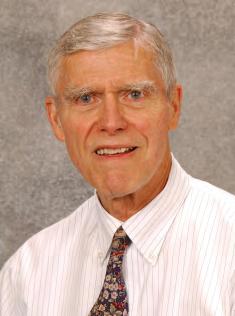

Paul Moe, MD, earned his medical degree from the University of Minnesota School of Medicine. He completed his residency in Neurology and fellowship in Child Neurology with the University of Minnesota program and his residency in Pediatrics at Nationwide Children’s Hospital/Ohio State University Program, where he was named Chief Resident. He then spent two years in Iran with the Peace Corps before coming to Colorado at the request of C. Henry Kempe, Chair of the Department of Pediatrics, to build the neurology program at The Children’s Hospital.
During his long tenure with the University of Colorado School of Medicine, Moe pursued scientific interests in clinical electroencephalography, neurometabolic disorders, and evoked potentials (clinical neurophysiology), all of which he generously shared with physicians in training.
His commitment to the education of students, residents, and fellows was recognized by the Department of Pediatrics in 1998 with the Gary Way Award, and on five occasions by the Department of Neurology with its Teaching Award. In 2000, he was named a Department of Pediatrics Career Teaching Scholar.
191 DEPARTMENT OF PEDIATRICS TRIBUTES
Lee Niswander, PhD
Section Head, Developmental Biology
Lee Niswander, PhD, completed her master’s degree at the University of Colorado School of Medicine, her doctorate in Genetics at Case Western Reserve University in Cleveland, and her post-doctoral training in Developmental Biology at the University of California/San Francisco. She taught and conducted research at Sloan-Kettering Institute, Cornell University Medical College, and Howard Hughes Medical Institute before returning to Colorado. She joined the Department of Pediatrics and Department of Cell and Developmental Biology in 2004 as a professor and Section Head of Developmental Biology.
The Niswander lab investigates novel mouse models of embryonic development with the overarching goal of providing insights into fundamental developmental processes, major human birth defects, and potential clinical therapies. It examines the interplay among genes, environment, and epigenetic mechanisms. Studies over the past 15 years have provided a unique perspective on the molecular mechanisms that control the formation of the central and peripheral nervous system, as well as lung, limb, and neuromuscular development. A focus is on the common and severe birth defect wherein the neural tube (NT) fails to close resulting in neural tube defects (NTDs, such as spina bifida).
Donough O’Brien, MD, FRCP
1923–2004
n Executive Director, Barbara Davis Center for Childhood Diabetes

n Pediatric Pioneer
n Professor Emeritus
Donough O’Brien, MD, FRCP, was born in Edinburgh, Scotland, and educated in England at Rugby School and Cambridge University. He trained at the Institute for Child Health, completed a research fellowship at Harvard University School of Medicine, was a registrar at Guy’s Hospital in London, followed by a research fellowship at the Hospital for Sick Children at Great Ormond Street.
O’Brien joined the University of Colorado Department of Pediatrics in 1957 at the request of Chair C. Henry Kempe, MD. He devoted his early efforts to the field of premature newborn infant care and launched one of the world’s first pediatric microchemistry laboratories. An avid researcher and devoted clinician, O’Brien cared for children with lupus and juvenile diabetes at Colorado General Hospital, The Children’s Hospital, and National Jewish Hospital. He was instrumental in founding the Pediatric Clinical Research Center, the University Pediatric Dialysis unit, and the first University fellowship program to train subspecialists in Pediatrics, and was named the first Executive Director of the Barbara Davis Center for Childhood Diabetes. In 1998, O’Brien was honored with the Department of Pediatrics Career Teaching Scholars Award. In 2000, he received the University of Colorado Medal
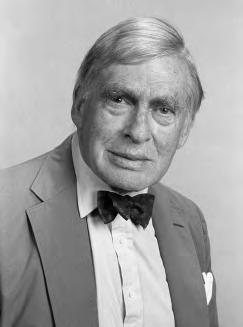
192 DEPARTMENT OF PEDIATRICS TRIBUTES
Steven Poole, MD
n Vice Chair, Ambulatory and Community Affairs
n Professor Emeritus
Steven Poole, MD, earned his medical degree at the University of Rochester School of Medicine and Dentistry. He completed his Pediatrics residency and fellowship in Child Development, Behavioral Pediatrics, and General Pediatrics at the University of Colorado School of Medicine. In 1977 he joined the School of Medicine’s Pediatric and Family Medicine faculties. In 1982, he became one of the first University of Colorado faculty at The Children’s Hospital, where he directed Emergency Pediatrics and General Pediatrics.
A true innovator, Poole established Children’s Hospital’s after-hours telephone care program, pediatric locum tenens service, and the pediatric hospitalist service for community hospitals in the Denver metropolitan area. He now serves as vice chair of Ambulatory and Community Affairs for the Department of Pediatrics. Poole also guided development of the Colorado Children’s Healthcare Access Program to ensure underserved children a “medical home.” He is founder and first chair of the Section on Telephone Care for the American Academy of Pediatrics (AAP), and lead author of the AAP publication The Complete Guide: Developing a Telephone Triage and Advice System for a Pediatric Office Practice.
In 2007, the Department of Pediatrics honored him with its Career Teaching Scholars Award
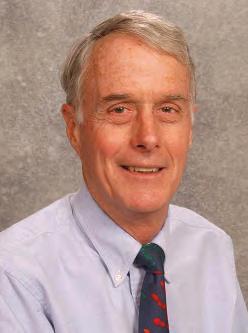 Harley Rotbart, MD Professor Emeritus
Harley Rotbart, MD Professor Emeritus
Harley Rotbart, MD, is a graduate of Weill Cornell Medical College in New York City. He completed his residency in Pediatrics at the University of Pennsylvania Health System and his fellowship in Pediatric Infectious Diseases at the University of Colorado School of Medicine. Recipient of The Children’s Hospital’s Outstanding Service Award in 2006, he was named one of the Best Doctors in America from 1996 through his retirement from clinical practice in 2014.
Active in research, clinical care, and academics, Rotbart served as vice chair of Faculty Affairs for the Department of Pediatrics for 17 years, a time that spanned the relocation of The Children’s Hospital to the Fitzsimons Medical Campus and major departmental expansion. In 1995, he developed the polymerase chain reaction (PCR) method for diagnosing enteroviral infections, opening the door for many other PCR-based tests.
Rotbart has authored more than 175 medical and scientific publications, including Human Enterovirus Infections, the field’s most comprehensive text. He is also one of the nation’s leading parenting experts, and the pediatrician behind Germ Proof Your Kids, No Regrets Parenting, The On Deck Circle of Life, and Miracles We Have Seen. He serves on the advisory boards of Parents Magazine and Parents.com.
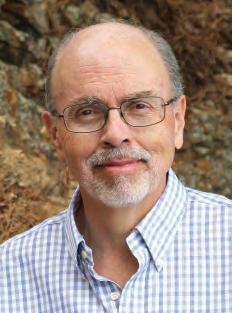
193 DEPARTMENT OF PEDIATRICS TRIBUTES
PROFILES
James Shira, MD
n Faculty, Department of Pediatrics
n Professor Emeritus
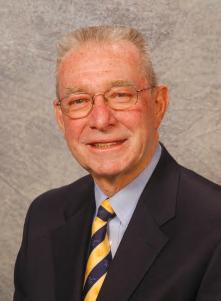

James Shira, MD, graduated from Tufts University
School of Medicine. He completed his Internal Medicine residency at Fitzsimons Army Medical Center in Aurora and his fellowships in Pediatric Allergy/Immunology at the University of Kansas School of Medicine. Shira, a career medical officer in the U.S. Army, served as Chief of Pediatrics at Fitzsimons Army Medical Center and Walter Reed Army Hospital in Bethesda before returning to Colorado in 1975. He retired from the military in 1979. In 1980, as a faculty member of the School of Medicine Department of Pediatrics, he became actively involved with The Children’s Hospital in both clinical and academic roles. He chaired the hospital’s Departments of Pediatrics and Health Education, and held many leadership positions within the American Academy of Pediatrics, the Denver Medical Society, and Colorado Medical Society. The recipient of numerous military awards, Shira also received the University of Colorado School of Medicine’s Gary Way Award for Outstanding Teaching in 1981. In 1996, he was honored as a Department of Pediatrics Career Teaching Scholar.
Henry Silver, MD
1918–1991
Innovator in Pediatric Nurse Practitioner and Child Health Associate Program
After graduating from the University of California at Berkeley in 1942, Philadelphia native Henry Silver, MD, completed his internship at the University of California San Francisco (UCSF) and his Pediatric residency at Children’s Hospital of Philadelphia. He later was appointed as an assistant professor of Pediatrics at UCSF and an associate professor at Yale University School of Medicine. In 1957, Silver joined the University of Colorado School of Medicine as a professor and as vice chair of Pediatrics.
In 1965, Silver—in collaboration with Loretta C. Ford, EdD, professor and chair of Public Health Nursing—established a pediatric nurse practitioner training program that was the first of its kind in the United States. In 1968, he created the University of Colorado School of Medicine’s Child Health Associate Program, a three-year program that trained college students to become physician assistants serving children. A widely published and nationally renowned expert in pediatric medicine as well as pediatric endocrinology, Silver was awarded the National Academy of Medicine’s Gustav O. Lienhard Award for Advancement of Health Care for “fostering the concept of the nurse practitioner” in 1990.
194 DEPARTMENT OF PEDIATRICS TRIBUTES
Arnold Silverman, MD
n Section Head, Gastroenterology, Hepatology and Nutrition
n Director of Pediatrics, Denver General Hospital
n Professor Emeritus
Arnold Silverman, MD, graduated from of the University of Colorado School of Medicine and completed his residency and chief residency in Pediatrics at the University of Minnesota. One of the nation’s first fellowship-trained Pediatric Gastroenterologists, he returned to Colorado to cofound the Pediatric GI Fellowship with Frank Cozzetto, MD, in 1965. With Cozzetto and Claude Roy, MD, FRCP(C), he coauthored Pediatric Clinical Gastroenterology, the first textbook written for the pediatric medical specialty.
In the early 1970s, when Department Chair C. Henry Kempe, MD, began to forge a pediatric residency program connecting The Children’s Hospital, Colorado General Hospital, and Denver General Hospital, he appointed Silverman to direct Pediatrics at Denver General Hospital. He was the first to head the Section of Pediatric Gastroenterology, holding the post until 1985.
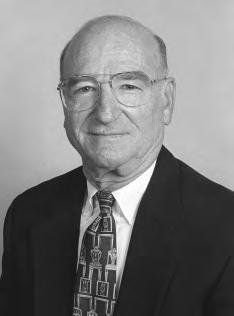
In 1988, Silverman received the North American Society for Pediatric Gastroenterology, Hepatitis and Nutrition (NASPGHAN) Harry Shwachman Award In 1996, the Department of Pediatrics honored him with its Career Teaching Scholar Award. The Arnold Silverman, MD Endowed Chair in Digestive Health has been established in his name.
Ronald Sokol, MD
n Vice Chair, Clinical and Translational Research
n Director, Colorado Clinical and Translational Institute
n Section Head, Gastroenterology, Hepatology and Nutrition
n Arnold Silverman, MD Endowed Chair in Digestive Health
Ronald Sokol, MD, graduated from The Pritzker School of Medicine, University of Chicago. He completed his residency in Pediatrics at the University of Colorado Health Sciences Center, concluding as Chief Resident, and his fellowship in Pediatric Gastroenterology at Cincinnati Children’s Hospital Medical Center. Sokol is currently vice chair, Clinical and Translational Research; associate medical director, Pediatric Liver Center and Liver Transplantation Program; and director, Colorado Clinical and Translational Institute.
Sokol has been recognized more than 20 times as one the Best Doctors in America. His innovative work has earned him numerous prestigious honors, including the North American Society for Pediatric Gastroenterology, Hepatitis and Nutrition
(NASPGHAN) Harry Shwachman Award, the American Academy of Pediatrics Nutrition Award, the James E. Strain M.D. Award from Children’s Hospital Colorado, the Department of Pediatrics’ Career Teaching Scholar Award, and the American Liver Foundation’s Pinnacle Award. He holds the Arnold Silverman, MD Endowed Chair in Digestive Health.
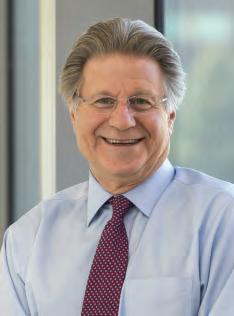
195 DEPARTMENT OF PEDIATRICS TRIBUTES
PROFILES
Judith Sondheimer, MD
n Professor Emerita
n Section Head, Gastroenterology, Hepatology and Nutrition
Judith Sondheimer, MD, earned her medical degree from Columbia University College of Physicians and Surgeons, and completed her Pediatrics residency at the University of Colorado School of Medicine.
A Pediatric Gastroenterology fellow at the Hospital for Sick Children in Toronto, Canada, she joined the Department of Pediatrics at the State University of New York-Syracuse, then returned to the University of Colorado where she was Section Head of Gastroenterology, Hepatology and Nutrition from 1985–2006. Following her retirement, Sondheimer became interim chief of Pediatric Gastroenterology at Georgetown University Medical Center in Washington, DC.
Recognized as an international leader in the field of pediatric esophageal function and disease, Sondheimer contributed significantly to the development of new diagnostics and treatments. She served as editor-in-chief of the Journal of Pediatric Gastroenterology and Nutrition from 2000–2005 and has been a member of the editorial boards of four additional journals. A mentor and role model for pediatric GI fellows and colleagues throughout North America, Sondheimer was named a Department of Pediatrics Career Teaching Scholar in 2005. The next year, she received the North American Society for Pediatric Gastroenterology, Hepatitis and Nutrition (NASPGHAN) Harry Shwachman Award
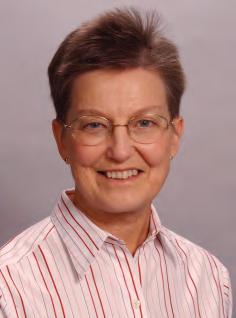
Henry
Sondheimer,
MD
n Pediatric Cardiologist and Researcher
n Medical Education Innovator
A native of New York and a graduate of the College of Physicians and Surgeons of Columbia University, Henry Sondheimer, MD, received his postgraduate training in Pediatrics at the University of Colorado and in Pediatric Cardiology at the Hospital for Sick Children in Toronto. He served on the faculty of Upstate Medical Center in 1976, then returned to Colorado in 1985 to join the University of Colorado School of Medicine Department of Pediatrics. From 2002–2007, he was the associate dean for Admissions of the School of Medicine as well as the clinical director of Pediatric Cardiology at The Children’s Hospital.
Sondheimer’s research in Colorado focused on the prevention of respiratory syncytial virus (RSV) in infants with congenital heart disease. In 2007, he and his wife, Judith Sondheimer, MD, an esteemed pediatric gastroenterologist, relocated to Washington, DC. There he joined the Association of American Medical Colleges, serving as associate vice-president for Student Affairs and Programs and executive secretary of the Group on Student Affairs. Sondheimer also consulted on the Medical Education Partnership Initiative, a five-year NIH grant to improve medical education in Africa. He is the author of more than 50 papers including the often-cited “Holistic Review: Shaping the Medical Profession One Applicant at a Time” (New England Journal of Medicine, 2013).

196 DEPARTMENT OF PEDIATRICS TRIBUTES
Joseph St. Geme, Jr., MD
1931–1986
Dean of the School of Medicine, University of Colorado
Joseph St. Geme, Jr., MD, served as the fifteenth dean of the University of Colorado School of Medicine from 1985 until his untimely death in 1986. A forwardlooking leader of great energy, enthusiasm, imagination, and determination, he successfully recruited eight outstanding departmental chairs during his 21 months in office. He also strengthened and expanded the School’s research, educational, and patient care programs to better meet the challenges posed by the revolution in the health sciences and health care delivery.
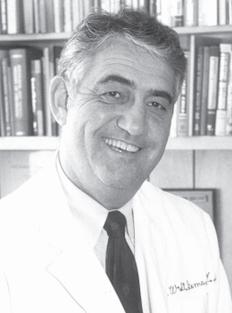
St. Geme received both his undergraduate and medical degree from Stanford University. He served his residency and became an associate professor in Pediatrics at the University of Minnesota, then joined the medical faculty of the University of California in Los Angeles as chair of the Department of Pediatrics, Harbor/UCLA Hospital. From 1981–1983, he was president of the Association of Medical School Pediatric Department Chairs and President of the American Board of Pediatrics. At the time of his death, he was President-elect of the American Pediatric Society. In honor of St. Geme, his family established the Joseph W. St. Geme, Jr., MD Lectureship, the St. Geme Medical Student Award, and the Joseph W. St. Geme, Jr., MD Memorial Endowment in 1987. Each year, the Joseph W. St. Geme, Jr., MD Award for Outstanding Research by a Resident is given in tribute by the Department of Pediatrics.
PROFILES
Kurt Stenmark, MD
n Section Head, Pediatric Critical Care Medicine
n The LaCache Critical Care Endowed Chair, Children’s Hospital Colorado
Kurt Stenmark, MD, earned his medical degree from the University of Colorado School of Medicine and completed his Pediatrics residency in the University of Colorado program, serving as Chief Resident in 1980–1981. He joined the School of Medicine faculty in 1984 upon completion of fellowships in Pediatric Pulmonary/Critical Care and Cardiovascular Pulmonary Research, and was named Section Head of Critical Care Medicine in 1987. He is the first to hold The LaCache Critical Care Endowed Chair at Children’s Hospital Colorado.
Stenmark also directs the University’s Cardiovascular Pulmonary Research Laboratories, where he has served as principal investigator in multiple decades-long research projects focused on the treatment of infants, children, and adults with pulmonary hypertension. He is coauthor of over 350 publications and the Principal Investigator on a number of NIH grants, of which one—“Adaptations to Hypoxia”—is the longest, continuously funded Program Project Grant at the National Heart, Lung, and Blood Institute.
The recipient of numerous international awards and honors, Stenmark sits on several national and international committees as well as major grant review committees in his field. He currently serves as deputy editor for Pulmonary Circulation, associate editor for Cardiovascular Research Journal, and consulting editor for the American Journal Physiology, Lung, Cellular and Molecular Physiology and is on the editorial board of several other prominent journals.
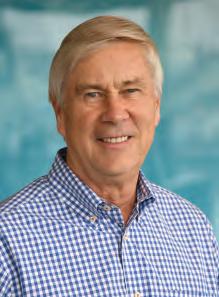
197 DEPARTMENT OF PEDIATRICS TRIBUTES
James Todd, MD
n Professor Emeritus, Department of Pediatrics
n Section Head, Epidemiology, Department of Pediatrics
n Director, Infectious Diseases, The Children’s Hospital
n Jules Amer Chair in Community Pediatrics
James Todd, MD, earned his medical degree at the University of Michigan and completed his internship and residency at the University’s Mott Children’s Hospital. Following his Pediatric Infectious Diseases fellowship at the University of Colorado, he was appointed director of Infectious Diseases at The Children’s Hospital from 1973–1990.

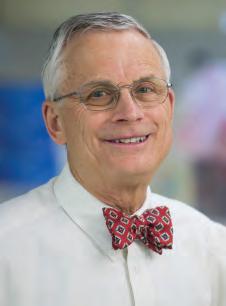
In 1976, Todd described the first cases of Kawasaki Syndrome in the continental United States. In 1978, he and his colleagues were the first to identify Toxic Shock Syndrome.
Todd was a key contributor to legislative action resulting in improved health access for Colorado’s children, gun safety measures, immunization gains, and mandatory seatbelt usage. He was named a Department of Pediatrics’ Career Teaching Scholar in 1998, recipient of the Colorado Chapter of the American Academy of Pediatrics’ James E. Strain Community Service Award in 2004, and one of the City of Denver’s Top 150 Citizens in 2008. He is the first to hold the Jules Amer Chair in Community Pediatrics.
Randall Wilkening, MD
n Section Head, Neonatology
n Vice-Chairman, Clinical Finance, Department of Pediatrics
n Lenore T. Stoddart-La Cache Endowed Chair in Neonatology
n Interim Chair, Department of Pediatrics, 2005–2006
Randall Wilkening, MD, earned his medical degree from the University of Missouri-Columbia School of Medicine. He completed his internship and Pediatrics residency at the University of Colorado School of Medicine, serving as Chief Resident in 1978, and continuing with his fellowship in Neonatal-Perinatal Medicine.
As plans were evolving for The Children’s Hospital’s relocation to the Fitzsimons campus, Wilkening was named interim chair of the Department of Pediatrics. Having completed all his post-medical degree education with the department, his perspective of both organization and operations proved a valuable asset. Wilkening has been recognized repeatedly as one of the Top Doctors in America. He currently serves as Section Head of Neonatology and vice-chairman for Clinical Affairs for the Department of Pediatrics. He also holds the Lenore T. Stoddart-La Cache Endowed Chair in Neonatology, chairs the Clinical Practice Committee, and is associate vice-chair for Research Affairs, Perinatal Research.
198 DEPARTMENT OF PEDIATRICS TRIBUTES
COMMUNITY FACULTY
Max Ginsburg, MD, reported to The Children’s Hospital in Denver for his pediatric residency on July 3, 1929, one year prior to the formation of the University of Colorado Department of Pediatrics. Among the private pediatricians serving as instructors and mentors at Children’s were: Franklin Gengenbach, MD, professor of Pediatrics at the University and the first part-time chair of the Department of Pediatrics; Roy Forbes, MD, founder of the Denver Tuberculosis Society; Ralph Verploeg, MD, J.W. Amesse, MD, who later served as president of both the Denver and Colorado Medical Societies; and W. W. Barber, MD, the only pediatrician performing major surgery, orthopedics, and tonsillectomies at that time. In his private practice, “Dr. Max” regularly saw pediatric patients at The Children’s Hospital, National Jewish Hospital, Colorado General Hospital, General Rose Memorial Hospital, and Denver General Hospital.
Leo Flax, MD, had just returned from military service in 1946 when he met with Max Ginsburg, MD, to discuss a practice association. Ginsburg later described the timing as “very opportune” given the polio epidemic and the extraordinary demands it placed on pediatric providers. Their practice association became a formal partnership as well as a close friendship. In 1948, Flax and Ginsburg opened a new office— The Children’s Medical Center—at 1575 Vine.
That same year, they were joined by Arthur Robinson, MD, who had come to Denver as a fellow for Harry Gordon, MD, the University of Colorado School of Medicine’s first full-time professor of Pediatrics and the Department’s first full-time chair. In addition to being an eminent pediatrician, he was revered as a remarkable teacher by his younger colleagues. Robinson was later named Professor of Biochemistry, Biophysics and Genetics, and of Pediatrics at the University of Colorado School of Medicine. He was also a senior staff member at National Jewish and a senior fellow at the Eleanor Roosevelt Institute for Cancer Research.
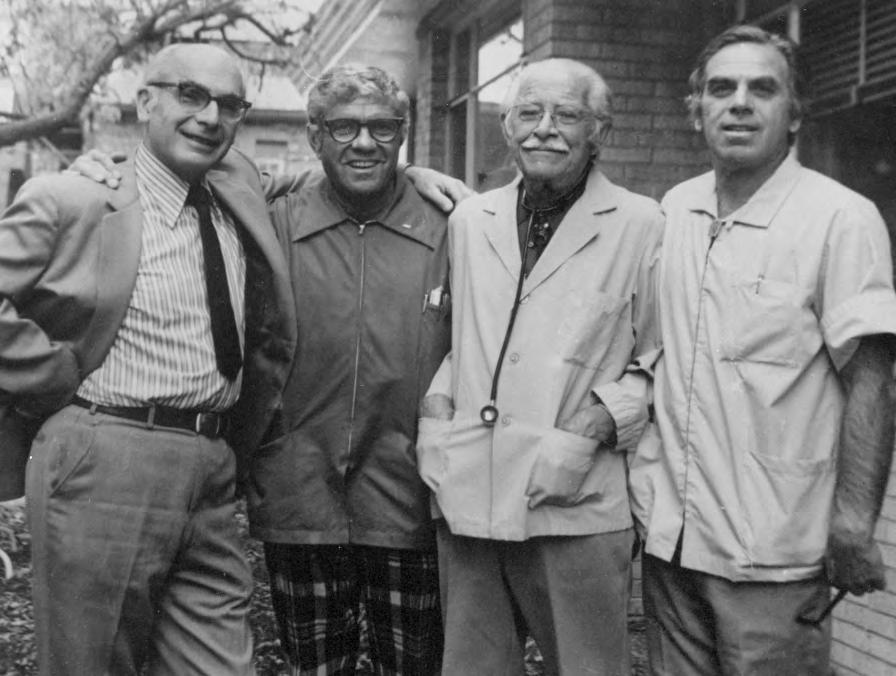 Drs. Arthur Robinson, Leo Flax, Max Ginsburg, and Jules Amer, Children’s Medical Center
Drs. Arthur Robinson, Leo Flax, Max Ginsburg, and Jules Amer, Children’s Medical Center
“For Amer, there was no such thing as ‘town versus gown.’ ”
199 DEPARTMENT OF PEDIATRICS TRIBUTES
–Department of Pediatrics, Dr. Jules Amer’s obituary
PROFILES
Jules Amer, MD, relocated to Colorado as part of his U.S. Army commitment, serving as one of the first Epidemiologic Intelligence Officers of the Centers for Disease Control. He then became a public health officer at Denver General Hospital, where he met Max Ginsburg, MD. After the two worked closely to resolve a potential epidemic in the newborn nursery at General Rose Hospital, Amer visited the Ginsburg home to discuss opening an office in the Rocky Mountain region. Ginsburg remarked “…in passing, that perhaps we could make room for him in our office, even though it would be crowded.” The deal was struck, and with it, the bond between this group of community physicians, the University of Colorado School of Medicine, and The Children’s Hospital grew ever stronger.
Over the next decades, Amer served as chief of Medicine and president of the Medical Staff at Children’s Hospital. He helped create many of the hospital’s programs, including Neonatology, Pediatric Intensive Care, Infectious Diseases, Epidemiology, and the Children’s Hospital Research Center. The Jules Amer Chair in Community Practice recognizes his tireless commitment to the health of the region’s children.
Amer’s obituary, as published by the Department of Pediatrics, stated: “For him, there was no such thing as ‘town versus gown.’ He encouraged collaboration between Colorado healthcare institutions, supported research in the office and, as the consummate clinician, taught literally thousands of students, residents, and fellows the critical importance of honing their clinical skills and judgment in the care of their patients.”
James Arthur, MD, earned his medical degree from New York City’s Cornell University School of Medicine in 1954. He and Larry Bugbee, MD, colleagues during their Pediatric residencies in Rochester, chose Colorado as the site for their first pediatric practice in 1958. Decades later, Arthur wrote of their first meeting with “the Henrys” (Drs. C. Henry Kempe and Henry Silver) and Kempe’s rapid decision that the two “Rochester men” should engage immediately with the Department of Pediatrics, serving as part-time faculty. Arthur recalled, “He [Kempe] advised us as to the location of the Denver General Hospital pediatric clinic and directed us to report to Dr. Sylvan Stool, who was in charge of the clinic. Dr. Kempe said, ‘You might as well get started. I don’t believe in windmill wind-ups.’”

Gordon Blakeman, MD, graduated from the University of Michigan Medical School. He interned at Strong Memorial Hospital in Rochester, NY, served his first year of residency at The Children’s Hospital in Denver, and became Chief Resident at the University of Colorado under Kempe from 1996 to 1967. The Rochester connection came into play again when Blakeman’s residency ended. Blakeman completed his military service in 1970 and joined James Arthur, MD, in private practice. The two remained partners for four decades, and their Pediatric Pathways practice become one of the key metro providers for children as Denver’s southern expansion burgeoned. They were strong, innovative supporters of Department of Pediatrics programs, serving as the first community site to provide clinical rotation opportunities for second-year residents. Arthur retired in 1991, but continued to serve on the faculty of the Child Health Associate Program until 1999. Their respective contributions to new physician education earned each the Department’s Career Teaching Scholar Award, with Arthur recognized in 1996 and Blakeman in 1998.
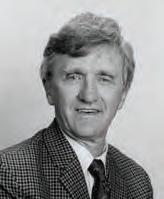

200 DEPARTMENT OF PEDIATRICS TRIBUTES
Dr. Jules Amer authored Intimate Strangers in 2014, recounting his journey into pediatrics and his passion for treating sick children.
PROFILES
Michael Kurtz, MD, is a graduate of the University of Colorado School of Medicine. He completed Pediatric residencies at the University of California, San Francisco, and the University of Colorado School of Medicine, where he was Chief Resident. Following his commission with the U.S. Army, he founded Aurora Pediatric Associates (now Advanced Pediatric Associates) with Lee Thompson, MD. They were later joined by Mark Pearlman, MD, and Freeman Ginsburg, MD. Kurtz was an advisor to many community pediatric health organizations during his career, with particular interest in programs championing immunizations and care for children with disabilities. He served on The Children’s Hospital Board of Directors, chaired its Affiliation Committee, and was an executive member of Children’s Medical Staff. Kurtz was a Colorado Pediatric Partners board member, and served as vice president of the Colorado Chapter of the AAP. He was named a Career Teaching Scholar in 2007.
Karen Leamer, MD, earned her medical degree and completed her Pediatrics residency at the University of Colorado School of Medicine before entering private practice. A clinical faculty member of the Department of Pediatrics since 1989, she has chaired the Clinical Faculty Affairs Committee since 2000. She also has served on the Department’s Education Committee, the Colorado Children’s Healthcare Access Program Advisory Board, and the Colorado Association for School-Based Health Care Board of Directors since 2010.

Leamer is a past president of the Children’s Hospital Colorado Medical Staff and the Colorado Chapter of the American Academy of Pediatrics (AAP). Recognitions accorded Leamer include the Department’s Outstanding Teaching and Career Teaching Scholar Awards, Children’s Hospital’s Outstanding Service Award, and the Colorado Chapter of the AAP’s James E. Strain Community Service Award. She currently practices at Every Child Pediatrics in Aurora.
Stefan Mokrohisky, MD, is a graduate of Loyola-Stritch School of Medicine. After completing his Pediatrics residency and serving as Chief Resident at the University of Colorado School of Medicine, he entered a Bioethics fellowship at the Kennedy Institute, Georgetown University. Returning to Colorado, Mokrohisky joined Colorado Permanente Medical Group (1981–2018), where he became chief of Pediatrics. A past board member of the Denver Medical Society, he was a valued member of the Ethics Committees at both Kaiser Permanente Colorado and Children’s Hospital Colorado, where he served as committee chair.
Honors accorded Mokrohisky include The Permanente Award, Children’s Hospital Colorado’s Medical Staff Distinguished Service Award, the University of Colorado School of Medicine’s Outstanding Clinical Teacher Award, and the Colorado Chapter of the AAP’s James E. Strain Community Service Award. He was named a Career Teaching Scholar by the Department of Pediatrics in 2001.
John Moyer, MD, earned his medical degree from the Medical College of Virginia, Virginia Commonwealth University, and completed his residency in Pediatrics at the University of Colorado Hospital and The Children’s Hospital in Denver, where he served as Chief Resident for 1968–1969. He was commissioned as a major in the U.S. Army Medical Corps in 1969, serving in Heidelberg, West Germany, then returning to Colorado to open Evergreen Conifer Pediatrics in late 1972. He remained in private practice for 27 years.

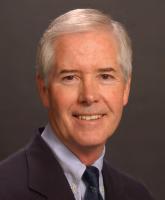
In 1978, Moyer was named a clinical professor of Pediatrics by the University of Colorado School of Medicine, and in 1997 an associate course director for the School of Medicine’s Foundations of Doctoring program.
Honors accorded Moyer include: University Hospital’s Outstanding Clinical Faculty Award; Mead Johnson Clinical Scholar Award; the Department of Pediatrics’

201 DEPARTMENT OF PEDIATRICS TRIBUTES
Outstanding Clinical Teaching and Centennial Awards; and the James E. Strain Community Service Award from the Colorado Chapter of the AAP. In 2000, the Department of Pediatrics named Moyer a Career Teaching Scholar
Donald Schiff, MD, a veteran of the U.S. Navy and U.S. Public Health Service, was a resident and Chief Resident at the University of Colorado School of Medicine prior to entering private practice with the Littleton Clinic. During his 30 years as a community pediatrician, he served as chief of Pediatrics at both Porter and Swedish Hospitals and directed the Child Health Clinic at The Children’s Hospital (1986–1991).
Schiff was president of the Colorado Chapter of the American Academy of Pediatrics (AAP) before being elected president of the national organization for the 1988–1989 term. As AAP president, he made securing health insurance for all of the nation’s children part of the Academy’s mission. For this and more, he was awarded the AAP’s Grulee Award for outstanding service and the AAP Senior Section Child Advocacy Award was established in his honor. Schiff is currently Professor Emeritus of Pediatrics at the University of Colorado.
James Strain, MD, earned his medical degree from the University of Colorado and began his 36-year pediatric practice in Denver in 1950. He was a clinical professor of Pediatrics at the University of Colorado School of Medicine, consultant to Head Start, and director of the Genetic Services program at The Children’s Hospital, which established a Child Advocacy Award in his name in 1983. He became the oldest pediatrician ever to be recertified by the American Board of Pediatrics (ABP) when, at age 86, he took the board exam to confirm his knowledge of pediatric medical advances was sufficient for teaching.
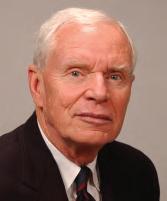
Strain is the only pediatrician to serve as both president and executive director of the American Academy of Pediatrics. As president, he was a strong advocate for legislation to help children with physical and social challenges. As executive director, he worked diligently for the Early and Periodic Screening Diagnosis and Treatment program. His leadership also included service as an ABP oral examiner, as chair of the National Advisory Committee on Childhood Vaccines, and as a senior member of the Institute of Medicine. Prestigious tributes accorded him include the James E. Strain Award at Children’s Hospital Colorado and the James E. Strain Community Service Award at the Colorado Chapter of the AAP.
Paul Tschetter, MD, earned his medical degree from the University of Colorado School of Medicine. One of the first graduates to be part of the University’s inaugural “straight Pediatrics” internship, he completed his Pediatrics residency in the program, and served as Chief Resident for 1962–1963. Tschetter then entered into private practice, serving concurrently as the physician for Denver Juvenile Hall and the Tri-County Health Children and Youth Program. He became a valued member of the Department of Pediatrics clinical faculty, teaching medical students, Child Health Associates, interns, and residents in his office.
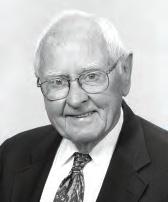
Tschetter also championed the affiliation between the University of Colorado Health Sciences Center and The Children’s Hospital, rallying support among community pediatricians. His many recognitions include: the Outstanding Service Award, Dr. Minnie C.T. Love Medicine Award, and the James E. Strain Award from The Children’s Hospital; the Russell C. Polton Award for 30 years as an advisor to the Cherry Creek School District; and the Department of Pediatrics’ Career Teaching Scholar Award, presented in 2002.
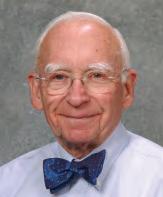
202 DEPARTMENT OF PEDIATRICS TRIBUTES
NEAR HORIZONS
Traveling the nearly 90 years from the Department of Pediatrics’ formation to today ushers in the next, necessary question: What’s ahead? The care provided by Children’s Hospital Colorado and School of Medicine Pediatric faculty is guided by data-driven strategy and our collective commitment to meet the needs of the families served. Raphe Schwartz, CHCO’s Chief Strategy Officer, offers a roadmap for the future.
Local Leadership 205 Regional Leadership 206 National Leadership 207
CONTENTS
203 DEPARTMENT OF PEDIATRICS NEAR HORIZONS
Raphe Schwartz Senior Vice President, Chief Strategy Officer
Children’s Hospital Colorado
As we shift our attention to the future, the Department of Pediatrics has abundant opportunities to realize its mission. The future is now for Pediatrics. Through its collaboration with Children’s Hospital Colorado (CHCO), the Department and the hospital are delivering on a myriad of roles locally, regionally and nationally.
1 LOCAL Population Health Manager
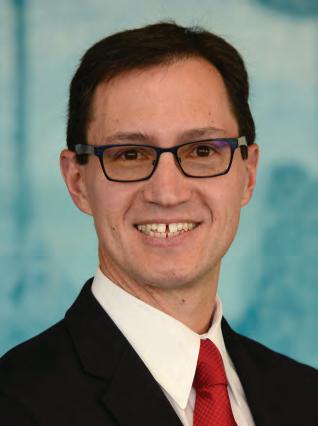
The ‘manager’ of health, outcomes and cost for the children of Colorado.
2 REGIONAL Provider of Complex Care
The ‘go to’ place for complex pediatric care in the region
3 NATIONAL
Children’s Hospital “Super-Center”
The leader in child health research, education and clinical care in the Rocky Mountain region.
“Together, Children’s Hospital Colorado and the Department of Pediatrics are pursuing several strategies to become the population health manager for this state’s children.”
204 DEPARTMENT OF PEDIATRICS NEAR HORIZONS
LOCAL LEADERSHIP: Population Health Manager
In Colorado, the Department of Pediatrics and CHCO are collaborating in every geography and with many partners to be the comprehensive provider of both lowand high-complexity services. These expanding services not only provide a foundational setting to provide premier educational programs, but also allow us to address the social and clinical determinants of health. Together, the hospital and Department of Pediatrics are pursuing several strategies to become the population health manager for Colorado children.
NETWORK OF CARE
CHCO and the Department of Pediatrics have built one of the largest and most sophisticated networks of care in the United States with the purpose of providing the right care to the right children at the right time and close to home. In addition to the world-renowned Anschutz Medical Campus, we have just opened a full-service, high-acuity children’s hospital in Colorado Springs in May 2019. This campus will become our Window to the South, serving low- and high-acuity children from across southern Colorado. The hospital and Department of Pediatrics will also expand our North Campus in Broomfield in 2020 with a facility four times its original size. We will be increasing the number of exam rooms from 18 to more than 100 and offering a dedicated Pediatric ED, urgent care, specialty clinics, and inpatient beds. While our South Campus
in Highlands Ranch is only a few years old, we are continuing to increase and enhance our services there to meet the needs of our South Denver communities. Finally, in addition to our brick-and-mortar sites, the Department is deploying renowned specialists to over 20 outreach sites across Colorado. Over the next few years, the Department of Pediatrics will continue to grow into these new, expanded, and outreach sites to become one of the most accessible pediatric departments in the nation.
HEALTH PAVILION
The Department of Pediatrics is also partnering with the hospital to open Children’s Colorado Health Pavilion in late 2019. This campus is a four-story, 110,000-square-foot building located less than one mile south of the Anschutz campus. The site presents a unique opportunity to directly serve and be the population health manager for the Aurora community and families. The modern and progressive design of the Health Pavilion will allow CHCO and the Department of Pediatrics to create the integrated pediatric medical home of the future. In so doing, it will improve access for an underserved population, allow us to more directly address the social determinants of health for our community, and achieve our collective mission to improve the health of children. We expect the new site will quickly accommodate 150,000 primary care, adolescent, behavioral health, dental, and other specialty visits.
PEDIATRIC CARE NETWORK (PCN)
The Department of Pediatrics has become an important component of CHCO’s new clinically integrated network called the Pediatric Care Network. In less than 3 years, the network has grown to over 1,400 pediatric providers across more than 65 locations. Together, the Department of Pediatrics and the PCN are creating a single system of care to improve quality, coordination and consistency of care. Working with pediatricians and the network, we are collaboratively defining first-line treatments in the office for common specialty conditions and referral guidelines for when patients need escalated pediatric services. Together, we are achieving triple-aim goals and becoming the population health manager for the children of Colorado.
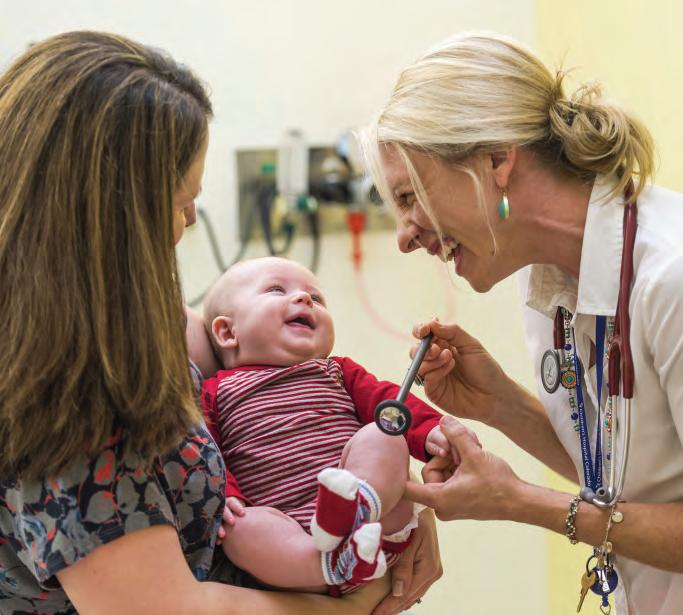
205 DEPARTMENT OF PEDIATRICS NEAR HORIZONS
More than 1400 pediatric providers are now part of our Pediatric Care Network.
REGIONAL LEADERSHIP: The Provider of Complex Care for the Region
Across the seven-state region, The Department of Pediatrics and CHCO have developed our Care Alliance network with the goals of elevating pediatric care in communities from Billings, Montana, to Albuquerque, New Mexico and everywhere in between. When highly complex patients can’t be served in their home communities, we also provide seamless coordination of care to, and then home from, Children’s Hospital Colorado.
Over the past three years, eight hospitals and systems have already signed on with us as Care Alliance partners. To date, the partnerships have offered continuing
education, preceptorships, observorships, and joint case conferences with physicians, nurses, and clinicians to share knowledge and learnings on a regular basis. After completing detailed clinical assessments at the beginning of each Care Alliance partnership, we begin delivering specialty clinics and services both in-person and via telemedicine to complement and support the pediatric services in each region.
As part of these affiliations, we are greatly improving our digital communication with providers across the multi-state region through our new OneCall referring
Billings Clinic
Billings, MT
August 2016
Boulder Community Health

Boulder, CO
June 2018
Centura Health
Colorado
September 2018
Cheyenne Regional Medical Center
Cheyenne, WY
December 2015
Denver Health
Denver, CO
December 2018
Presbyterian Hospital
Albuquerque, NM
January 2016
St. Mary’s Medical Center
Grand Junction, CO
April 2017
Wyoming Medical Center
Casper, WY
May 2018
St. John’s Health
Jackson, WY
Finalized 2019
MONTANA WYOMING COLORADO NEW MEXICO KANSAS NEBRASKA SOUTH DAKOTA
CARE ALLIANCE NETWORK 1 5 2 6 3 7 4 8 9 1 2 3 5 4 6 7 8 9
206 DEPARTMENT OF PEDIATRICS NEAR HORIZONS
Since 2005, Children’s Hospital Colorado has been recognized for excellence in nursing by the American Nurses Credentialing Center’s Magnet Recognition program.
provider phone line and Tiger Text, our HIPAAcompliant secure messaging system. Referring providers are finding it easier and easier to communicate with our physicians and health system around shared patients. In addition, we are working ever closer with families to facilitate their access to transportation, lodging, and other family and support services while they are in Colorado.
Over the next few years, we will continue to partner with new hospitals and systems across our multi-state area. We plan to supplement our partners with rapid access to second-opinion services, easy transport to and from our Campuses, enduring education delivered just-in-time, and increasing opportunities to participate in research collaborations with our investigators. We also are advancing our digital capabilities to enable EDs and NICUs in our Care Alliance sites to consult rapidly and seamlessly with our faculty providers.
Over the next few years, the Department of Pediatrics and CHCO are pursuing an ambitious agenda to remain among the leading eight to 10 children’s hospital supercenters in the nation. We believe these supercenters will be preferentially selected as the place to practice for preeminent providers, the place to visit for complex patients and the places that originate innovative breakthroughs in pediatric medicine. These organizations are defined by seven characteristics. We are and will continue to be a leader across each of these dimensions.
SCALE
We firmly believe that in pediatrics, scale drives quality. We have seen, again and again, how sizable volumes can lead to better outcomes and heavy reinvestment in pediatrics. Fortunately, few child health enterprises are growing more quickly than ours. With the opening of Colorado Springs Hospital, the vastly expanded North Campus and the new Health Pavilion, CHCO and the Department of Pediatrics will be one of the largest and most successful pediatric enterprises in the country. State demographers anticipate that Colorado’s population growth will continue for another 30 years and we will continue to expand to meet the state’s needs. While we anticipate new physical sites of growth in the near future, we will continue to grow our Care Alliance partners across a multi-state region and continue to grow our outreach services both in-person and via telemedicine.
SAFETY
Over the past few years, the Department of Pediatrics and CHCO have become a beacon for child health safety across the nation. Target Zero continues to be a multi-year effort, focusing organizational attention at every level on safety and progressively eliminating preventable harm at CHCO. Through our Target Zero work, we have greatly increased our safety bundle compliance. We have reduced serious safety events and hospital acquired conditions, dramatically. In 2015, we became the first and still only Children’s Hospital to be awarded the American Hospital Association Quest for Quality Prize. But, our work is not done. We are continuing and intensifying our work around safety to become the absolute safest environment for children in the nation.
PREEMINENT OUTCOMES
A child’s health can go from bad to worse in the blink of an eye. We believe parents should take their children to children’s hospitals that can deliver high quality, complex care at a moment’s notice. Where you go first, matters. That’s why CHCO and the Department of Pediatrics are working together to achieve unprecedented outcomes in all of our critical care units. In our prenatal, cardiac, and neonatal intensive care units, our physicians and nurses deliver remarkable care, resulting in risk-adjusted mortality rates that are astoundingly
NATIONAL LEADERSHIP: Children’s Hospital “Super-Center”
207 DEPARTMENT OF PEDIATRICS NEAR HORIZONS
“Over the next few years, the Department of Pediatrics and CHCO are pursuing an ambitious agenda to remain among the leading 8 to 10 children’s hospital supercenters in the nation.”
low and in some cases set the standard for the nation. However, the outcomes we deliver are not just limited to life and death situations. We deliver unparalleled value even for the most common diagnoses. As examples, we have reduced CT scans by 70 percent in the diagnosis of appendicitis, resulting in the avoidance of high-dose radiation. We also have greatly reduced chest x-Rays, antibiotics, expensive viral testing, and invasive suctioning for over 3,000 children with bronchiolitis annually.
RESEARCH EXCELLENCE
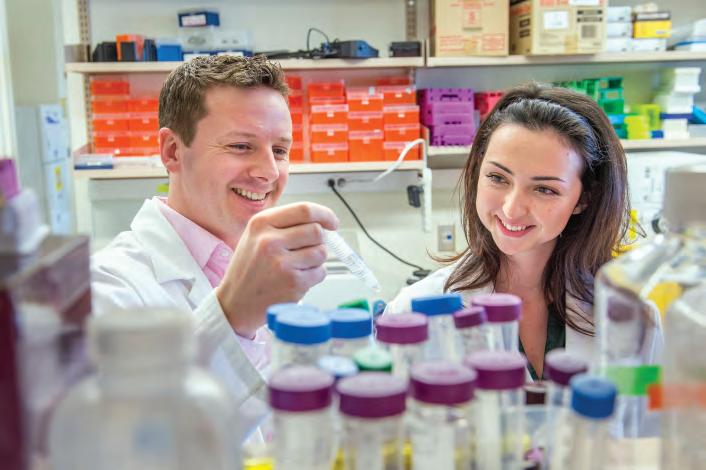
Perhaps the most distinguishing characteristic of the nation’s children’s hospital supercenters is research leadership. Collaboration is the hallmark of our child health research culture on the Anschutz Medical Campus and, together, we are a leading source of discovery and innovative life-saving treatments. Last year, our research platform was awarded over $120 million in externally sponsored, child health research grants. Our innovations,
breakthroughs, novel treatments, and health services research are prolific and span several of our centers and institutes including breathing, digestive health, cancer and blood disorders, heart, neuro, fetal, neonatal, orthopedic, transplant, and many others. We are in the midst of a campus-wide research strategy to remain among the national leaders in child health research.
MAGNETIC PROGRAMS
Our child health campus is increasingly becoming the destination center for complex patients. Pediatric patients from every state and more than 35 countries around the world now look to our campus seeking cures, novel treatments, proven therapies, and our caring spirit. Our child health values of humble expertise, generous service, and boundless creativity are infectious for caregivers too. Our collaborative culture, coupled with advances in our programs and the desirability of Colorado as a place to live, are increasing the attractiveness of our campus and making it the career-long destination for preeminent faculty from around the world.
PHYSICIAN ALIGNMENT
While our structures remain separate with independent hospital, department, and private primary care entities, we have collectively entered an era of unprecedented alignment across the campus and the region. For us, the key is collaboration, not structure. The collaboration of the Department of Pediatrics, CHCO, and campus leadership is increasingly allowing our organizations
to think and act as one. Every day, our clinically integrated network is bringing our pediatric community closer to a single, integrated system of care. Finally, our Care Alliance partnerships are connecting us with providers across a multi-state region with a shared mission to improve the health of children.
PHILANTHROPY
Children’s hospital supercenters have demonstrated huge success in raising philanthropic funds to support facility construction, recruitment, research and innovation, renowned clinical programs, underfunded mandates, and scholarship opportunities. Our campus is no exception. Over the past 10 years, we have significantly increased our annual fundraising to support these dimensions of our child health enterprise. The relationship between our Foundation, the hospital, and our faculty has never been closer, making us stronger than ever together. We will continue to partner with our Foundation to become the most favored not-forprofit organization in Colorado and beyond.
The Department of Pediatrics and CHCO will continue working in close partnership to fulfill a myriad of local, regional, and national roles, securing our child health enterprise as one of the true pediatric super-centers. It is an important responsibility and powerful opportunity, and one for which many decades of stellar leadership have positioned us well.
208 DEPARTMENT OF PEDIATRICS NEAR HORIZONS
Collaboration is the hallmark of our child health research culture on the Anschutz Medical Campus.
Dear Friends of the Department of Pediatrics,
It has been my great honor to help create this departmental history. This project grew out of a series of conversations over the past decade, many related to my direction of several departmental reports, celebratory events and the Career Teaching Scholars program.
Each time we have honored faculty members for their unique contributions to pediatrics, stories, and insights have been shared that added fresh dimensions to the known scope of their work. The stories—from residents, faculty, and retired colleagues, alike—have ranged from the heartfelt to the heartbreaking. Together, they have reinforced how fortunate the families of this region have been to benefit from these pediatricians’ care, knowledge and discoveries, and how much richer our own professional lives have been because of their generosity.
This book captures, to the best of our ability, the key achievements, advances, and leadership of the Department of Pediatrics from its formation in 1930 through 2018. I’ve been privileged to have viewed the milestones recorded since 1972 in real-time, given my 20 years as a neonatal social worker in the Newborn Center at The Children’s Hospital, and, since the affiliation, as Assistant to the Chair. Capturing nearly 90 years of care between two covers, however, has been challenging, and we regret any oversights.
Finally, I am most grateful to the history project committee—Drs. Steve Daniels, Doug Jones, Jim Todd and Mimi Glodé—and to our talented co-editor Carla Carwile and book designer Helen Young. Their responsiveness, persistence, and humor over the past five years have been remarkable. I speak for us all in saying it has been time well spent.


Warmly,
WITH GRATITUDE
Bobbi Siegel, MSW
209 DEPARTMENT OF PEDIATRICS ACKNOWLEDGEMENTS
History Project Committee: Doug Jones, Mimi Glodé, Steve Daniels, Bobbi Siegel, and Jim Todd
ACKNOWLEDGEMENTS
Department of Pediatrics History Book
By Stephen R. Daniels, MD, PhD, Professor and Chair, Department of Pediatrics
It is always important to understand the history of institutions as that history can be a cause for celebration and create the platform for the future. This is why we decided to look back at the history of the Department of Pediatrics at the University of Colorado School of Medicine.
It is important to note that there is a very big difference between the desire to explore history and actually accomplishing that task. Discovering and documenting our history took a true team effort. It occurs to me that the teamwork involved in putting this book together actually reflects the teamwork and collaboration that is a hallmark of our Department.
There are numerous people without whom this project would not have succeeded. I can only mention a few here, but others will also recognize their contributions in the final project. First, Bobbi Siegel has had a passion for this project that was unmatched. In her position as Assistant to the Chair of Pediatrics, she has been able to see the history of our Department unfold firsthand. Her persistence, for which she is well known, paid off manyfold for the ultimate scope and accuracy of this project. We also enlisted the help of senior leaders in our Department to create a Committee to ensure that we searched every corner of the activities of our faculty, both on our campus and in the community. The Committee members were Drs. Mimi Glodé, Doug Jones, and Jim Todd. This Committee suggested topics for inclusion, provided a filter for determining which aspects were most important, and spent countless hours editing content for accuracy and clarity. We also had a group of guest reviewers that included Drs. Frank Accurso, Stephen Berman, Bonnie Camp, Paul Fennessey, Michael Hambidge, David Kaplan, Michael Kappy, Richard Krugman, Karen Leamer, Marilyn Manco-Johnson, John Ogle, Steven Poole, Harley Rotbart, James Shira, Arnold Silverman, Ronald Sokol, and Robert Wolfe.
In order to have a clearly written product, we enlisted the services of Carla Carwile. She was an obvious choice as she had worked on an earlier version of the History of the Department. While this was a clear advantage, Carla was also someone who has developed a passion for our history and expressing it clearly. She searched many sources of information and found important documents, many of which had been forgotten. In addition, Carla interviewed numerous faculty members, both active and retired, uncovering important and compelling stories that make up our history.
Heather Twidale was invaluable in editing the history and, because of her involvement with the Department over a decade, was able to point out areas that needed revision or clarification. Genevieve Tobin-Robson managed documentation and Helen Young of EnZed Design was our designer. Helen used her skill to make our history look elegant and compelling. We also want to thank Jena Hausmann, Chief Executive Officer and Raphe Schwartz, Chief Strategy Officer of Children’s Hospital Colorado, for their support of this project. Without their partnership in the story itself and without their support for the project, this history would not have been possible.
Finally, it is important to acknowledge the many truly outstanding faculty members in the Department of Pediatrics who have contributed to making our Department and its history the juggernaut that it is. The commitment of our faculty over decades to the clinical care of children and adolescents, research that improves care, education of future leaders in Pediatrics, advocacy for improving the lives and health of children, creation of equity in health care, and support of diversity and inclusion in our faculty, has truly changed the world for children. As we look at our history, we have much of which to be proud. We also recognize that we still have much to do and commit to using our history as a springboard for continuing to improve the health and wellbeing of children and adolescents around the globe.
FEBRUARY 28, 2022 210 DEPARTMENT OF PEDIATRICS ACKNOWLEDGEMENTS
THE EDITORS OF THIS BOOK ALSO THANK:
The more than 100 physicians who provided facts, perspectives and anecdotes to make this history live
The Families of Jules Amer, MD, Max Ginsburg, MD, and C. Henry Kempe, MD, for sharing personal photos, writings, and memories.
The Family of Robert Shikes, MD, for granting access to his Strauss Library archives.
The Department of Pediatrics staff: Genevieve Tobin-Robson, Project Assistant; Heather Twidale, Chair Communications Specialist; and Michael Weiler, Website Administrator.
The following Children’s Hospital Colorado staff:
• Vice President Charlotte Isoline and her creative team
• Marie St. Pierre, MLIS, AHIP, Medical Librarian/Informationist
• Tia Brayman, Staff Photographer
Strauss Health Sciences Library Digitization Manager Debra Miller, BFA
For additional editing support: Kate Atrash, Lynn Clark, and Natalie Sidor.
For inspiration
• Carla Carwile: E. F. Ritter, MD (1914–1985); Jordis Ruhl (1956–2008); and Albert S. Williams.
• Roberta Siegel: Gary Siegel
SOURCES & RESOURCES
Primary Sources
CU ANSCHUTZ CAMPUS RESOURCES
Children’s Hospital Colorado Medical Library
Mountain Scholar Digital Collections of Colorado mountainscholar.org
Strauss Health Sciences Library, University of Colorado School of Medicine
PUBLICATIONS
Amer, Jules. Intimate Strangers: Stories from a Lifetime of Practicing Medicine. Denver, Colorado. Story Preserves, 2014.
American Academy of Pediatrics: Oral Histories www.aap.org/en/community/aap-sections/sonpm/neonatologists/oral-histories
Gartner, Lawrence M. Oral History Project: Frederick C. Battaglia. Denver, Colorado. October 20, 2005
Gartner, Lawrence M. Oral History Project: James E. Strain. Denver, Colorado. March 20, 2015.
Nelson, Russell A. Oral History Project: L. Joseph Butterfield, MD. Denver, Colorado. June 24, 1997.
Nelson, Russell A. Oral History Project: Lula Lubchenco, MD. Denver, Colorado. June 25, 1997.
Arthur, James. A Long Row Through Life (Personal Memoir). Denver, Colorado. Arthur Family Collection.
Baker, Jeffrey P., and Pearson, Howard A. Dedicated to the Health of All Children: 75 Years of Caring, 1930–2005. Elk Grove Village, Illinois. American Academy of Pediatrics, 2005.
Berman, Stephen. Getting It Right for Children: Stories of Pediatric Care and Advocacy. Elk Grove Village, Illinois. American Academy of Pediatrics, 2008.
Bradbury, James. Profile: Harry H. Gordon, MD. Perinatology-Neonatology, Vol. 6, No. 2. March-April, 1982.
Chase, Peter H., and Palandri, Sue. Diabetes: A History of a Center and a Patient. Denver, Colorado. Children’s Diabetes Foundation, 2011.
Claman, Henry N., and Shikes, Robert H. The University of Colorado School of Medicine Millennial History. Denver, Colorado, University of Colorado School of Medicine, 2000.
211 DEPARTMENT OF PEDIATRICS SOURCES & RESOURCES
SOURCES & RESOURCES
Costello, Elizabeth, Fulcher, Michelle, and Graham, Sandy. Let It Be Us: A History of Children’s Hospital Colorado. Aurora, Colorado, Children’s Hospital Colorado, 2011.
Fitzsimons Army Medical Center, Aurora, Colorado: A Commemorative History. Aurora, Colorado. Fitzsimons Army Medical Center Public Affairs Office. 1996.
books.google.com/books?id=VusrnQEACAAJ&printsec=frontcover&source=gbs_ge_summary_r&cad=0#v=onepage&q&f=false
Fulginiti, Vincent. Profiles in Pediatrics II: C. Henry Kempe. The Journal of Pediatrics, 1994;125:153-4.
Ginsberg, Max. My Memoirs. Denver, Colorado. 1982. Ginsburg Family Collection.
Hendricks, Rickey Lynn, and Foster, Mark S. For a Child’s Sake: History of the Children’s Hospital, Denver, Colorado, 1910–1990. Denver, Colorado. University Press of Colorado, 1994.
Kempe, Annie. A Good Knight for Children: C. Henry Kempe’s Quest to Protect the Abused Child. Booklocker.com, Inc. 2007.
Noel, Thomas J. University of Colorado Hospital: A History. Denver, Colorado. University of Colorado Hospital Foundation, 2012.
Shikes, Robert H., and Claman, Henry N. The University of Colorado School of Medicine, A Centennial History 1883–1983. Denver, Colorado, University of Colorado School of Medicine, 1983.
Todd, James K, Clinical Science with a Heart: The History of Research at The Children’s Hospital, 1910–1990. Physician typescript, 1991.
University of Colorado Denver School of Medicine Department of Pediatrics Departmental Reports: 1993–2018.
Welsome, Eileen and Papaleo, Ken. A Dream Delivered: The Community Health Center Movement in Denver. Denver, Colorado, Denver Community Health Services, 2016.
Wheelock, Seymour. The History of Children’s Hospital—from Tent to Computer (A presentation to the Medical Staff of The Children’s Hospital, Denver, Colorado), July 23, 1980.
New Times, New Names
The evolution of health care education, clinical services, and delivery systems is reflected in the progression of name changes by Department of Pediatrics partners and organizations. The following list of current names and precedents is provided for clarification.
Children’s Hospital Colorado was formerly The Children’s Hospital and known informally as Denver Children’s Hospital.
UCHealth University of Colorado Hospital was previously named Colorado General Hospital and became the University of Colorado Hospital (a public authority) in 1989.
Denver Health Medical Center (also a public authority) has been called City Hospital, the Poor House, County Hospital, Arapahoe County Hospital, and Denver General Hospital. Fitzsimons Army Medical Center was originally Army Hospital 21. Renamed Fitzsimons
Army Hospital, it was known in military circles as the U.S. Army Clinical Specialist School. National Jewish Health’s prior names include Frances Wisebart Jacobs Hospital, National Jewish Hospital for Treatment of Consumptives, and National Jewish Hospital and Research Center. Its related entities have included the National Asthma Center (formerly the National Home for Asthmatic Children at Denver and the Children’s Asthma Research Institute and Hospital or CARIH.)
University of Colorado School of Medicine has carried the same name since its inception in 1883. In 2004, it became part of the University of Colorado at Denver and Health Sciences Center. The CU School of Medicine name was restored in 2006.
University of Colorado Health was formed on January 31, 2012 and has done business as UCHealth since 2014. It is a joint operating company between the authority and Poudre Valley Health (of Poudre Valley Hospital). In August 2012, voters in Colorado Springs approved a special election measure to allow UCHealth to lease and operate Memorial Hospital.
University of Colorado Medical Center at 9th Avenue and Colorado Boulevard was renamed the University of Colorado Health Sciences Center in 1976. Between 2004 and 2008, the campus relocated to the closed Fitzsimons Army Medical Center in Aurora. It later became the University of Colorado Anschutz Campus.
212 DEPARTMENT OF PEDIATRICS SOURCES & RESOURCES
Abman, Steven H. 43–44, 46, 79, 107, 115, 137, 141–143, 154, 172, 176
Abzug, Mark J. 32, 72, 103, 158
Accreditation Council for Graduate Medical Education (ACGME) 24, 88, 112–113, 148
Accurso, Frank J. 44, 47, 50, 115, 173, 174, 177, 201
Adaptation of Hypoxia Program 43, 141, 143, 197
Adolescent Medicine 9, 32, 74–75, 119, 148
Adolescent Medicine Clinics
Adolescent Clinic 37, 74–75
Adolescent Family Planning Clinic 74–75
Adolescent Gynecology Program 74
Colorado Adolescent Maternity Program (CAMP) 75
Prenatal Young Mothers Clinic 74–75
TRUE Center for Gender Diversity, The 74–75
Adult and Child Consortium for Health Outcomes Research and Delivery Science (ACCORDS) 96, 129, 144, 189
Aerodigestive Program 95, 114
Agency for Health Care Research and Quality 144
Albert Einstein Medical College 10–11, 177, 184
Aldoretta, Peter W. 154
Allergy and Immunology 32, 76–77, 116, 148
Alway, Robert 12–13, 31, 36
Ambruso, Daniel R. 100
Amer, Jules 16, 52, 92, 151–152, 172–173, 199–200, 211
Amer, Marilyn 16
American Academy of Pediatrics (AAP)
7, 9–11, 13, 18–19, 24, 29, 31, 34, 44–45, 47–48, 84, 96, 107, 110, 115, 122–125, 130–132, 146, 151, 157, 160, 166–167, 176, 178, 180, 191, 195, 198, 201–202
American Board of Pediatrics (ABP) 9, 24, 75, 92, 105, 108, 113, 122–123, 197, 202
American Epilepsy Society 82
American Heart Association 29, 131, 165, 176, 181
American Hospital Association 51, 119, 207
American Medical Association 8, 16, 124, 155–156
American Pediatric Society 9, 11, 29, 178, 197
American Society of Human Genetics 97
Amesse, John W. 8, 199
Amy Medical Corps 10, 184, 201
Anderson, E. G. 153
Anderson, Lauren R. 154
Anderson, Mark E. 154
Anderson, Marsha S. 27, 150, 154
Andresen Arthur, Mary 80, 173, 177
Anna and John J. Sie Center for Down Syndrome 49, 118
Anschutz Medical Campus 49, 57, 63–64, 66, 86–87, 101, 112, 116, 129, 132, 134–135, 138, 181–182, 187, 205, 208, 212
Appel, Bruce H. 32, 87, 175
Arfsten, Gregory A. 172
Armon, Carl 125
Arnold (Plattenburg), Danielle D. 154
Arnold Silverman, MD Endowed Chair in Digestive Health, The 59, 94, 175, 195
Arnold-Rehring, Sharisse 172–173
Arthur, James H. 152, 172–173, 177, 200
Asher-Accurso Family Chair for Cystic Fibrosis 174
Association of Medical School Pediatric Department Chairs, Inc., The 20, 29, 44, 178, 197
Asthma Program 114–115
Asturias, Edwin J. 50, 72, 132, 150, 174
Atkins, Dan 32, 76–77, 94
August, Charles 100
Austin, Eric D. 154
Austin, James 81
B.F. Stolinsky Research Laboratories 88, 99, 183
Bajaj, Lalit 154
Baker, Christopher D. 132
Baker, Jeffrey P. 146, 154
Barbara Davis Center for Childhood
Diabetes, The 20, 32, 43, 63, 67, 91–92, 97, 175, 181, 192
Barkin, Roger M. 153
Barley, Gwyn 150
Barron, Donald 18–19
Bartlett, William H. 153
Barton Family Chair Bone Marrow Transplant 174
Battaglia, Frederick C. 7, 18–22, 31, 40, 42, 44, 54, 84–85, 105–107, 138, 146, 151, 172–173, 178, 191
Battered Children Syndrome, The 15–16, 38, 126, 155
Beil, Elizabeth E.M. 154
Benke, Timothy A. 83, 175
Berkowitz, Ivor D. 154
Berman, Stephen 46, 48, 50, 59, 96, 121, 124–125, 129, 132, 150, 153, 172, 174, 178, 210
Bernard, Aline M. 154
Bernard, Timothy J. 83
Beuf, Francesco 173
Biester, Doris (Dori) J. 57
Bill & Melinda Gates Foundation 110
Billings Clinic 206
Birth Defects Clinic at University Hospital 98
Black, Callie G. 154
Blackburn, Will 39
Blakeman, Gordon J. 55, 152–153, 173, 177, 200
Blanchette, Eliza D. 109
Blankenship, Jr., Lua 23, 54
Block, Steven M. 154
Boat, Thomas F. 24
Bock, Margaret E. 109
Bock, S. Allan 172
Bonfils, Frederick G. 64
Borden Award for Nutritional Research 10–11, 178
Boschen, Thomas E. 153
Bosley, John C. 154
Bothner, Joan P. 89–90, 179
Boucek, Mark M. 175
Boulder Community Health 206
Bourque, Stephanie L. 154
Bowser, Jonathan M. 32, 80
Boyd, Edith 38, 146
Brayden, Robert M. 46, 172
Brayman, Tia Inside cover, 211, 216
Brazie, Joseph V. 153
Brooks-Kayal, Amy R. 32, 81–82, 175
Bross, Donald (Don) C. 17, 126, 155

Brown, Jeffrey M. 132, 150, 154
Brumbaugh, David E. 154
Bruns, Paul 18
Buckley, Jerome M. 172
Buist, Neil R. 99
Bunik, Maya 46, 128, 154
Burchell, Molly F. 154
Burns, Jane C. 45, 154
Butterfield, L. Joseph (Joe) Cover, 22, 24, 39, 61, 105–107, 130–131, 174, 179
C. Henry Kempe Center for Investigative Pediatrics 16, 44, 139, Cadnapaphornchai, Melissa A. 108–109 Cafferty, Rachel 89
Calkins, Barbara B. 154
Call, Keren E. 173
Calzolari, Elaine 65
Camp Hale 140
Camp, Bonnie W. 36, 59, 88, 172–173, 180, 210
Campbell Williams, Carey A. 154
Campbell, Winona 11
Cannabis 128
Cara Fuentes, Gabriel 109
Cardiology 32 42, 78–79, 148, 175, 196
Cardiovascular Pulmonary (CVP) Research Laboratory 85–86, 137–138, 141, 143, 197 Care Alliance Network 206–208
Career Teaching Scholar(s) 82, 91, 96, 101, 106, 130, 149, 151–152, 172–173, 177–178, 180, 183, 185, 187, 189, 191–192, 195–196, 198, 200–202, 209
Carland, James F. 153
Carlson-Des Prez, Karen 154
Carlson, Nancy C. 154
Carpenter (Canfield), Sara C. 154
Carpenter, Todd C. 85–86 Carwile, Carla J. Title page, 209–211, 216
Casey, Robert L. 100
Center for Cancer and Blood Disorders (CCBD) 100–101, 136
Center for Global Health, The 50, 57, 124, 132, 152, 178
Centers for Disease Control and Prevention (CDC) 71, 178, 189, 200
Centura Health 206
Chase, H. Peter 63, 99, 174
Chau, Thomas 152
Chevalier, Robert L. 108
Cheyenne Regional Medical Center 206
Chief Residents 22, 74, 78, 91, 94, 96, 123–124, 134, 153–154, 157, 178, 182, 195, 197–198, 200–202
Child Abuse Response and Evaluation (CARE) Network 126
Child Development Unit 88
Child Health Associate/Physician Assistant Program 16, 31–32, 40, 61, 80, 96, 149–150, 155–156, 177, 191, 194, 200
Child Health Clinic/Child Health Associates Program 96, 123, 128, 159, 202
Child Neurology 32, 81–83, 148
Child Neurology and Neurosciences Institute 81–83
Child Protection Team 17, 126
Child Research Council 9, 160
Child Welfare Training System 126
Childhood Arthritis and Rheumatology Research Alliance (CARRA) 117
Children’s Asthma Research Institute and Hospital (CARIH) 62, 212
Childhood Liver Disease Research Network 94
Children’s Diabetes Foundation 63
Children’s Diagnostic Center 36, 180
Children’s Hospital Colorado Chair in General Pediatrics 124, 174
Children’s Hospital Colorado Foundation 21
Children’s Hospital Colorado HIV Program 103
Children’s Hospital Colorado South Campus (Colorado Springs) 56–57, 67, 89–90, 116, 205, 207
Children’s Hospital Research Institute 16, 28, 136, 139
Children’s Insurance Program 125
Children’s National Health System 72
Children’s Hospital Immunodeficiency Program 75, 104
Children’s Interstitial Lung Disease (chILD) Program 114–115
Children’s Outcomes Research Program 96, 136, 144
Christoff, Andrea S. 154
Claman, Henry N. 12
Clarke, David R. 23, 54, 78
Clarke, Susan B. 130–131
Clemmens, Michael R. 154
Clements, John 114, 180
Clinical Faculty Affairs Committee 151–152, 201
Clinical Genetics and Metabolism 32, 97–98, 183
Clinical Trials Organization 136
Clyman, Robert 126, 175
Cody, Ellen 27
Cohen, Gail 27
Cohen, Kenneth J. 154
Cohen, Stanley 11
Colorado Bioscience Park Aurora 135
Colorado Center for Personalized Medicine (CCPM) 145
Colorado Child Health Plan 46, 125, 178
Colorado Children’s Immunization Coalition 129
Colorado Children’s Healthcare Access Program (CCHAP) 49, 96, 125, 201
Colorado Clinical and Translational Sciences Institute (CCTSI) 107, 134–136, 144,
Colorado Department of Health 11, 30, 163–164, 168
Colorado Department of Health Care Policy and Financing (HCPF) 125, 144
Colorado Department of Public Health and Environment (CDPHE) 115, 125, 128–129, 144, 168
Colorado Fetal Care Center 105
Colorado General Hospital 9, 12, 14, 17, 64, 74–75, 78, 81, 84, 93–94, 102, 117, 122, 150, 153, 162–164, 180, 190, 192, 195, 199, 212
Colorado Health Outcomes Program 136, 144
Colorado Indigent Care Program 125, 178
Colorado Institute for Maternal and Fetal Health 107
Colorado Multiple Institutional Review Board 109, 128
Colorado REACH (Race, Education, and Advocacy in Community Health) 150
Colorado School of Public Health 50, 124, 132, 144, 152, 178, 181, 189
Colorado Sickle Cell Treatment and Research Center 31, 182
Colorado State University 80, 132, 135, 152
Committee on Fellowship Education 150
Community Child Health Foundation 125
Conger, John J. 40, 88, 180
Connell, John R. 153
Consortium of Eosinophilic Gastrointestinal Disease Researchers (CEGIR) 94
Cook, Donald E. 47, 122, 124, 153
Cooper, Henry 74–75
Cotton, Ernest K. 44, 114, 173, 180
Cousins King, Renée A. 152
Coyer, William F. 153
Cozzetto, Frank 42, 59, 93–94, 195
Craig, Joseph A. 172
Crellin, Paul R. 153
Critical Care Medicine 32, 84–86, 148, 176, 197
Crnic, Linda S. 99, 118
Curran, Megan L. 116
Curriculum Improvement Task Force 150
Cystic Fibrosis Liver Disease Network 94
Dahl, LaMeta 11
“Amour Maternel” by Yencesse, the medallion awarded each resident completing pediatric training at the University of Colorado School of Medicine since 1966
213 DEPARTMENT OF PEDIATRICS INDEX INDEX
Dale, Cindy and Kristin Fracescon Endowed Chair for Headache Treatment 175
Daley, Matthew F. 46, 154
Daniels, Stephen R. 7, 26–29, 32, 49, 51, 76, 146, 150, 158, 160, 174, 181, 209–210
Danielson, Wayne H. 139
Darley Jr., Ward 10–11
Davis, Barbara 63, 92
Davis, Marvin H. 63, 92
DeBiasi, Roberta L. 72
DeBoer, Emily M. 50
Delaney, Cassidy A. 154
Denver Community Health Services (DCHS) 58–59
Denver Developmental Screening Test 40, 88, 146, 180
Denver General Hospital 9, 11, 19, 58, 84, 93, 102, 122, 150, 152–153, 161–163, 165, 195, 199–200, 212
Denver Health/Denver Health Medical Center 23, 25, 33, 35, 52, 58–59, 96, 109, 135, 144, 148, 206, 212
Deterding, Robin R. 32, 50, 52, 94, 114–115, 150, 172, 175, 211–212
Developmental Biology 32, 87, 192
Developmental Pediatrics 32, 87–88
Developmental Psychobiology Research Group 118
Di Maria, Vincent A. 154
Di Paola, Jorge 175
Diane G. Wallach Chair in Pediatric Stem Cell Biology 87, 175
Digestive Health Insititue 77, 93, 95
DiMichele, Donna M. 154
DiStefano, Michael C. 90
Division of Perinatal Medicine 18, 106, 178
Dixon, Brad P. 27, 109
Dixon, Donna 100
Dobyns, Emily L. 172
Dodds, Josiah B. 88, 146
Dominguez, Samuel R. 51, 70, 72, 104
Dorbandt, Allison 154
Dressler, Marion 38, 146
Drogemueller, William 155
Durante, Peter 23, 54
Early and Periodic Screening, Diagnosis and Treatment program 123, 202
Eating Disorder Program, The 75
Ed and Jeannette Kerr Family Endowed Chair in Endocrinology 175
Ed and Roxanne Fie Anderson Family Endowed Chair for Breathing 175
Ehst-Hummel-Kaufmann Family
Endowed Chair in Inherited Metabolic Disease 174
Eisenbarth, George S. 63, 181
Eleanor Roosevelt Institute 99, 118, 199
Elias, Ellen R. 172, 173
Elkayam, David 154
Elliott, Max 173
Emergency Medicine 32, 89–90, 148, 179
Endocrinology 32, 91–92, 148
Englund, Brian P. 172
Ergen Family Chair in Pediatric Cancer 174
Eugene S. Farley, Jr. Health Policy Center, The 127
Eunice Kennedy Shriver National Institute of Child Health and Human Development (NICHD) 86
Even, Leroy M. 153
Experimental Therapeutics Program 48, 100, 136, 148,
Faes, Debby J. 172
Family Planning Program 75
Fan, Leland L. 115
Faries, S. Glenn 150
Fasules, James W. 154
Federation of Pediatric Organizations 24, 187
Federico, Monica J. 115
Federico, Steven G. 49, 58, 132, 150
Feiten, Daniel J. 154, 172
Fennessey, Paul V. 32, 134, 210
Finkel, Terri H. 117
Fisher, Gerald (Bob) 30
Fitzsimons Army Medical Center (Fitz)/ Fitzsimons General Hospital 31, 33–34, 47, 60, 61, 64, 66, 150, 191, 212, 214
Fitzsimons Medical Campus 20, 24, 28, 31, 47, 49, 55, 60, 64, 66, 76, 86, 112, 116, 119, 138, 157, 198, 214
Fitzsimons, William T. 60
Flax, Leo 199
Fleischer, David M. 32, 50, 77
Flett, James 11
Flexner, Abraham 173
Flood, Shannon 154
Food and Drug Administration (FDA) 79, 101, 115, 142, 177
Ford, Douglas M. 108–109
Ford, Loretta C. 16, 39, 150, 155, 194
Foreman, Nicholas K. 175
Fostering Healthy Futures® 126
Foundations of Doctoring 150, 152, 201
Fragile X Sydrome: Diagnosis, Treatment and Research 44, 99, 185
Frankenburg, William K. 40, 88, 146, 180
Frauenberger, George S. 153
Frederick C. Battaglia Endowed Chair in Neonatology, The 21, 107, 174, 178
Freeman, Brandi K. 159
Frerman, Frank E. 99
Frid, Maria G. 48, 86, 137
Frieda and George S. Eisenbarth Clinical Immunology Endowed Chair 63, 174
Friedlander, Joel A. 50, 94
Friedman, Sandra L. 32, 88
Fries, Stephen M. 152, 172
Fry, Terry J. 101
Fuhlbrigge, Robert C. 32, 117
Fulginiti, Vincent A. 23, 35, 39, 54, 102, 104, 182
Furuta, Glenn T. 77, 94, 175
Gainor, Lauren H. 154
Gardner, John W. 171
Gardner, Sandra L. 107
Garg, Satish K. 63, 175 Garrington, Timothy P. 150 Gastroenterology (GI), Hepatology and Nutrition 24, 32, 77, 93–94, 134, 195, 196 Gates Biomanufacturing Facility 101
Gelfand, Erwin W. 62, 117 General Academic Pediatrics 32, 96, 148, 178
Genetic Counseling Training Program 98–99
Genetics and Inherited Metabolic Diseases Program 97, 99
Gengenbach, Franklin P. 7–10, 30, 34, 122, 150, 199
George, Diana M. 109
Gien, Jason 109
Giller, Roger H. 100, 174 Gillespie, Donald Dean 153 Ginsburg, Max 16, 199–201, 211 Gist, Katja M. 109
Githens, John (Jack) H. 31, 39, 42, 91, 100, 153, 173, 182
Givens, Timothy G. 32, 90 Glicken, Anita D. 80, 156 Glodé, Mary (Mimi) P. Cover, 45, 72, 103–104, 149–150, 158, 173, 183, 209–210
Glover, Jacqueline J. 150 Goebel, Jens 32, 109
Gold, Stuart H. 154
GoodLIFE Program 110
Goodman, Stephen I. 43, 98–99, 183 Gordon, Harry H. 10–13, 15, 18–19, 30, 35, 106, 141, 160, 166–167, 184, 199
Gordon, Steven K. 154
Gore, Lia 32, 48, 100–101, 174
Gotlin, Ronald W. 92, 153, 155, 173, 184
Green, Adam L. 154 Greenhawt, Matthew J. 76
Greer, Richard 153
Greffe, Brian S. 175
Gremmels, David B. 154
Groom, R. J. 153
Gross, Robert E. 78 Grover, Robert (Bob) F. 43, 137, 141, 143
Grow, John B. 36, 78
Grulee Award 123, 202
Guggenheim, Mary Anne S. 19, 44, 81–82, 94 Gutierrez, Kathleen M. 154
H. Peter Chase, MD, Endowed Chair 63, 174
Haberfeld Family Endowed Chair in Pediatric Neuromuscular Disorders 175
Hagman, Jennifer O. 75
Halbower, Ann C. 115 Hall, Daniel M. 25, 172 Hambidge, K. Michael 42, 46, 110–111, 146, 210
Hambidge, Simon J. 58
Hammond, Keith B. 44
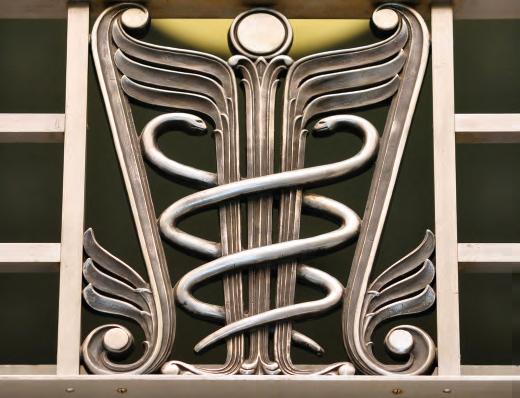
Hand, Tammie C. 154
Handbook of Neonatal Intensive Care 107
Hansman, Charlotte 38, 146
Harken, Alden H. 54 Hathaway, William E. 39, 100–101, 172–173, 185
Hausmann, Jena 57, 210
Hawes, C. Richard 78
Hay, William W. 107, 138, 211–212
Hays, Taru 100–101, 172–173
Hayward, Anthony R. 48, 117 Health Data Compass (HDC) 145
Heart Institute at Children’s Hospital Colorado 78–79
Hecker, James A. 153
Helen and Arthur E. Johnson Chair for the Cardiac Research Director, The 175
Hellegers, André E. 19
Helping Babies Breathe 107, 130, Helping Babies Survive 130–131
Hematology, Oncology and Bone Marrow Transplant (BMT) 32, 100–101, 148
Hensey, Owen 146
Hernández, Jacinto A. 150, 173
Herrmann, Heinz 11
Hewit/Andrews Chair in Pediatric Liver Disease 175
Hin Tijo, Joe 37, 97
Hirschfeld, Stephen S. 153
Hisrich, Erin Reneé 152
Hixon, Alison M. 72
Art
Hoch, Peter C. 153
Hoffenberg, Edward J. 94
Hoffman (Lund), Olivia L. 154
Hollister, J. Roger
Hoyt Stenmark, Sandra 55, 116–117, 172, 173, 186, 211–212
Huchton, Paul 153
Hudgins, Joel D. 154
Hudnut-Beumler, Julia M. 27
Huffman, Brenda L. 154
Huffman, Phyllis 153
Hulse, Whitney N. 27
Human Genome Project 97
Human Medical Genetics and Genomics Program 98
Humbert, James R. 100, 153
Hunger, Stephen (Steve) P. 100
Hunter, David 54
Hutton, John C. 63
Hyman, Daniel (Dan) 119
Infectious Diseases 32, 70, 102–104, 148, 158, 183, 198, 200
Ishizaka, Kimishige 62
Ishizaka, Teruko 62
Institute of Medicine of the National Academy of Sciences 123, 155, 178, 202
Intellectual and Developmental Disability Research Center 118
Ivy, D. Dunbar 32, 78–79, 115, 137, 141–143, 175
Jack and Viki Thompson Chair in Child Maltreatment and Family Health 126, 175
Jack Cooper Millisor Chair in Pediatric Heart Disease 134, 175
Jackson, Edith B. 105
Jaggers, James 78
James E. Strain Award (CHCO) 123, 183, 187, 195, 202
James E. Strain Community Service Award (Colorado Chapter, AAP) 123, 198, 201–202
Jelinek, Christine T. 154
Jenkins, Dorothea D. 154
Jenssen Hagerman, Randi 44, 88, 99, 185
JFK Child Development Center/JFK Partners 20, 40, 88, 151, 180
Johns Hopkins University School of Medicine 11, 13, 18, 22, 30, 77, 91, 132, 137, 143, 159, 178, 184, 187
Johns, Richard B. 153
Johnston, Jr., Richard B. 19, 186
Jones, William Wiley 8–9
Jones Jr., M. Douglas 7, 22–26, 31, 46, 54, 89, 91, 118, 138, 150–151, 153, 157, 172–174, 187, 191, 209–210
Joseph P. Kennedy, Jr. Foundation 88
Joseph W. St. Geme Jr. Leadership Award 24, 187
Jules Amer Chair in Community Pediatrics 103, 125, 174, 198, 200
Kahn, Michael G. 32, 145
Kaiser Permanente 135, 144, 201
Kalita, Kristin M. 154
Kamin, Carol 150
Kane, David 154
Kaplan, David 32, 45, 58, 74–75, 119, 172, 187, 210
214 DEPARTMENT OF PEDIATRICS INDEX INDEX
Deco caduceus detail in the Fitzsimons Building on today’s Anschutz Medical Campus, constructed in 1941 as Fitzsimons Army Hospital
Kappy, Michael 91–92, 153, 173, 188, 210
Kawasaki, Tomisaku 45
Kelker, Paul 153
Keller, David A. 32
Kelsall, Charles H. 153
Kempe Center for the Prevention and Treatment of Child Abuse and Neglect, The 16–17, 32, 126, 157, 189,
Kempe-Biermann, Jennifer 17, 154
Kempe, Allison 17, 129, 144, 172, 189
Kempe, Annie 14, 17
Kempe, C. Henry Cover, 6, 14–19, 31, 35–36, 38–40, 42, 54, 59, 74–75, 91, 93, 102, 104, 114, 117, 126, 151–152, 155–156, 180, 188, 192, 195, 200, 211,
Kempe, Karin 17
Kempe, Mary 14
Kempe, Richard 14
Kempe, Ruth Svibergson 17, 126, 155
Kennedy Center, The 127
Kennedy Institute of Ethics at Georgetown 19, 201
Kerby, Gwendolyn S. 115
Kessel, David 55
Khan, Tania Z. 47
Kidney Center, The 108–109
Kinsella, John P. 46, 79, 107, 115, 142–143, 176
Kirkegaard, Sorenna M. 154, 172
Kirkley, Megan J. 154
Klevitt, Harvey 153
Klingensmith, Georgeanna J. 63, 92
Knott, Peter E. 172– 173
Knous, W. Lee (Colorado Governor) 35
Koh, Susan 83
Krack, Andrew T. 154
Kramer, Robert E. 94
Kraus, Jan P. 99
Krebs, Nancy F. 32, 48, 110–111, 146, 158
Krugman, Richard (Dick) D. 3, 17, 19, 22–23, 54, 138, 150, 153, 156, 172, 189, 210
Kulungowski, Annie M. 101
Kurtz, Michael L. 54–55, 151, 153, 173, 201
Kusek, Tamara L. 154
L. Joseph Butterfield Chair in Pediatrics 24–25, 107, 174, 179, 181
LaCache Critical Care Endowed Chair, The 175, 197
LaCache Endowed Chair for Gastrointestinal, Allergic and Immunologic Disease, The 175
Laetsch, Jr., Theodore W. 154
Lane, J. Lindsey 32, 149, 172–173
Lane, Peter A. 100, 154
Langendoerfer, Sharon I. 172
Lassiter, Nolan M. 154
Lauer, Brian A. 103
Law, John L. 153
Leadership Education in Neurodevelopmental Disabilities (LEND) 88
Leadville, Colorado 140–141, 180
Leamer, Karen A. 151, 172, 201, 210
Learning Through Interactive Video Education (LIVE) 24, 150
Lee-Sherick, Alisa B. Cover, 175
Leeser, Jeanette 134
Lenore T. Stoddart-LaCache Endowed Chair in Neonatology, The 107, 175
Levin, Myron J. 48, 103–104, 211–212
Levine, S.Z. 10
Levisohn, Paul M. 81, 83, 153
Lichty, John A. 11–12, 30, 37, 105, 140–141, 164, 166, 168
LIFEstyle Medicine Program 110
Lilly, John R. 95
Linda Crnic Institute for Down Syndrome 49, 118
Lipscomb, William 81
Little, George A. 130
Liu, Andrew 115
Liu, Edwin 175
Lock, Ashley N. 154
Lockspeiser, Tai M. 150
Lockwood (Zastoupil), Laura Z. 154
Love, John A. 88
Love, Minnie C.T. 56, 202
Lubchenco, Lula O. 11, 13, 18–19, 35, 38, 40, 52, 78, 105–107, 130, 139. 141, 146, 153, 173, 179, 184, 190
Lueg, Margaret B. 154
Lula O. Lubchenco, MD, Endowed Chair of Neonatology 106–107, 175
Lum, Gary M. 108–109
Luna-Fineman, Sandra 101
Lyday, Joseph H. 153
Ma, Nina S. 175
Mack, Cara L. 48, 94, 175
Maclean, Kenneth (Ken) N. 99, 174
MacLeod, Donald G. 153
Macy, Margaret (Meg) E. 101
Maes, Jody A. 172
Makovsky, Noah J. 52
Makowski, Edgar L. 18, 106
Maloney, Kelly W. 100, 154
Manchester, David K. 98, 172
Manco-Johnson, Marilyn J. 49, 190, 210
Manley, Derrill B. 153
Manlove, Francis R. 12
Mannschreck, William C. 153
Margolis, Peter A. 154
Marine, David 10, 162
Markson, Jay A. 173
Marsocci, Steven A. 154
Martin, Ann L. 153
Masoumi, Amirali 109
Massengale, Oliver 153
Mathie, Jody L. 172
Matthews, Dennis 23, 54
Mauro, Robert D. 154, 173
McBogg, Pamela 44, 88, 99, 185
McCabe, Edward R.B. 99
McCandless, Shawn E. 32, 98
McClure (Clay), Catherine C. 154
McDowell, Dermot Thomas 146
McFann, Kim K. 109
McFarland, Elizabeth (Betsy) J. 32, 75, 103–104
McGinnis, James G. 173
McIntee, Thomas J. 154
McIntosh, Kenneth 103
McIntosh, Rawle M. 108
McMillen, Deborah 158
McPeak, Katie E. 132, 154
Medical Home Bill 49, 125
Meech, Sandra J. 154
Meier, John 88
Melinkovich, Paul 58–59
Menard-Katcher, Calies 94
Mentored Scholarly Activity Program 148, 150
Merenstein, Gerald (Jerry) B. 22, 31, 45, 61, 80, 107, 157, 173, 191
Merrill, Susan L. 172
Meschia, Giacomo 18–19, 21, 106
Messacar, Kevin B. 51, 70–72, 104
Meyer, Ronald C. 153, 173
Michels, Aaron W. 174
Mike McMorris Cystic Fibrosis Research and Care Center 114
Mile High Medical Society 159
Miles, Paul D. 24
Miller, Alvin 139
Miller Debra 211
Miller, James M. 153
Mills, Michelle R. 154
Mistry, Rakesh D. 32, 90
Miyamoto, Shelley D. 134, 175
Moe, Paul G. 81–82, 173, 191
Mokrohisky, Stefan T. 153, 173, 201
Molteni, Richard A. 153
Monfort Children’s Clinic 124
Montgomery, Alison E. 154
Moore, Donald 80
Moore, Lorna G. 141
Morgan, Thomas Hunt 133
Morse, Sarah C. 154
Mosimann, Christian 175
Moyer, John P. 152–153, 173, 201–202
Mull, Marilyn M. 153
Munson, Anna-Lisa 154
Murphy, Kevin R. 154
Myers, Michelle R. 154
Myers, Wayne W. 153
Nagle, Bruce K. 153
Nakano, Taizo A. 101
Nakashima, Ida I. 37, 74–75, 153, 172
Narkewicz, Michael R. 94–95
National Advisory Committee on Childhood Vaccines 123, 202
National Association for Retarded Children 11
National Association of Counsel for Children 126
National Association of Epilepsy Centers 83
National Asthma Center (NAC) 62, 212
National Cancer Insitute 101
National Center for the Prevention and Treatment of Child Abuse and Neglect, The 17, 42, 126, 189
National Heart, Lung and Blood Institute (NHLBI) 29, 189, 197
National Institute for Medical Research 103
National Institutes of Health (NIH) 18, 20, 24, 28, 35, 39, 77–78, 82, 86, 92, 94, 98, 100, 103, 107, 115, 128–129, 134–135, 137–138, 142–145, 178, 180–181, 183, 189, 196, 197
National Jewish Health 33, 62, 117, 135, 212
National Medical Association 159
Neish, Steven R. 46, 107
Nellhaus, Gerhard 41, 81, 146
Nelson, Bernard (Bernie) W. 22, 54–55
Nelson, George W. 153
Neonatal Resuscitation Program 107, 131
Neonatology 31–32, 105–107, 128, 130, 138, 141, 187, 198 , 200
Nephrology 32, 108–109, 148
Network of Care 112–113
Newborn Center, The 22, 39, 61, 105–106, 130–131, 179, 187, 209
Nguyen, Nathalie 94
Nichols, William D. 154
Niermeyer, Susan 106–107, 130–131, 141, 172
Niesters, Hubert G.M. 72
Niswander, Lee A. 87, 192
Nobel Prize 11, 15, 133, 146, 156
Noffsinger, Julie M. 150
Nokoff, Natalie J. 154
Noonan, Jacqueline A. 78
Norman, John 153
North American Society for Pediatric Exercise Medicine 78
Nurse Family Partnership 137
O’Brien, Donough 16, 39–40, 63, 88, 91–92, 97–99, 117, 173, 183, 192
O’Leary (Burbano), Sonja C. 154
O’Leary, Sean T. 129
O’Meara, Owen Patrick 153
Obama, Michelle L. 127
Odom, Lorrie F. 100
Ogle, John W. 59, 80, 172, 210
Okada, Carol R. 52, 59
Olds, David L. 137
Ortiz y Pino, Loretta 154
Osler, William 147, 161, 165–166
Palmer, Claire E. 128
Palmer, Harold D. 139
Pan American Health Association 124, 132, 178
Papadopoulos, Spyridon G. 154
Pappas, George 78
Parker, Sarah K. Cover, 104
Parker, W. Davis 81
Parsons, Julie A. 172, 175
Patel, Roopal 154
Patient Protection and Affordable Care Act 61
Patient-Centered Outcomes Research Institute 82, 144
Pearlman, Mark H. 201
Pearlman, David S. 153
Pediatric Care Network 205
Pediatric Clinical Gastroenterology 93, 195
Pediatric Emergency Care Applied Research Network (PECARN) 89
Pediatric Epilepsy Research Foundation 82
Pediatric General Clinic Research Center/Pediatric Clinical Research Center 39, 135
Pediatric Heart Lung Center 143, 176
Pediatric Hospital Medicine 32, 70, 112–113, 148
Pediatric Infectious Disease Outpatient Clinic 103
Pediatric Kidney Injury & Disease Stewardship (PKIDS) 109
Pediatric Microchemistry Laboratory 16, 91, 97, 192
Pediatric Nutrition 46, 110–111, 148, 158
Pediatric Pulmonary and Sleep Medicine 32, 114–115
Pediatric Pulmonary Hypertension Network 143, 176
Pediatric Scientist Development Program 20, 44
PedsConnect™ 119
Perinatal Outreach Education Program 131
Perinatal Research Center 21, 107, 138
Perinatal Research Society 20
Peshkin, Murray 62
Pharo, Susan A. 172
Philipps, Anthony F. 153
Piton Foundation 125
Ponzio Family Chair in Pediatric Neurology Research, The 83, 175
Ponzio Family Chair in Pediatric Neurology, The 82, 175
Poole, Steven R. 32, 45–46, 49, 89–90, 96, 112, 119, 125, 173, 193, 210
Postle Family Chair in Pediatric Cancer and Blood Disorders, The 175
Prager, Jeremy D. 50, 94
Pramuk, Laurel A. 154
Premature Infant Teaching Unit 35, 105–106, 184
Prentice, Robert R. 153
Presbyterian Hospital (New Mexico) 206
Prevention Research Center for Family and Child Health 137
Project L.I.V.E. 150
Puck, Theodore T. 37–38, 97, 99
Purpura, Dominick P. 10
Quinn, Nuala 146
Quinones, Ralph 100
Rademacher, Raymond J. 173
Ramsey, Laura C. 154
Randle, Philip J. 18–19
Raney, David F. 75
Rashkind Lecture at Children’s Hospital of Philadelphia 27, 29
Rashkind, William J. 27
Ratner, Ian M. 154
Reardon, Mary C. 44
Reese, Jennifer W. 32, 112–113
Reeves, John (Jack) T. 86, 137–138, 141, 143
Reirden, Daniel H. 75
Research to Accelerate Cures and Equity (RACE) for Children Act (S.456) 101
Resident Research Day 27, 150
Rewers, Marian J. 32, 63, 174
Reynolds, Francis H. 153
Rheumatology 32, 116–117, 148
Riccardi, Vincent (Vic) M. 98–99
215 DEPARTMENT OF PEDIATRICS INDEX INDEX
Ricciardi, Richard 61
Rich, Berkeley L. 153
Richard Abrams and Marian Rewers
Endowed Chair for Clinical Research to Eradicate Childhood Diabetes 174
Riches, David W.H. 47
Roback, Mark G. 150
Robert J. and Kathleen A. Clark
Endowed Chair in Pediatric Cancer Therapeutics 174
Robinson Rosenberg, Cordelia C. 88
Robinson, Arthur 37–38, 97–99, 199
Robinson, Giles W. 154
Rocky Mountain Poison & Drug Center 128
Rocky Mountain Regional Veterans Affairs Hospital 66
Roman, Jr., Jose 153
Romer, Elizabeth 75
Roos, Richard K. 153
Rose F. Kennedy Center at Einstein 11, 184
Rosenberg, Adam A. 149, 172
Rosenberg, Donna A. 156
Rossi, Joseph 88
Rotbart, Harley A. 47, 72, 104, 157–158, 193, 210
Rothschild, James G. 153
Roy, Claude C. 42, 93, 195
Rozance, Paul J. 21, 174
Rumack, Barry H. 43
Runyan, Desmond K. 126, 175
Ruzas, Christopher M. 154
Sabin, Albert B. 102, Sabin, Florence R. 10, 35, 139
Sadler, Jackson 53
SafeCare® Colorado 126
Siegel, Gary 211
Siegel, Roberta E. Title page, 151, 209–211
Sigel, Eric J. 75, 89
Silver, Andy 155
Silver, Henry K. 16, 39–40, 61, 80, 92, 96, 149–150, 155–156, 177, 194, 200
Silverman, Arnold 19, 42, 59, 93–95, 172–173, 195, 210
Silverman, Frederic N. 155
Simmons, Michael A. 153
Simões, Eric A.F. 152
Simões, Sophia 152
Singer, Debra B. 154
Sirotnak, Andrew P. 32, 154, 157
Sissel and Findlow Family Endowed Chair in Stem Cell Research at the Barbara Davis Center for Diabetes 175
Stevens, Stephanie S. 154, 172 Stewart Claman, Janet 98
Stille, Christopher J. 32, 96 Stork, Linda C. 100
Stout-Paterson, Courtney L. 154
Strain, James E. 44–45, 93, 123, 153, 173, 202
Strain, John D. 23, 54, 109
Strategic Talent Acquisition and Retention Committee 27
Studebaker, Lynne R. 172
Stull, John D. 153
Stumpf, David 81, 94
Sturm, Steven 140 Sujansky, Eva 98–99
Sussel, Lori G. 63, 175
Swan, II, Henry 78
Sweigart, Lacey B. 154
Szefler, Paul A. 115, 154
Trauma-Responsive Implementation and Practice Program 126
Travers, Sharon H. 175
Truog, Robert D. 154
Tschetter, Paul (Nick) 55, 153, 173, 202
Tsoulos, Nicholas G. 153
Tyler, Kenneth L. 51, 70, 72, 104
U.S. Advisory Board of Child Abuse and Neglect 189
U.S. Advisory Commission on Immunization 15
U.S. Agency for International Development 124
U.S. Department of Labor, Children’s Bureau 10, 184
U.S. Department of Veterans Affairs 144
U.S. Public Health Service 74, 123, 165, 180, 202
Virology Diagnostic Laboratory 103
Volinsky, John B. 154
W. H. Lea for Justice Endowed Chair in Pediatric Law, Ethics and Policy 175
Wagener, Jeffrey S. 172
Wagner Family Chair in Childhood
Diabetes, The 63, 175
Wallace, Bruce 150
Walsh, Kathryn A. 154
Wang, Michael 150
Wang, George Sam 89, 128
Warady, Brad A. 108
Washburn, Alfred H. 9, 160–161
Washington, Reginald L. 154
Weinberg, Adriana 48
Weinberg, Jason B. 154
Welborn, Frances (Salty) N. 22, 54–55
Sagel, Scott D. 115, 174
Salk, Jonas E. 102
Satish K. Garg and Bimla Garg
Barbara Davis Center Young
Adult Clinic Endowed Chair 63, 175
Schaffer, Michael S. 172
Schanler, Richard J. 153
Schiff, Donald W. 45–46, 123, 153, 202
Schmidt, Kenneth W. 153
Schmidt, Tyler 154
Schmitt, Barton (Bart) D. 45, 119, 173
Schneck, Stuart A. 81
School Nurse Practitioner program 155
School of Medicine’s Department of Obstetrics and Gynecology 106, 161, 163, 184
Schor, Edward L. 24
Schramm, Craig M. 154
Schrier, Robert W. 108–109
Schulz, Jonathan S. 27
Schwartz, Raphe 203–204, 210
Schwarz, M. Roy 65
Scott, Norman T. 153, 172
Scudamore, Douglas David 112
Searing, Daniel A. 154
Seay, Alan R. 81–82
Seewald, Miriam 17
Selby’s Chair in Pediatric Cardiology 175
Senior Section Child Advocacy Award 123, 202
Shaffer, Elizabeth 46, 107
Shaw, Edward 15
Sherlock, Laurie G. 154
Shiffman, Richard N. 153
Shikes, Robert H. 8, 12, 34, 211
Shira, James 19, 60–61, 172–173, 194, 210
Shriver, Amy E. 154
Skinner, Clifford W. 153, 200 Sleep Program 114
Slover, Robert H. 63, 175 Smadel, Joseph E. 14–15 Smith, Clement A. 13 Smith, Clinton T. 50 Smith, Danielle L. 154 Snyder, Joel M. 153
Society of Thoracic Surgeons 79
Soep, Jennifer B. 150, 154, 211–212
Sokol, Ronald J. 24, 32, 44, 93–95, 134, 136, 154, 172, 175, 195, 210 Sondheimer, Henry M. 196, Sondheimer, Judith M. 93–94, 173, 196, 211–212
Soranno, Danielle E. 109 Special Care Clinic 96, Specialized Center of Research (SCOR) grant 86, 138
Spector-Christensen, Elaine B. 98
Spritz, Richard A. 98 St. Geme, Jr., Joseph W. 197 St. John’s Health 206
St. Mary’s Medical Center 206
St. Peter, Robert F. 154
Staley, Kevin J. 81–82 Stanford, Michelle K. 154 Stanga, Brian B. 154
Starzl, Thomas E. 38, 95 State Children’s Insurance Program 125
State of the Health of Colorado’s Children program 125
Stearns, Robert L. 160
Steele, Brandt F. 15–16, 126, 155
Steele, Dale W. 154
Stenmark, Kurt R. 32, 43, 48, 85–86, 137–138, 141, 154, 175, 197
Stevens-Simon, Catherine 75
Szefler, Stanley 215 von Szent-Györgyi, Albert 146
Taliaferro, DeMoss 12
Tammen, Agnes Reid 139
Tammen, Harry H. 139
Tanabe-Bobrow Family Young Investigator Award Endowed Fund 175
Tanner and Ellie Seebaum Endowed Chair for Pallative Care 175
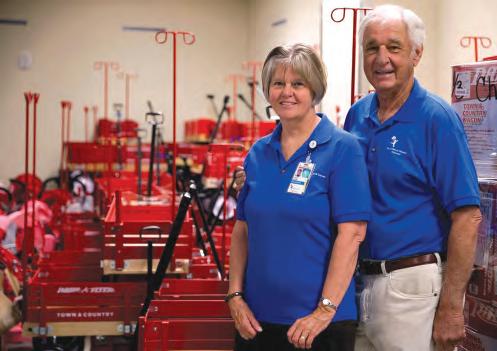
Tanner Seebaum and Zachary Tschetter Chair in Neuro-Oncology 175
Tanverdi, Melisa S. 154
Taplin Endowed Chair for Celiac Disease 175
Taussig, Heather N. 158
Taylor, E. Stewart 10, 18, 106, 164, 166, 184
Tenckhoff, Henry A. 108
Terwelp, Daniel R. 154
The Children’s Hospital/Children’s Hospital Colorado (CHCO) 8–9, 12–13, 16, 19–20, 22–28, 30–36, 39, 41, 44–51, 54–58, 60–61, 63–64, 66–68, 70, 72, 74–79, 81–86, 89–93, 95–110, 112–120, 122–124, 126, 128–132, 134–136, 138–139, 142–145, 148,150–151, 153, 157–159, 162, 174, 176, 178–179, 181, 183, 187, 191–192, 195–212, 216
Thomas, Janet A. 98
Thompson, Lee S. 151, 173, 201
Thompson, Richard E. 153
Thureen, Patti J. 107
Ting, Rosalind Y. 141
Tingelstad, Jon B. 153
Todd, James K. 43–45, 49, 72, 91, 103–104, 125, 129, 139, 173–174, 198, 209, 210
Tooley, William 114, 180
“United Nations Inter-Agency Group for Child Mortality Estimation” 131 University Center for Excellence in Developmental Disabilities (UCEDD) 88
“University of Colorado Organization for Racial and Ethnic Support Steering Committee” 159
University of Colorado Health Sciences Center (UCHSC) 8, 20, 22–23, 31, 45, 54, 64–66, 82, 85, 89 103, 107, 117, 134, 138, 151, 153, 157, 182, 191, 195, 202, 212
University of Colorado Hospital 19, 28, 66, 78–79, 84, 91, 96, 105, 107, 116, 135, 145, 201, 212
University of Colorado School of Medicine 10, 14–18, 21, 25–26, 28, 30, 34, 54, 60, 64–65, 78, 82, 84–86, 90–91, 93–96, 98, 101, 103, 109, 111, 113, 115–118, 122–125, 127, 130, 132, 134, 137–138, 140–141, 143–144, 146, 149–150, 152, 155–156, 158–160, 177–185, 187, 189, 192, 194–202, 210, 212–213
University Pediatric Dialysis Unit 97, 192
Urban, Holly A. 154
VA Medical Center 135
Van Hove, Johan L.K. 98
van Leer-Buter, Coretta C. 72
Varnell, Heather G. 154
Vaughn, Wanda 100
Venci, Julie A. 27
Ventilator Care Program 114, 176
Verneris, Michael (Mike) R. 101, 174
Vest, Maurice D. 153
Villarreal, Sylvia F. 154
Welsome, Eileen 59
Wenger, David A. 99
Wernick, Paul R. 153
Werstein, Amethyst C. 154
Weston, William L. 173
Wheelock, Seymour E. 9, 102
White, Wallace (Wally) C. 23, 54–55, 173
Whitman, Cheryl J. 153
Wilkening, Greta N. 83
Wilkening, Randall (Randy) B. 21, 31, 32, 107, 138, 153, 175, 198
Williams, Albert S. 211
Williams, Joshua T.B. 154
Wilson, Karen M. 112–113
Wise, Paul H. 24
Wolfe, Robert R. 42, 78, 141, 210
Wong, Shale L. 32, 46, 127, 150, 154
Wood, Colleen L. 154
Woodruff, Alan G. 154
World Health Assembly 35, World Health Oganization (WHO) 104, 124, 130, 132, 178
Wright, Gregory B. 153
Wuori, Donald F. 153
Wymore, Erica M. 128
Wyoming Medical Center 206
Yager, Alison R. 154
Yonker, Marcy 175
Young, Helen 209, 210
Zachar, Pamela A. 132, 154
Zavadil, Mary R. 154
Zeitler, Philip S. 32, 75, 91–92, 146
The iconic Radio Flyer® wagons of Children’s Hospital Colorado, a kid–friendly alternative to wheelchairs
216 DEPARTMENT OF PEDIATRICS INDEX
Photography courtesy of CU Medicine, Children’s Hospital Colorado, and by Tia Brayman Design & production by EnZed Design, LLC; Writing & research by Carla Carwile, Inc.
INDEX
Copyright © 2022 University of Colorado School of Medicine. All rights reserved. medschool.cuanschutz.edu/pediatrics www.childrenscolorado.org











 Stephen Daniels, MD, PhD
Stephen Daniels, MD, PhD










 Jules Amer, MD, (left) and C. Henry Kempe, MD, (right) at the naming of the C. Henry Kempe Center for Investigative Pediatrics (later the Children’s Hospital Colorado Research Institute).
Jules Amer, MD, (left) and C. Henry Kempe, MD, (right) at the naming of the C. Henry Kempe Center for Investigative Pediatrics (later the Children’s Hospital Colorado Research Institute).


 Lula Lubchenco, MD, and Battaglia coauthored a landmark paper (1967) on the fundamental relationship of birth weight and gestational age to neonatal morbidity and mortality.
Lula Lubchenco, MD, and Battaglia coauthored a landmark paper (1967) on the fundamental relationship of birth weight and gestational age to neonatal morbidity and mortality.















 John Lichty, MD
John Lichty, MD


 John Githens, MD Interim Chair, 1955–1956, 1973–1974
Gerald Merenstein, MD, FAAP Interim Chair, 1988–1990
Randall Wilkening, MD Interim Chair, 2005–2006
John Githens, MD Interim Chair, 1955–1956, 1973–1974
Gerald Merenstein, MD, FAAP Interim Chair, 1988–1990
Randall Wilkening, MD Interim Chair, 2005–2006

















 Dr. Ida Nakashima
Dr. Ida Nakashima


 The Lulagram
The Lulagram


























 Dr. Ronald Sokol
Dr. James Strain
Dr. Mary Anne Guggenheim
Dr. Ronald Sokol
Dr. James Strain
Dr. Mary Anne Guggenheim















 Architect’s rendering of the new Fitzsimons Medical Campus
Dr. Harley Rotbart
Architect’s rendering of the new Fitzsimons Medical Campus
Dr. Harley Rotbart








 Dr. Stephen Daniels
The Atrium at Children’s Hospital Colorado
Dr. Stephen Daniels
The Atrium at Children’s Hospital Colorado





 Dr. Kevin Messacar Dr. Sam Dominguez
Dr. Kevin Messacar Dr. Sam Dominguez










 Children’s Hospital Colorado, Aurora campus atrium
Colorado Springs campus under constrution
Children’s Hospital Colorado, Aurora campus atrium
Colorado Springs campus under constrution







 Denver Health circa 1860, founded as City Hospital
Denver Health circa 1860, founded as City Hospital



 Arnold Silverman, MD Director of Pediatrics, Denver General Hospital Professor Emeritus
John Ogle, MD Director of Pediatrics, Denver Health Professor Emeritus
Arnold Silverman, MD Director of Pediatrics, Denver General Hospital Professor Emeritus
John Ogle, MD Director of Pediatrics, Denver Health Professor Emeritus
















 Circa 1930 A southwest view of Colorado General Hospital and the School of Medicine.
Circa 1960 The Research Bridge crossing 9th Avenue housed offices and research labs used by the the University of Colorado’s Health Sciences Center.
Circa 1950s The campus looking southwest to the Nurses’ Home, Denison Memorial Library and Colorado General Hospital
Circa 1940 The campus prior to the United States’ entering World War II and the start of Denver’s dynamic growth
Circa 1930 A southwest view of Colorado General Hospital and the School of Medicine.
Circa 1960 The Research Bridge crossing 9th Avenue housed offices and research labs used by the the University of Colorado’s Health Sciences Center.
Circa 1950s The campus looking southwest to the Nurses’ Home, Denison Memorial Library and Colorado General Hospital
Circa 1940 The campus prior to the United States’ entering World War II and the start of Denver’s dynamic growth




 1977 The Department of Pediatrics was located on the third floor of the Research Bridge.
Circa 1990 The Rockies rise above the University of Colorado Health Sciences Center.
1985 Dr. M. Roy Schwarz speaks at the dedication of the “Plume Portal” by artist Elaine Calzolari, ”commemorating the passage of the University of Colorado School of Medicine from its first century to its second.”
The sculpture was relocated in 2008 to the new campus.
1977 The Department of Pediatrics was located on the third floor of the Research Bridge.
Circa 1990 The Rockies rise above the University of Colorado Health Sciences Center.
1985 Dr. M. Roy Schwarz speaks at the dedication of the “Plume Portal” by artist Elaine Calzolari, ”commemorating the passage of the University of Colorado School of Medicine from its first century to its second.”
The sculpture was relocated in 2008 to the new campus.


 The center concourse connecting research, academic and clinical services.
Building 500, restored and renamed The Fitzsimons Building, is on the National Historic Register.
Anschutz Medical Campus hosts one of the nation’s leading health sciences programs.
The center concourse connecting research, academic and clinical services.
Building 500, restored and renamed The Fitzsimons Building, is on the National Historic Register.
Anschutz Medical Campus hosts one of the nation’s leading health sciences programs.



 Children’s Hospital Colorado’s South Campus (above) opened in 2014. By year-end 2018, construction of the new Children’s Hospital Colorado in Colorado Springs (right) was nearing completion.
The Barbara Davis Center for Childhood Diabetes has the largest outpatient clinic for patients with type 1 diabetes in the U.S.
Children’s Hospital Colorado’s South Campus (above) opened in 2014. By year-end 2018, construction of the new Children’s Hospital Colorado in Colorado Springs (right) was nearing completion.
The Barbara Davis Center for Childhood Diabetes has the largest outpatient clinic for patients with type 1 diabetes in the U.S.




 Researchers classify enteroviruses (EVs) into four groups--echoviruses, polioviruses, and Coxsackie A and B viruses--and 15 species. Of these, four species are human EVs (A–D) and three are rhinoviruses (A–C).
Researchers classify enteroviruses (EVs) into four groups--echoviruses, polioviruses, and Coxsackie A and B viruses--and 15 species. Of these, four species are human EVs (A–D) and three are rhinoviruses (A–C).






















 Henry Silver, MD, Program Founder
Henry Silver, MD, Program Founder
























 The Section of Pediatric Emergency Medicine works with the region’s Emergency Medical Service professionals and Children’s Hospital Colorado Outreach Education to support clinical caregivers with current, evidence-based pediatric care. In 2018, more than 5,000 health care professionals across every discipline benefited from this training.
The Section of Pediatric Emergency Medicine works with the region’s Emergency Medical Service professionals and Children’s Hospital Colorado Outreach Education to support clinical caregivers with current, evidence-based pediatric care. In 2018, more than 5,000 health care professionals across every discipline benefited from this training.



































































 Stephen Berman, MD, FAAP
Stephen Berman, MD, FAAP




















 In 2002, Kurt Stenmark, MD, and Maria Frid, PhD, were the first to identify that pulmonary artery endothelial cells can become smooth muscle cells, advancing understanding of pediatric pulmonary hypertension.
In 2002, Kurt Stenmark, MD, and Maria Frid, PhD, were the first to identify that pulmonary artery endothelial cells can become smooth muscle cells, advancing understanding of pediatric pulmonary hypertension.










 –William Osler, FRS, FRCP
–William Osler, FRS, FRCP
 Adam Rosenberg, MD Director, School of Medicine, Pediatric Residency Program
Adam Rosenberg, MD Director, School of Medicine, Pediatric Residency Program











 “The Two Henrys”—Dr. Henry Silver and Dr. C. Henry Kempe From its founding in 1968 through 2018, the University of Colorado School of Medicine Child Health Associate/PA program has graduated nearly 1200 advanced practice providers. Above, Dr. Silver meets with students of one of the first classes.
“The Two Henrys”—Dr. Henry Silver and Dr. C. Henry Kempe From its founding in 1968 through 2018, the University of Colorado School of Medicine Child Health Associate/PA program has graduated nearly 1200 advanced practice providers. Above, Dr. Silver meets with students of one of the first classes.





























 John “Jack” Githens, MD
John “Jack” Githens, MD


 Ronald Gotlin, MD
Ronald Gotlin, MD







 C. Henry Kempe, MD
C. Henry Kempe, MD









 Harley Rotbart, MD Professor Emeritus
Harley Rotbart, MD Professor Emeritus











 Drs. Arthur Robinson, Leo Flax, Max Ginsburg, and Jules Amer, Children’s Medical Center
Drs. Arthur Robinson, Leo Flax, Max Ginsburg, and Jules Amer, Children’s Medical Center

















